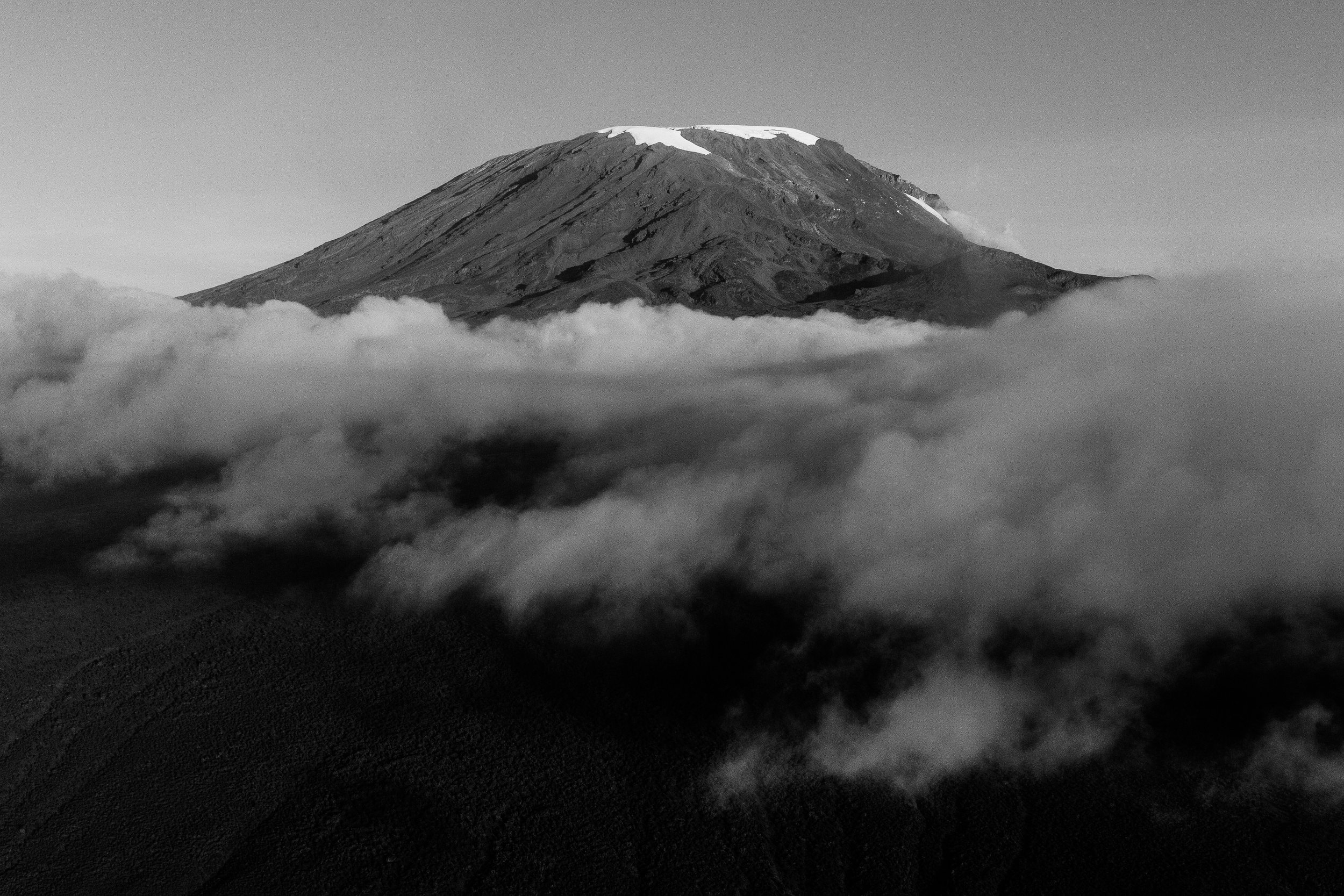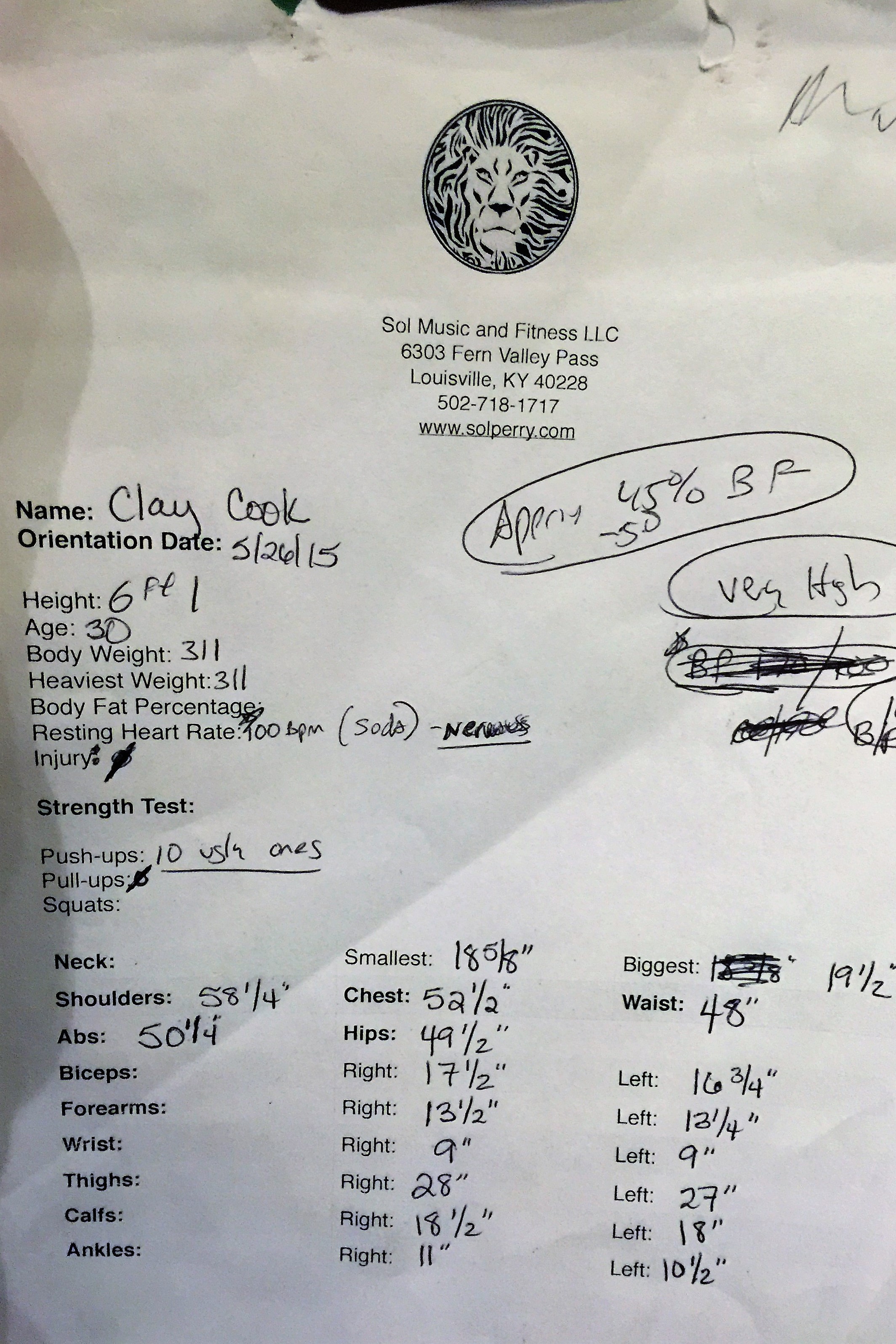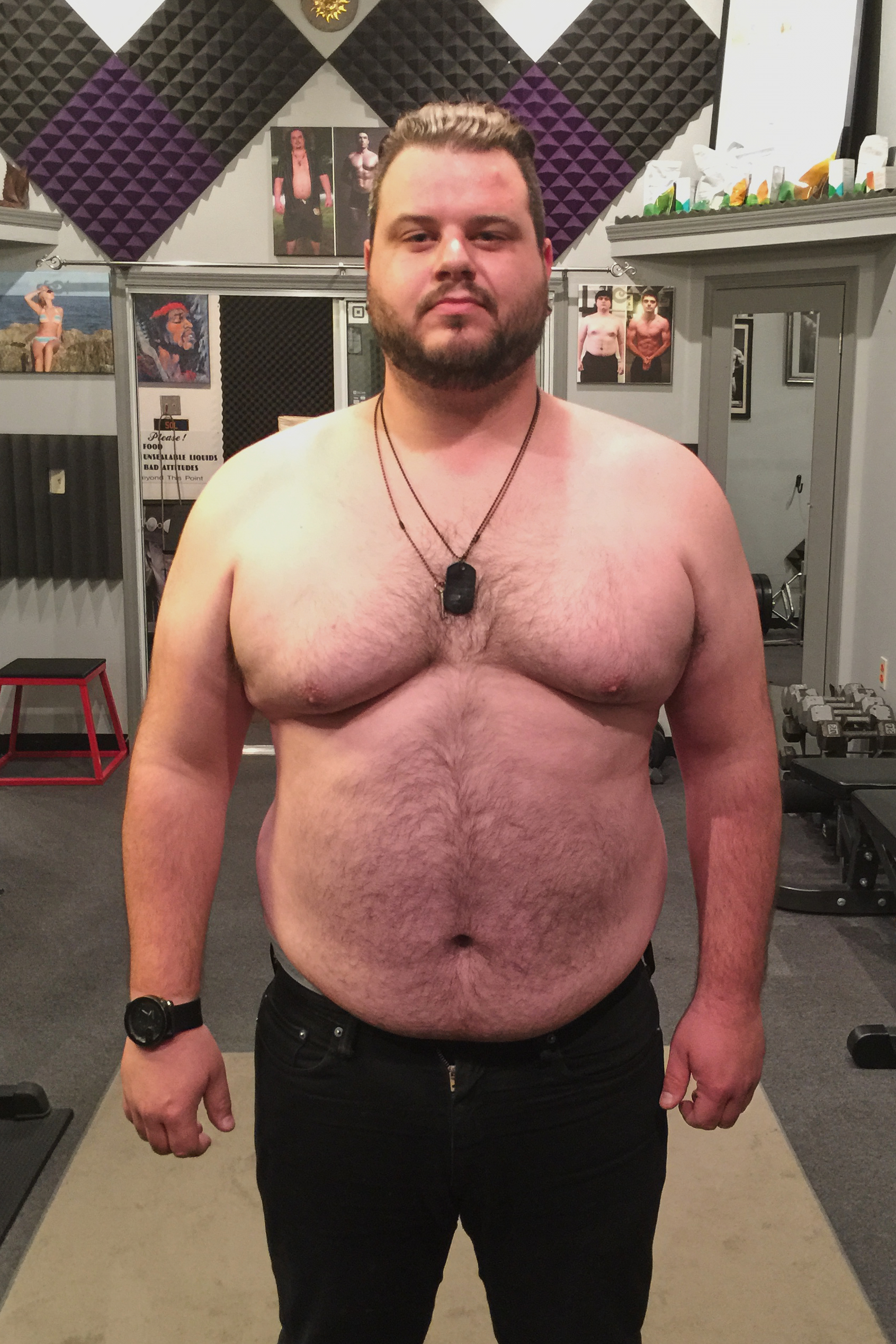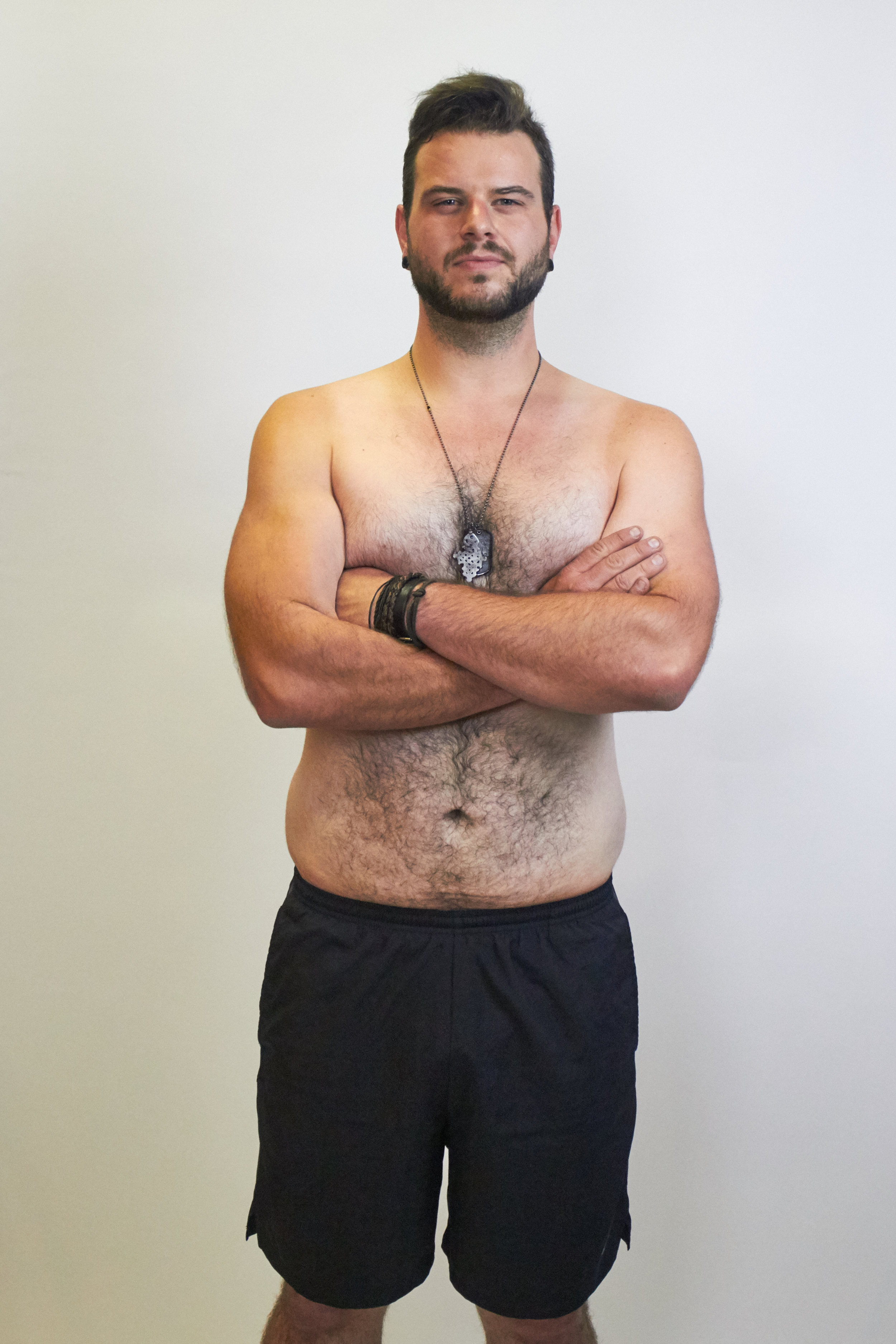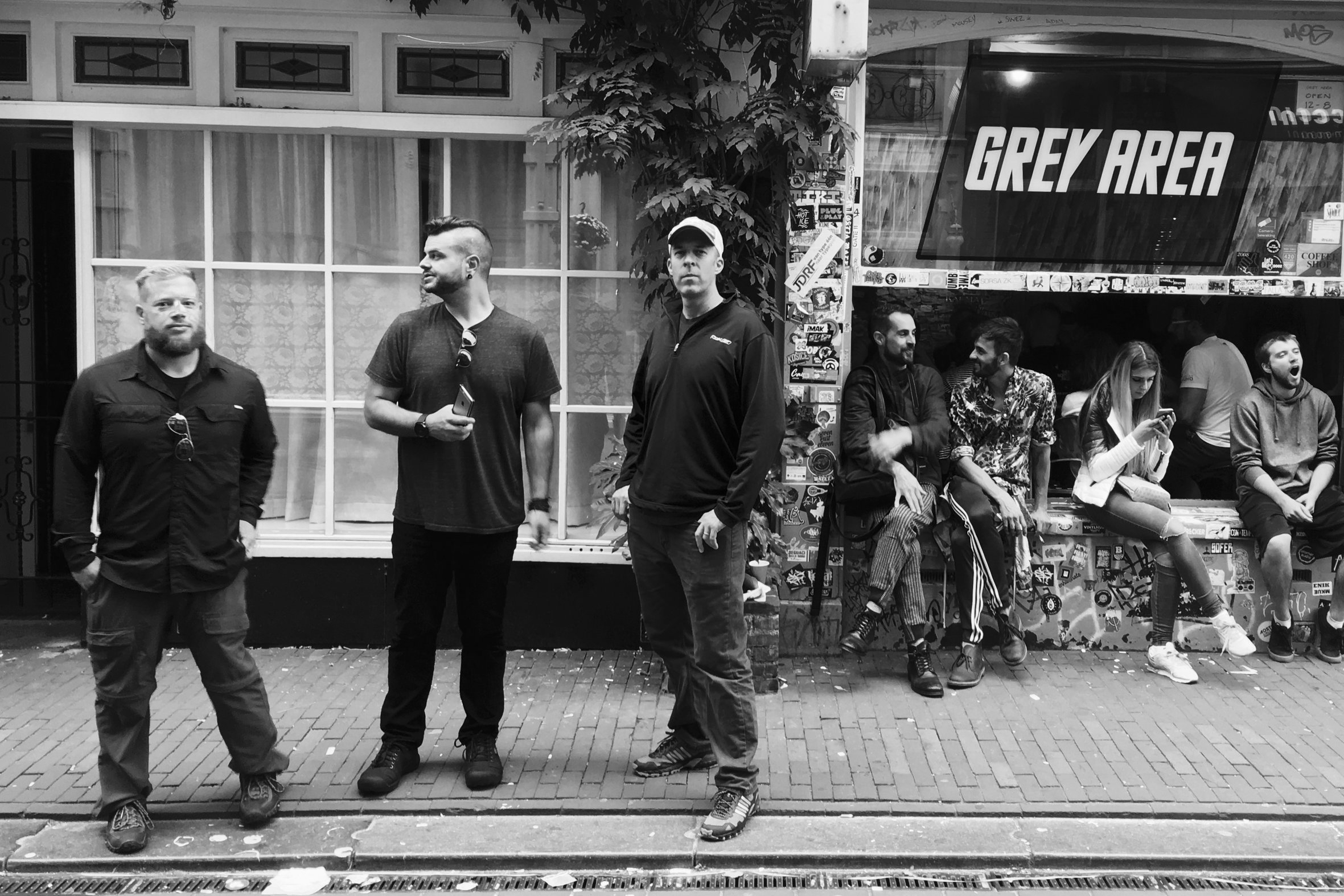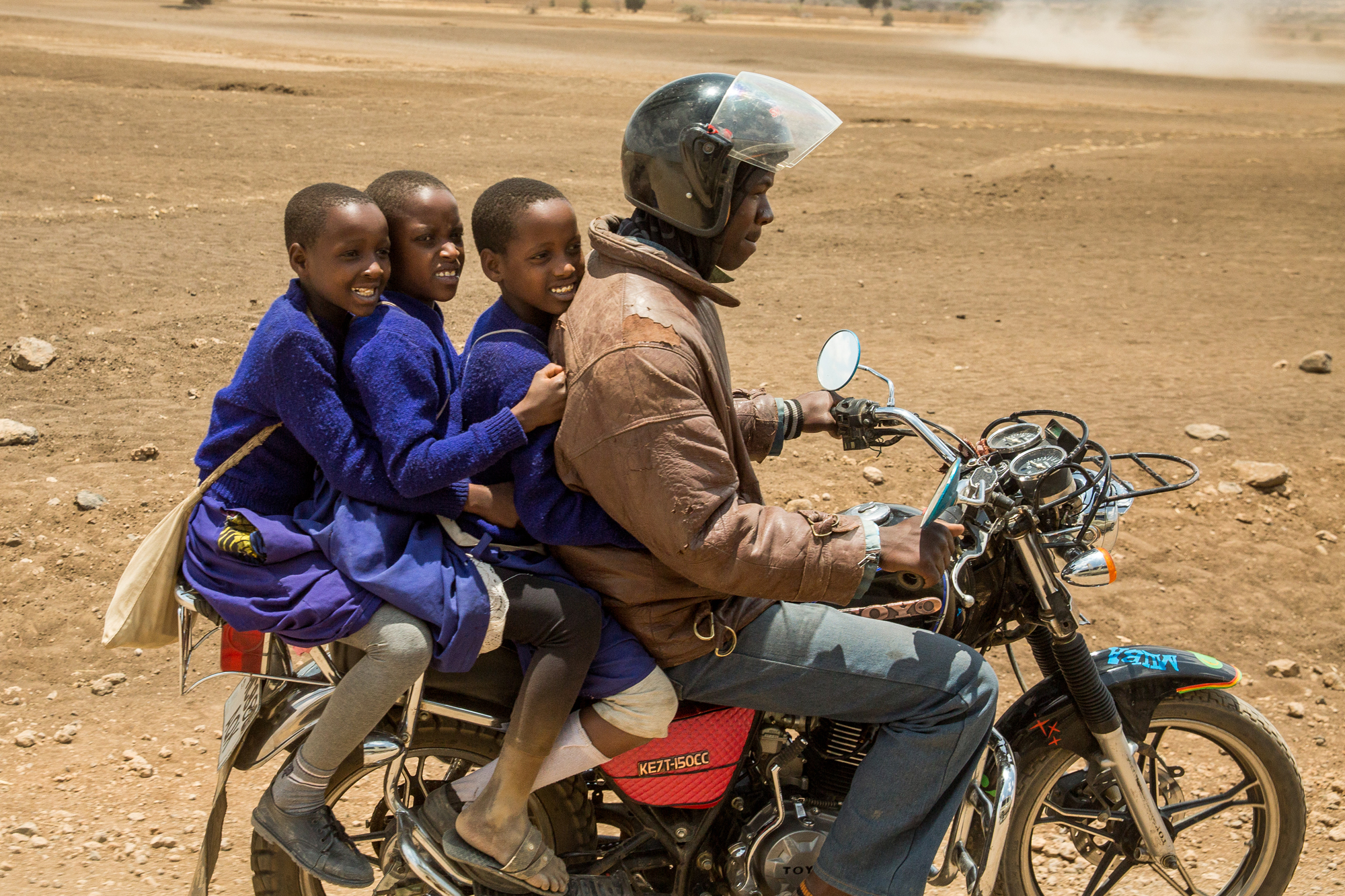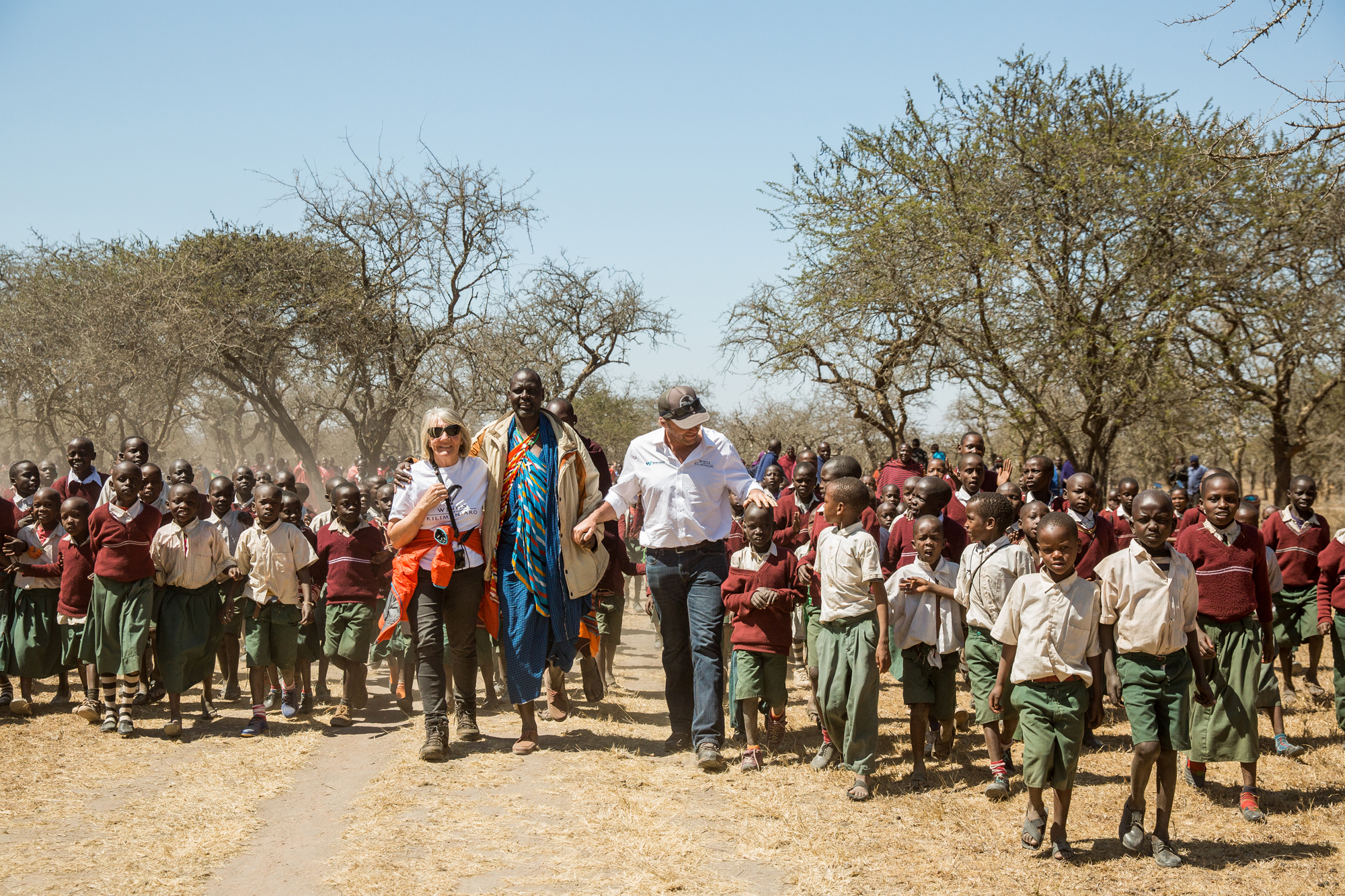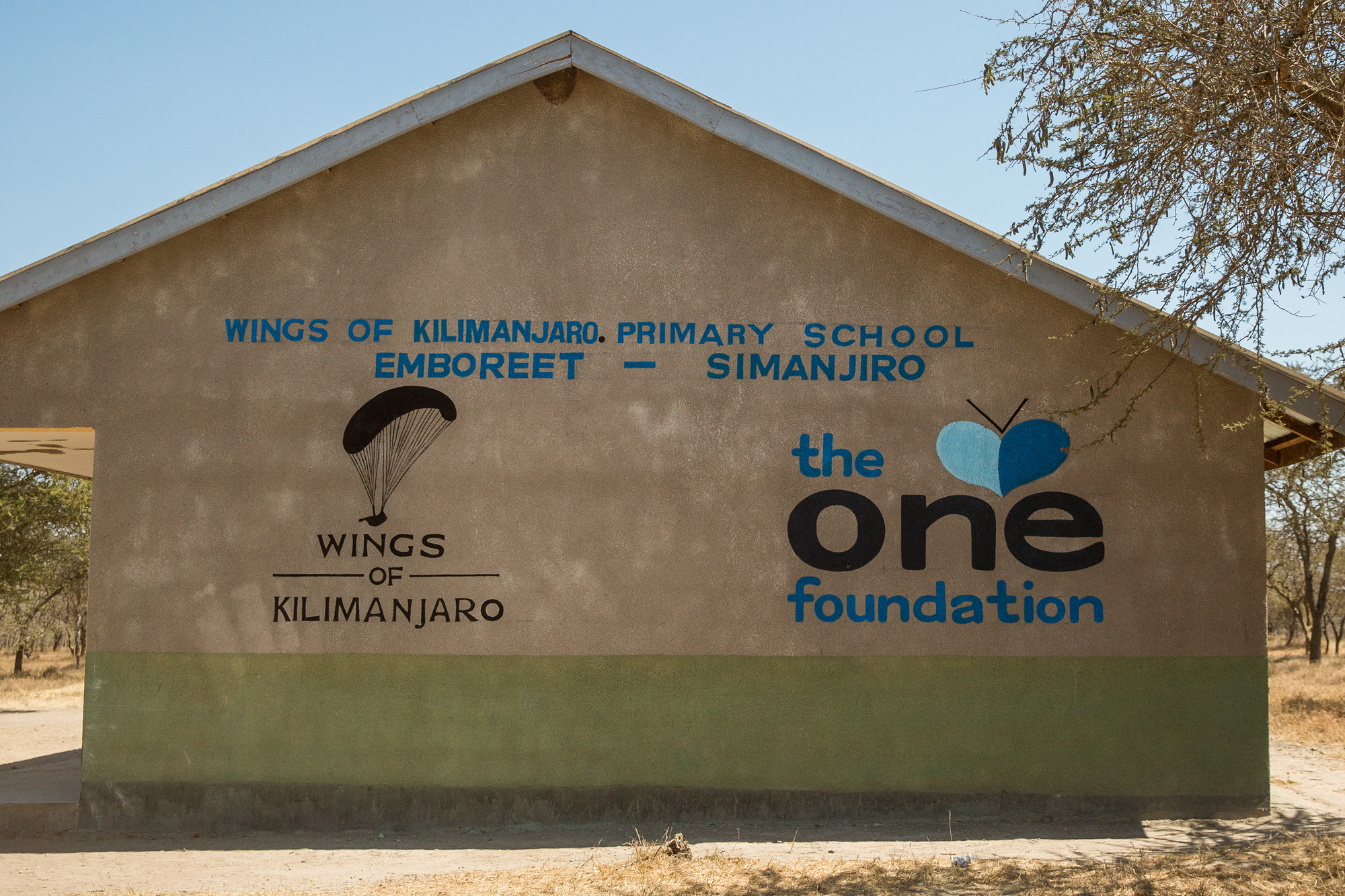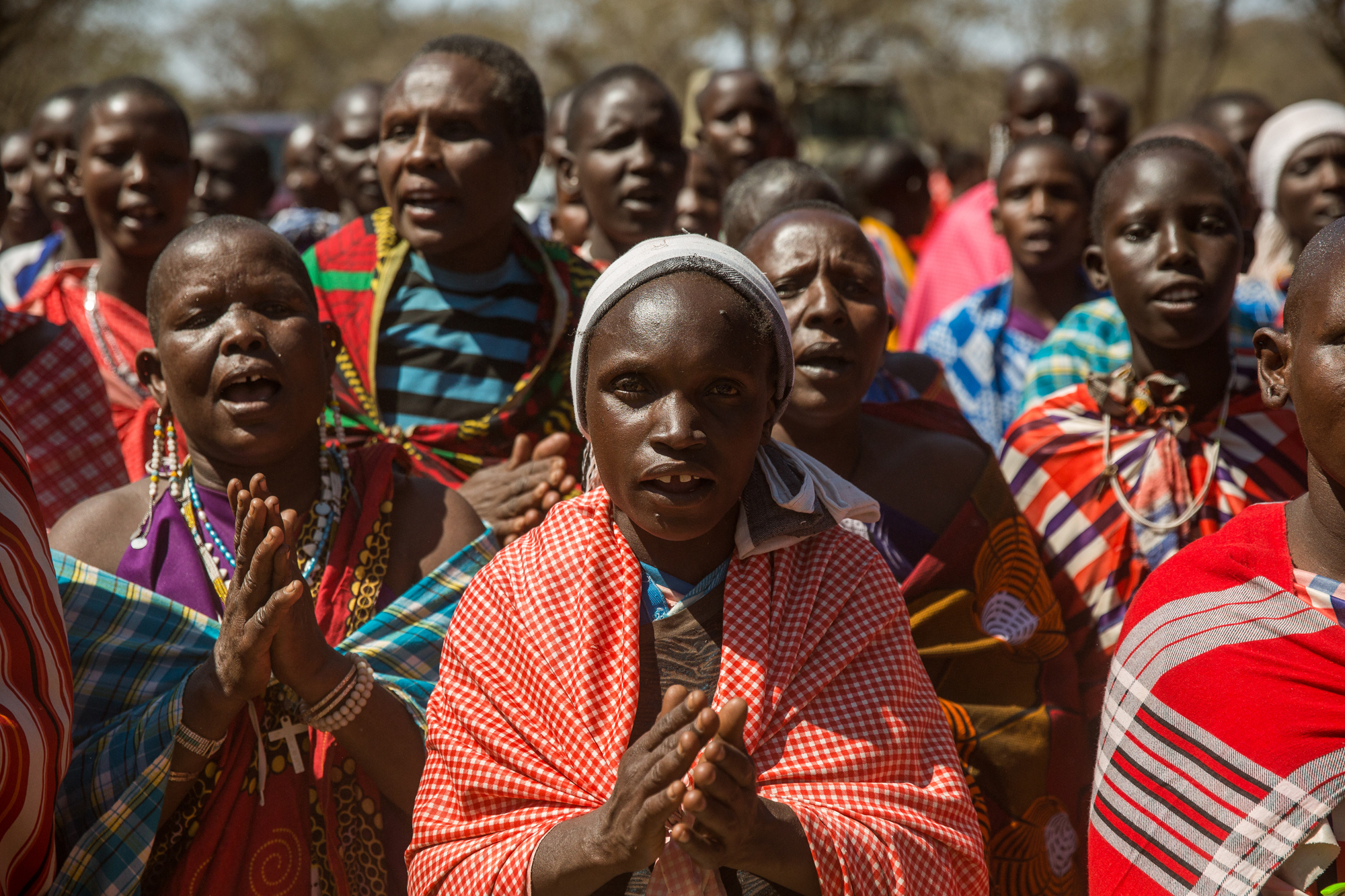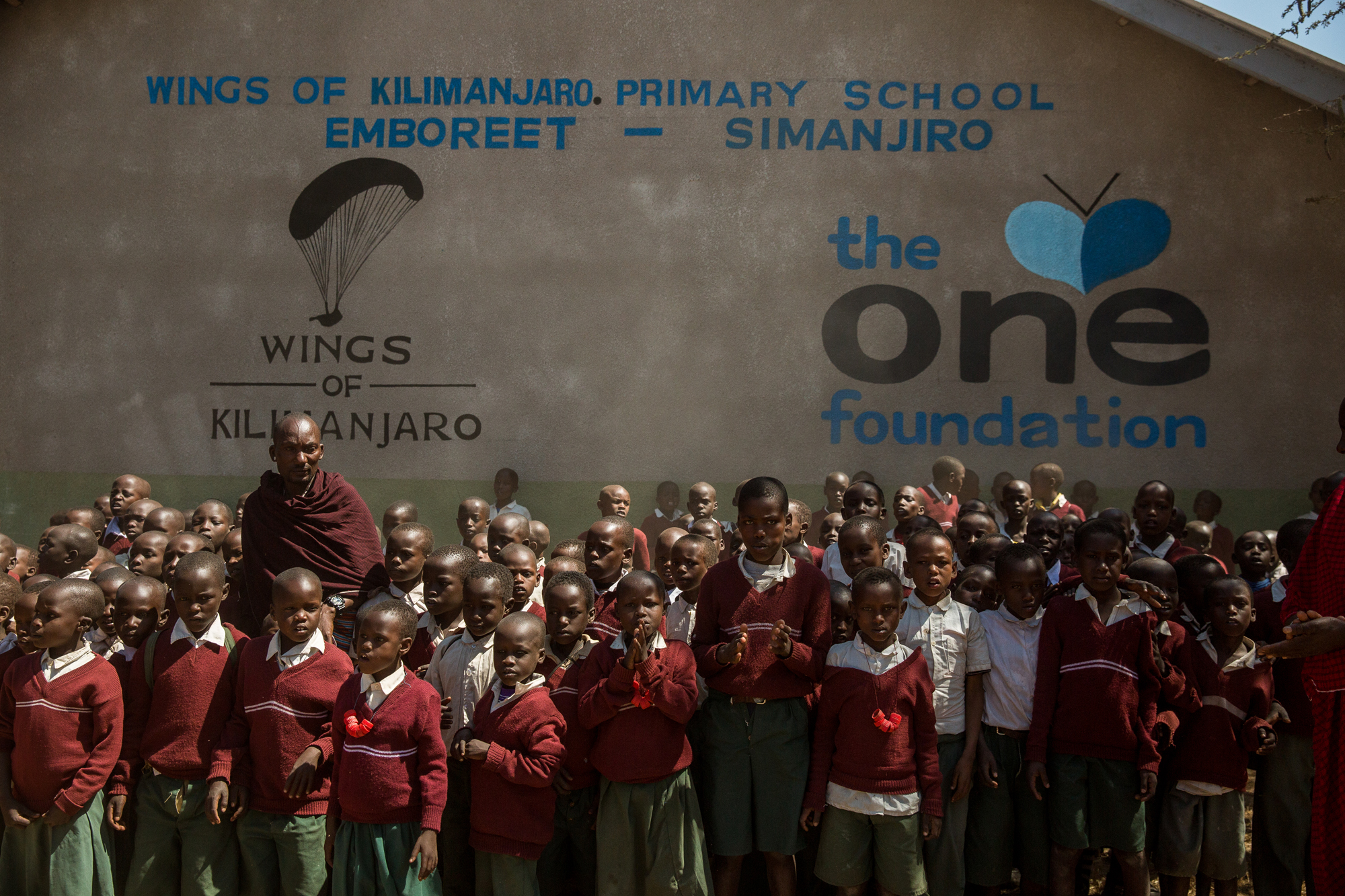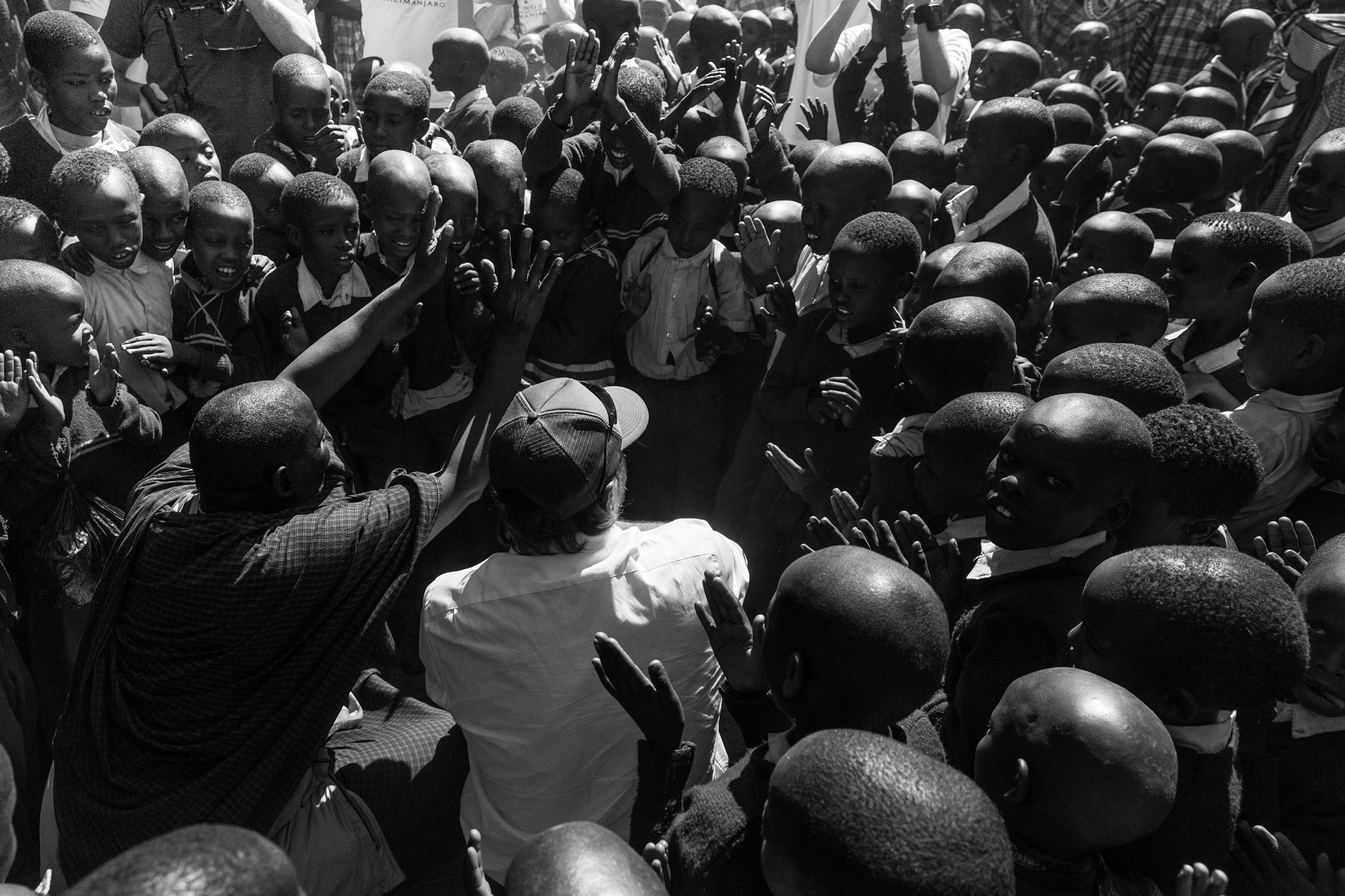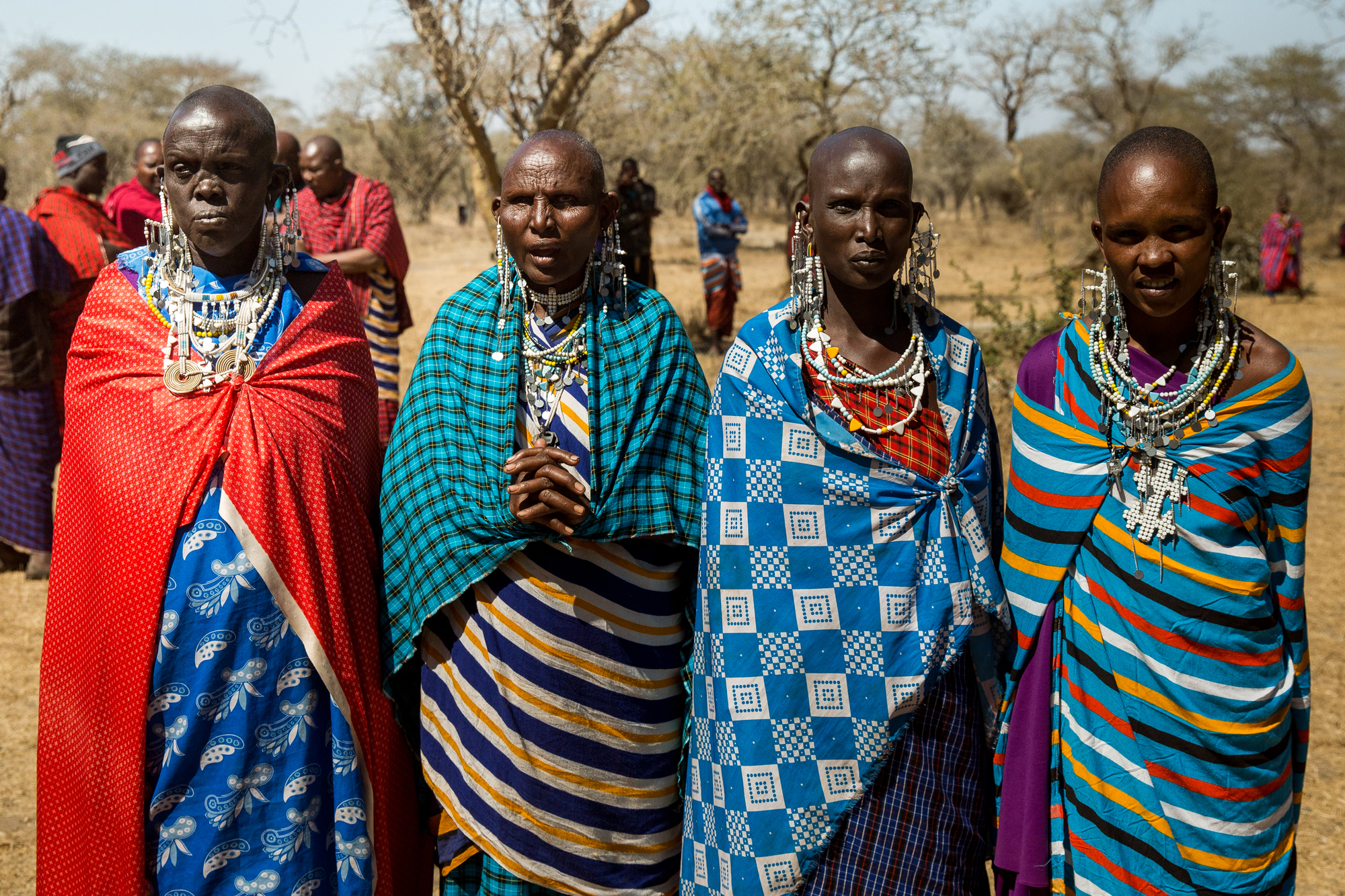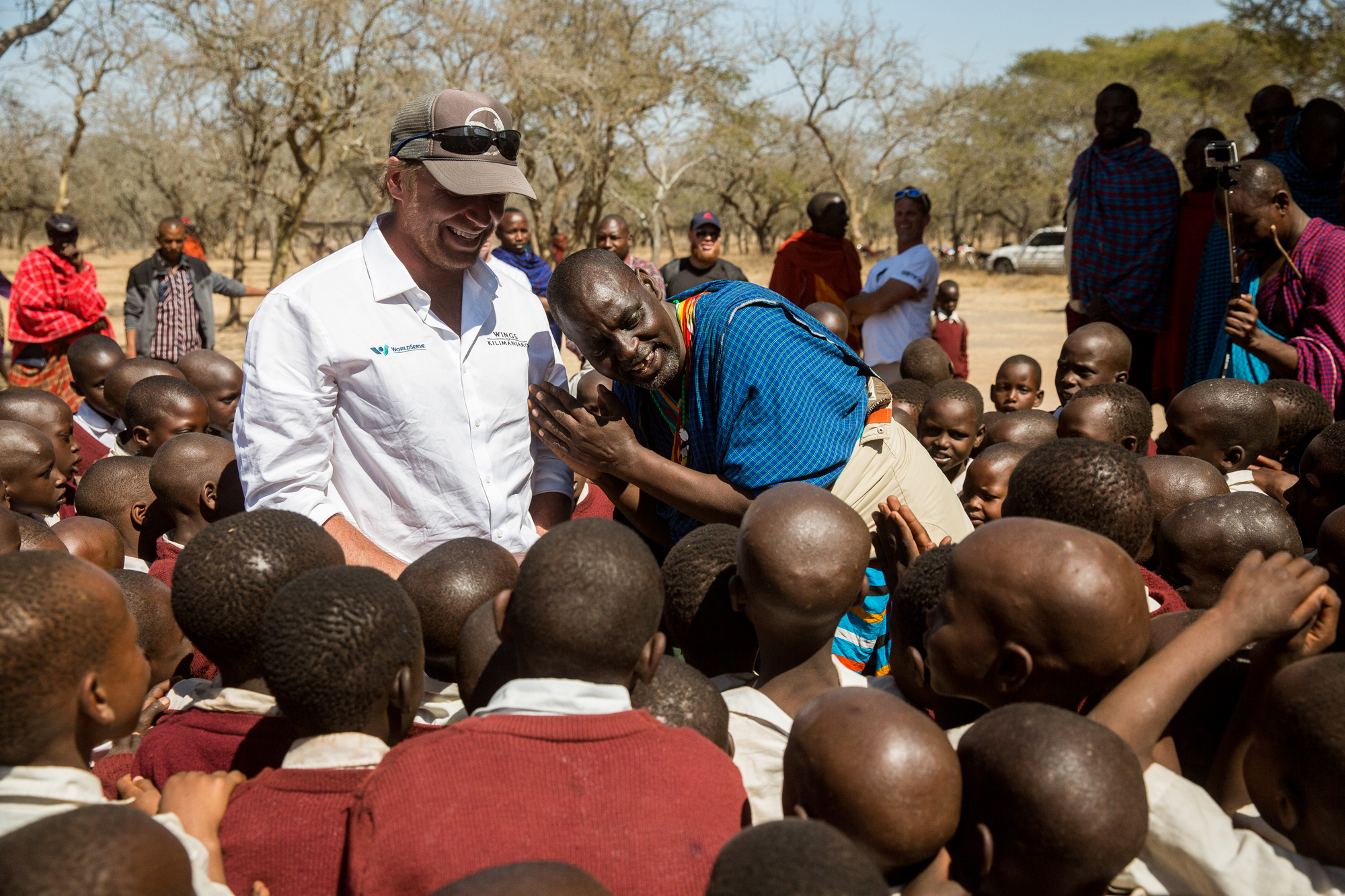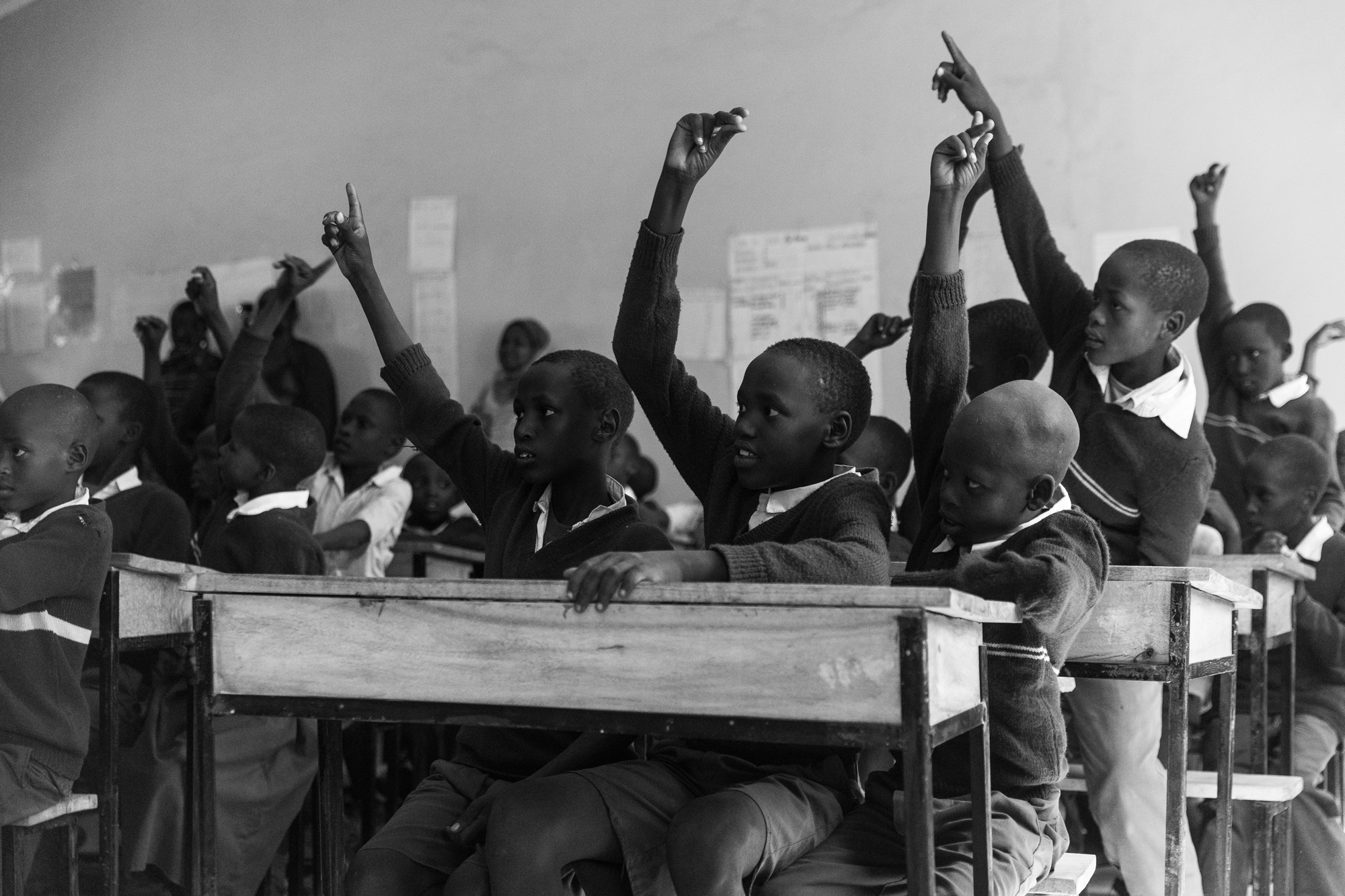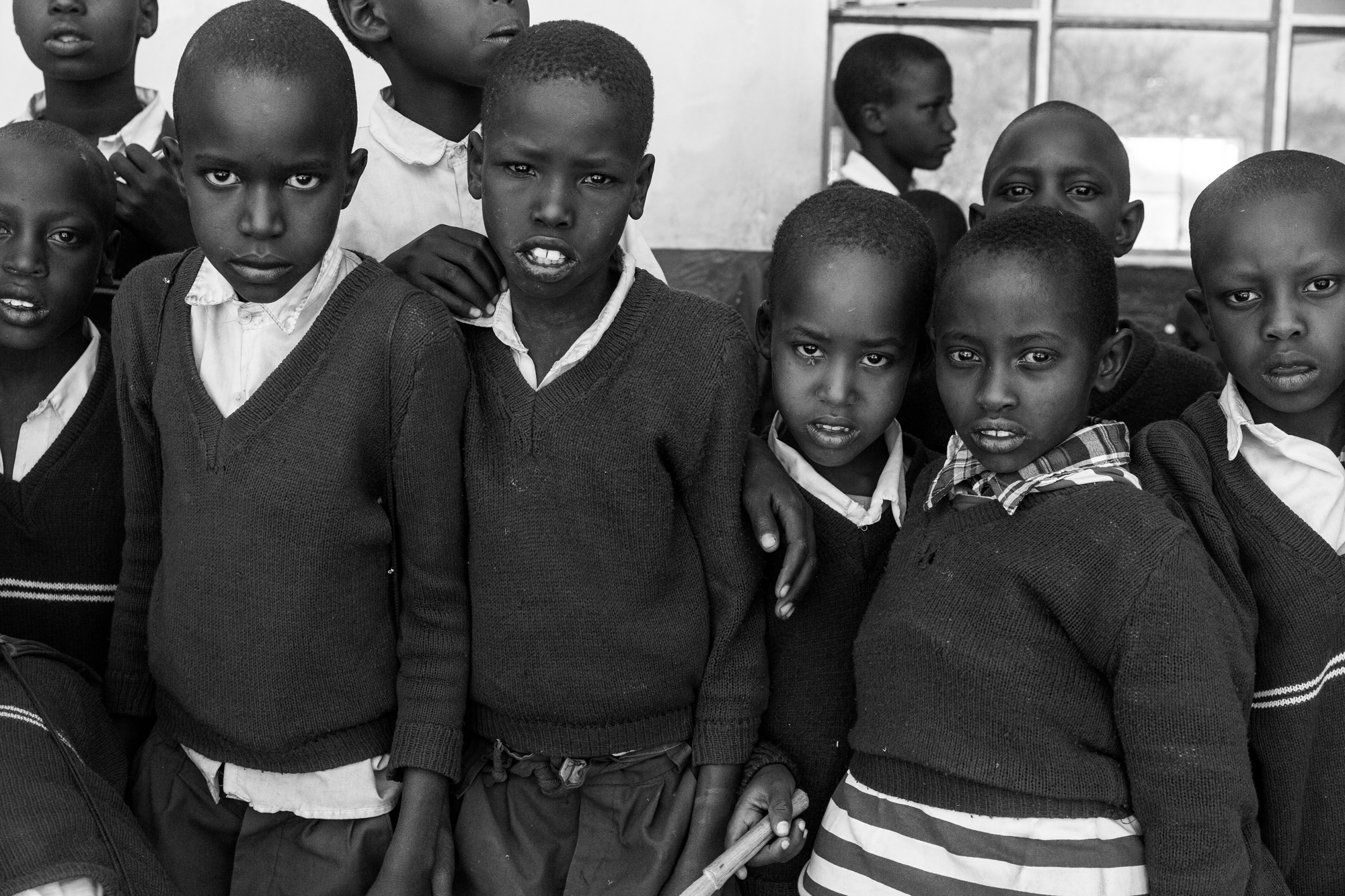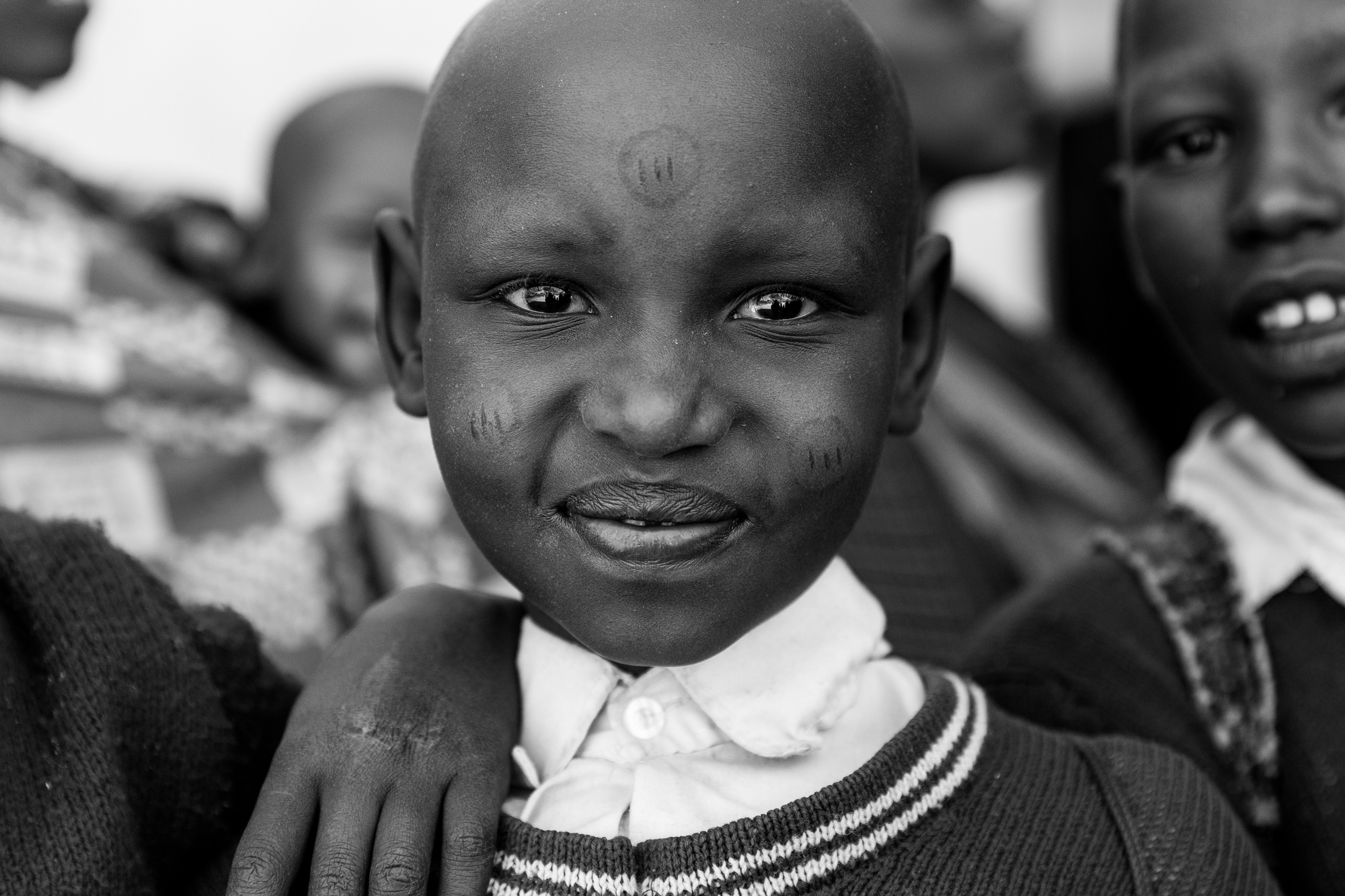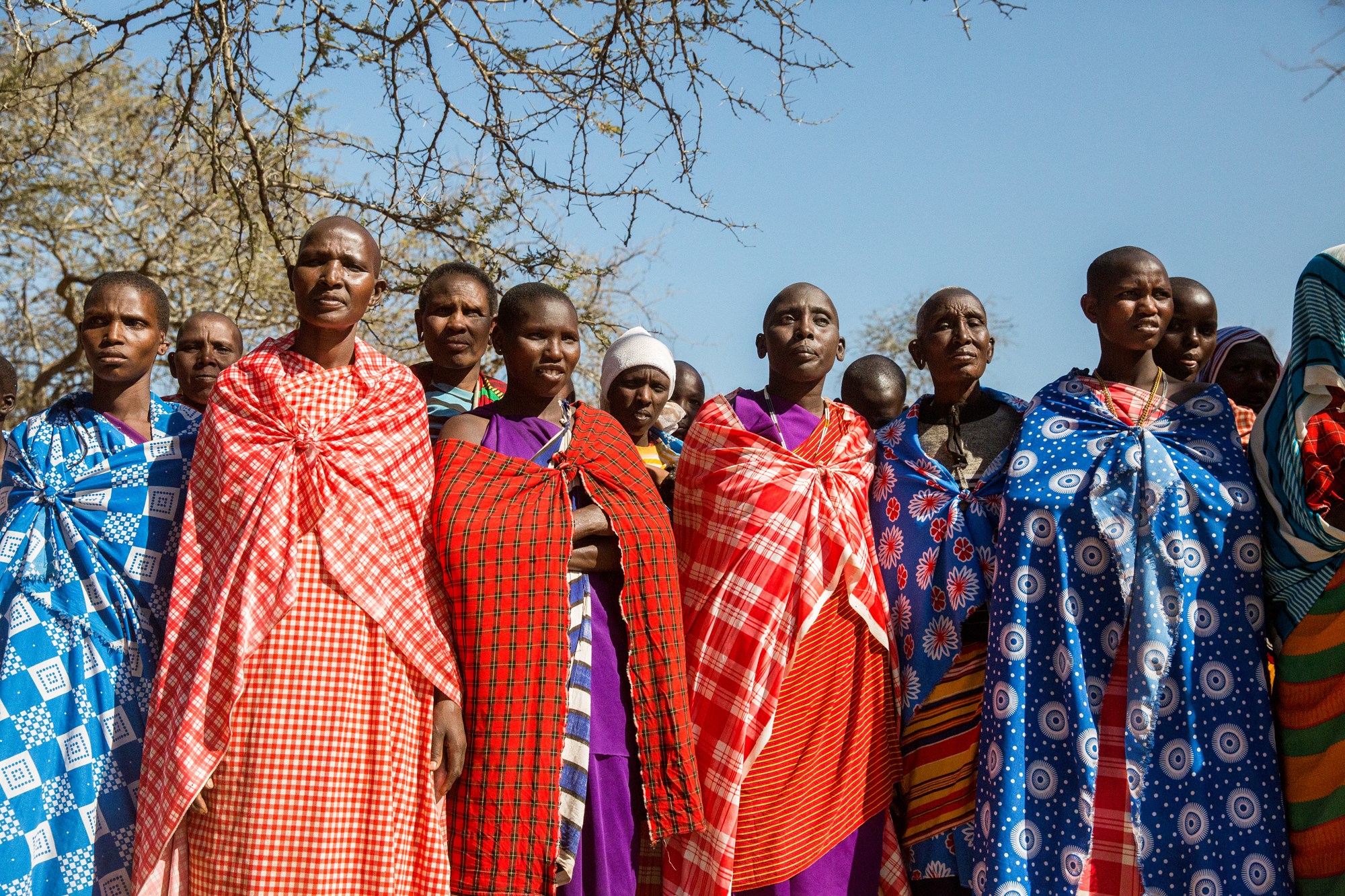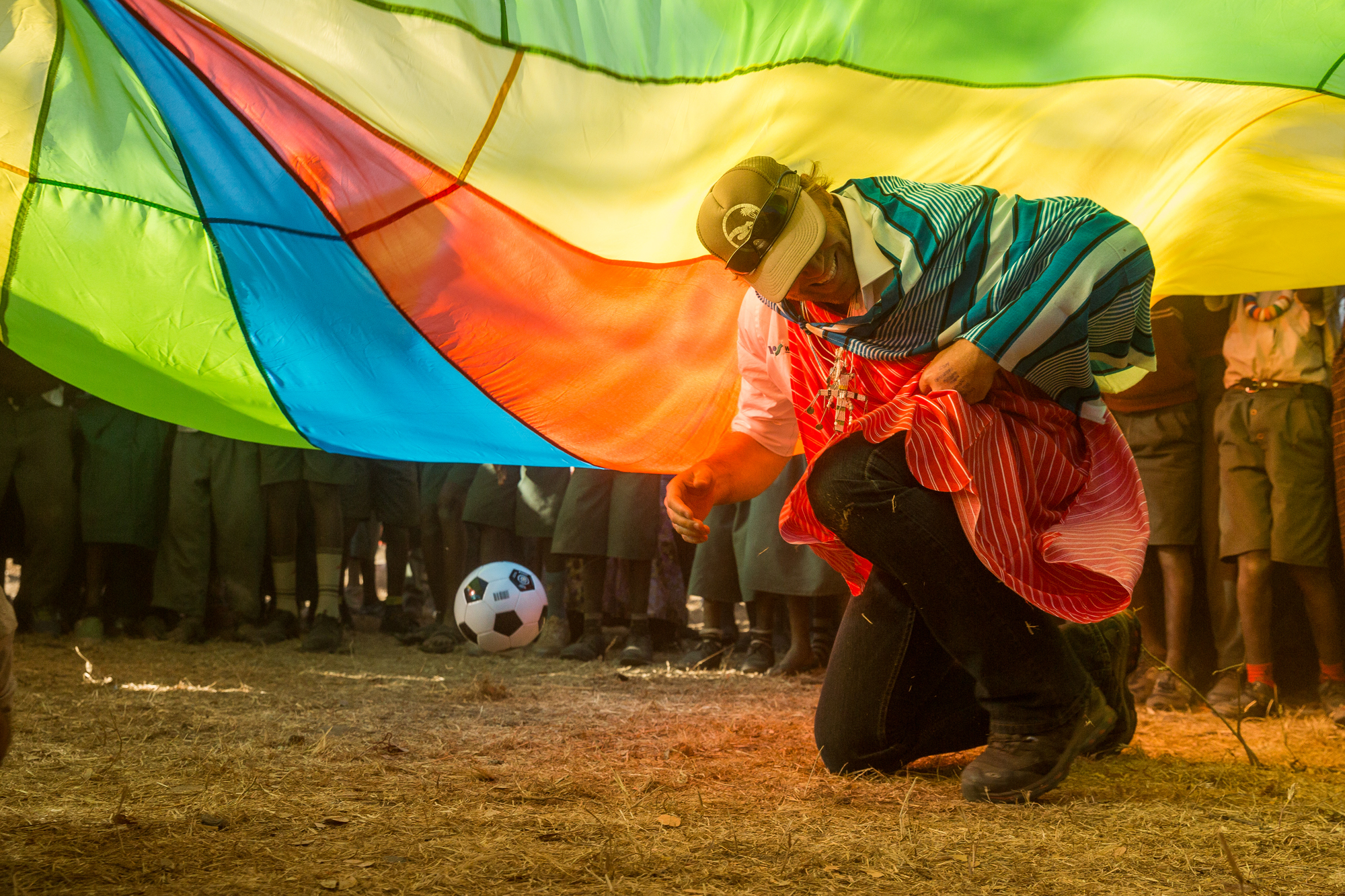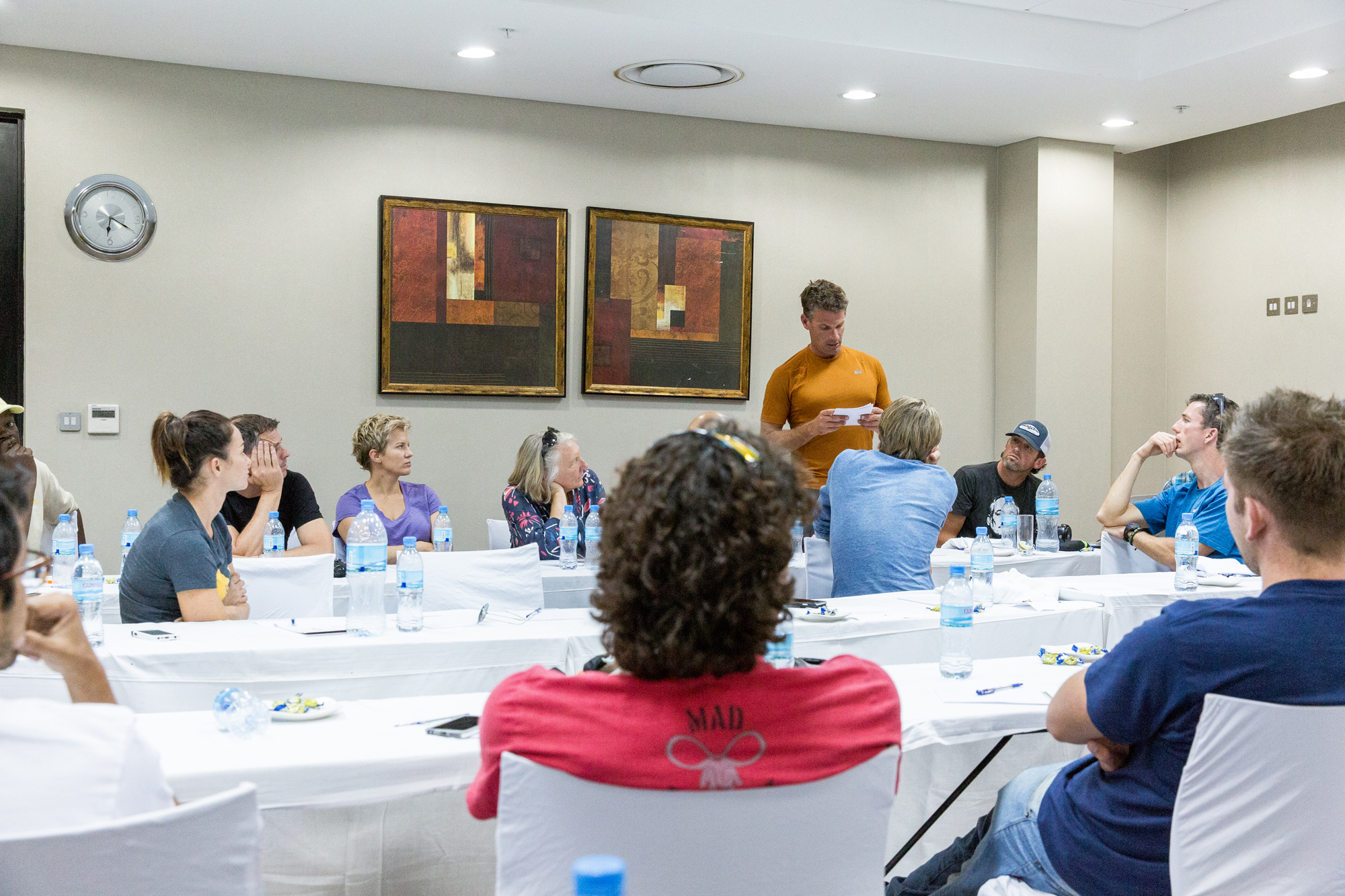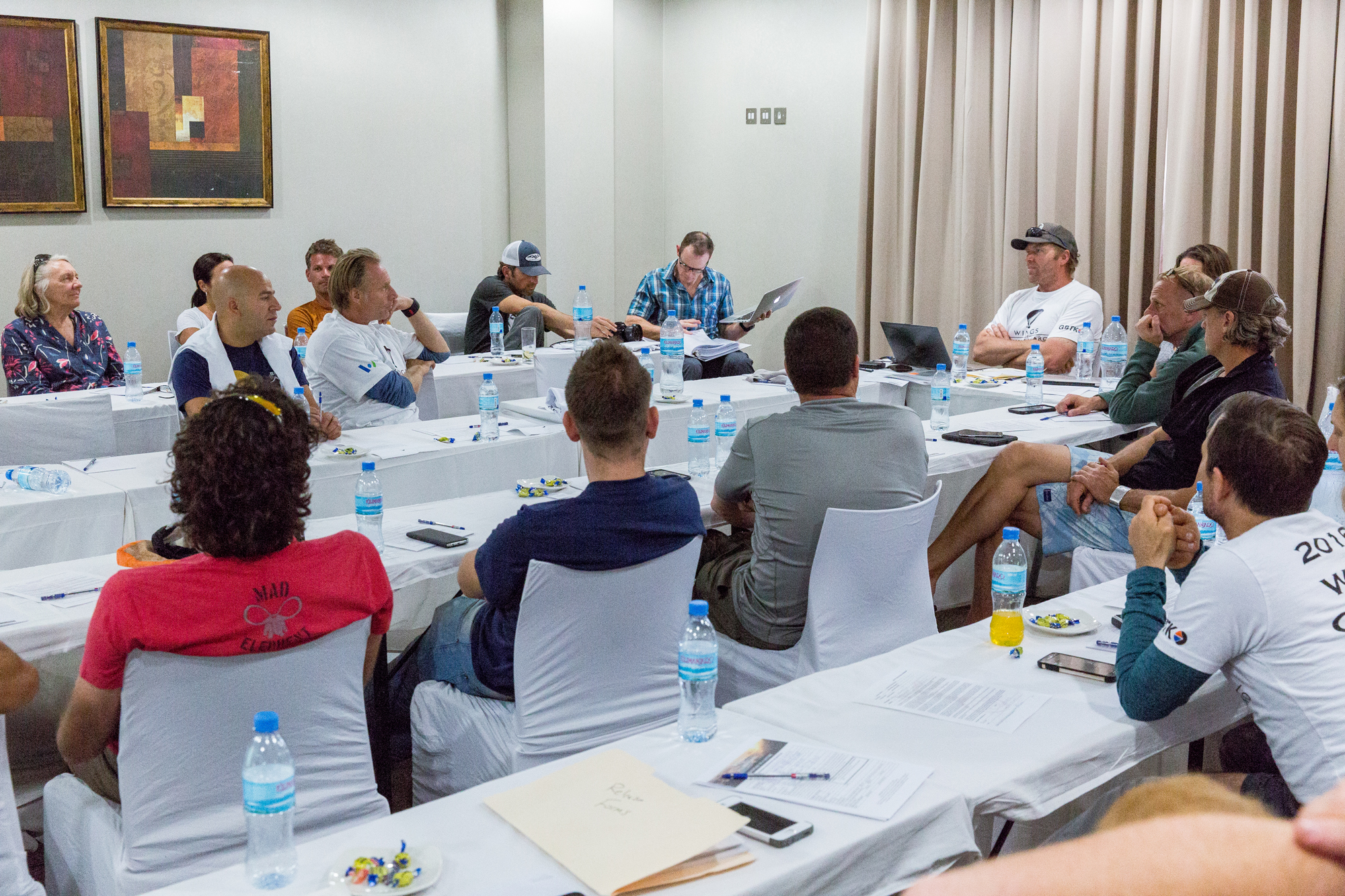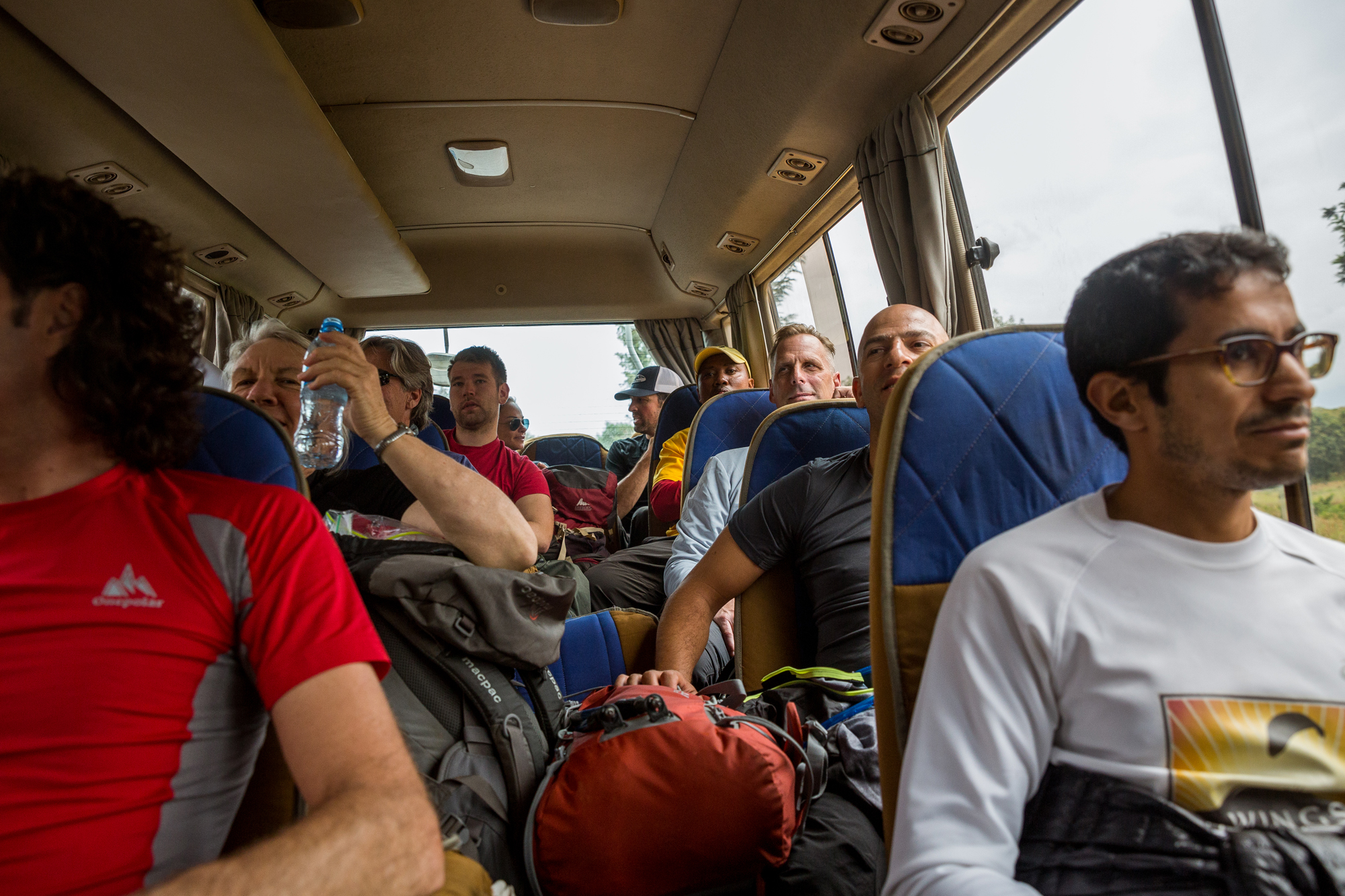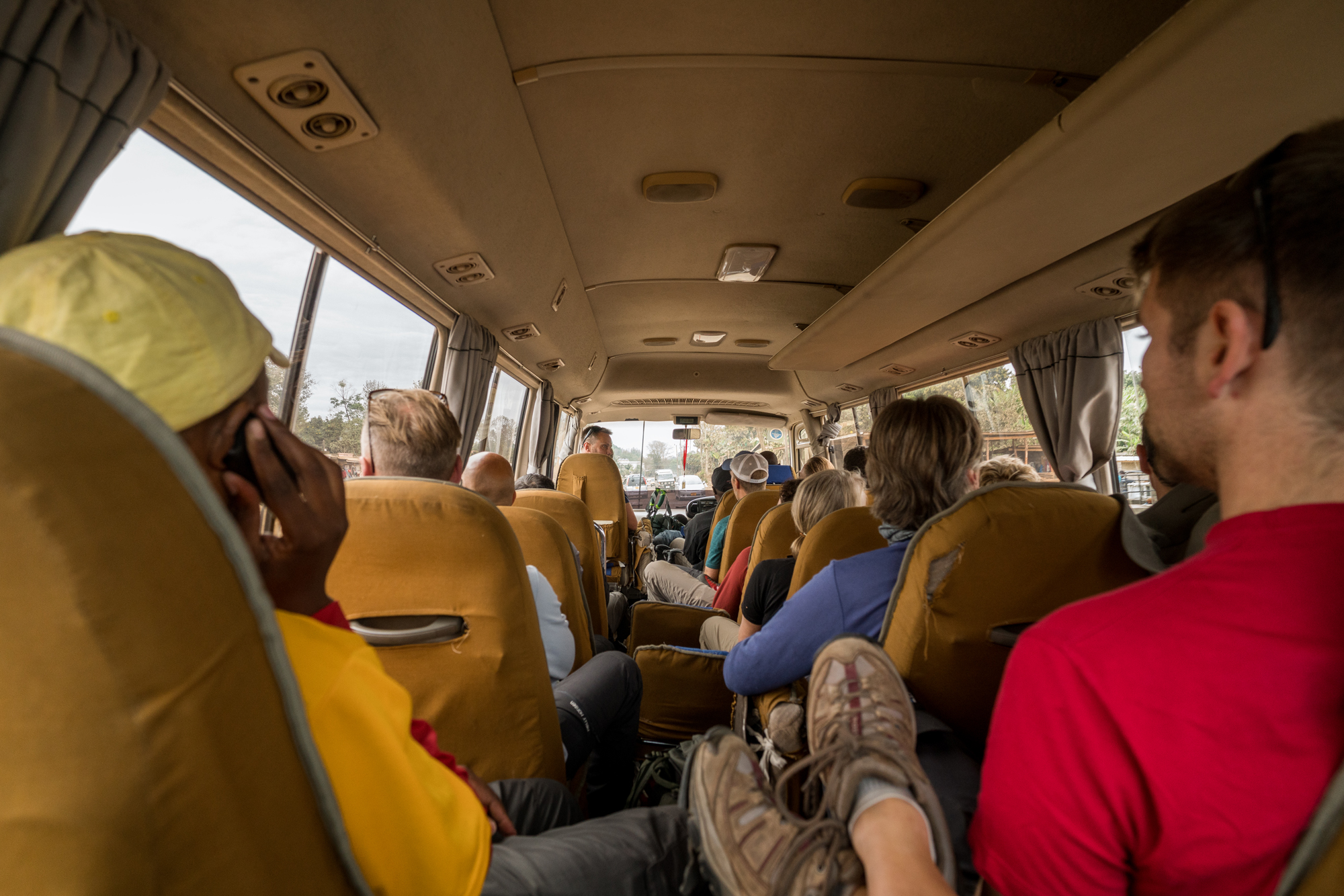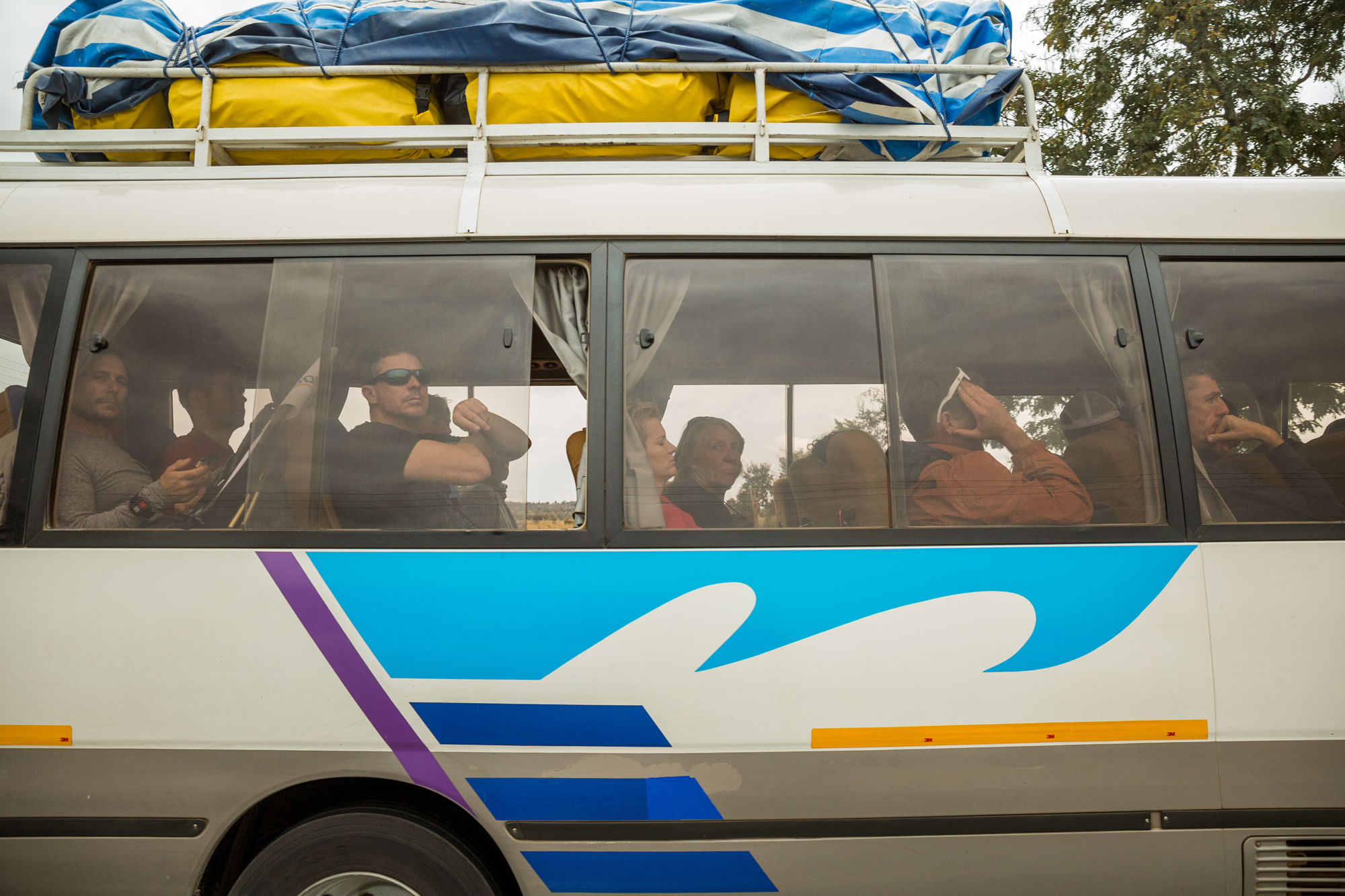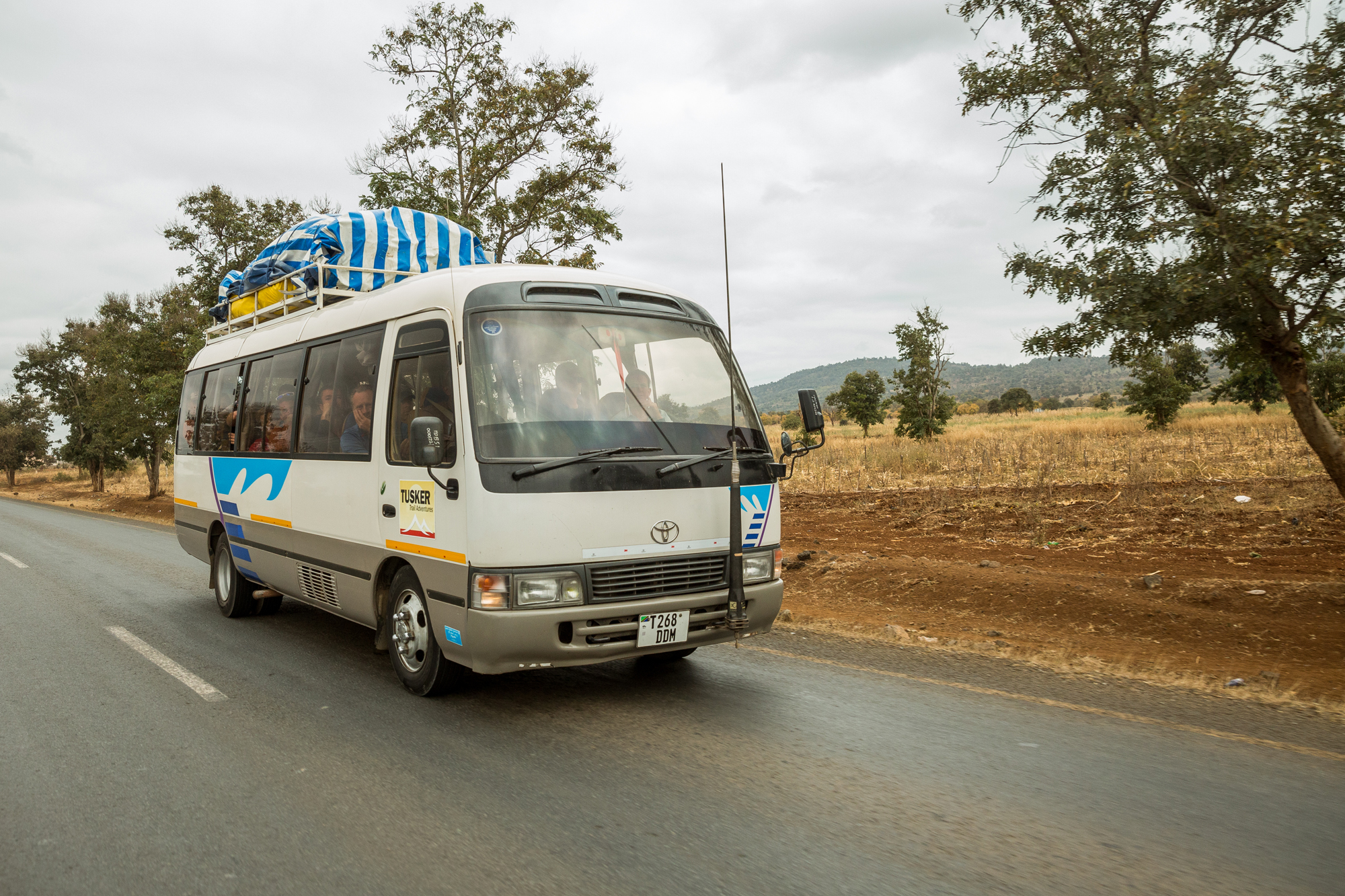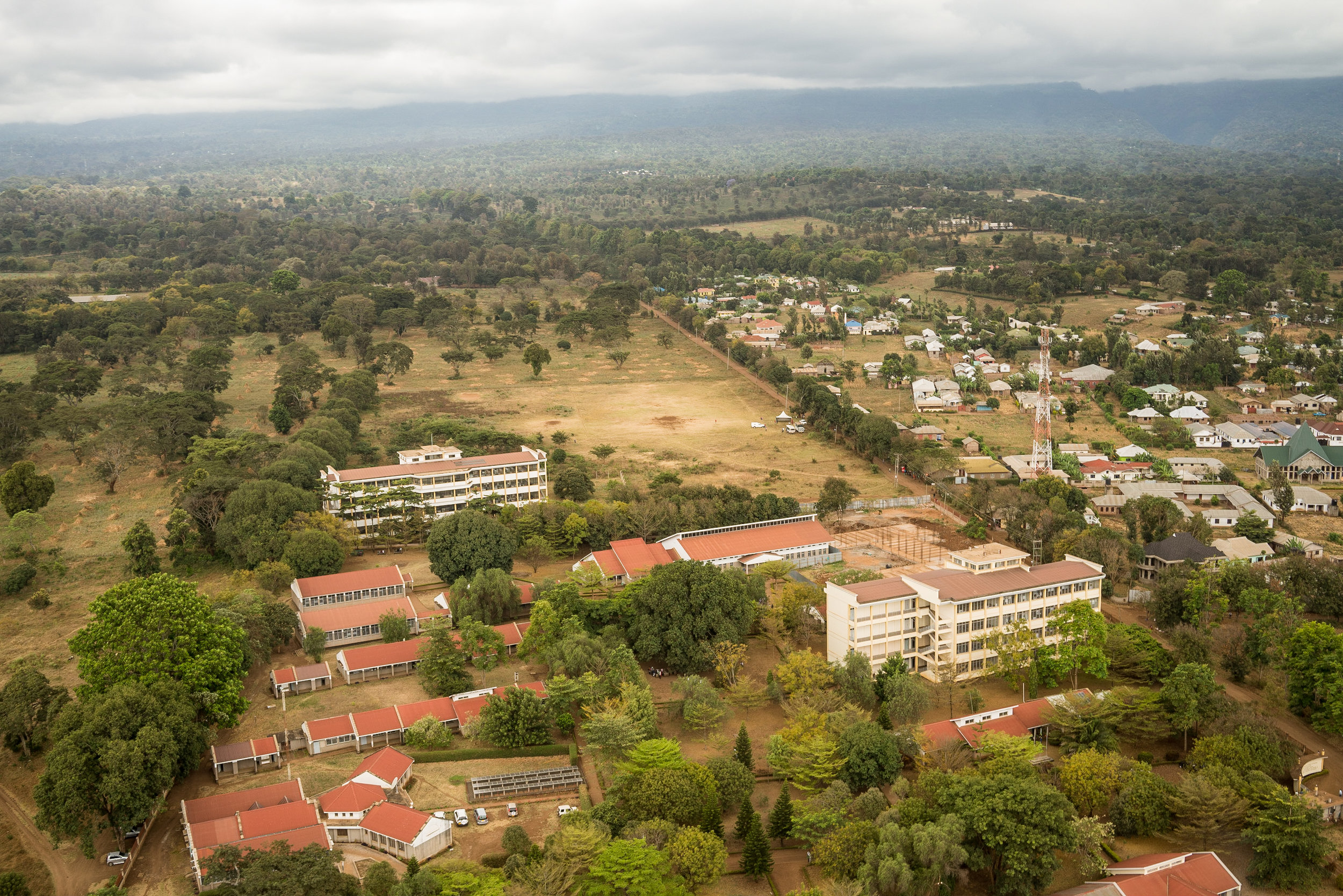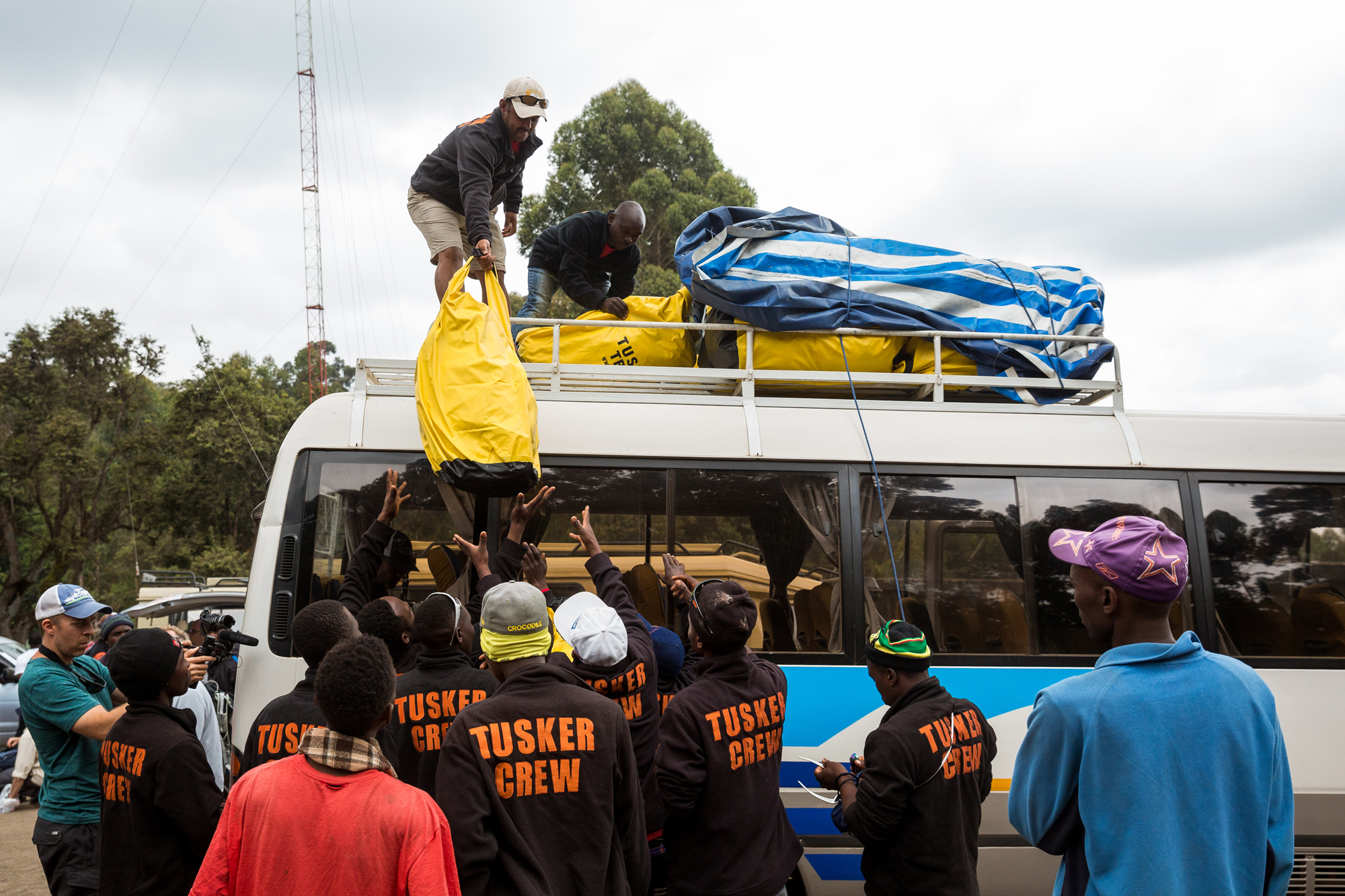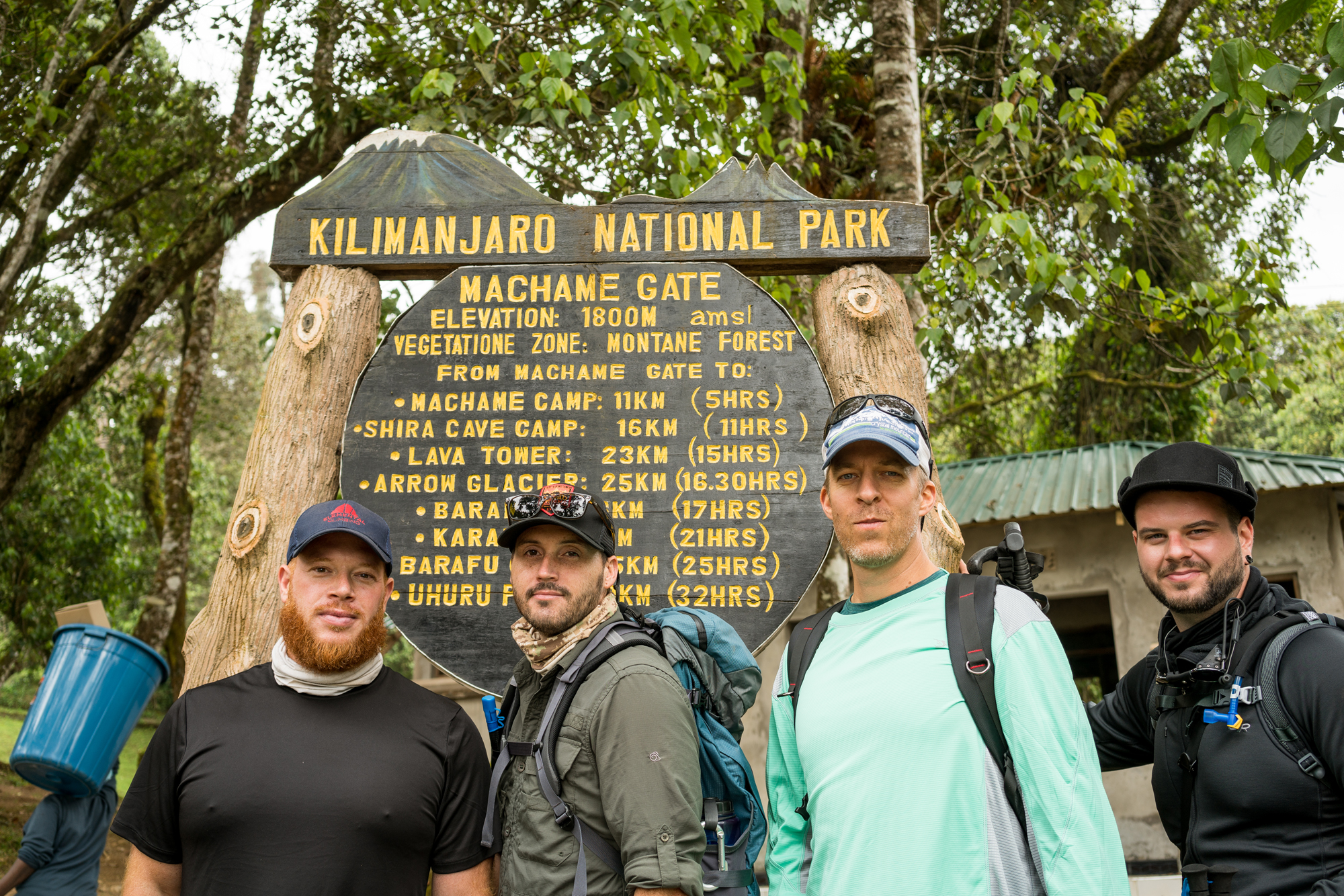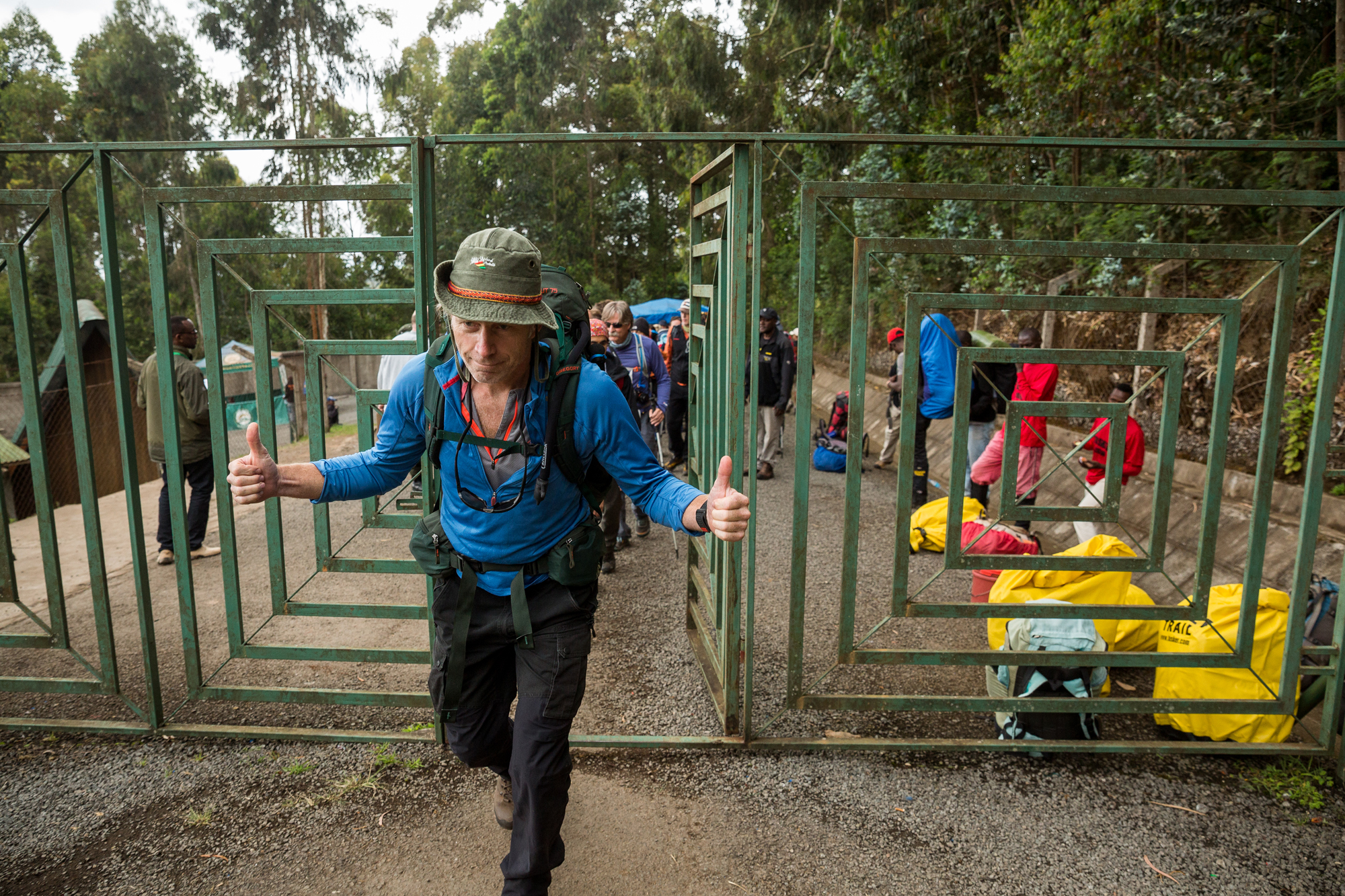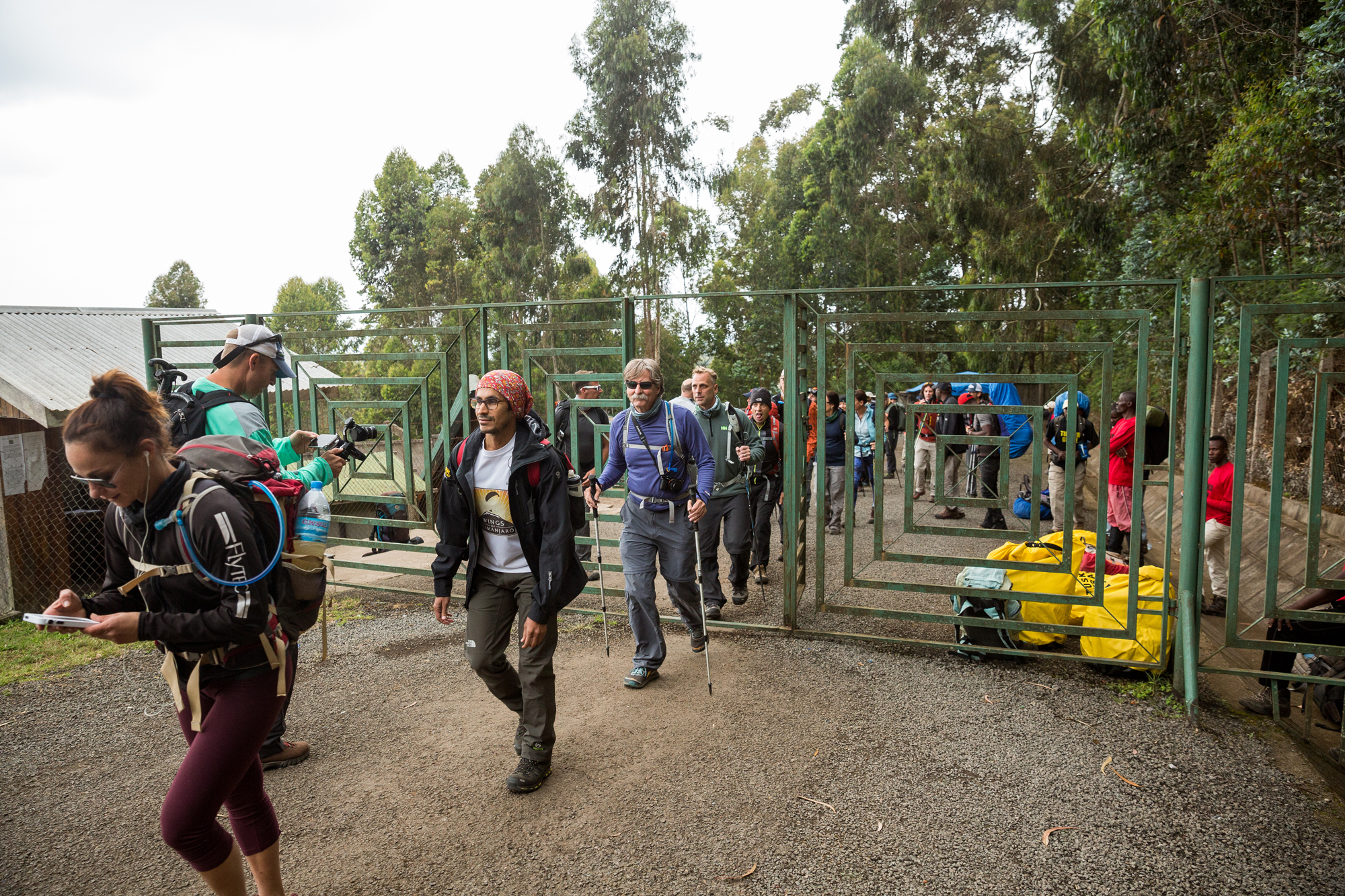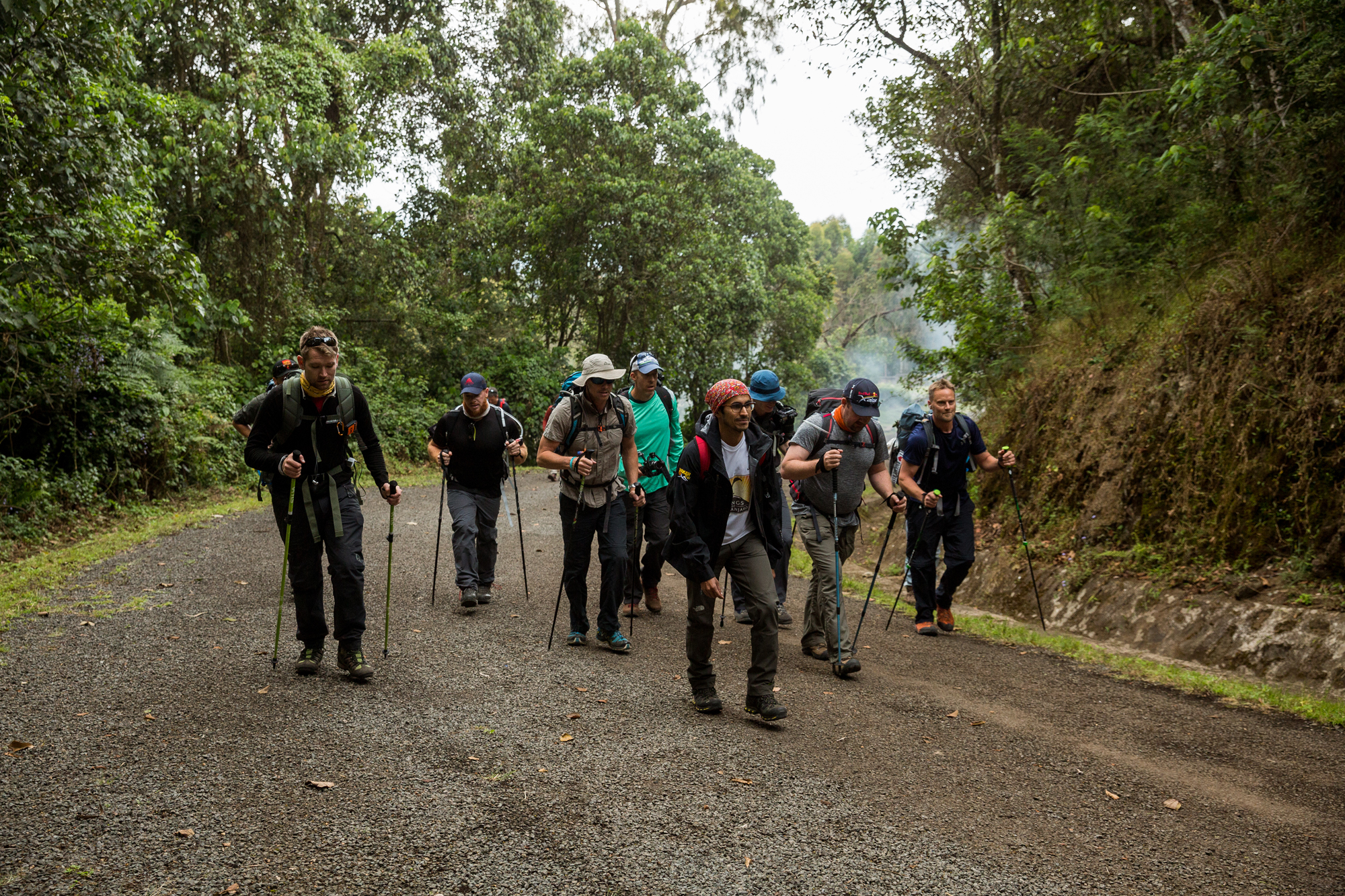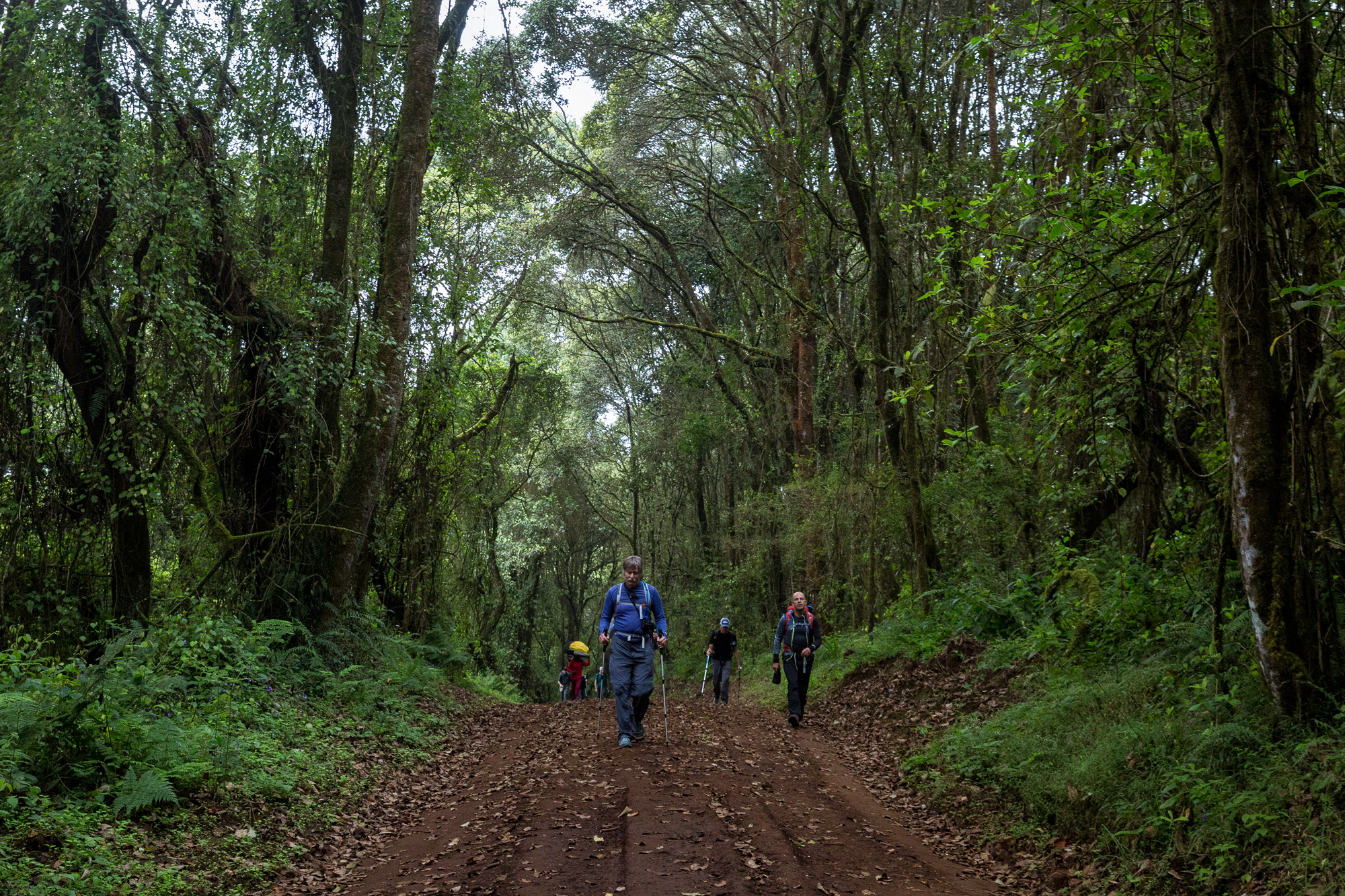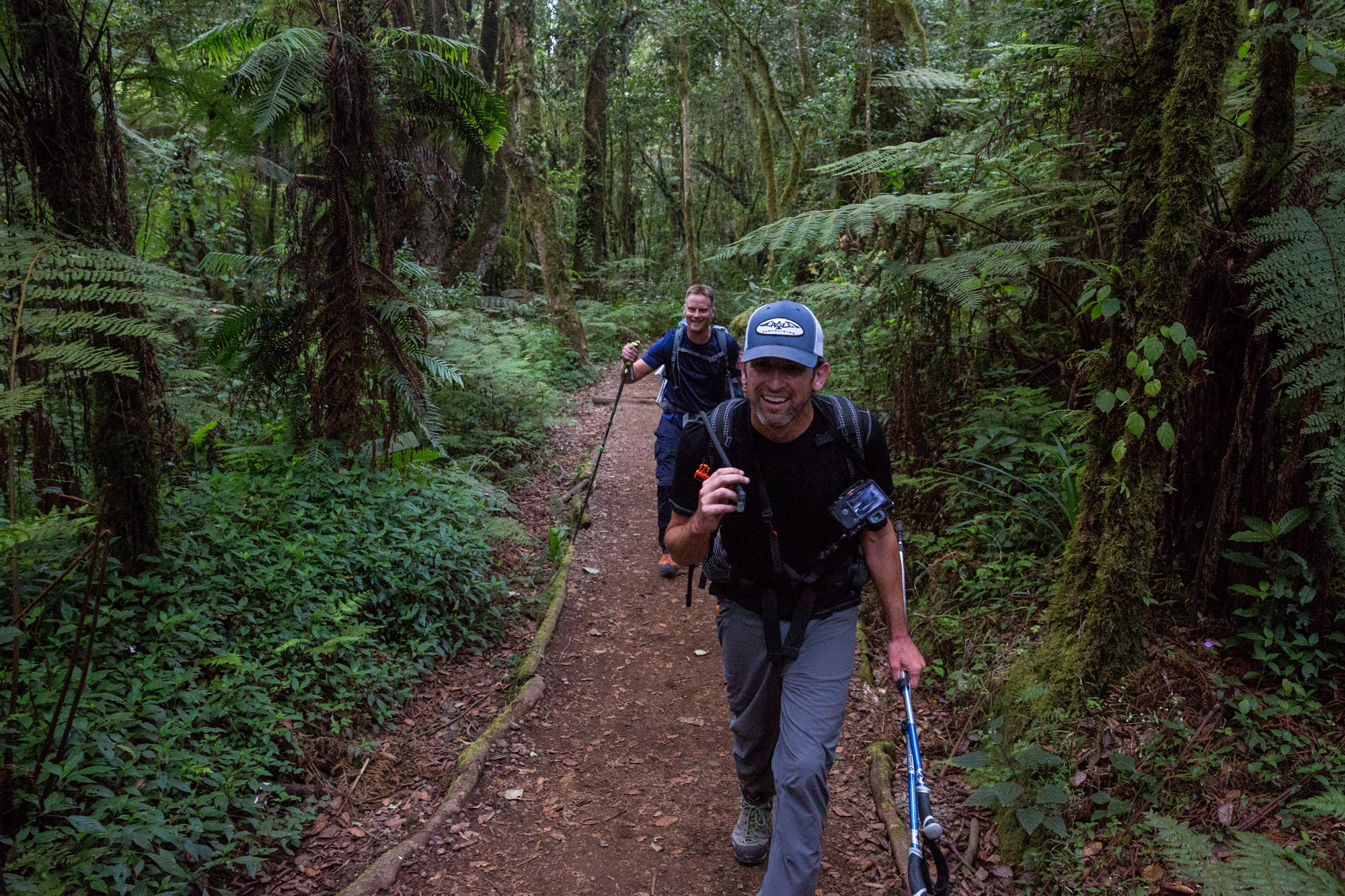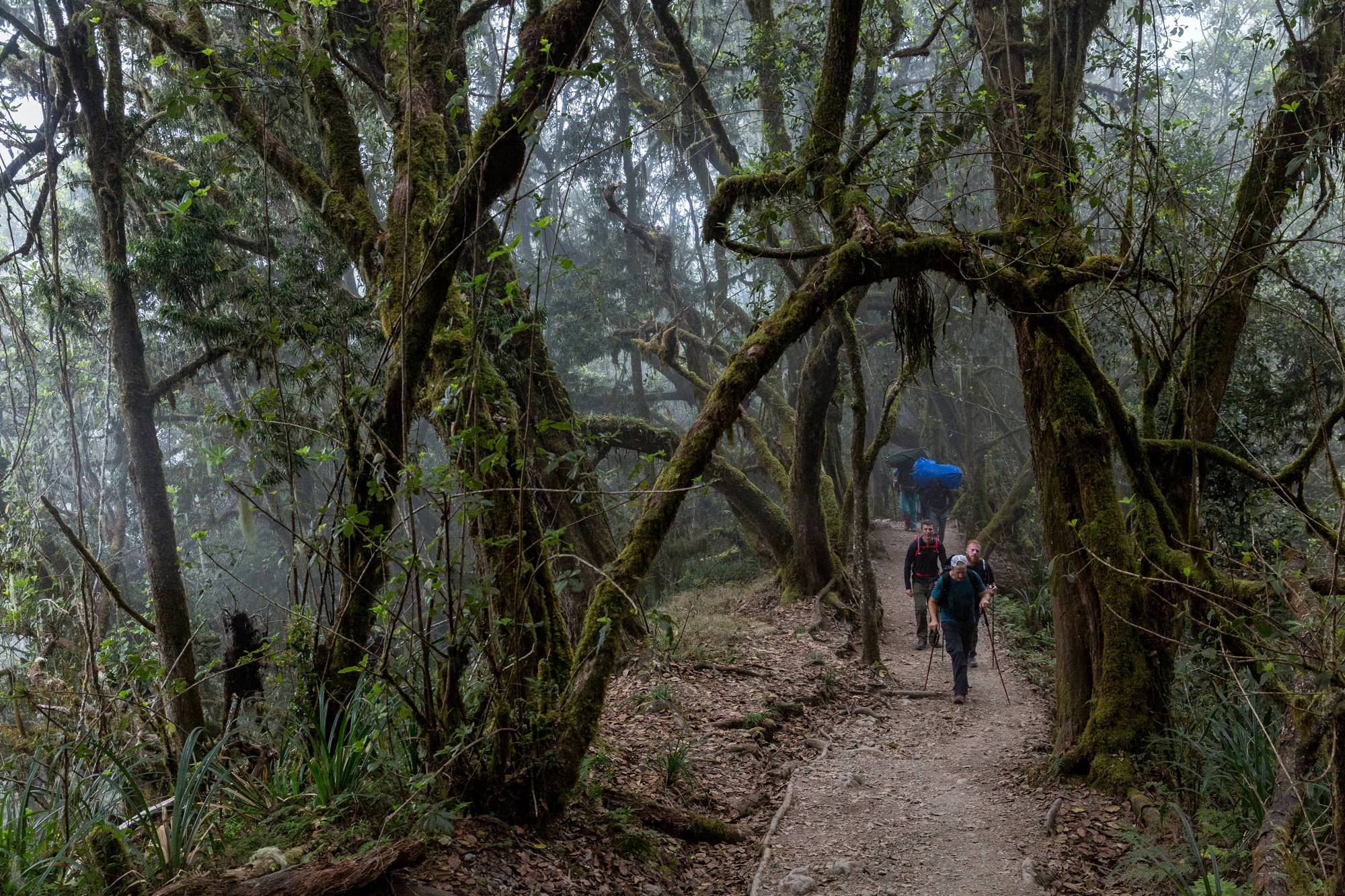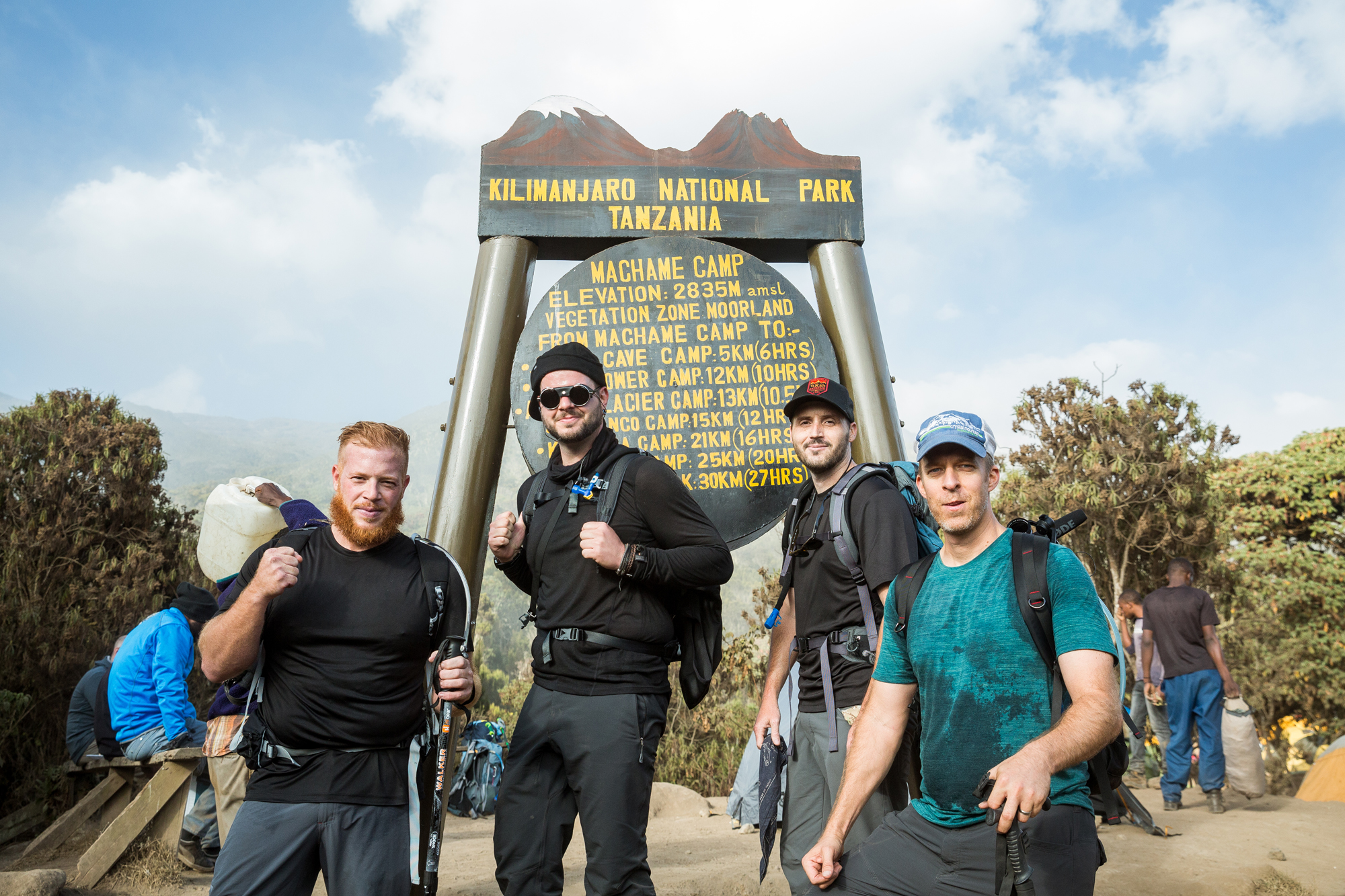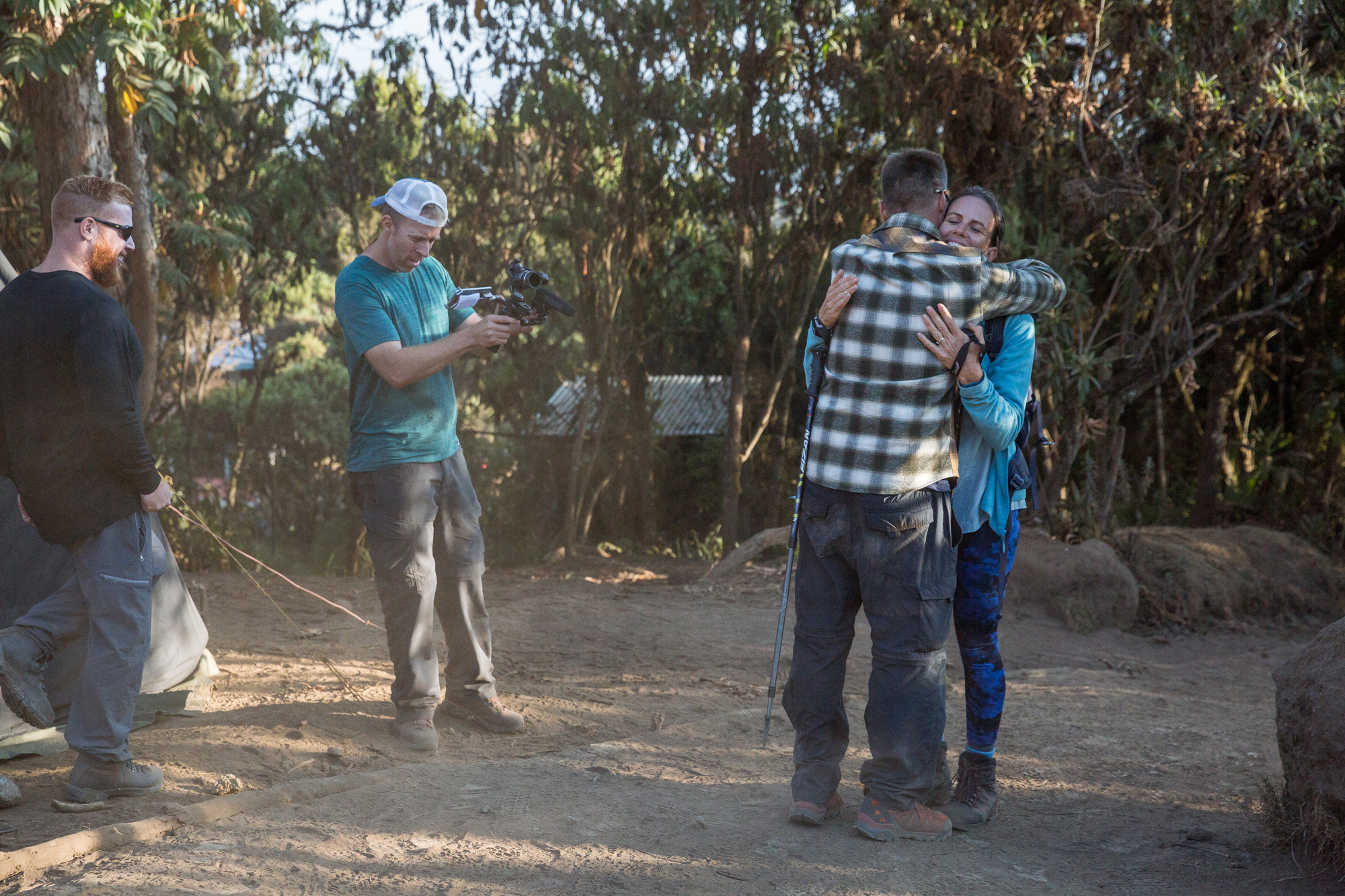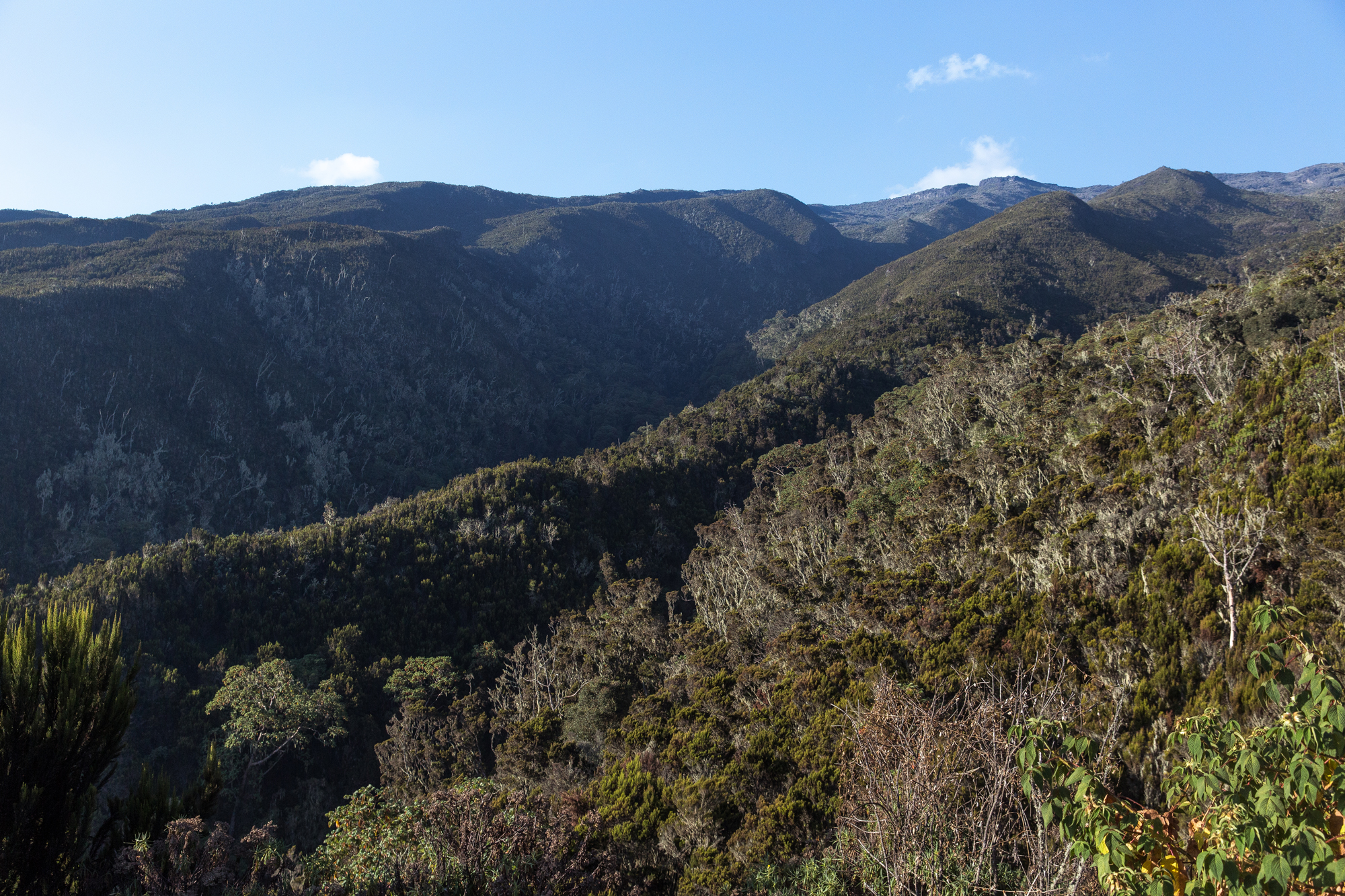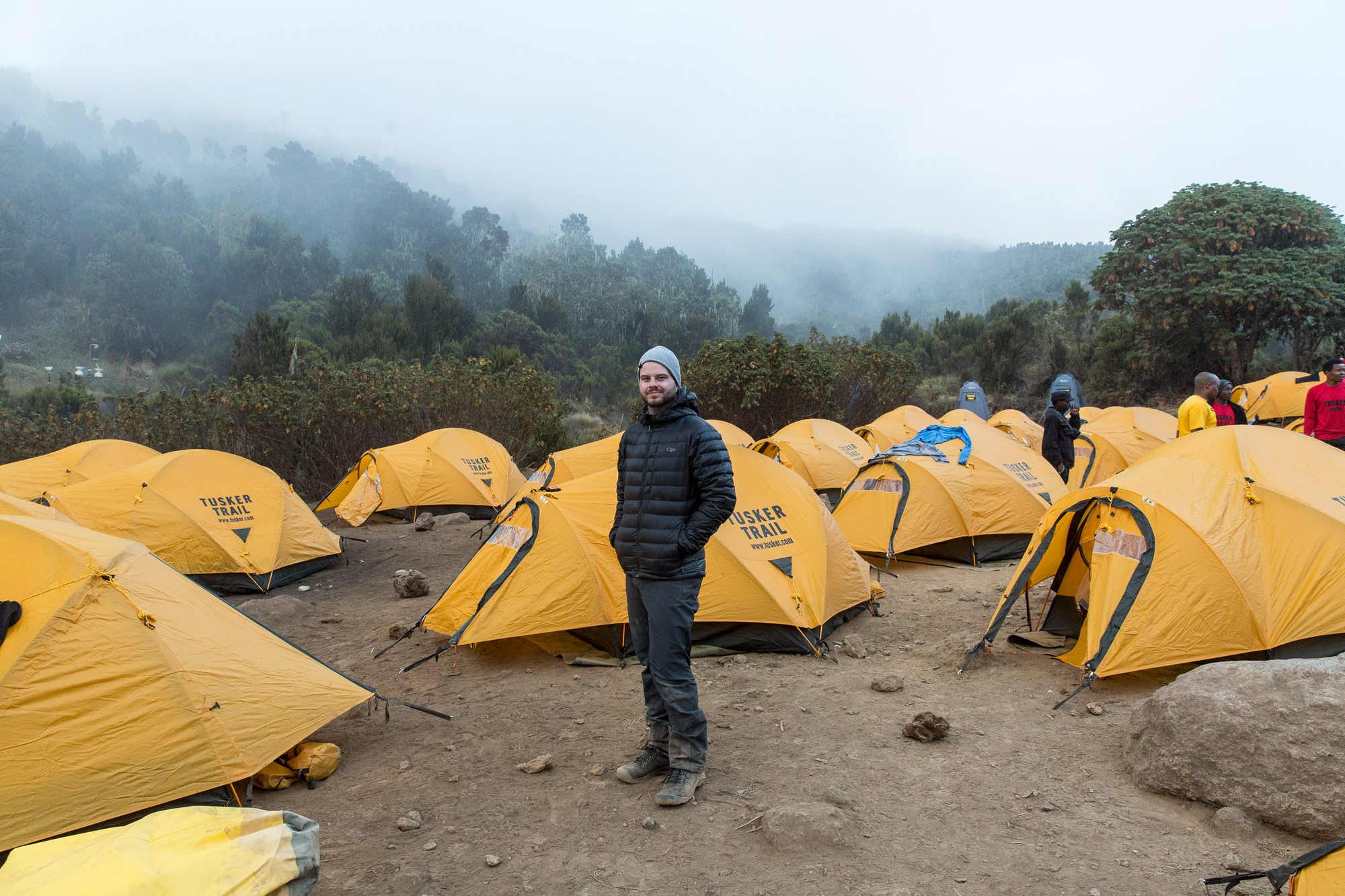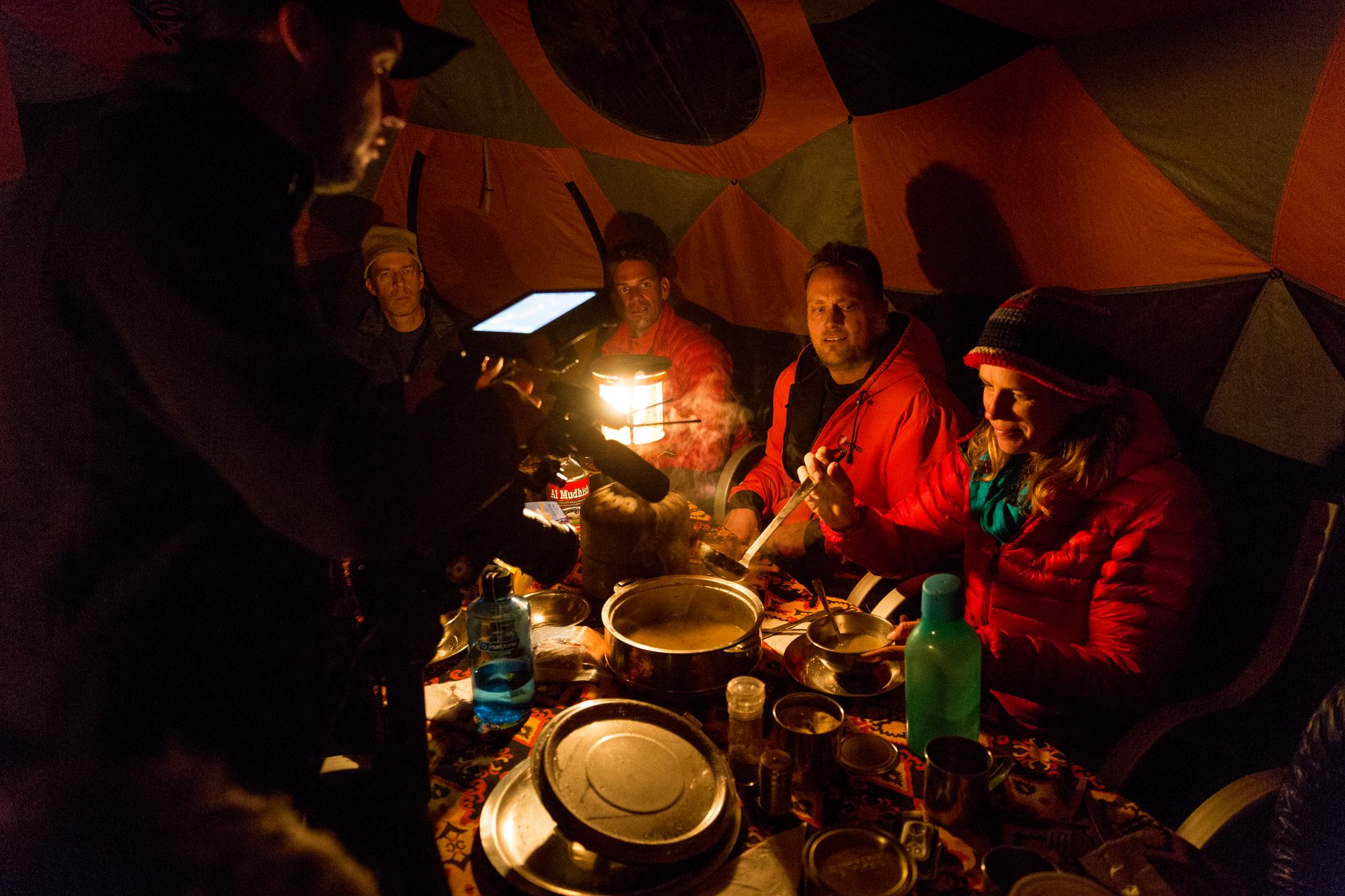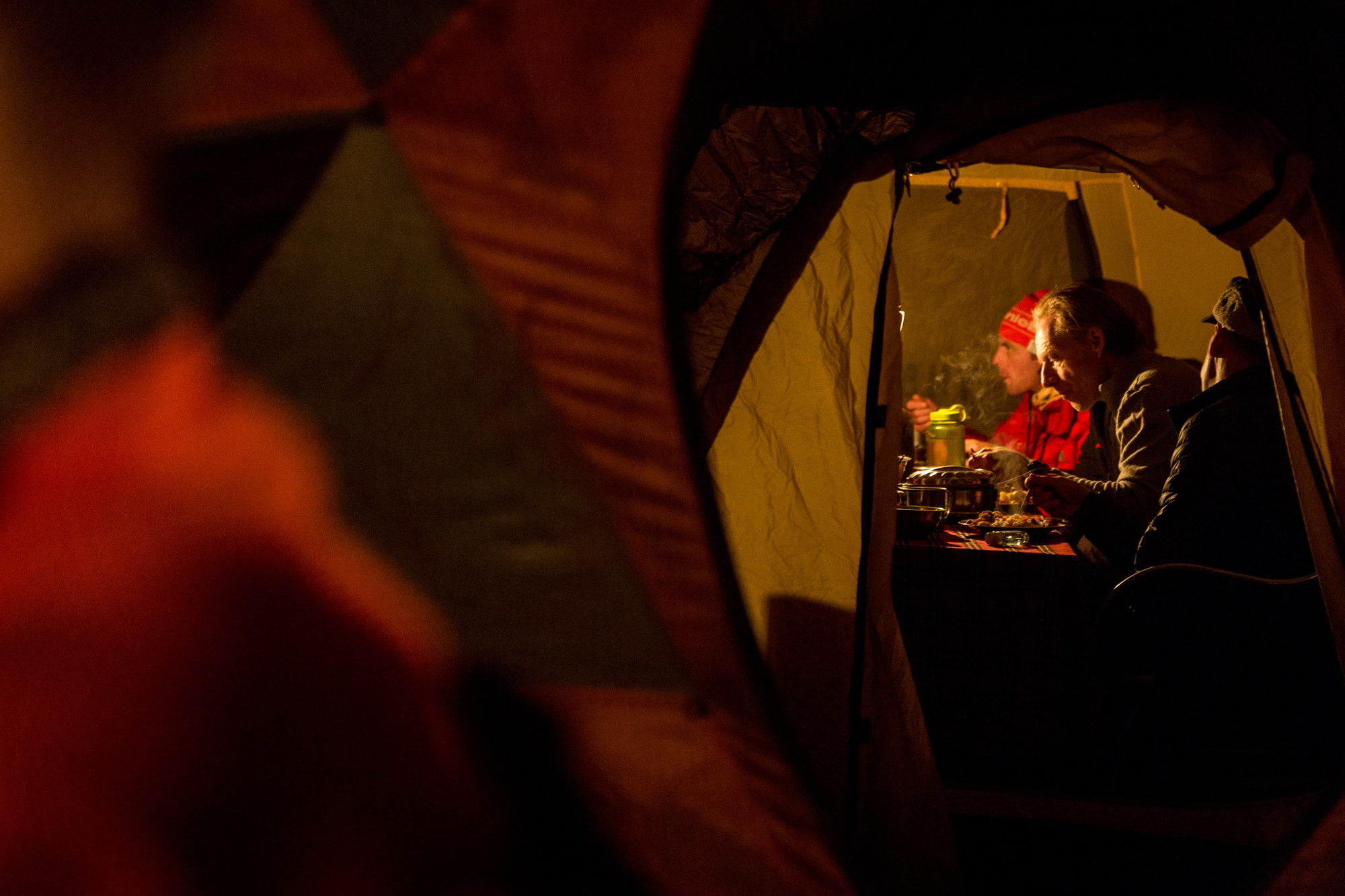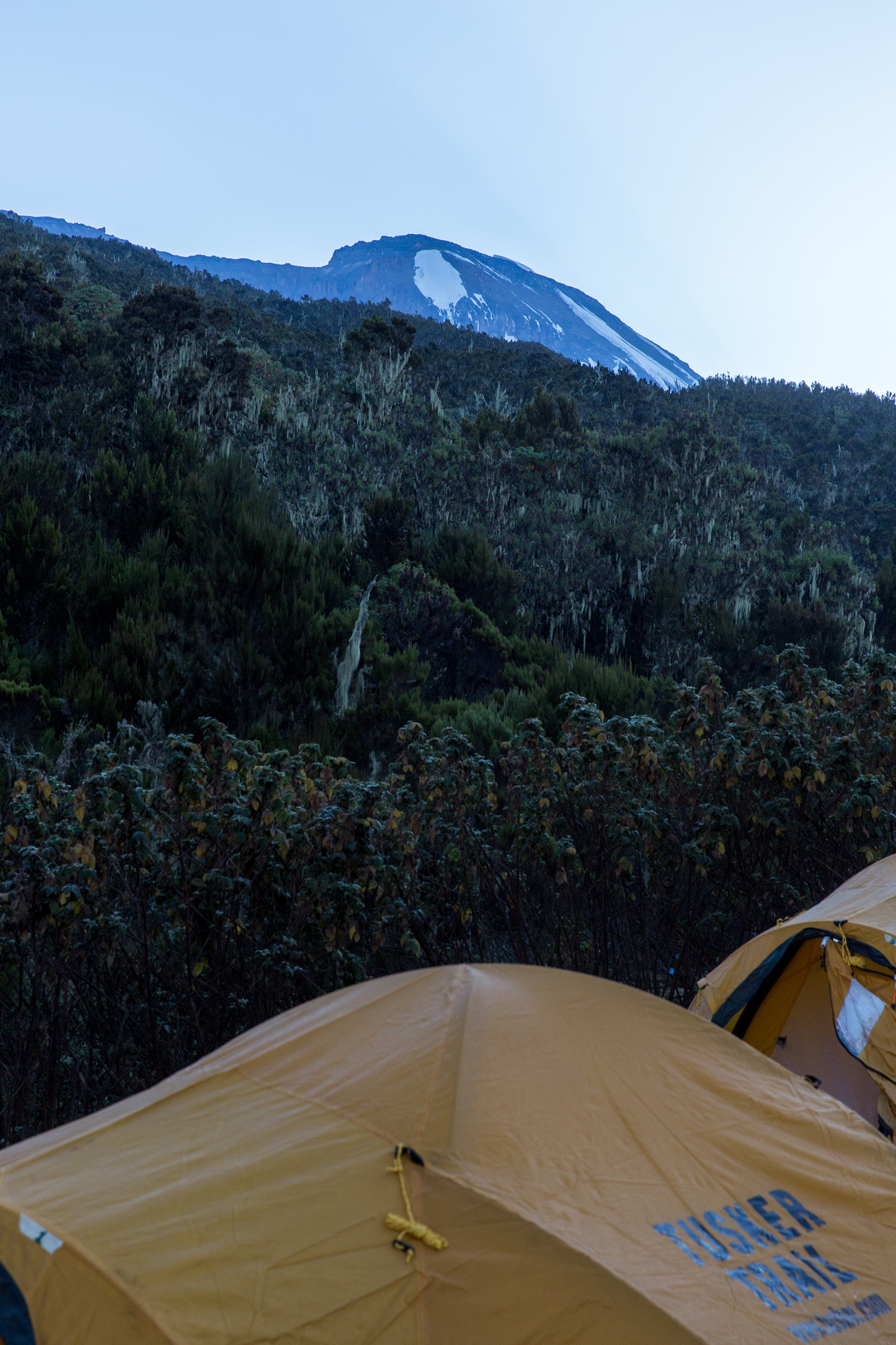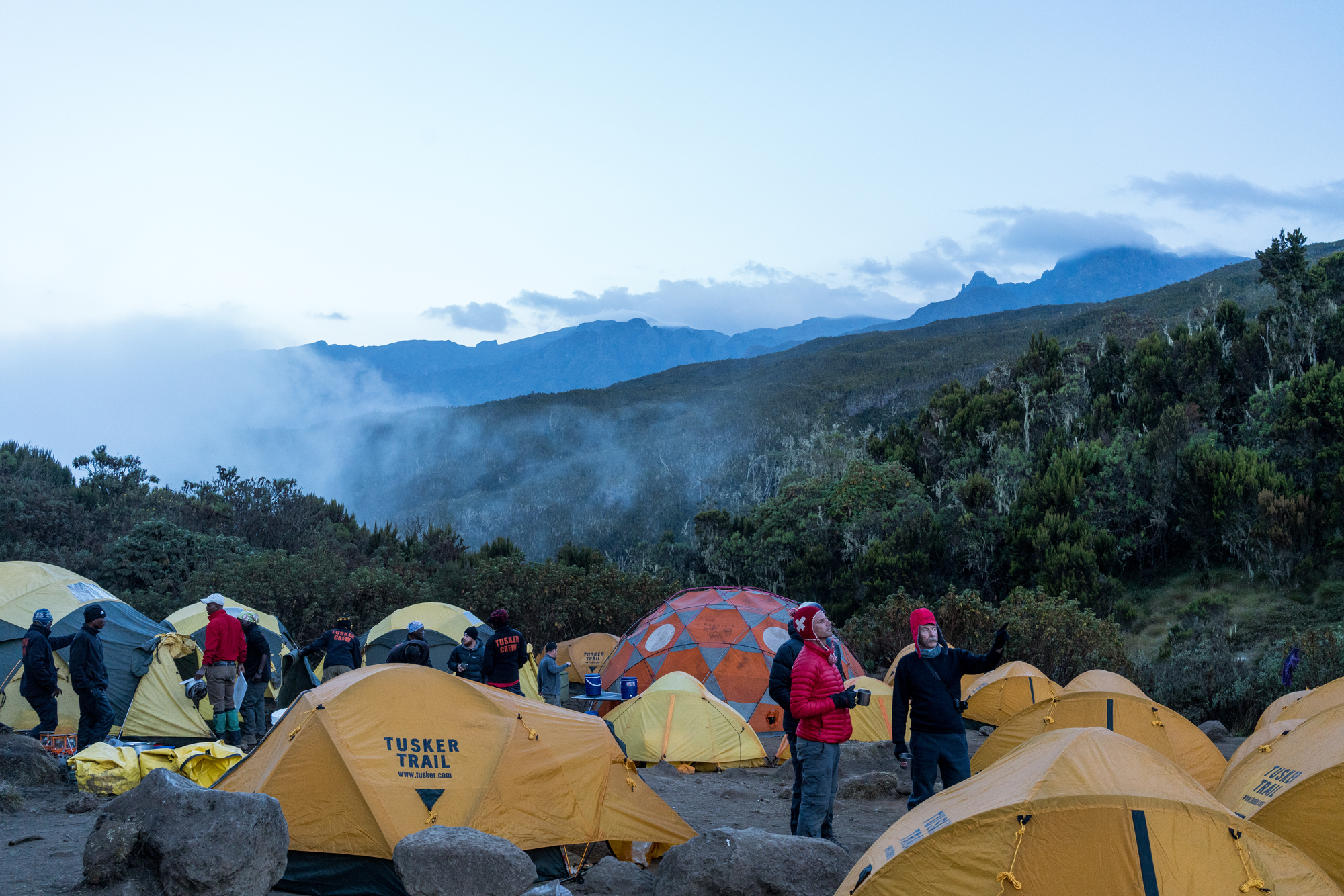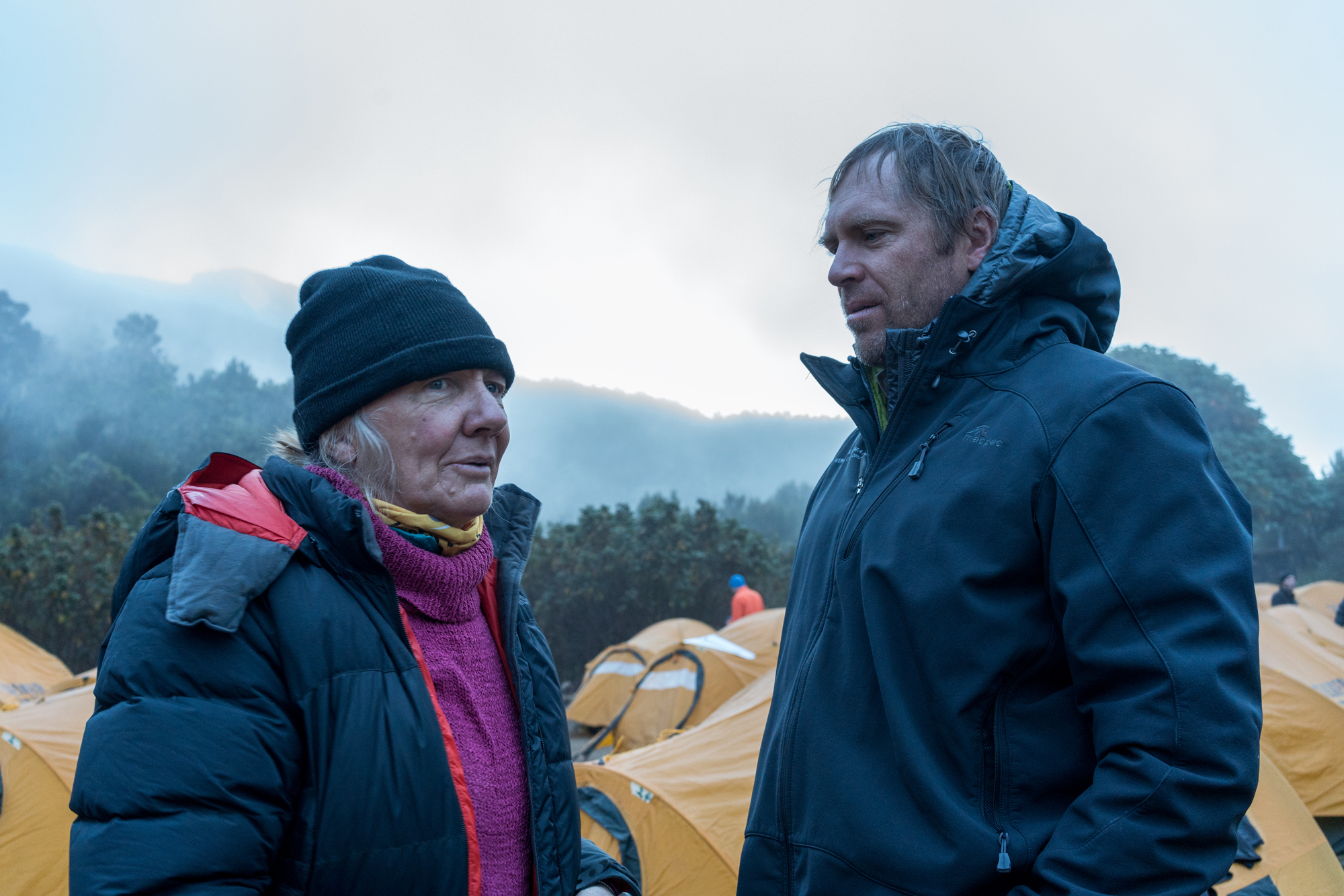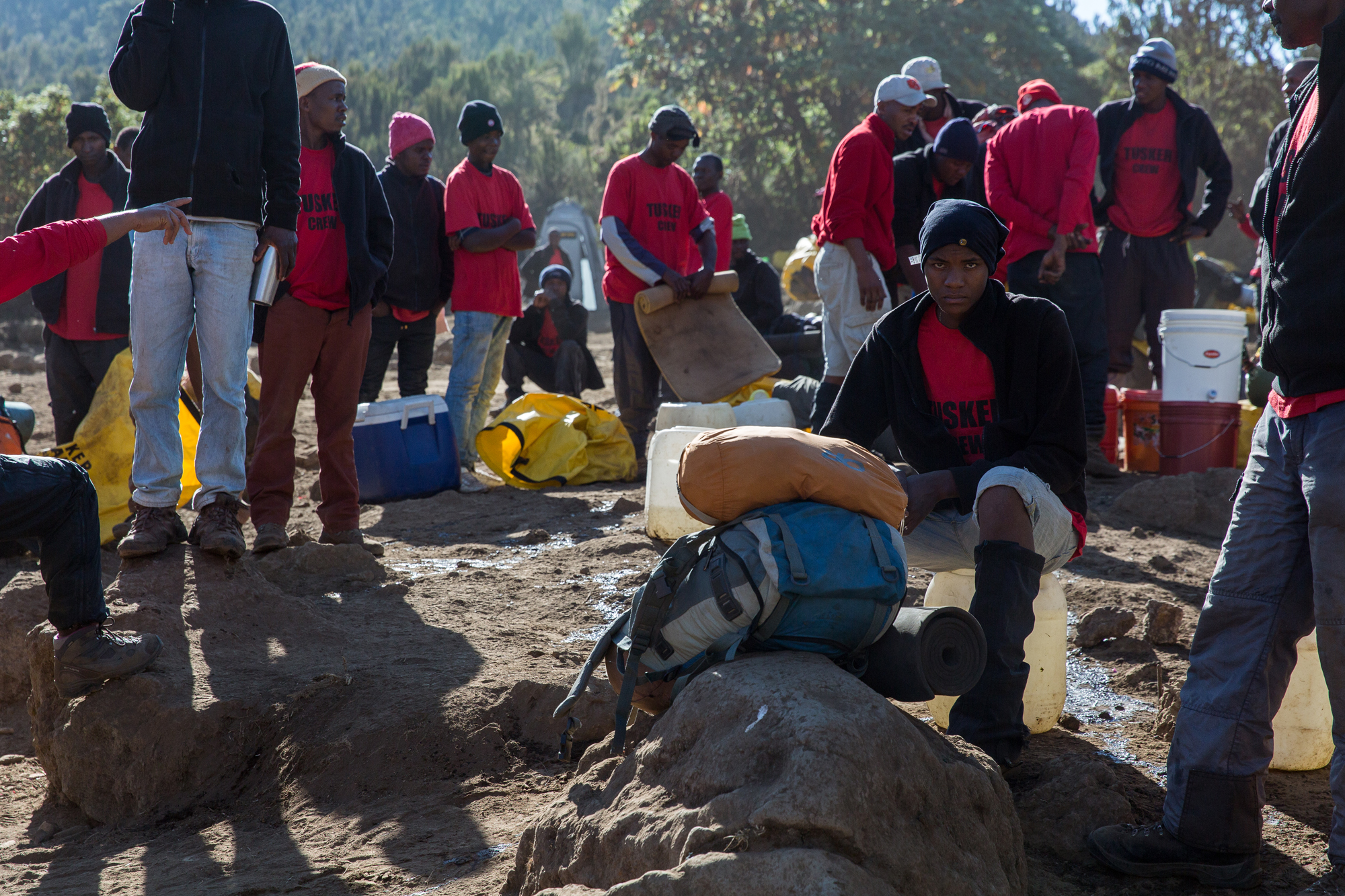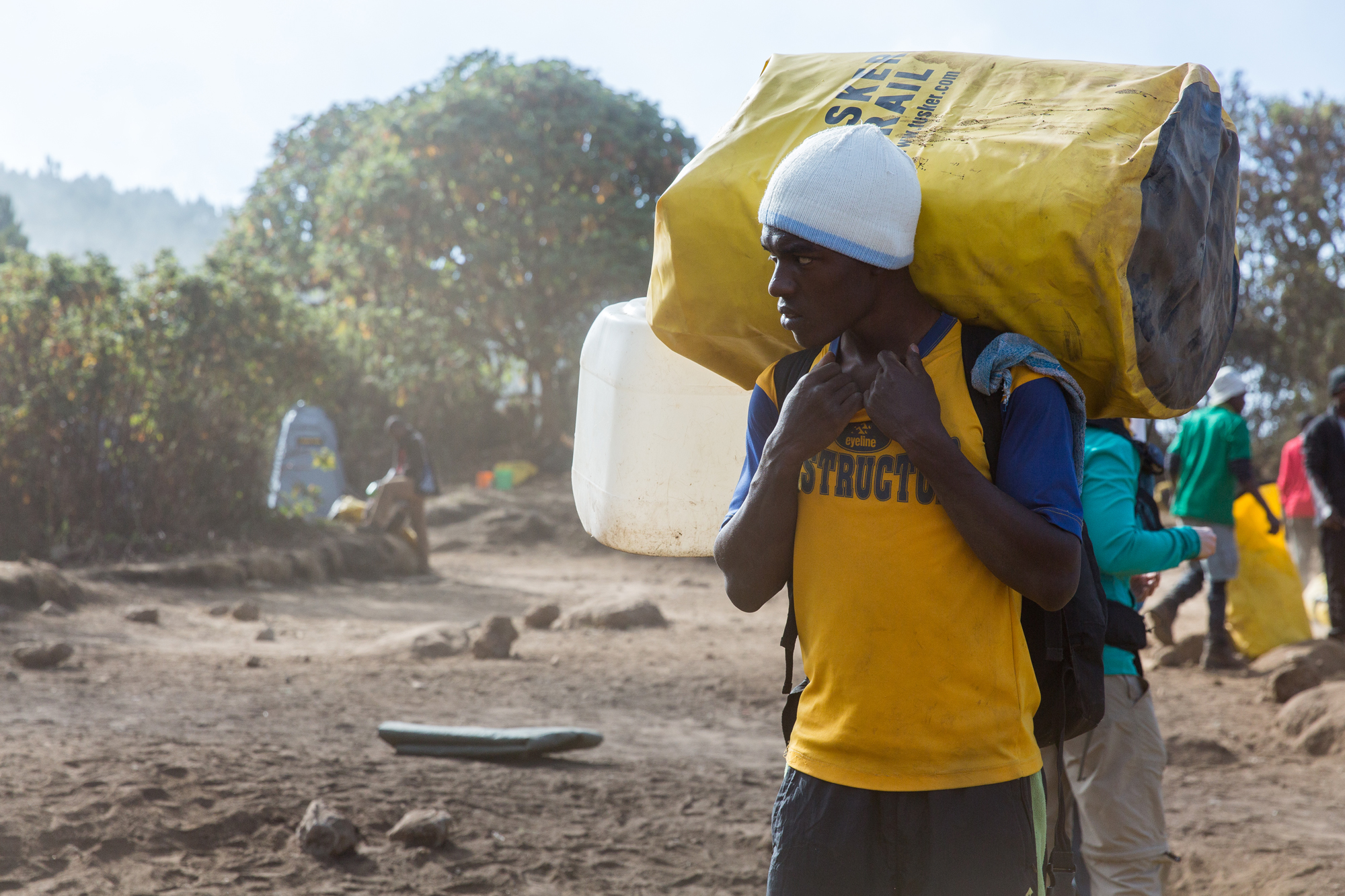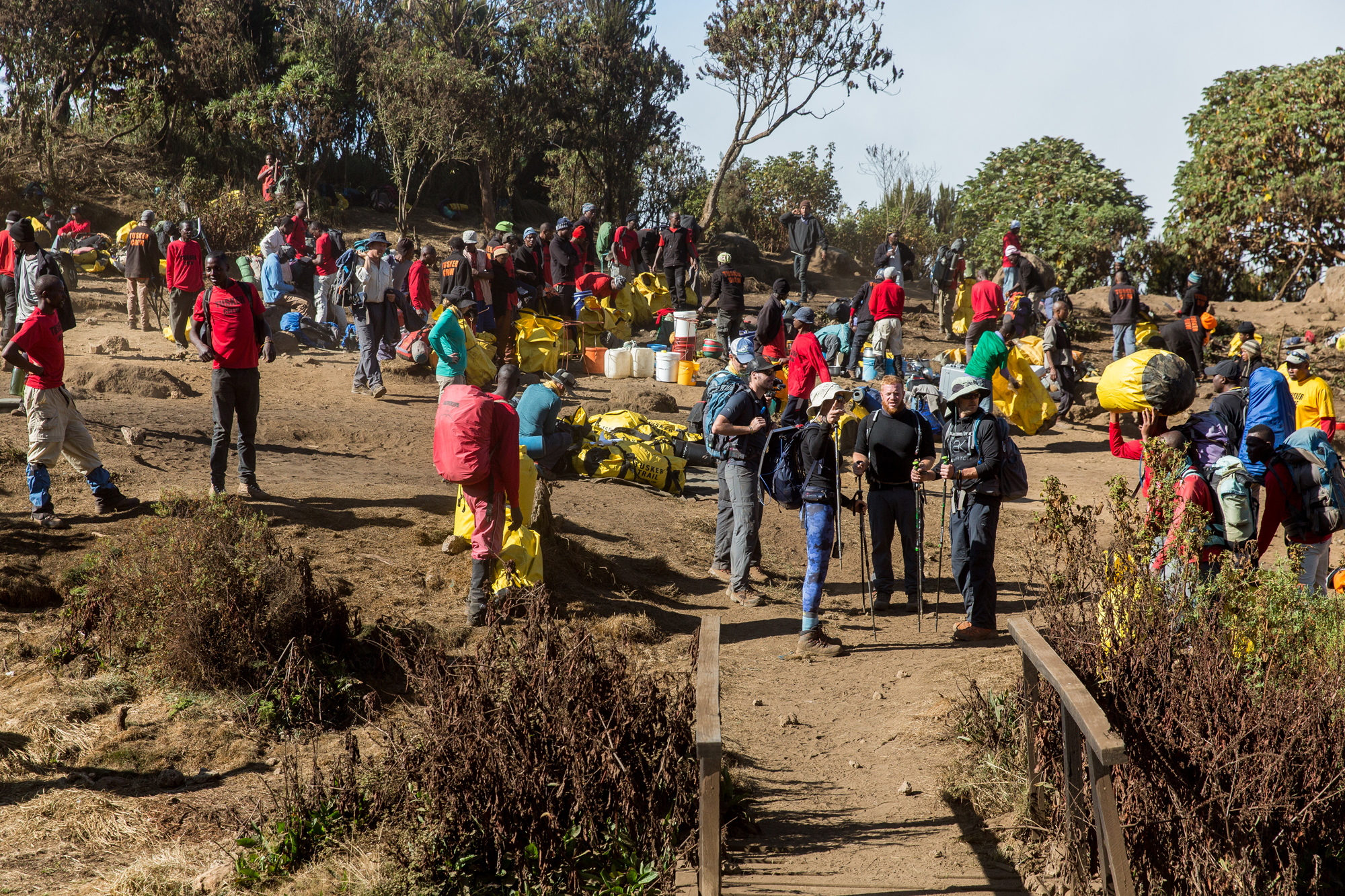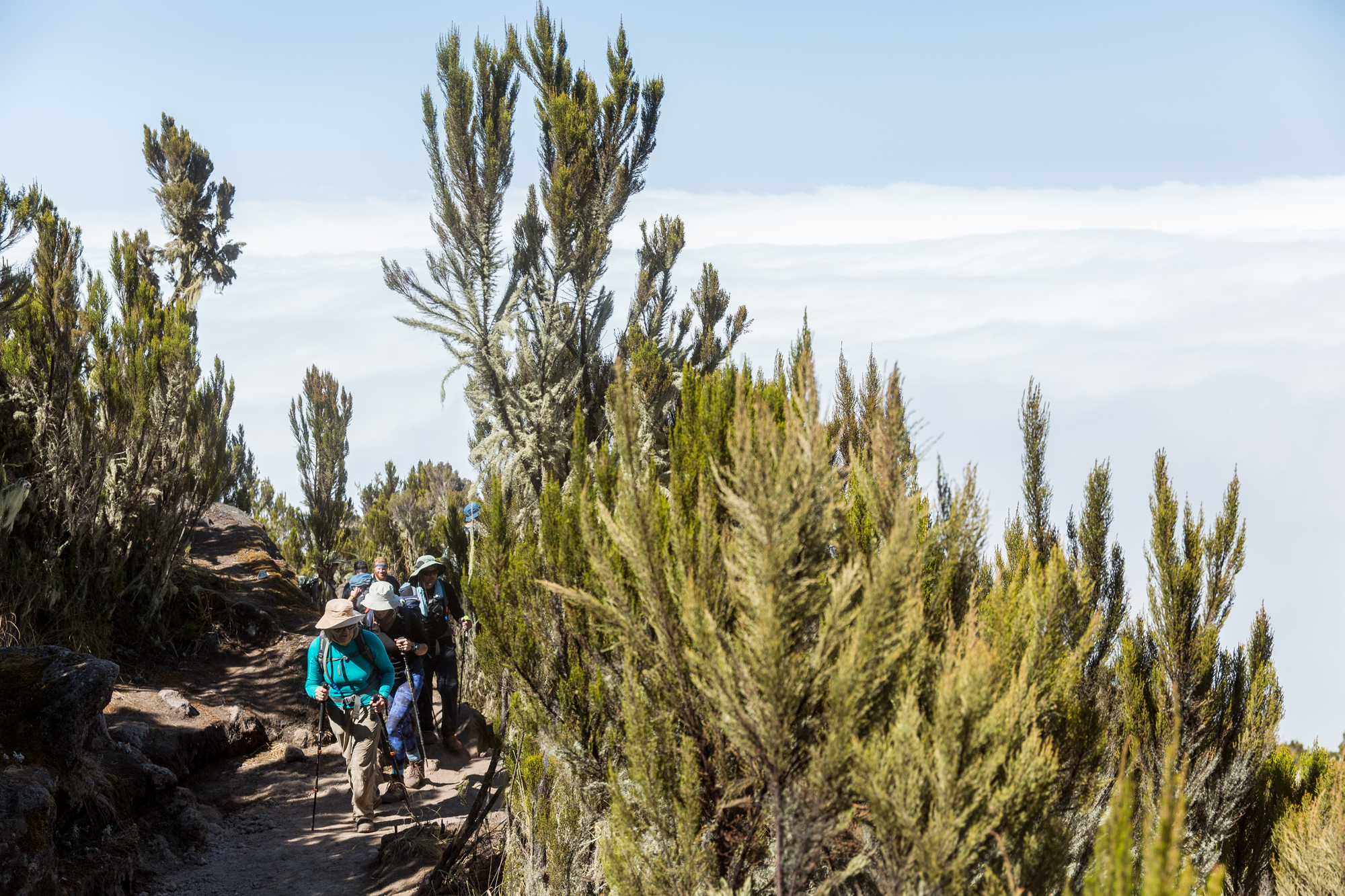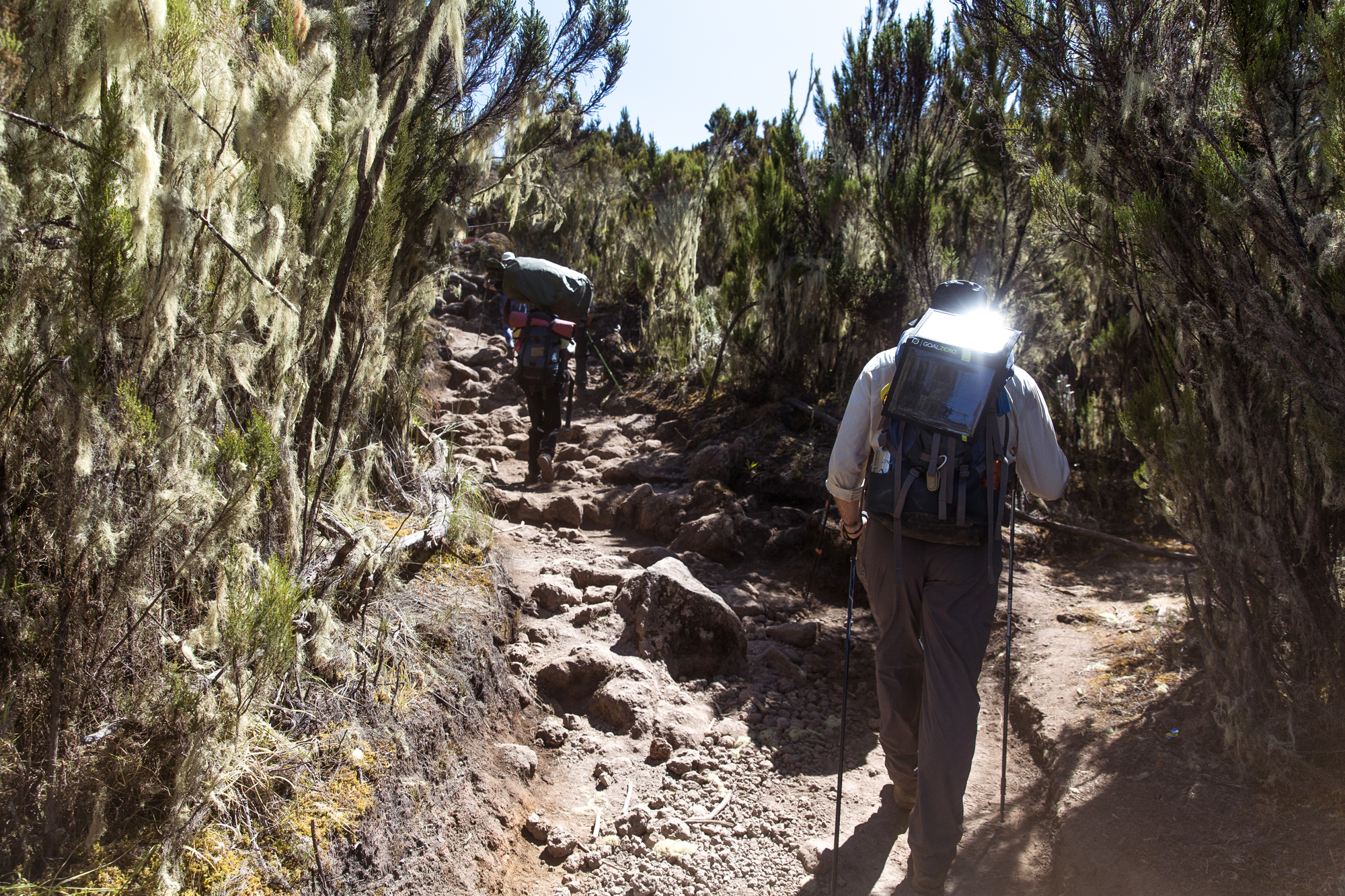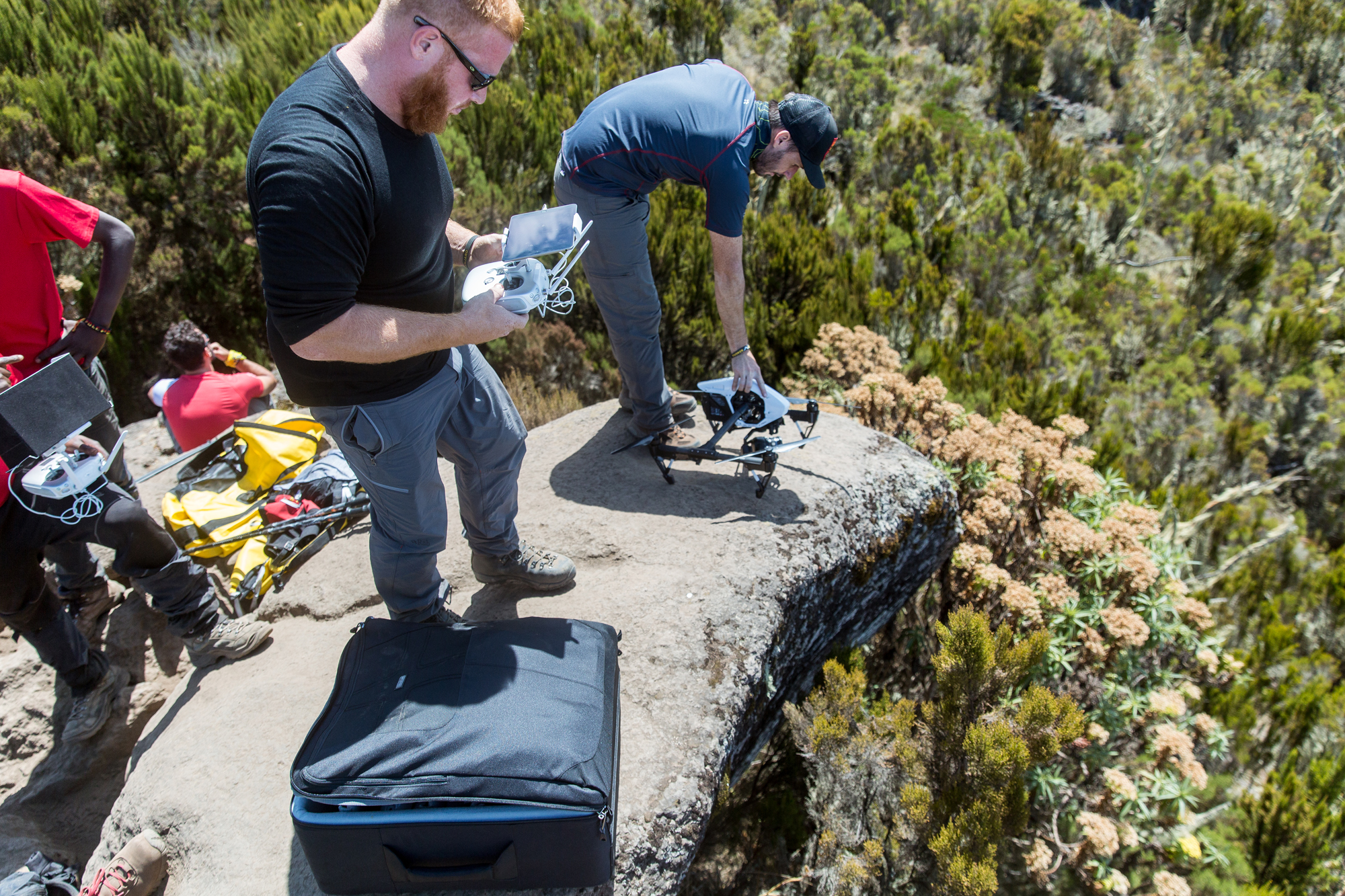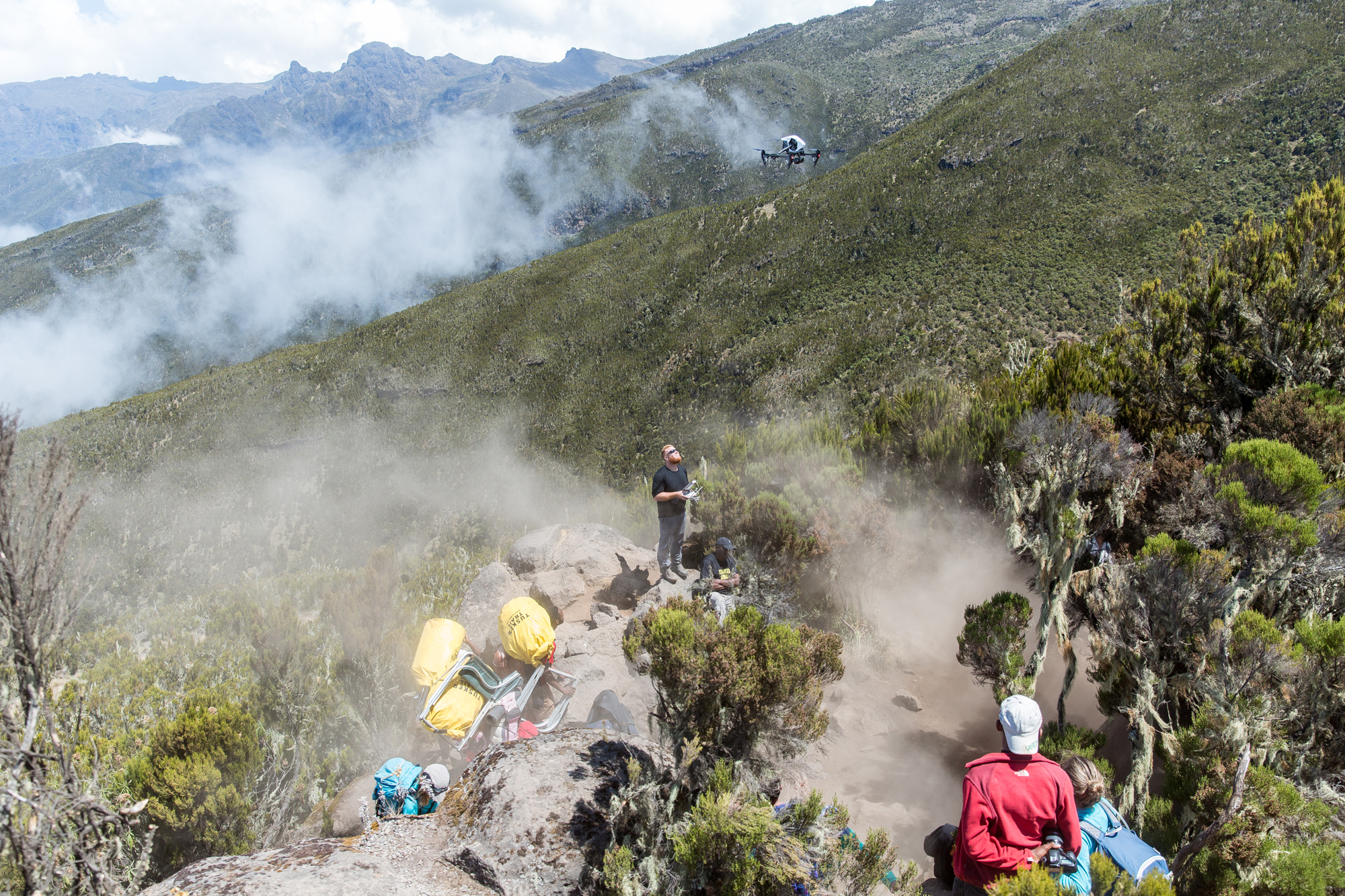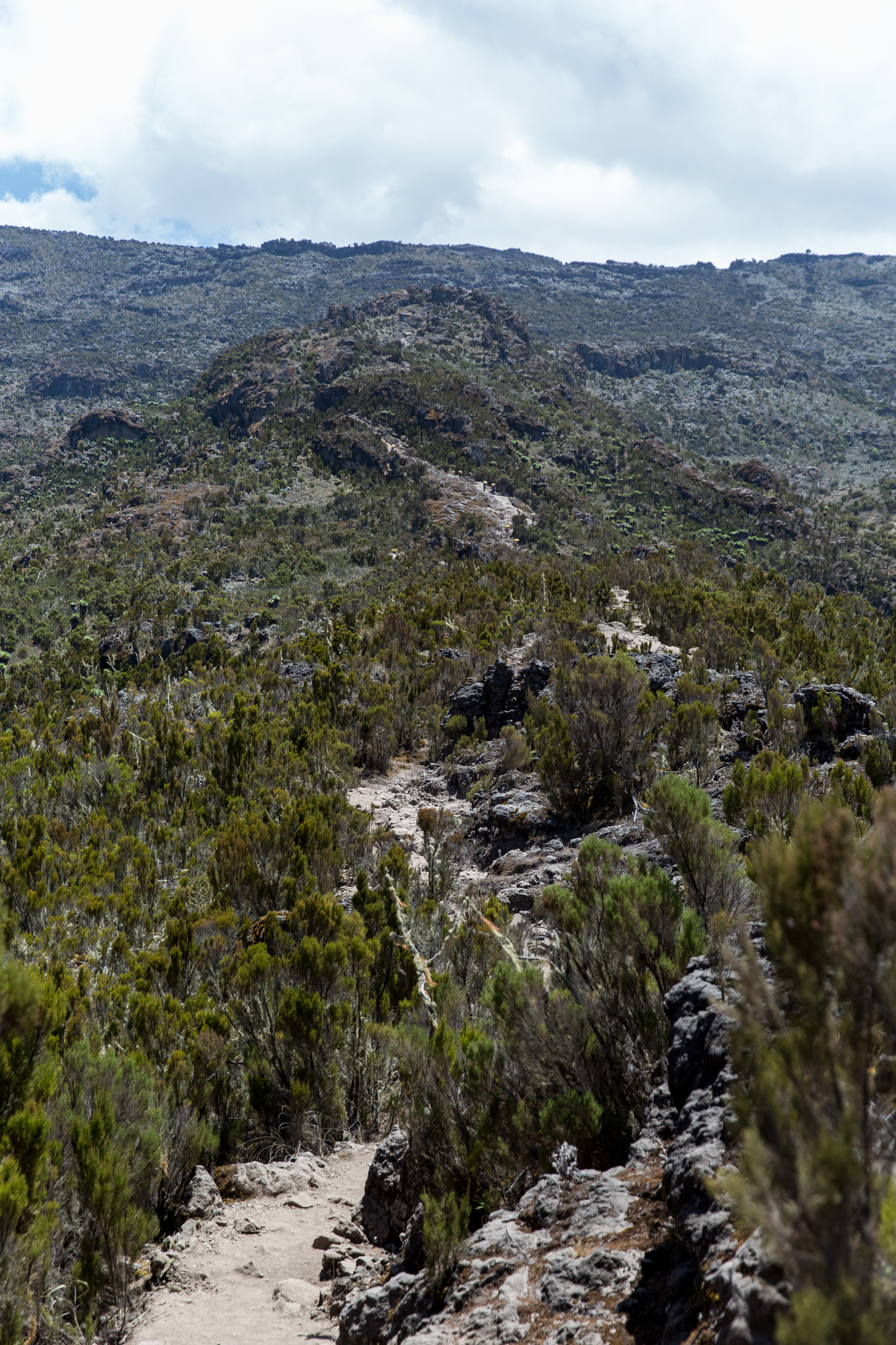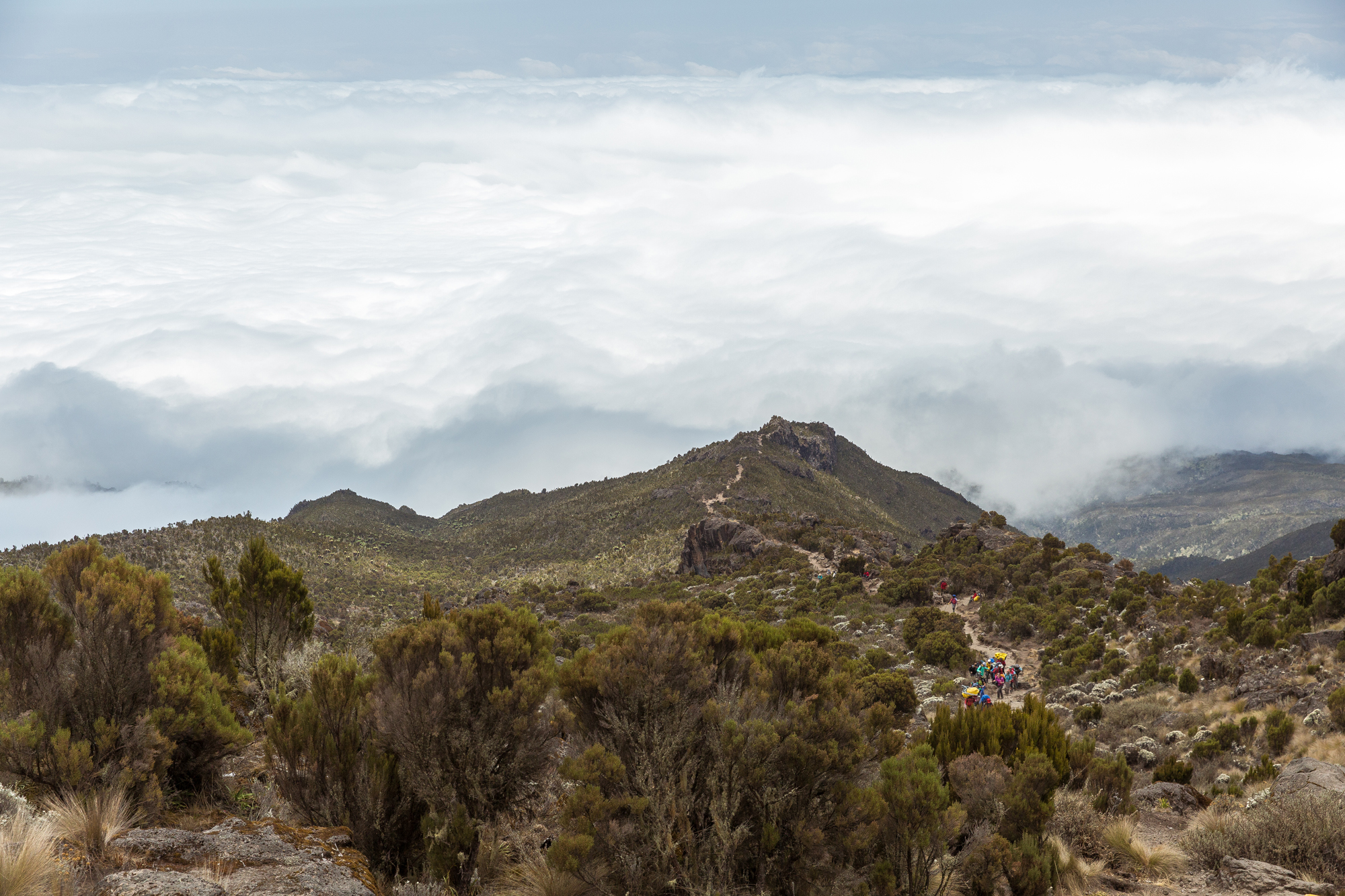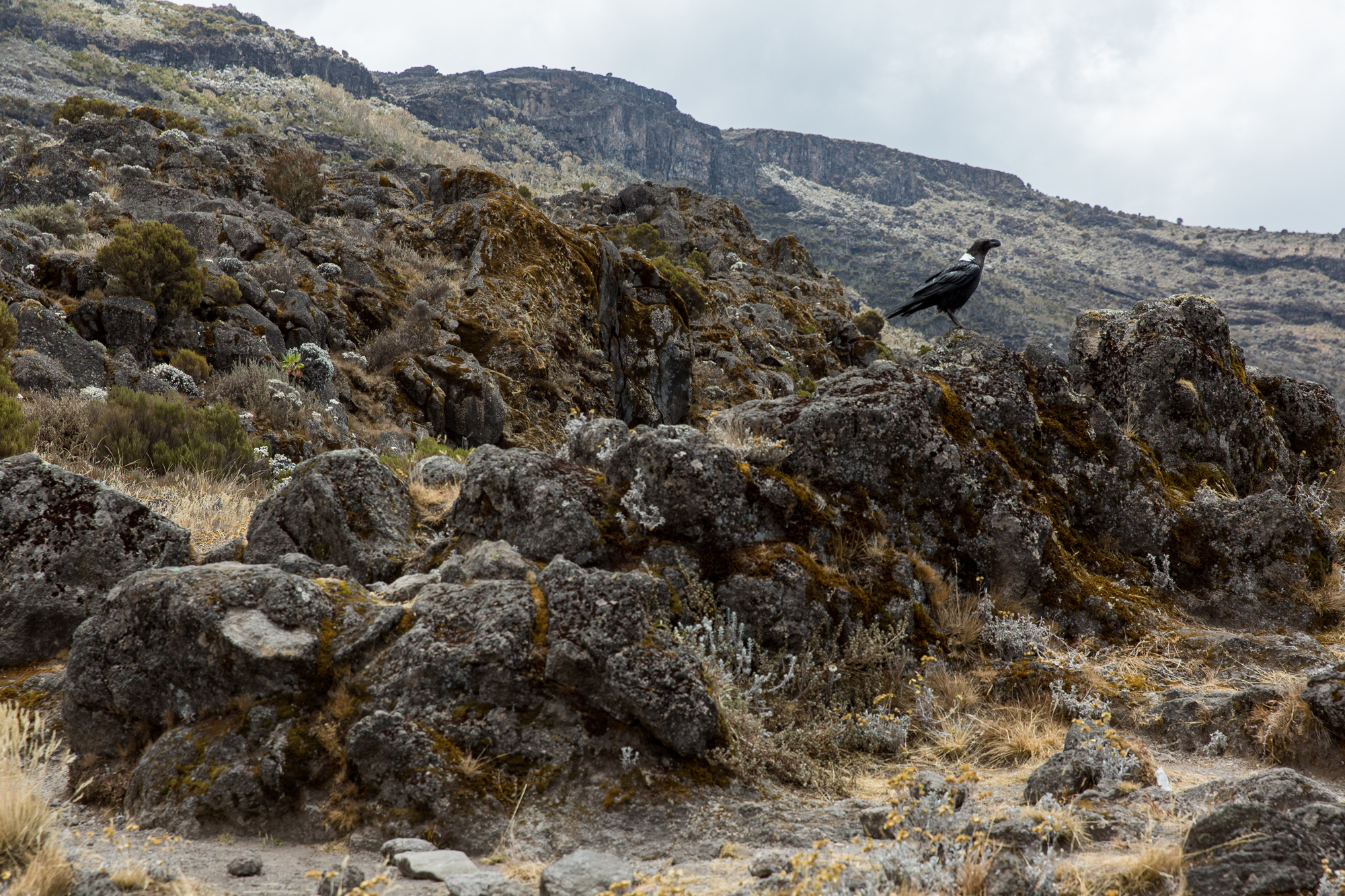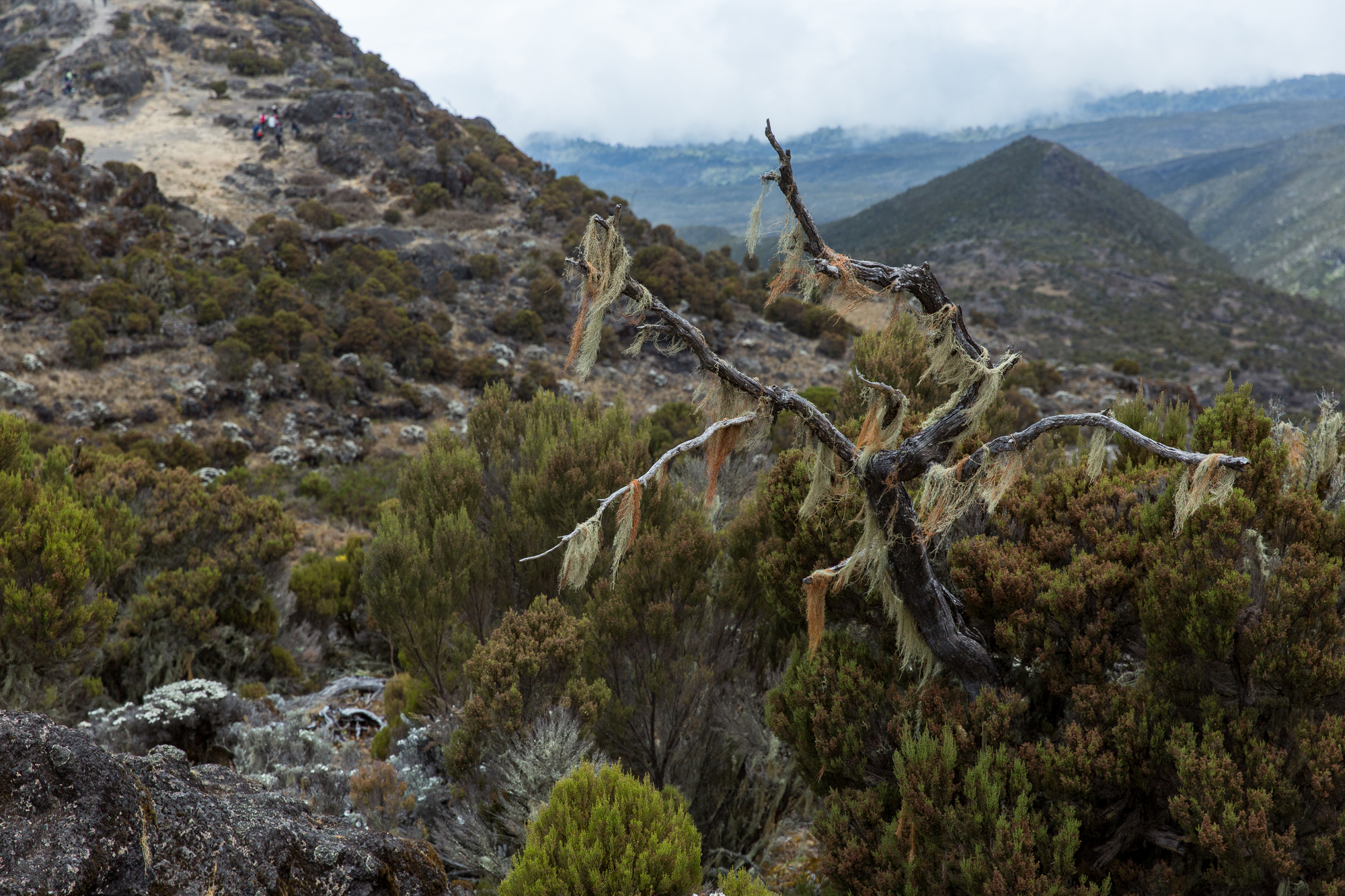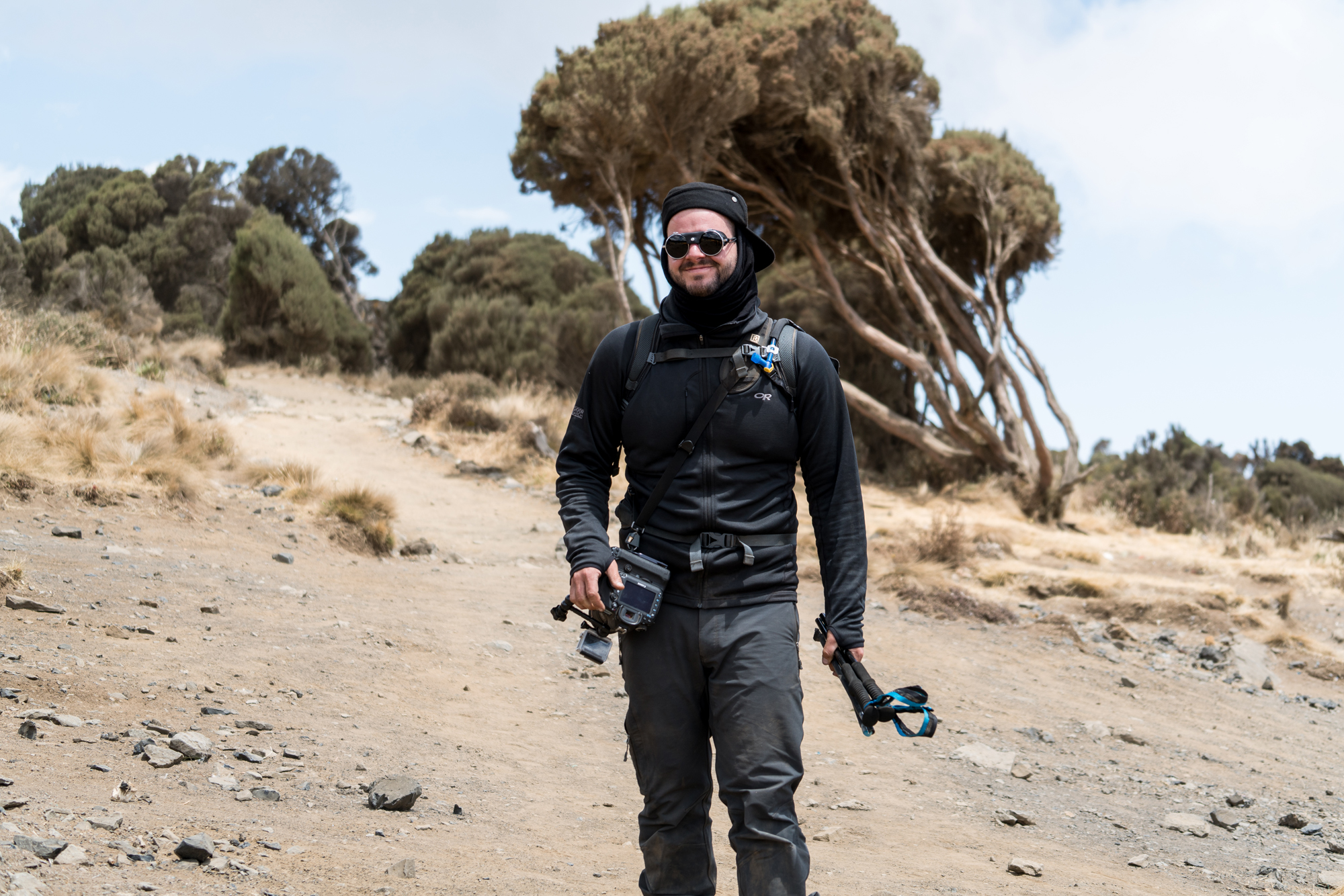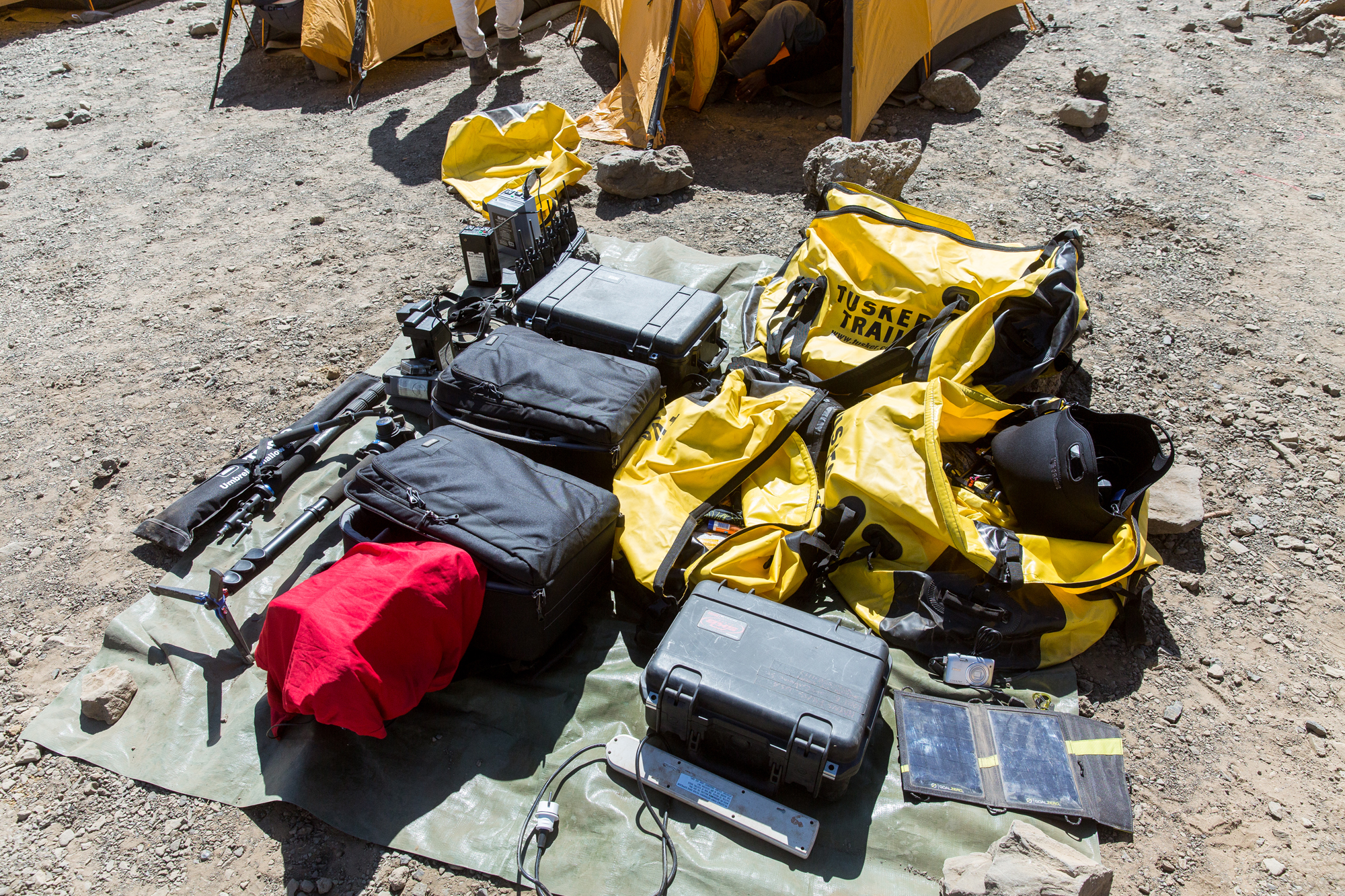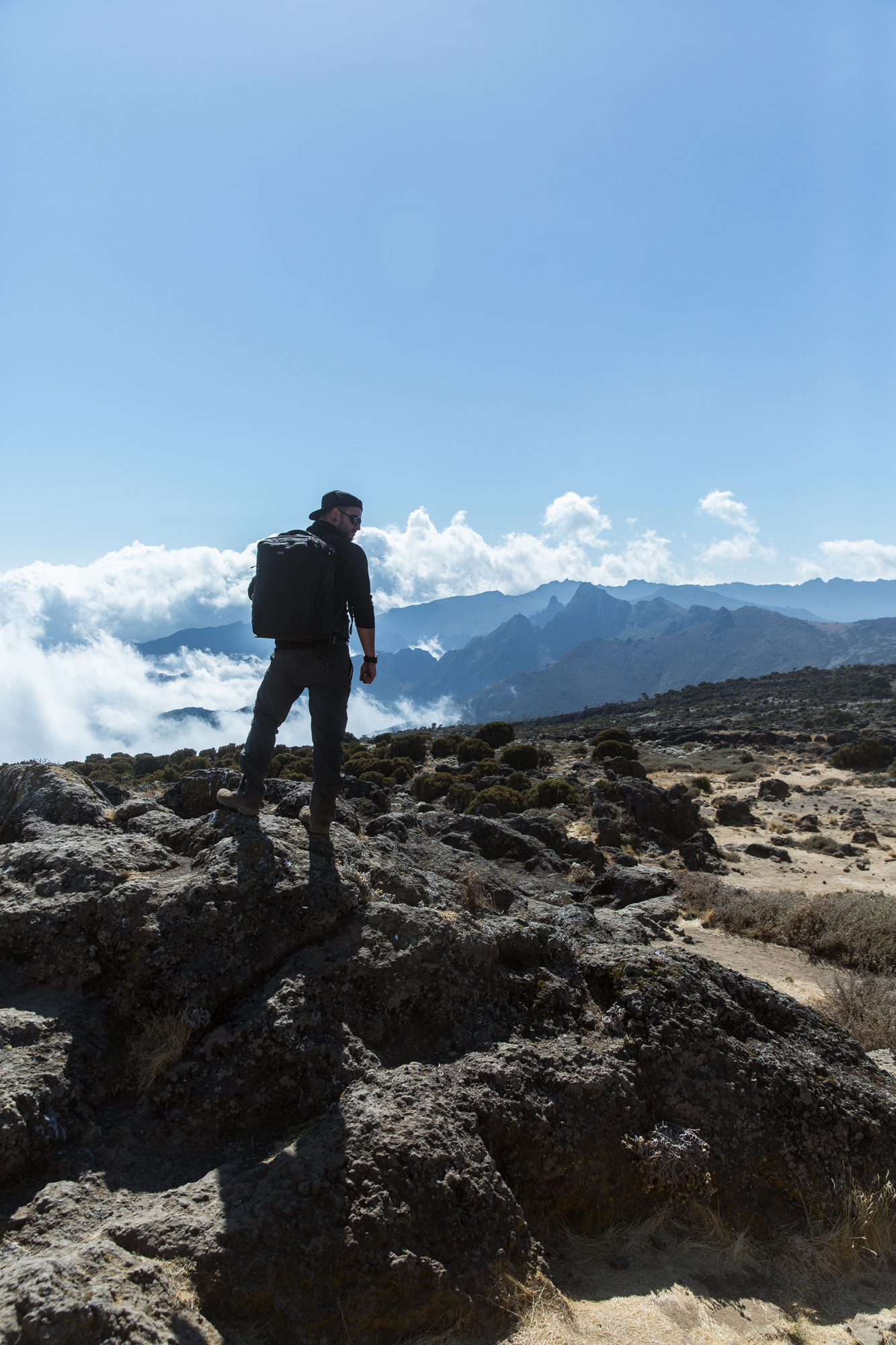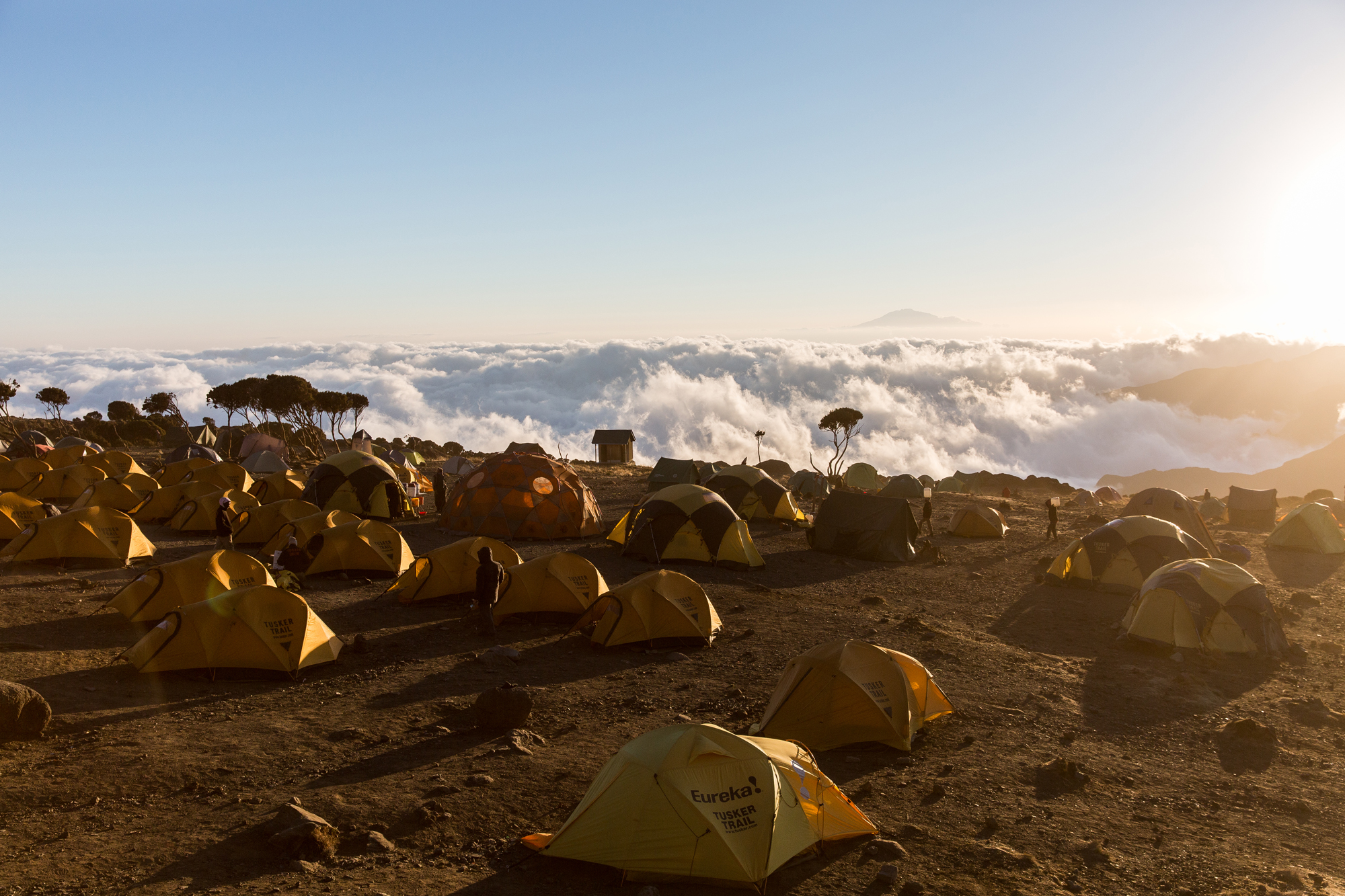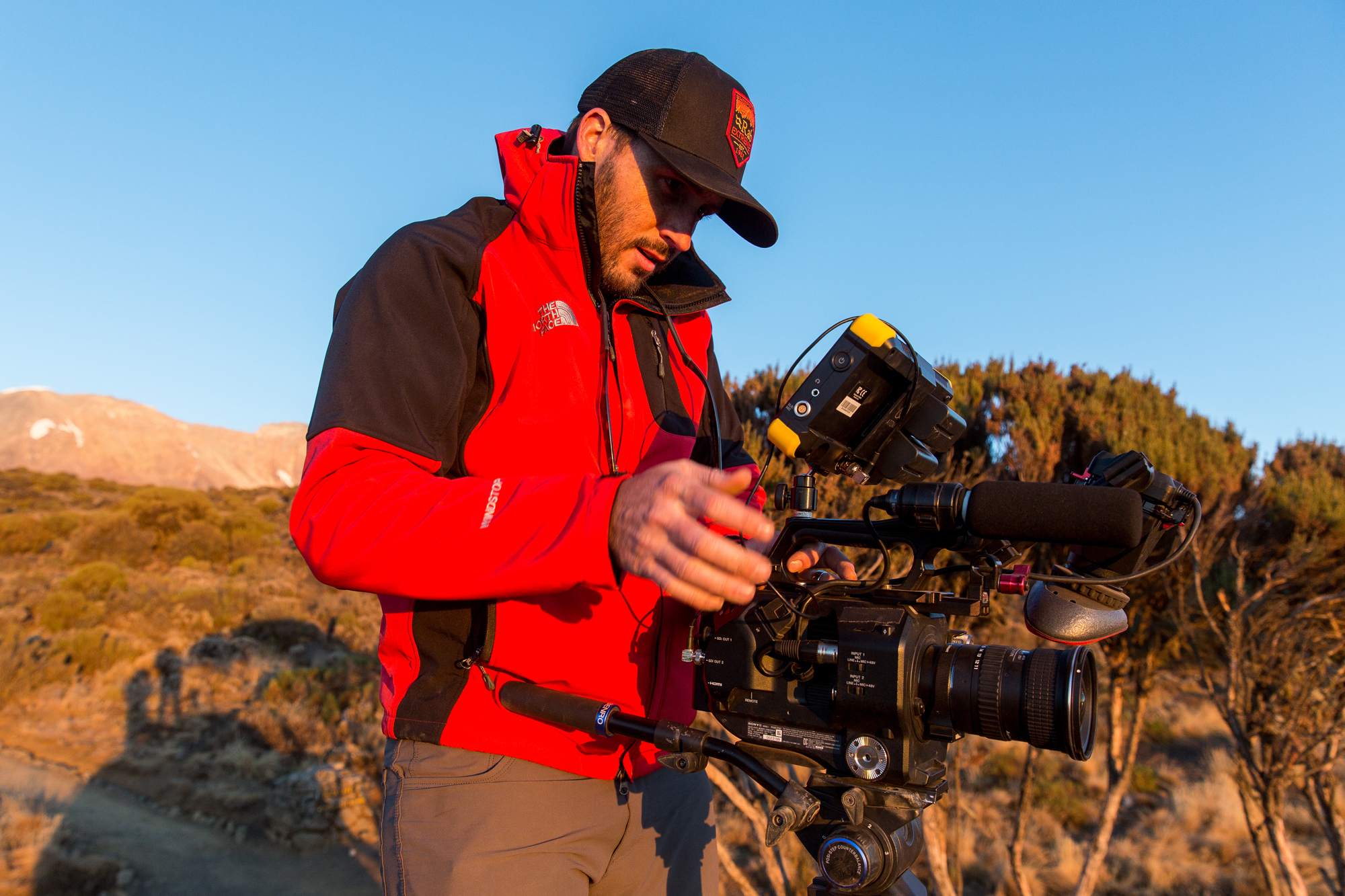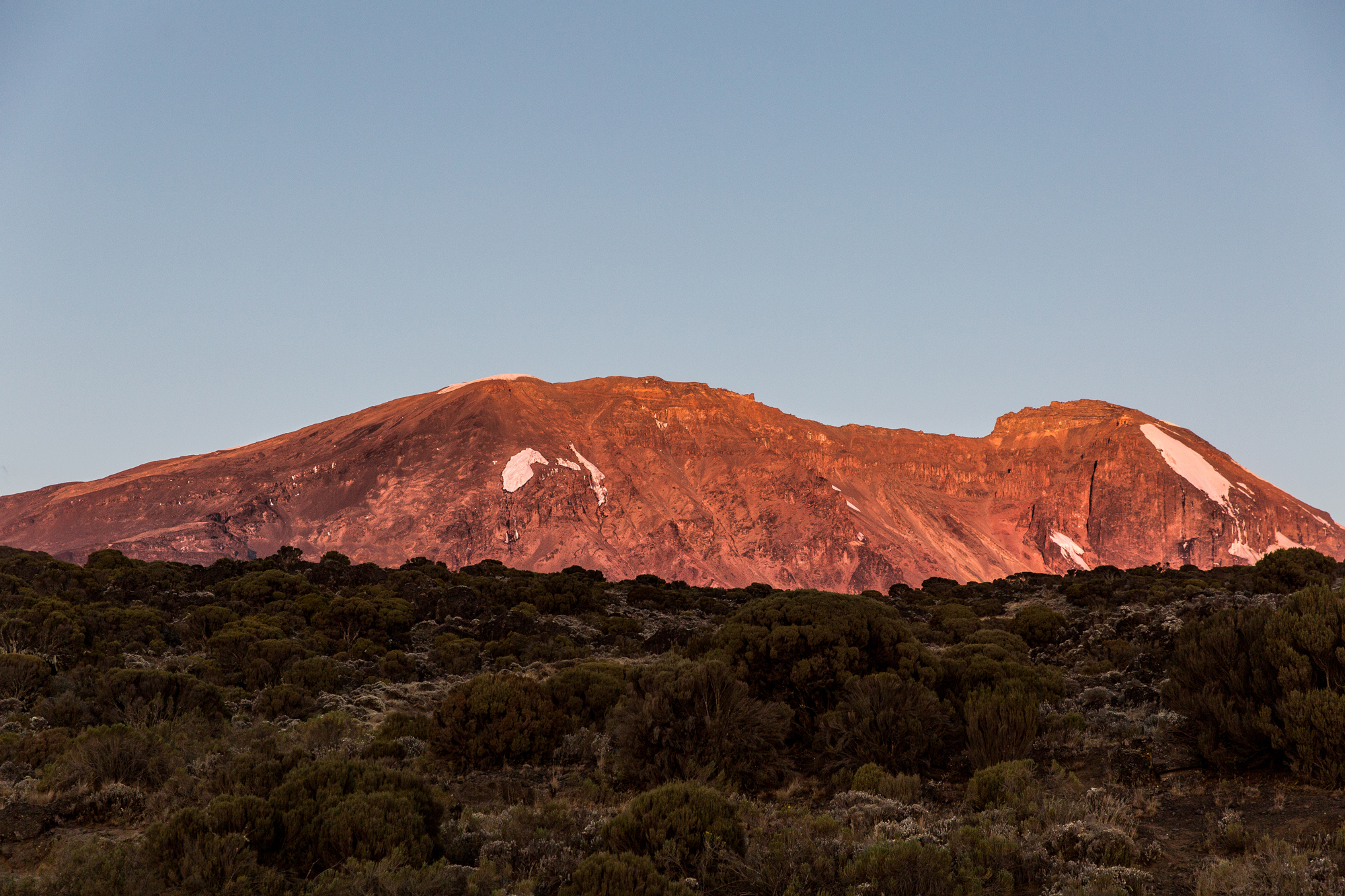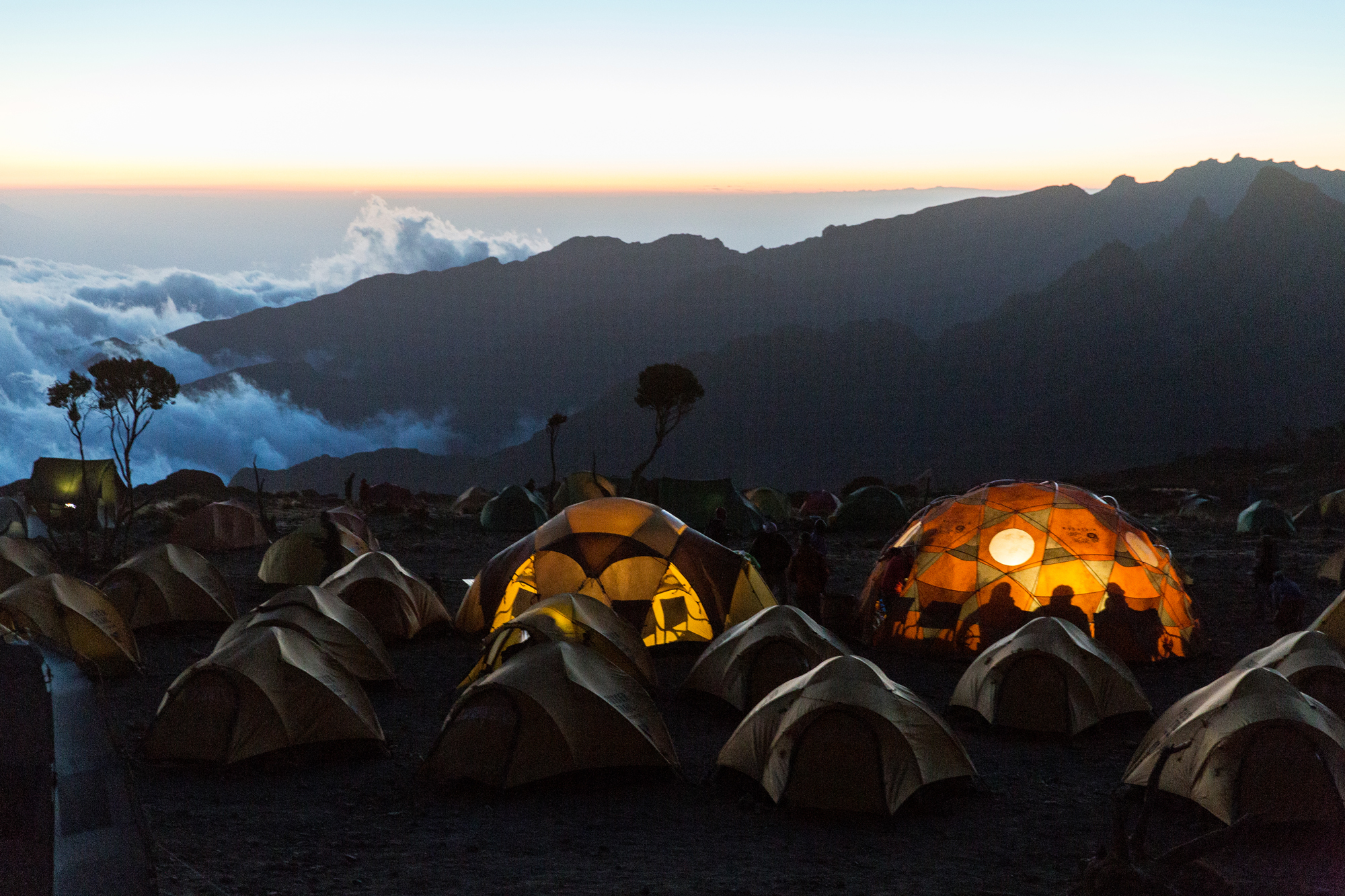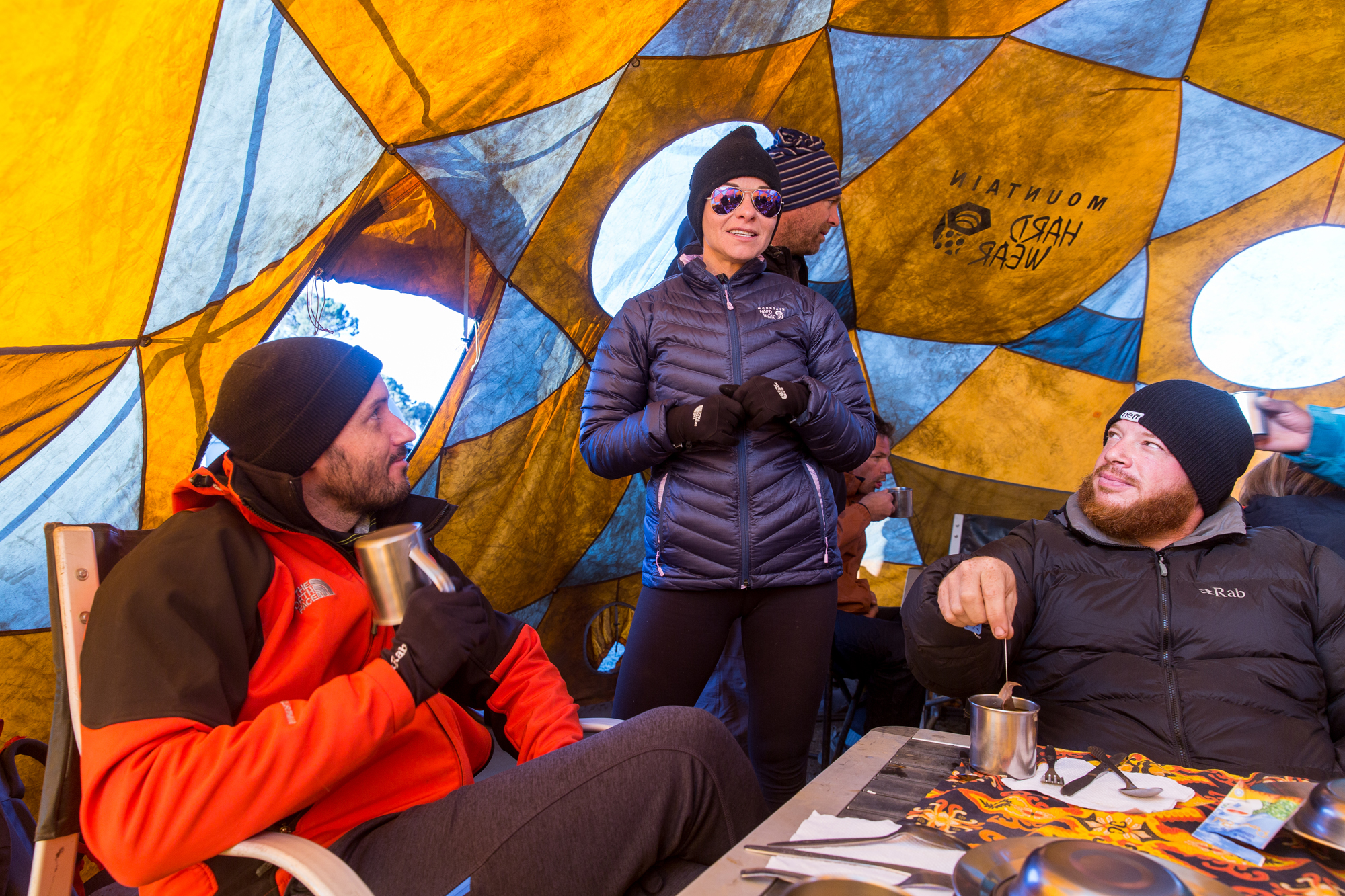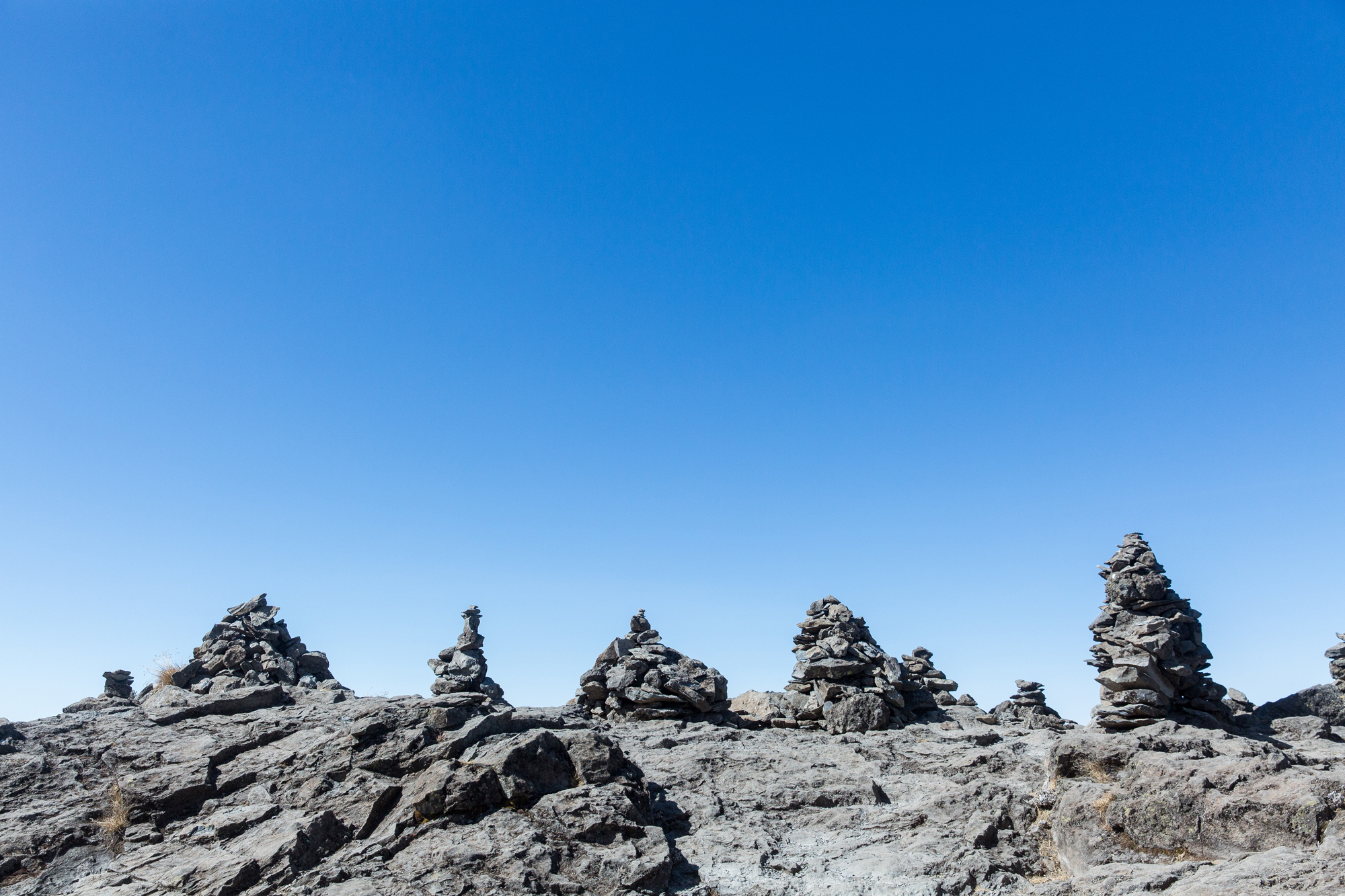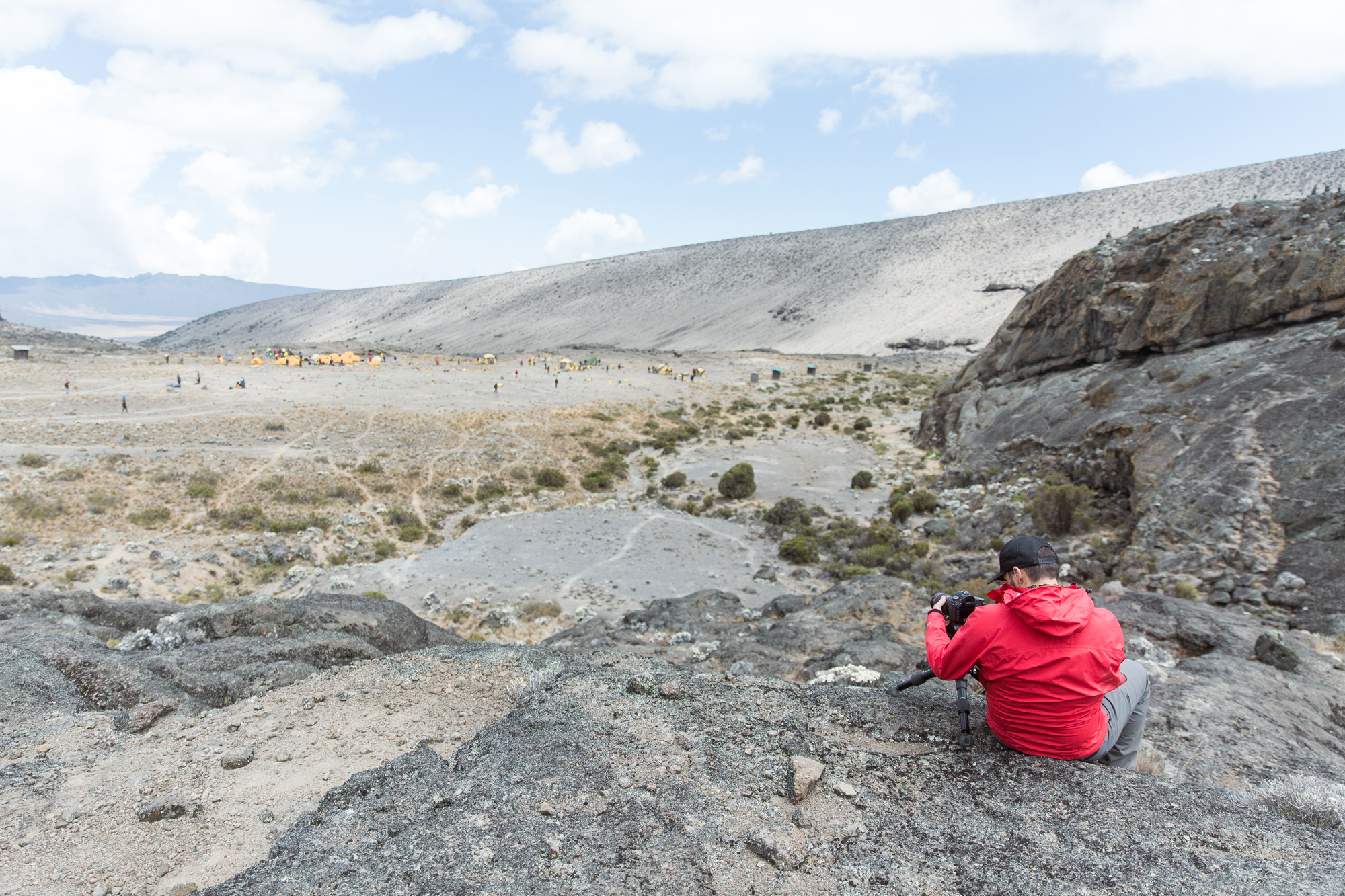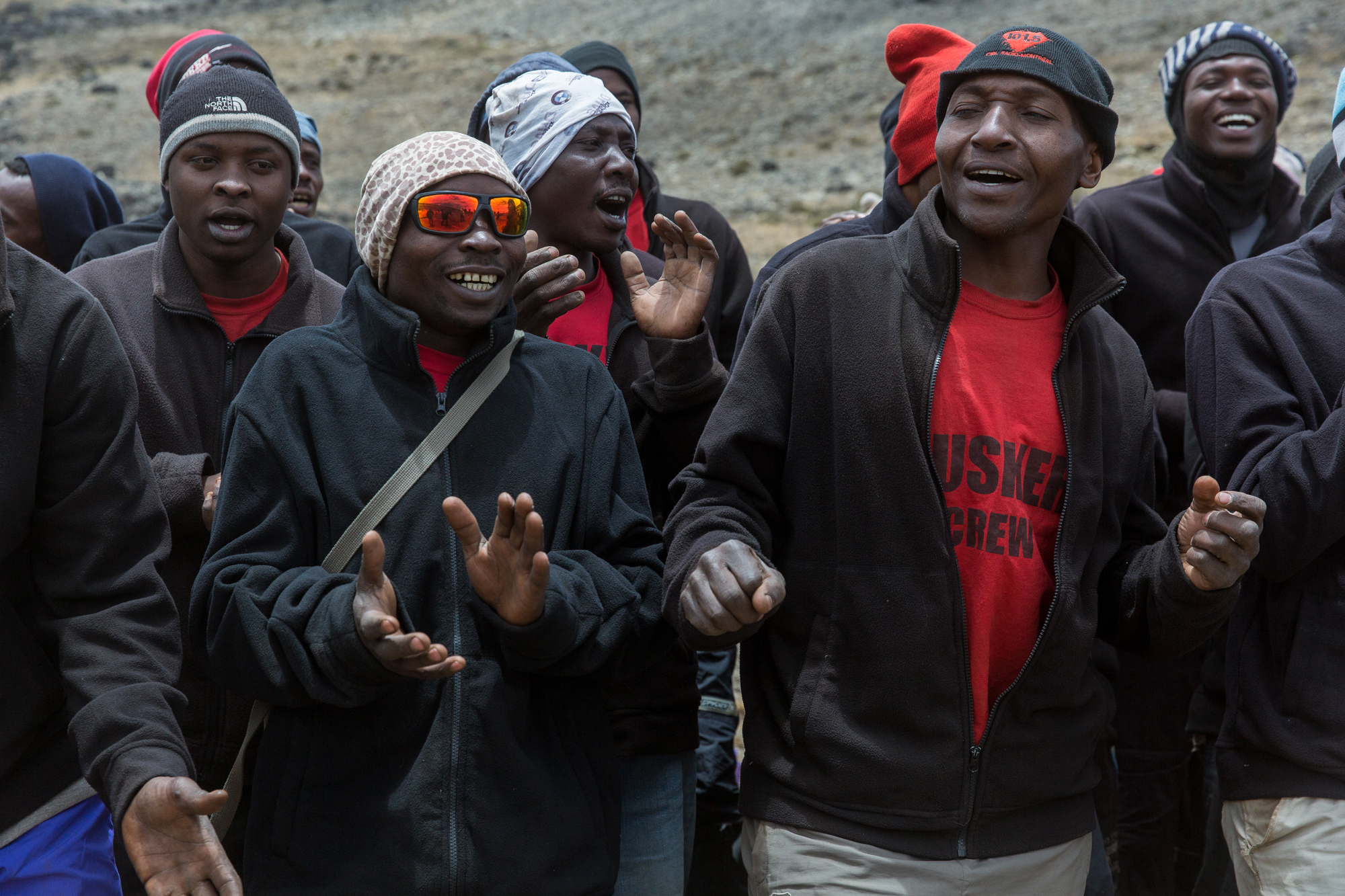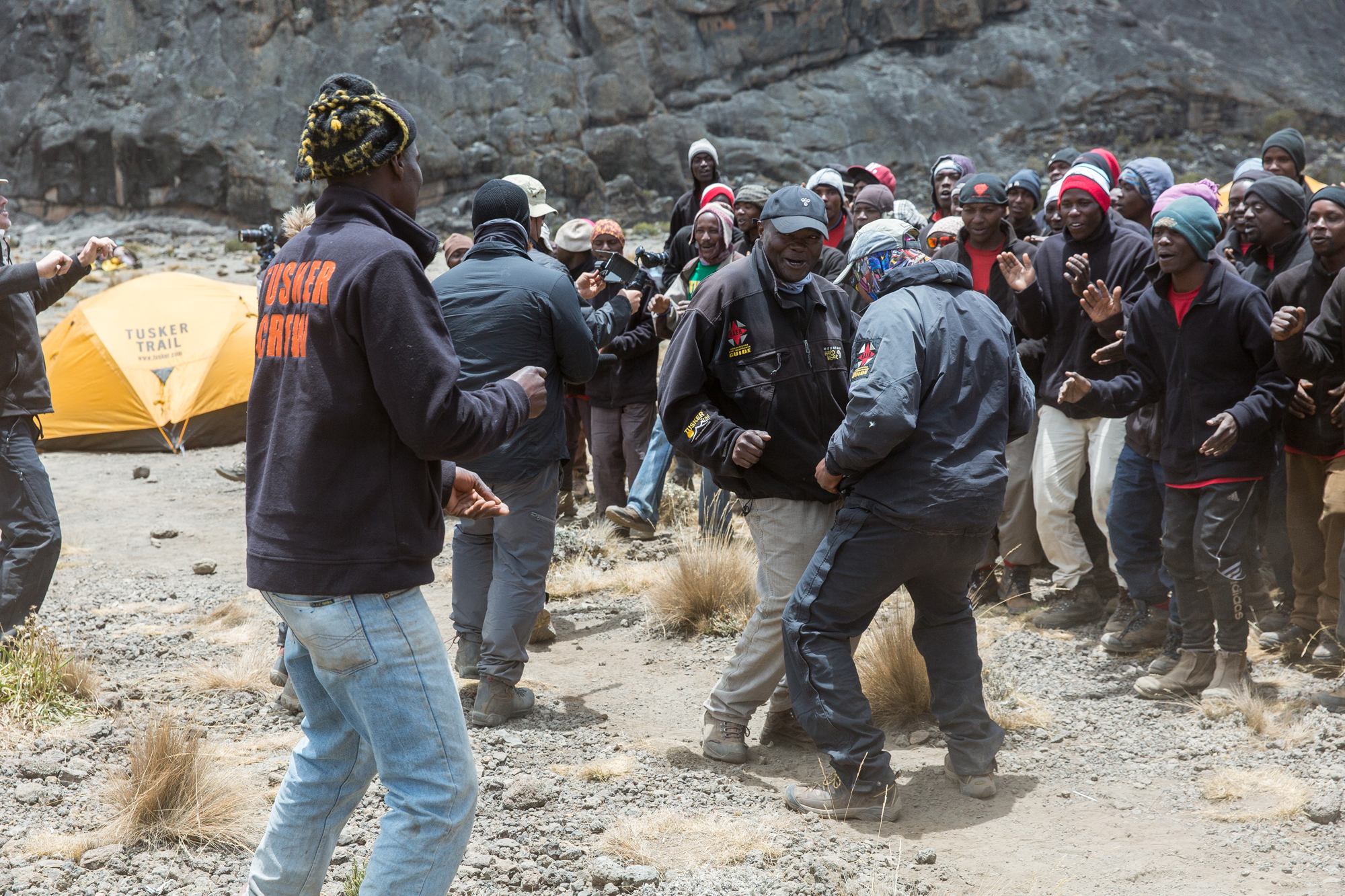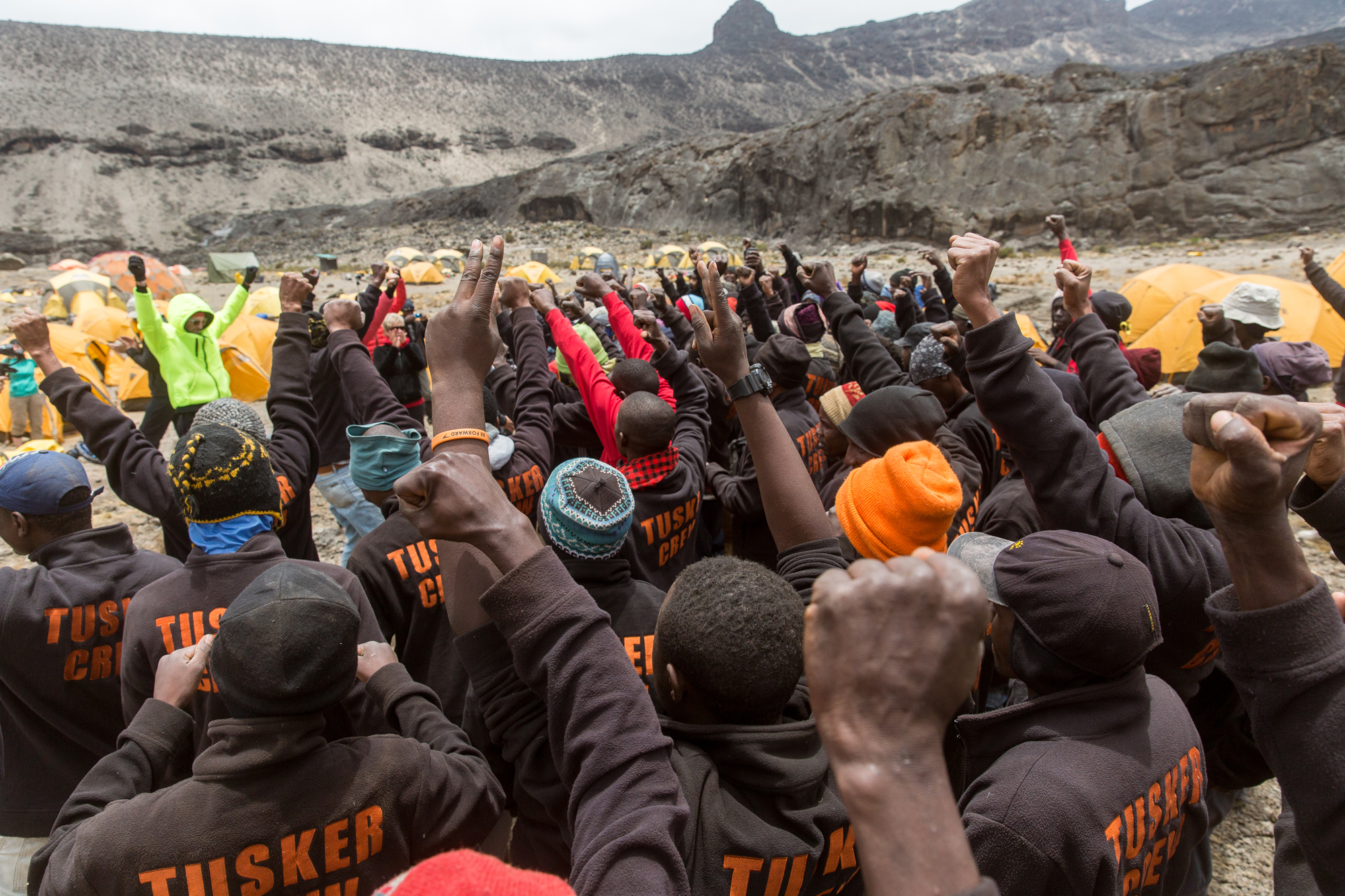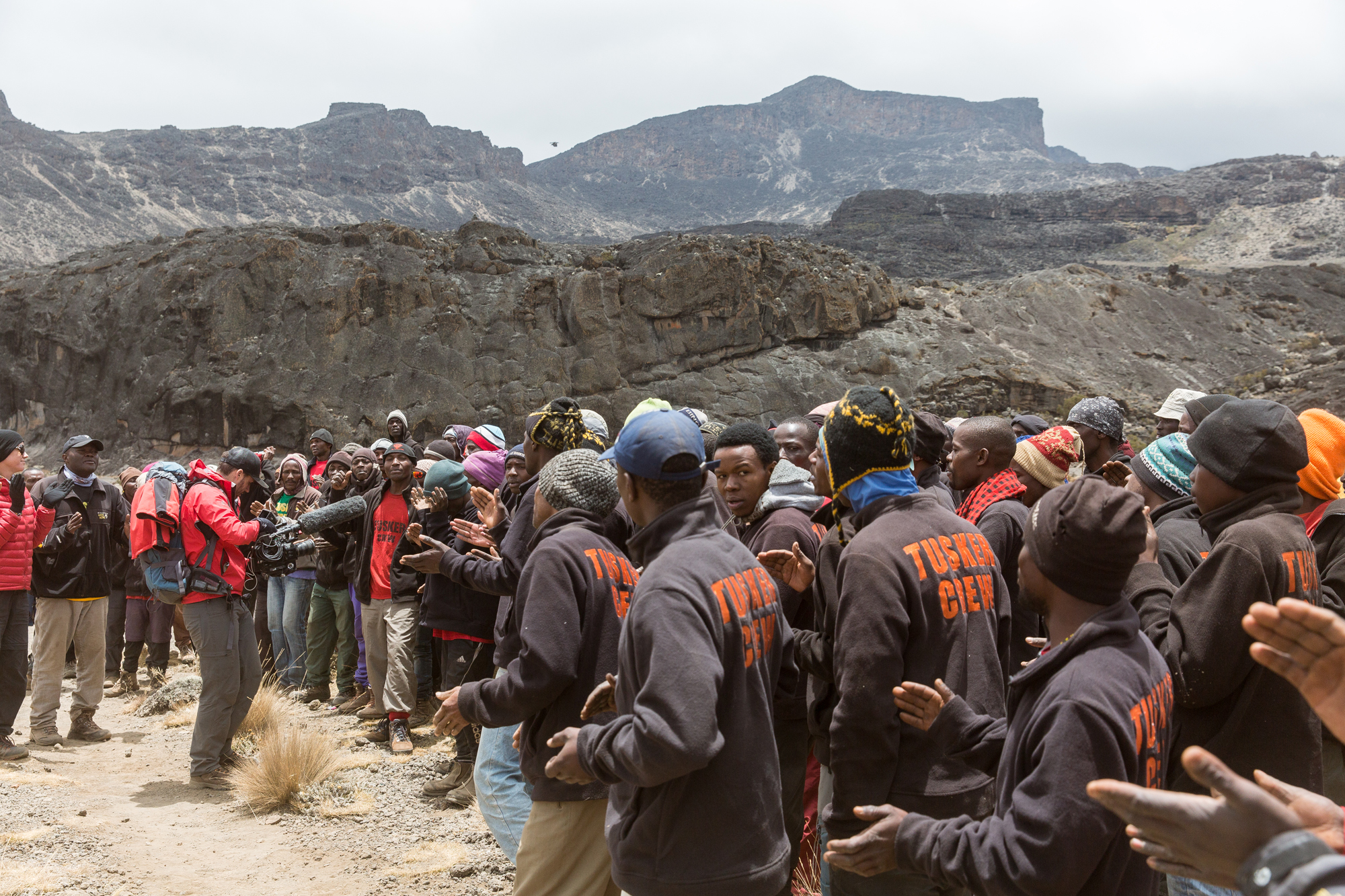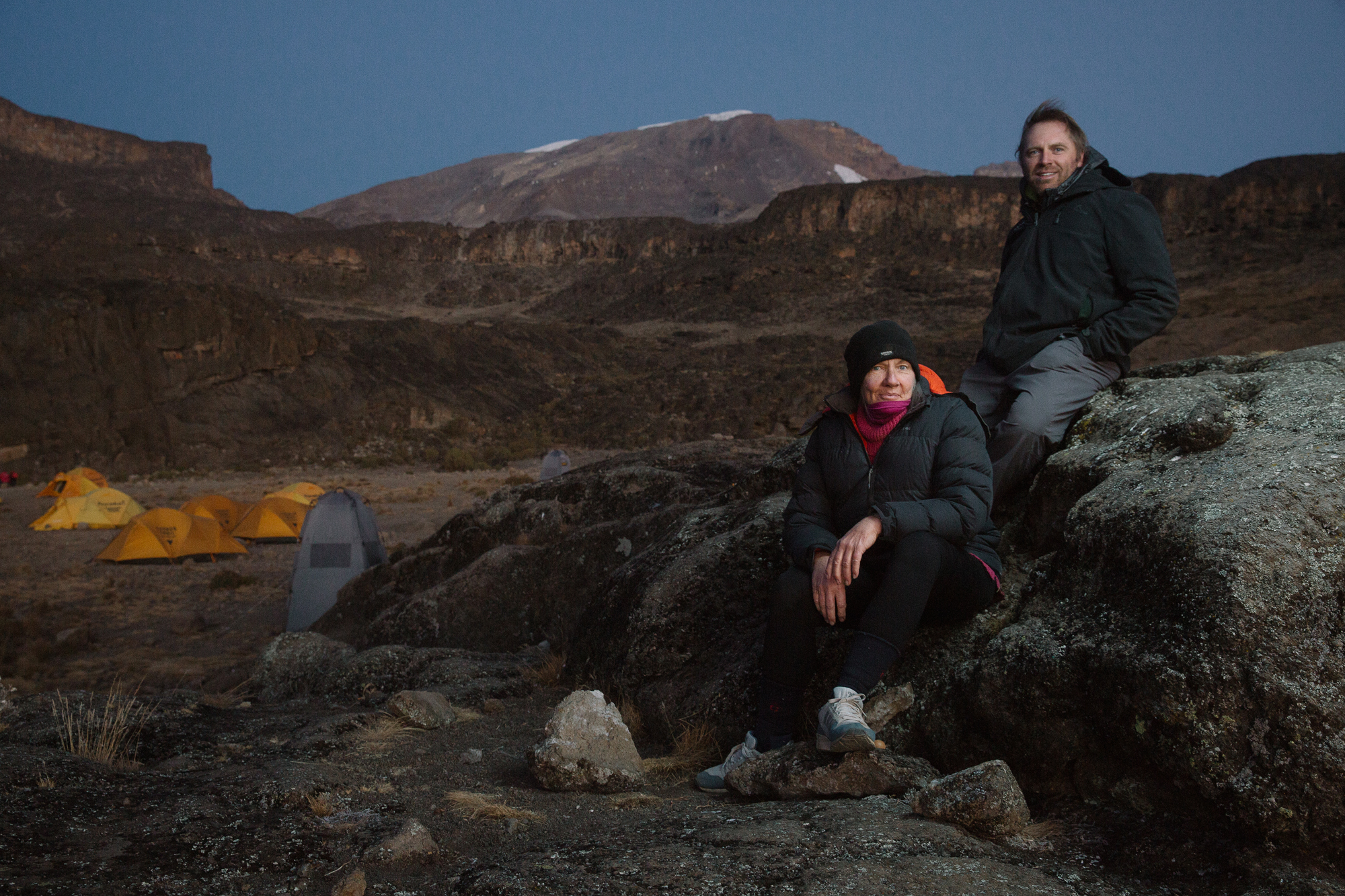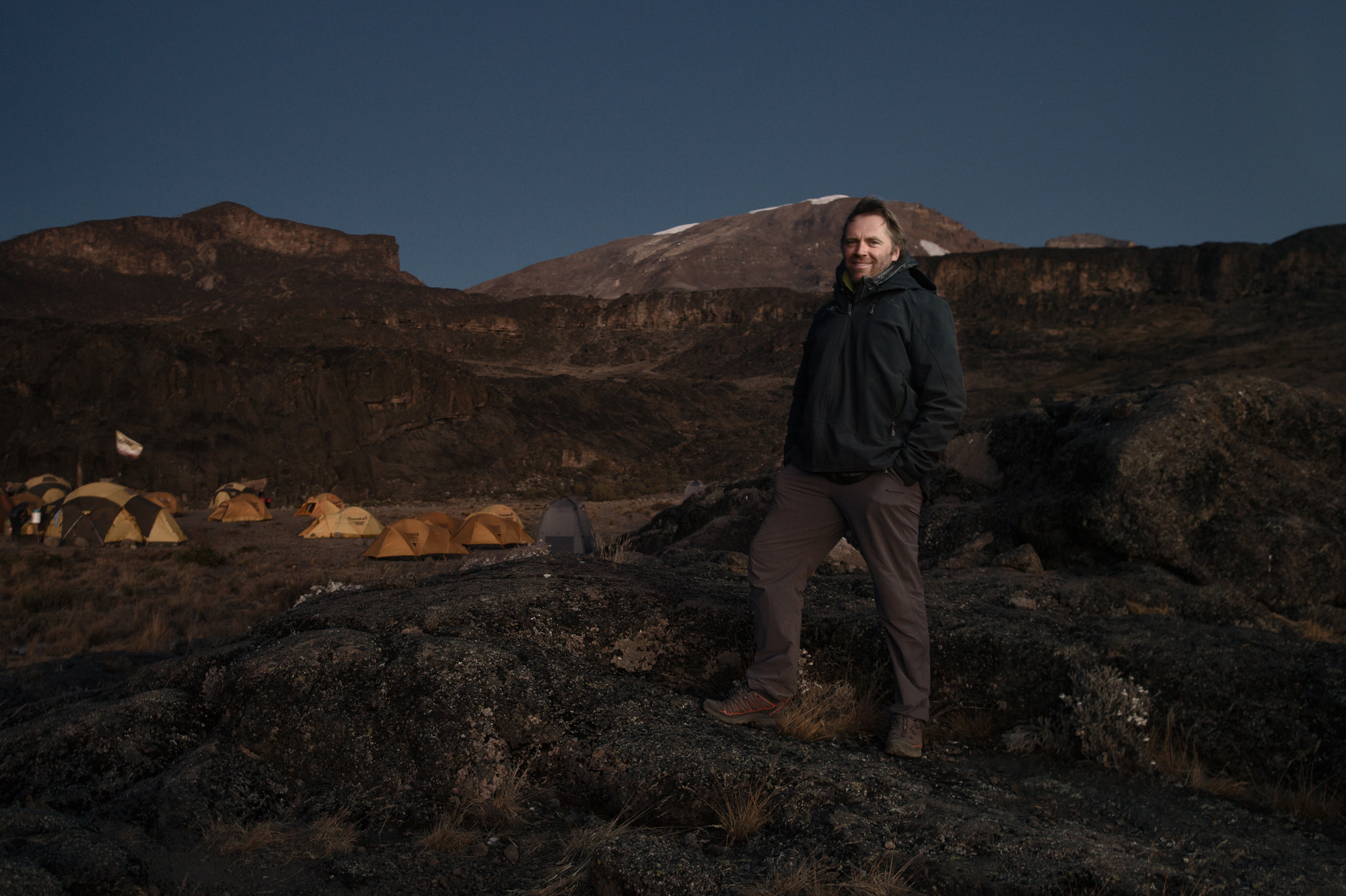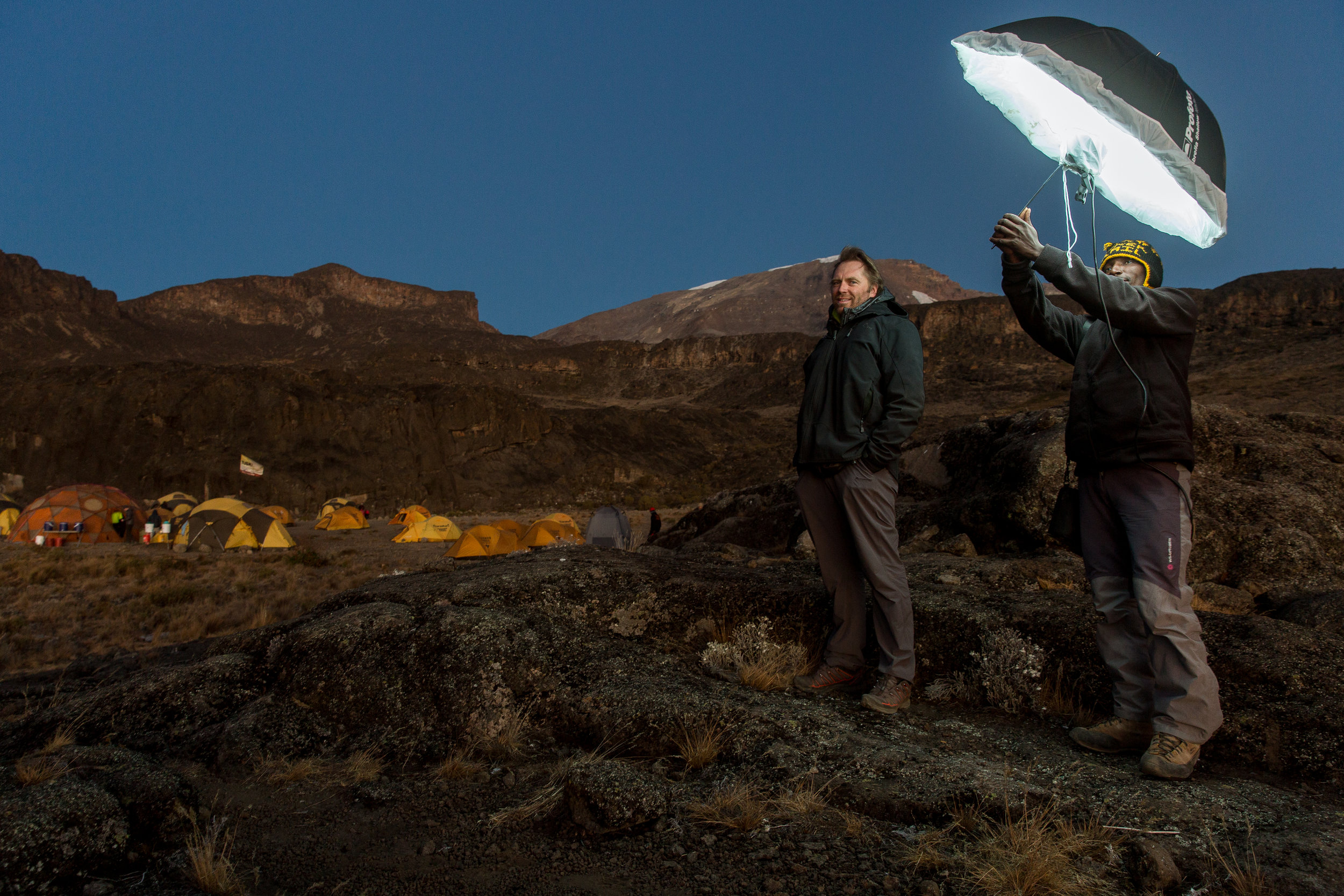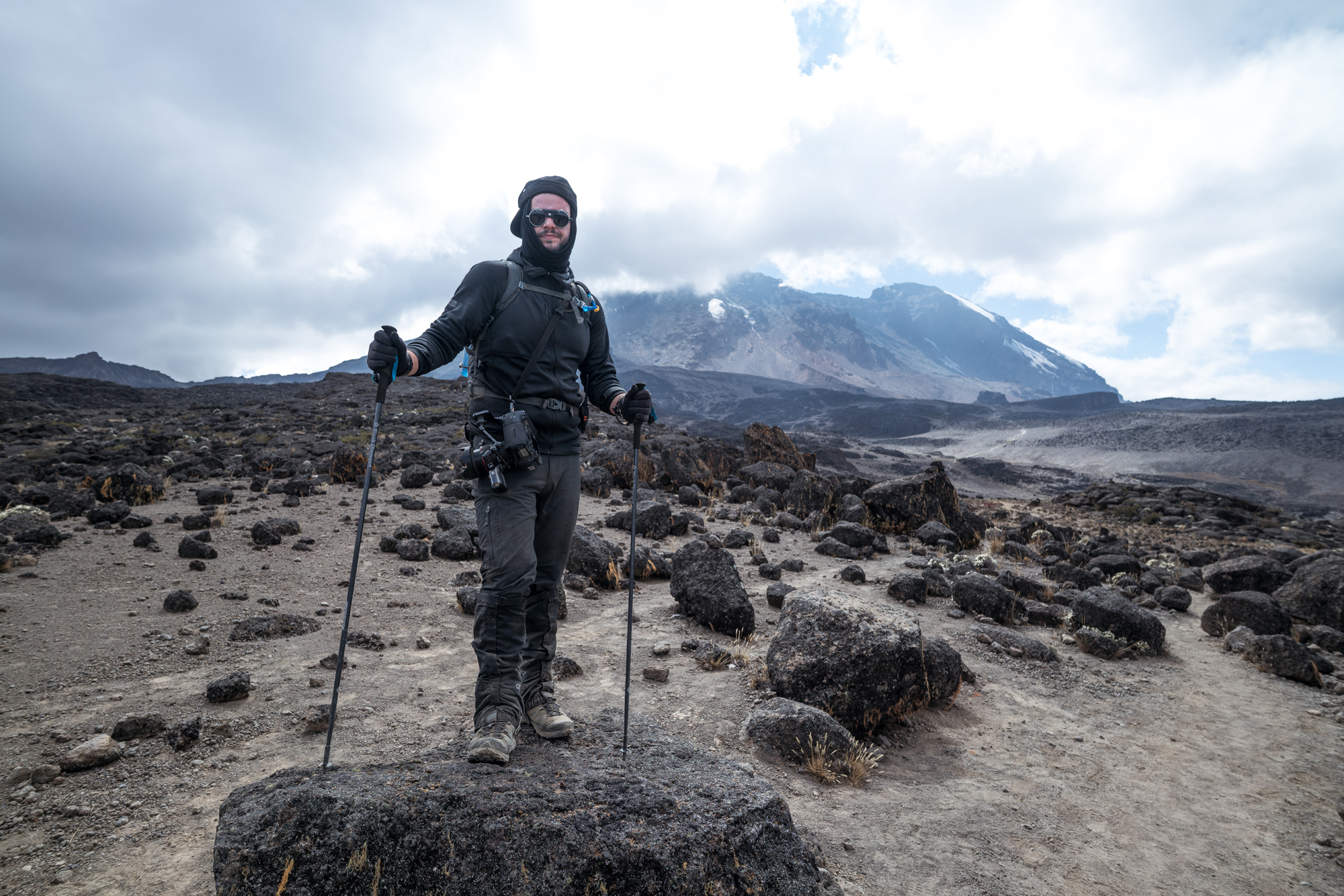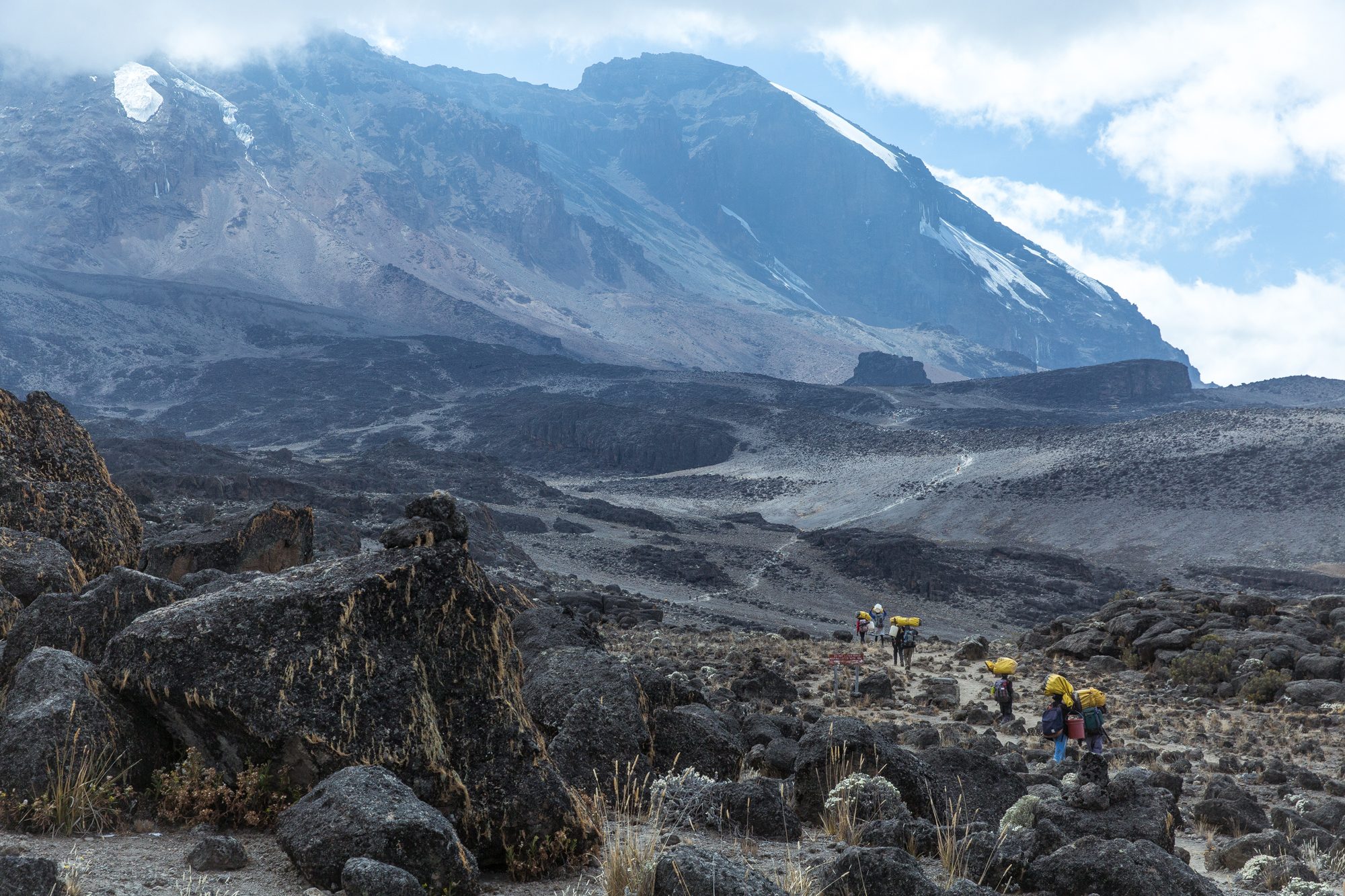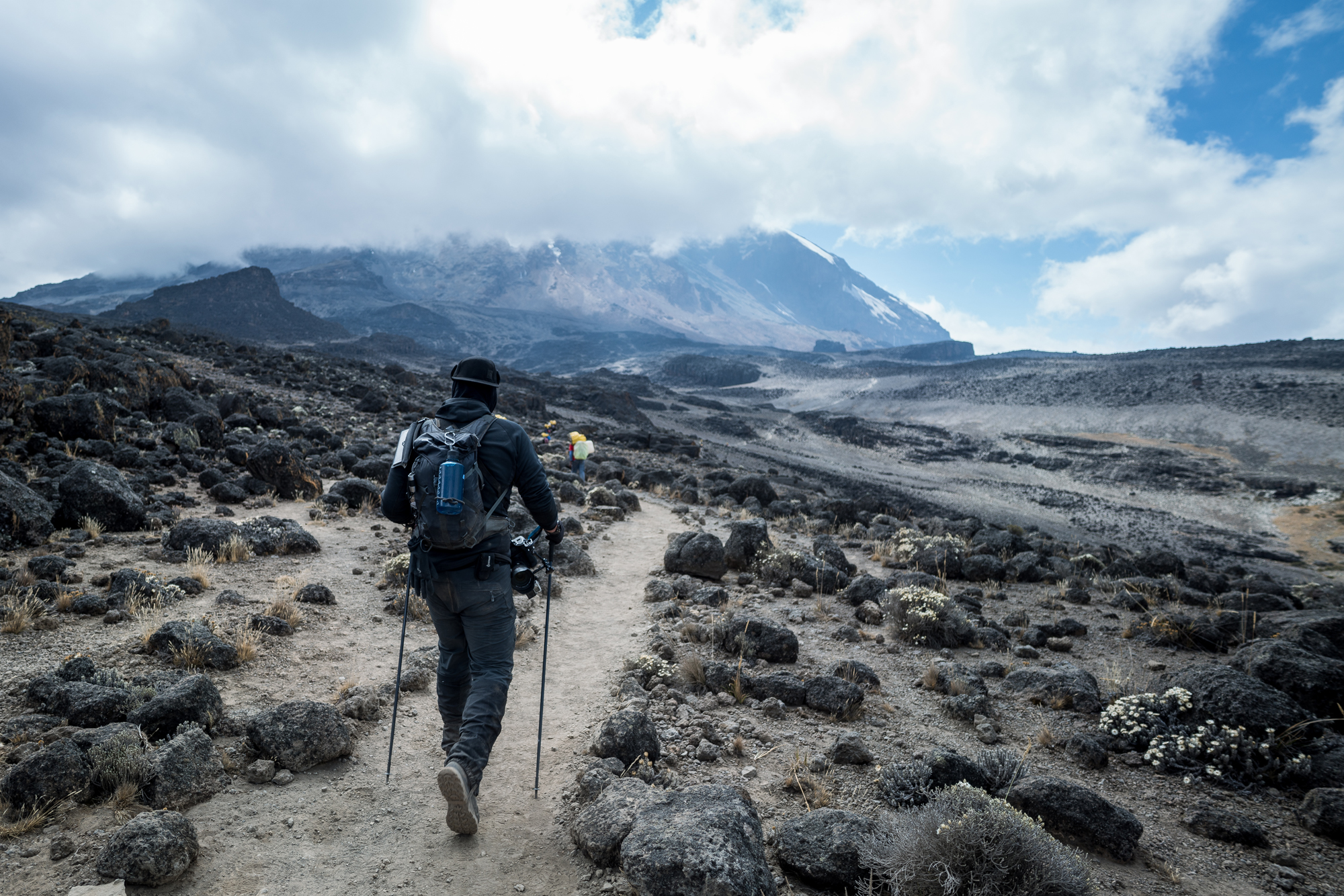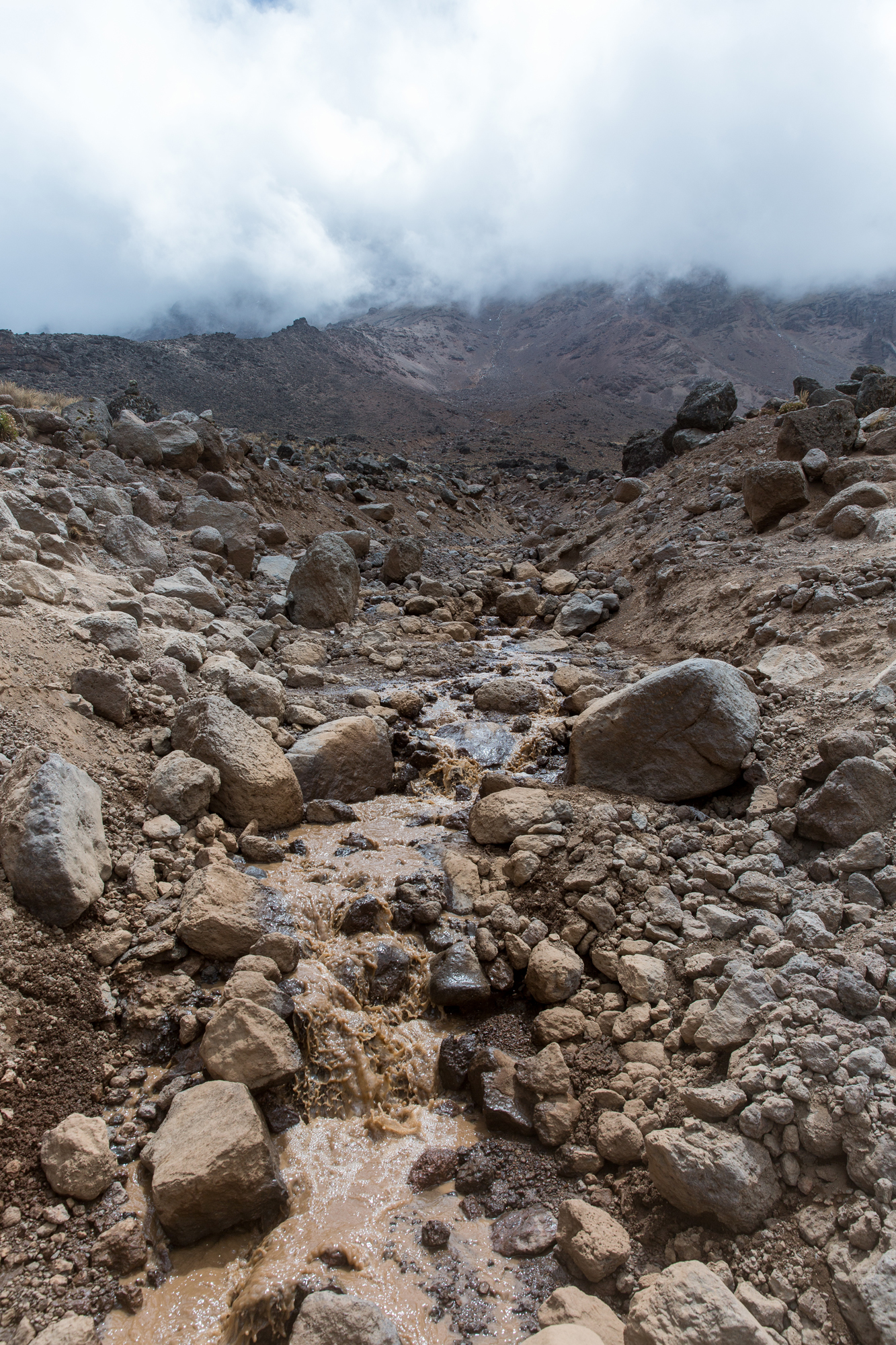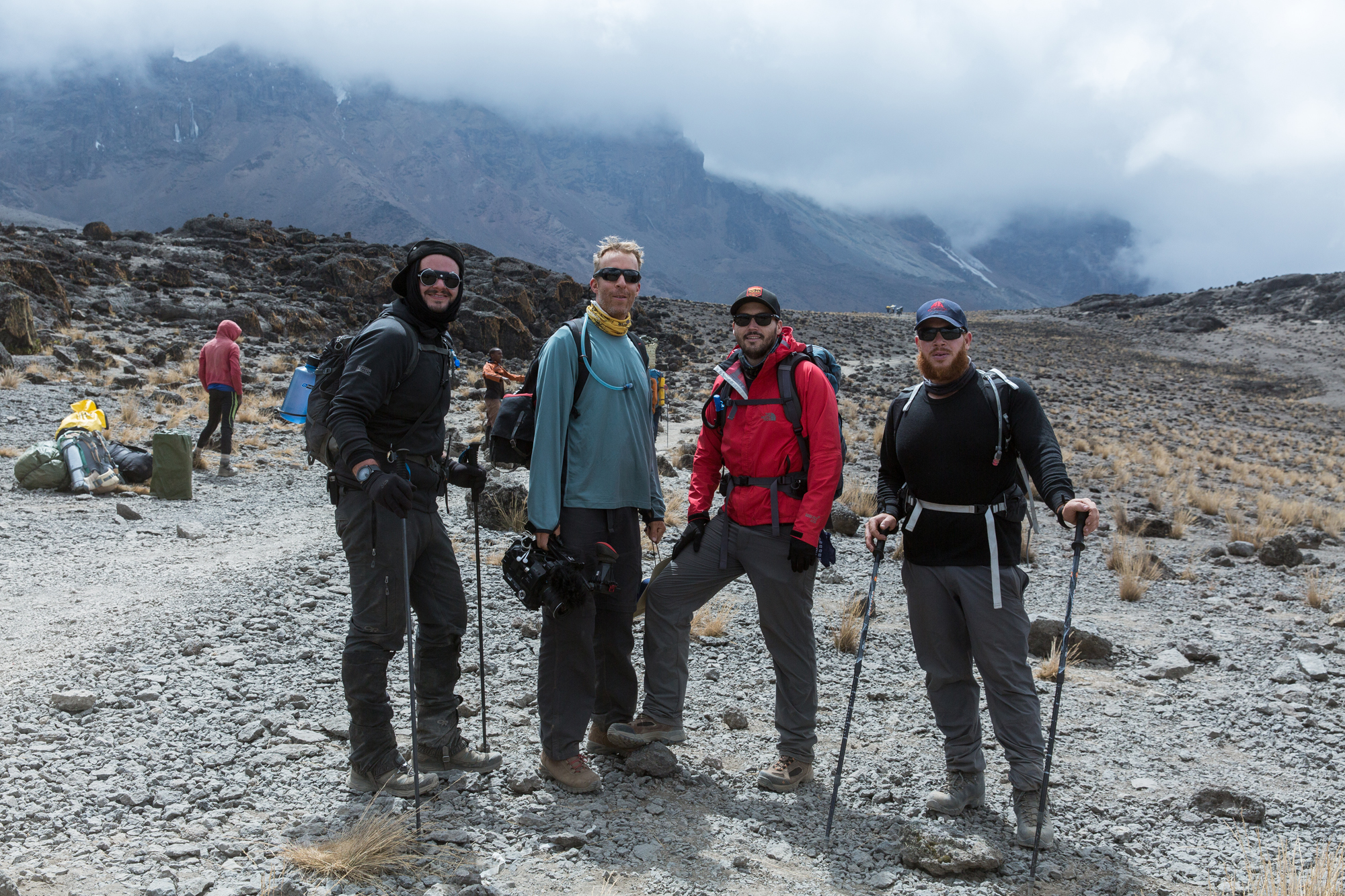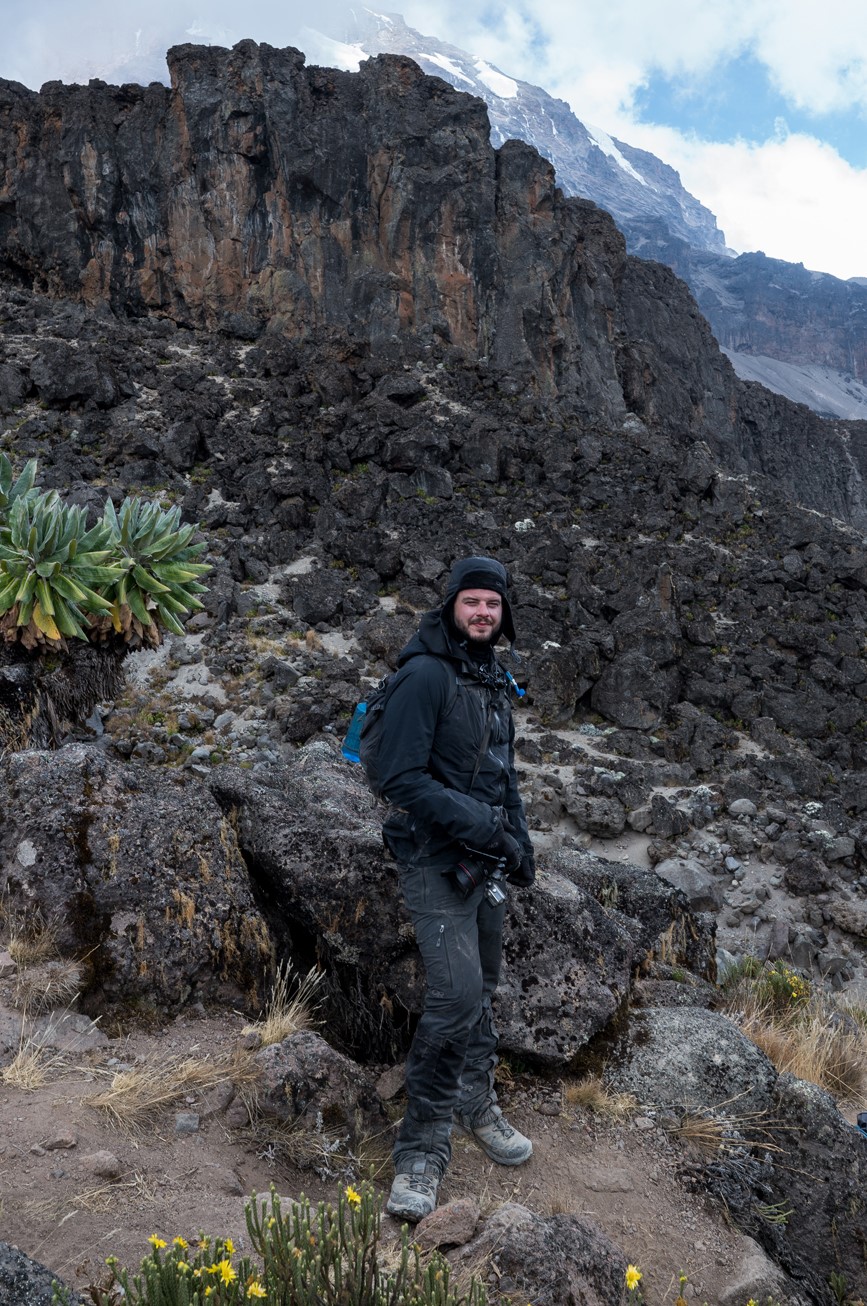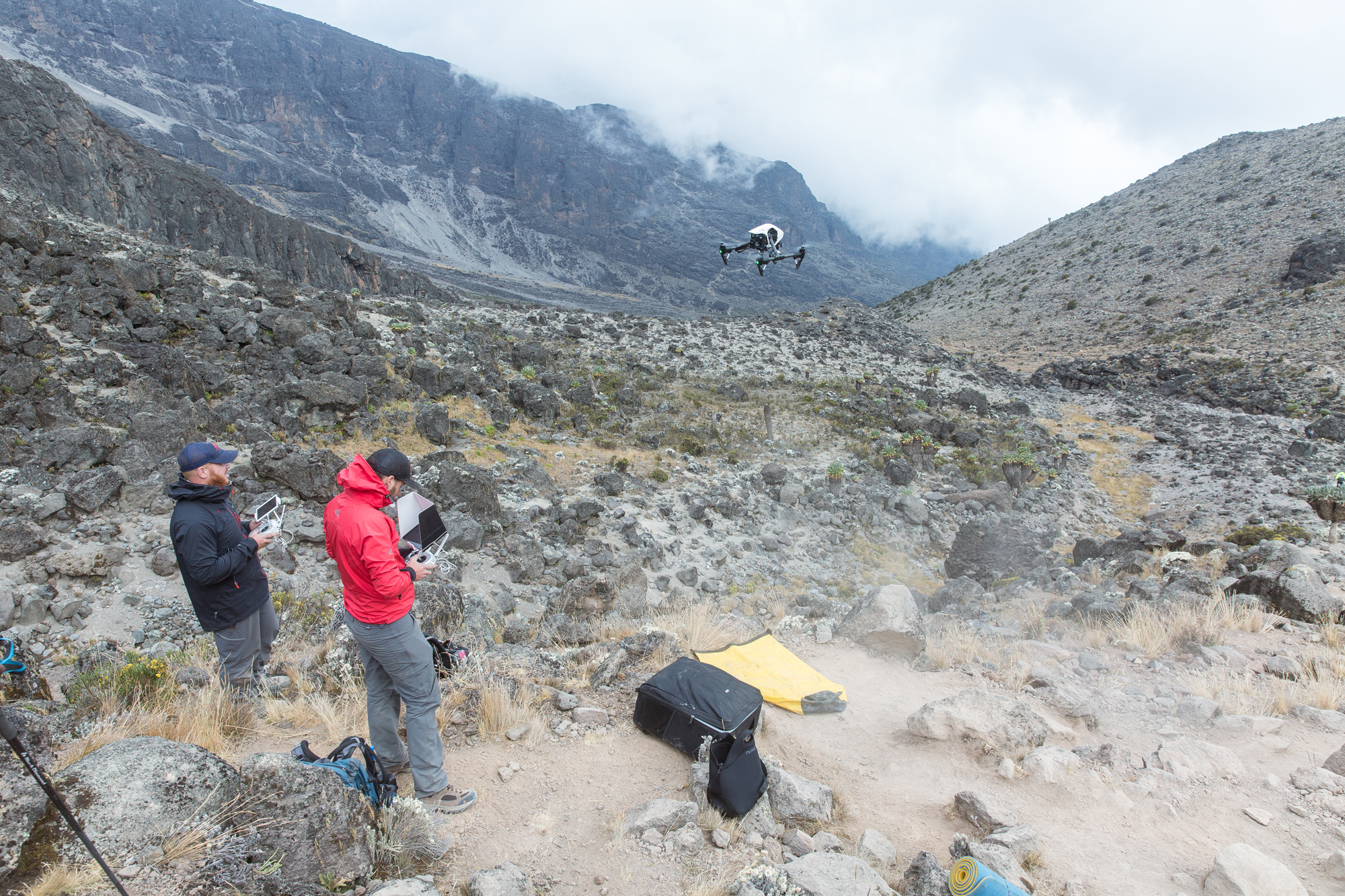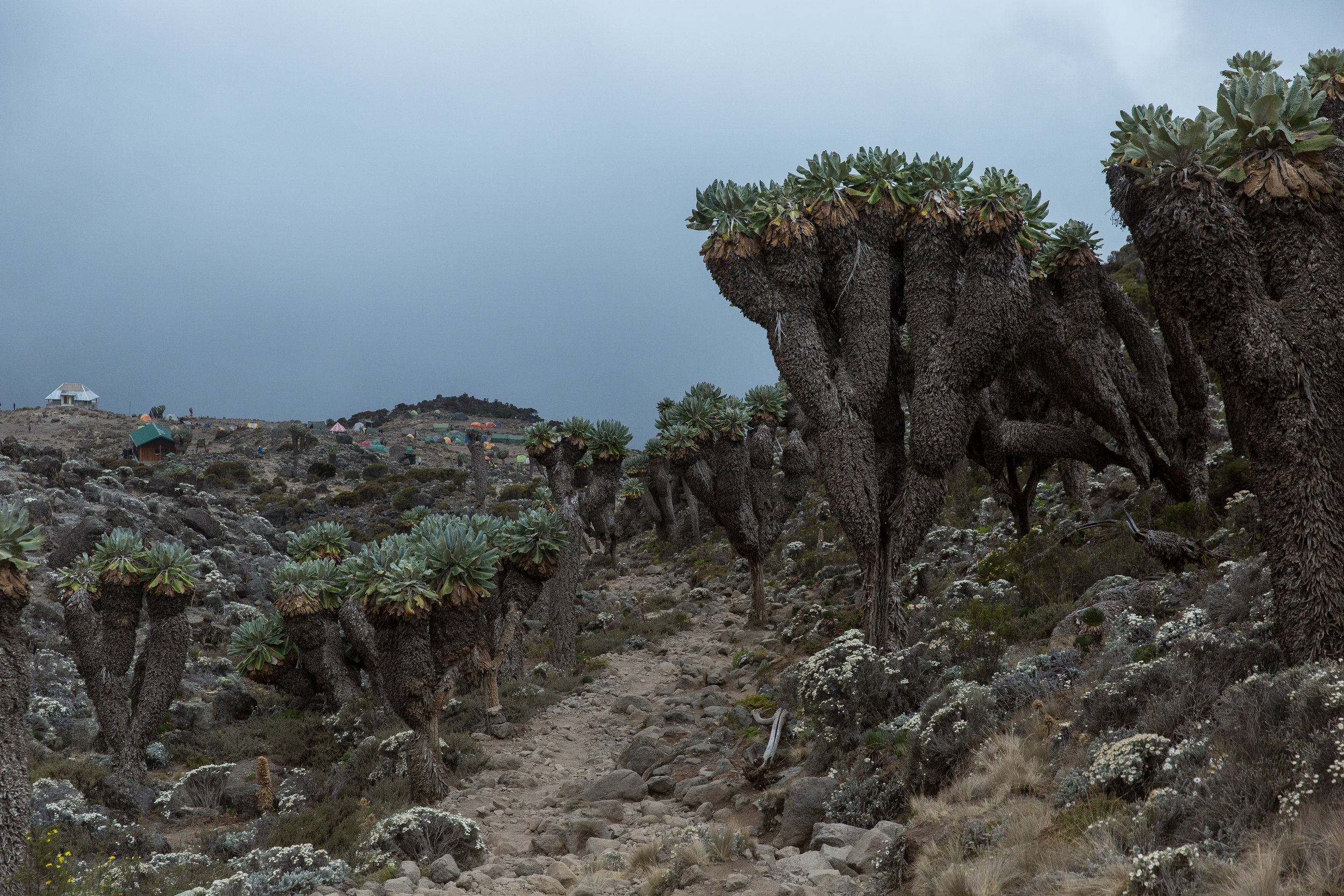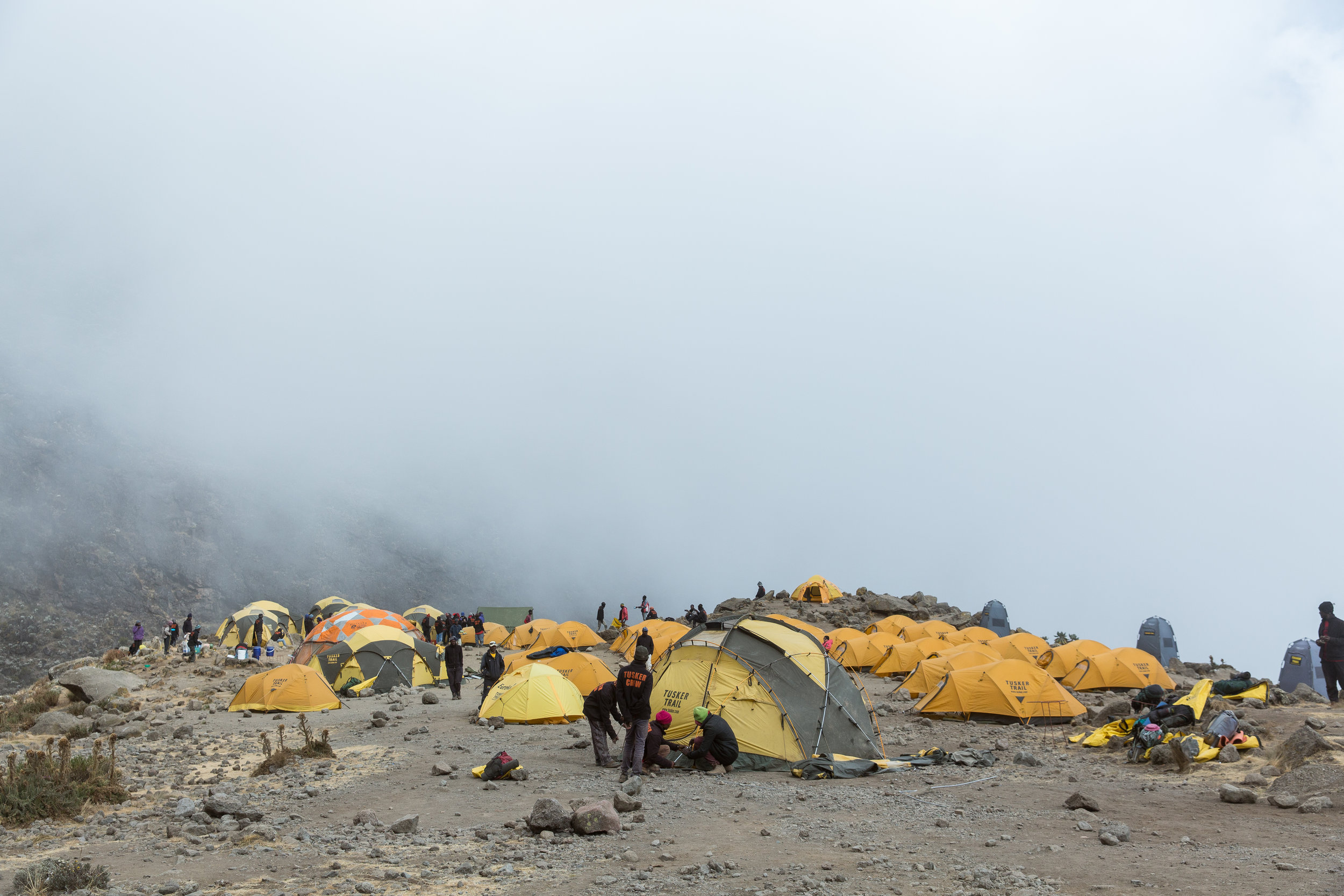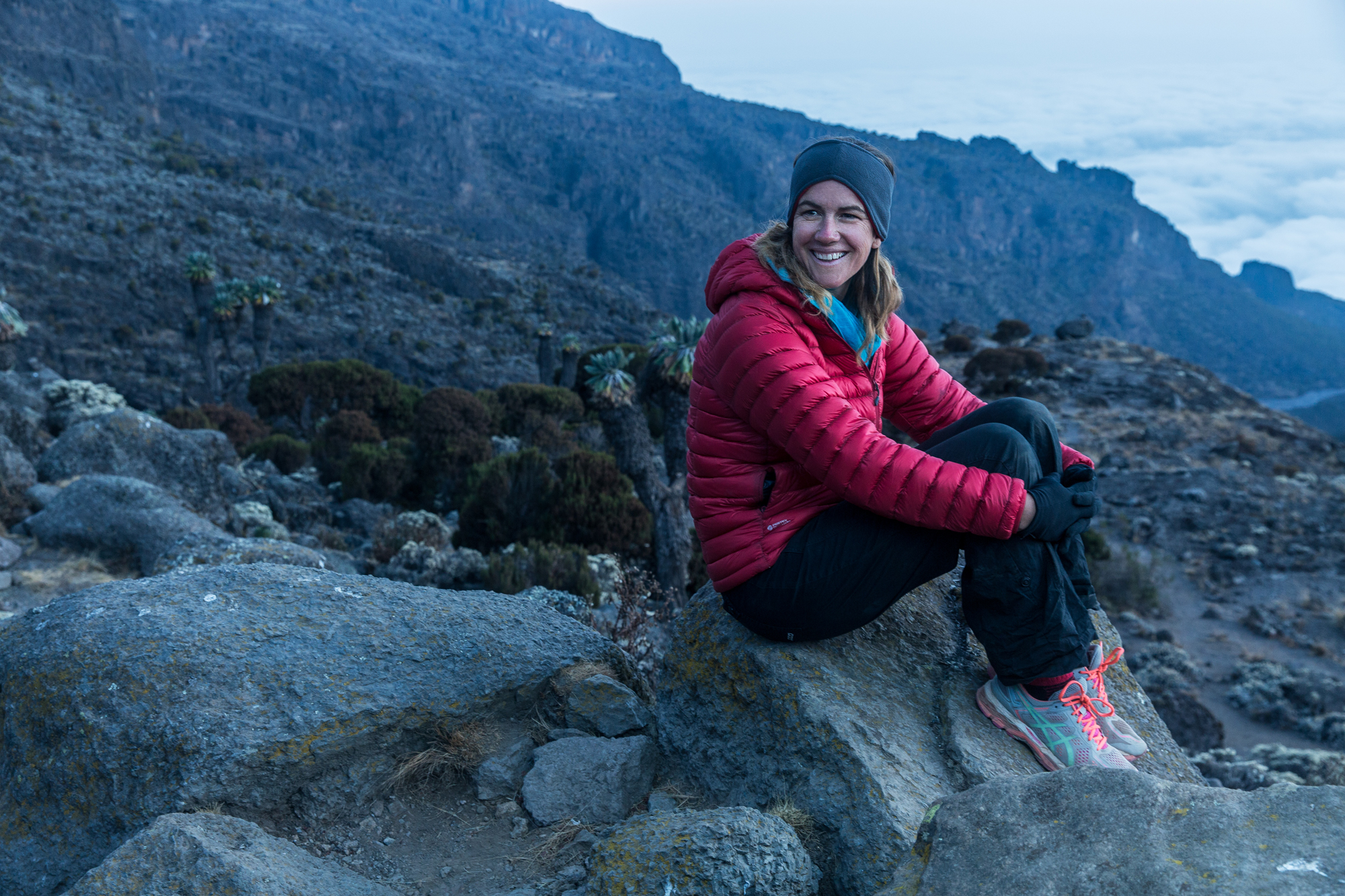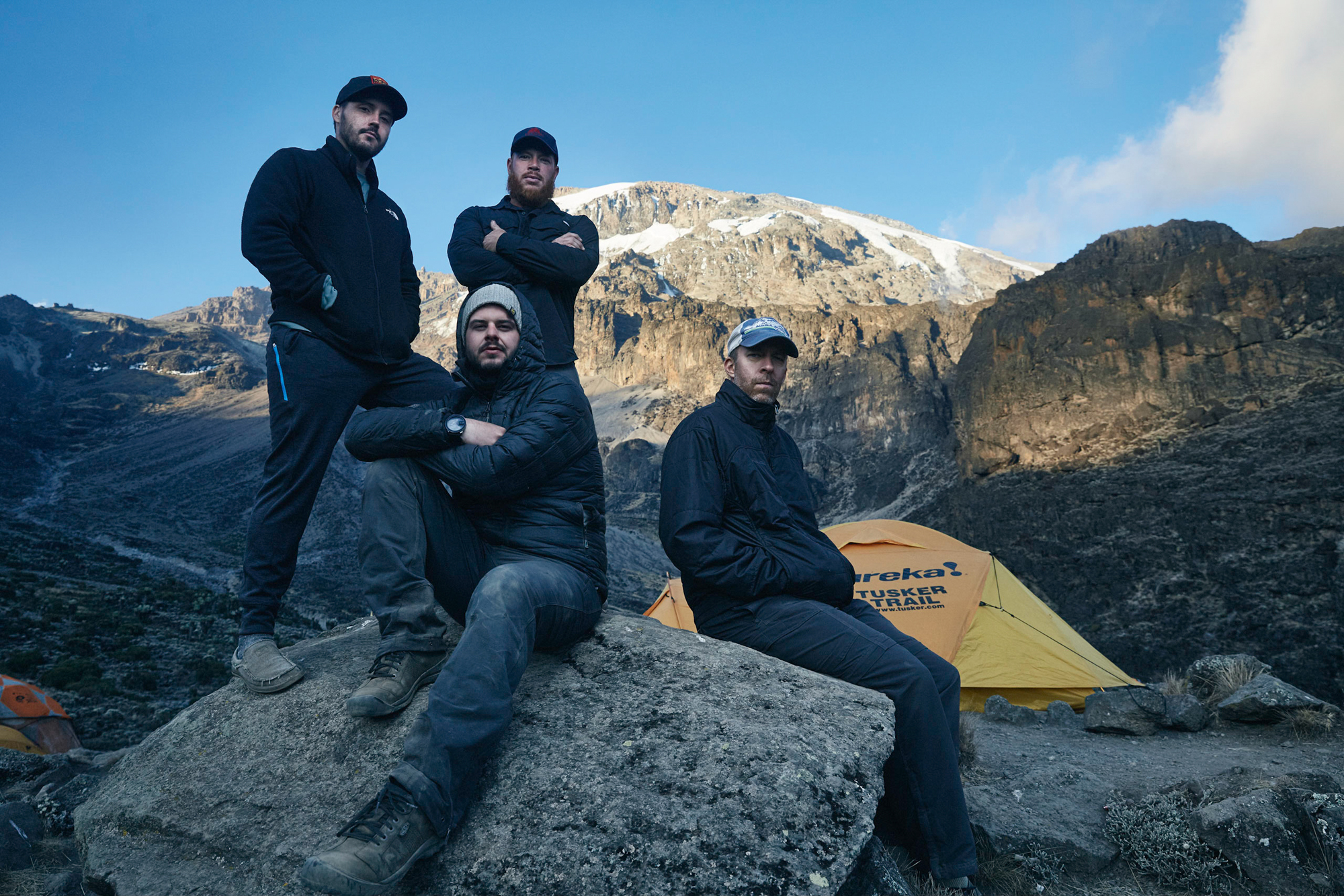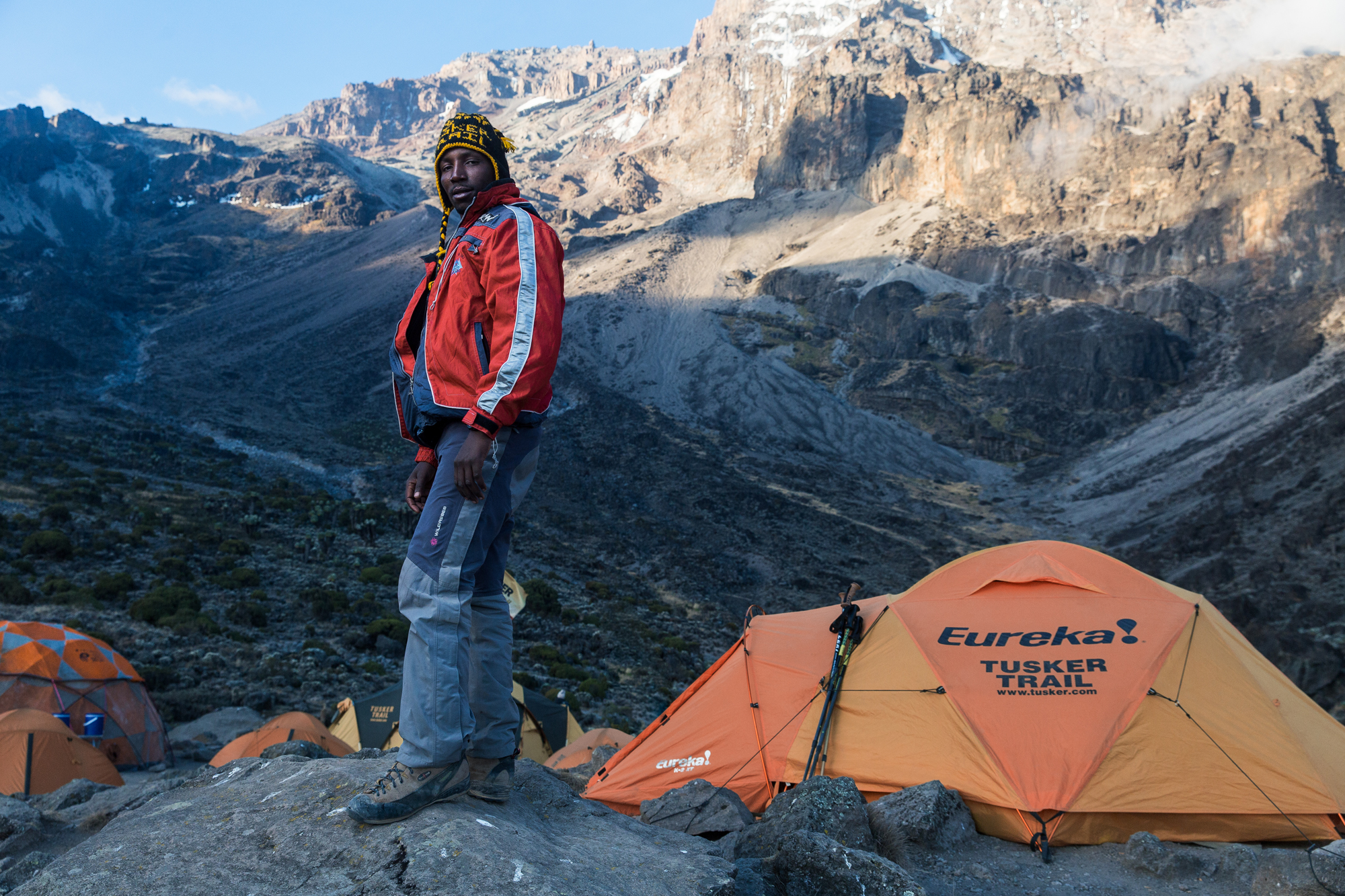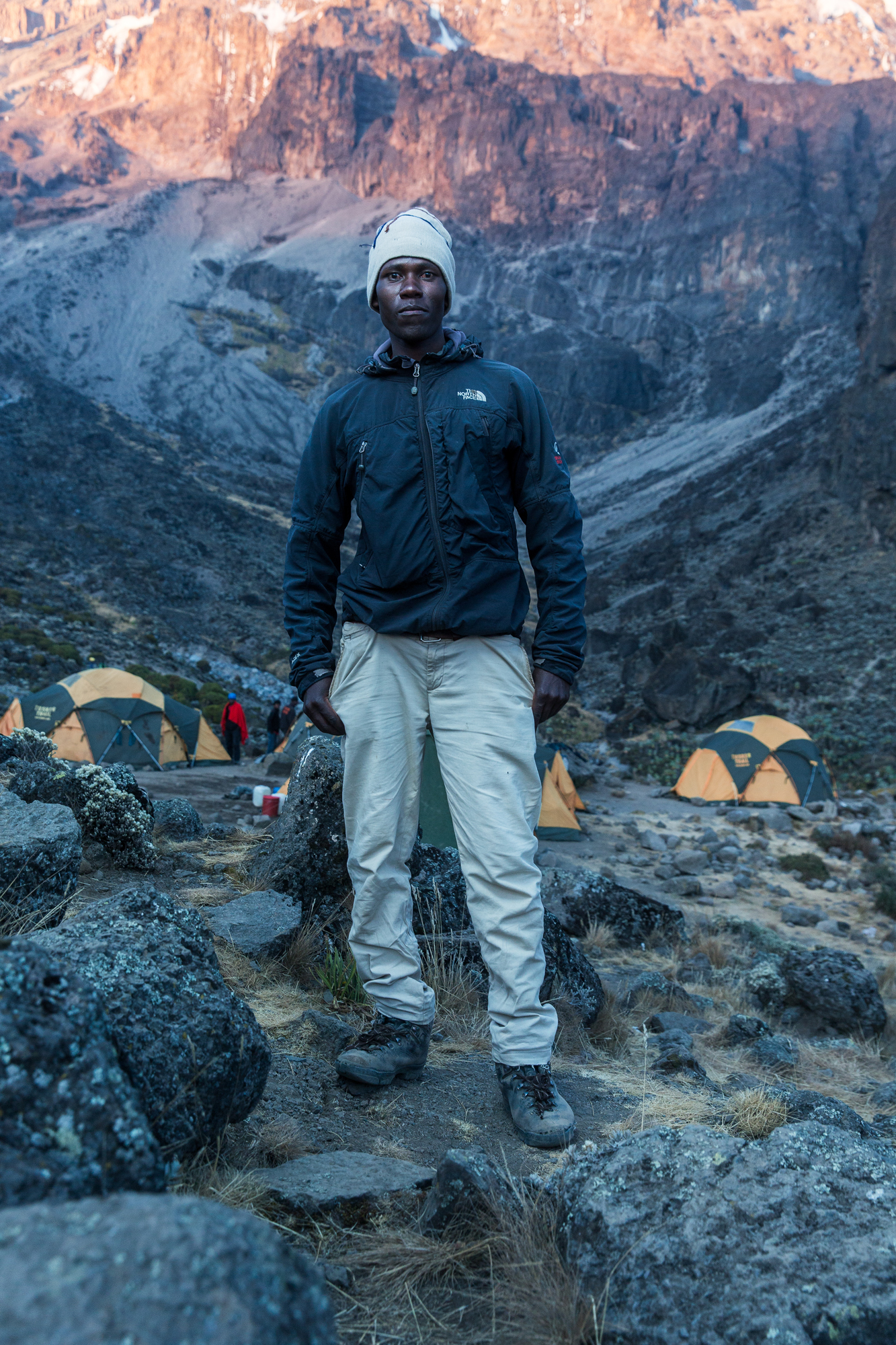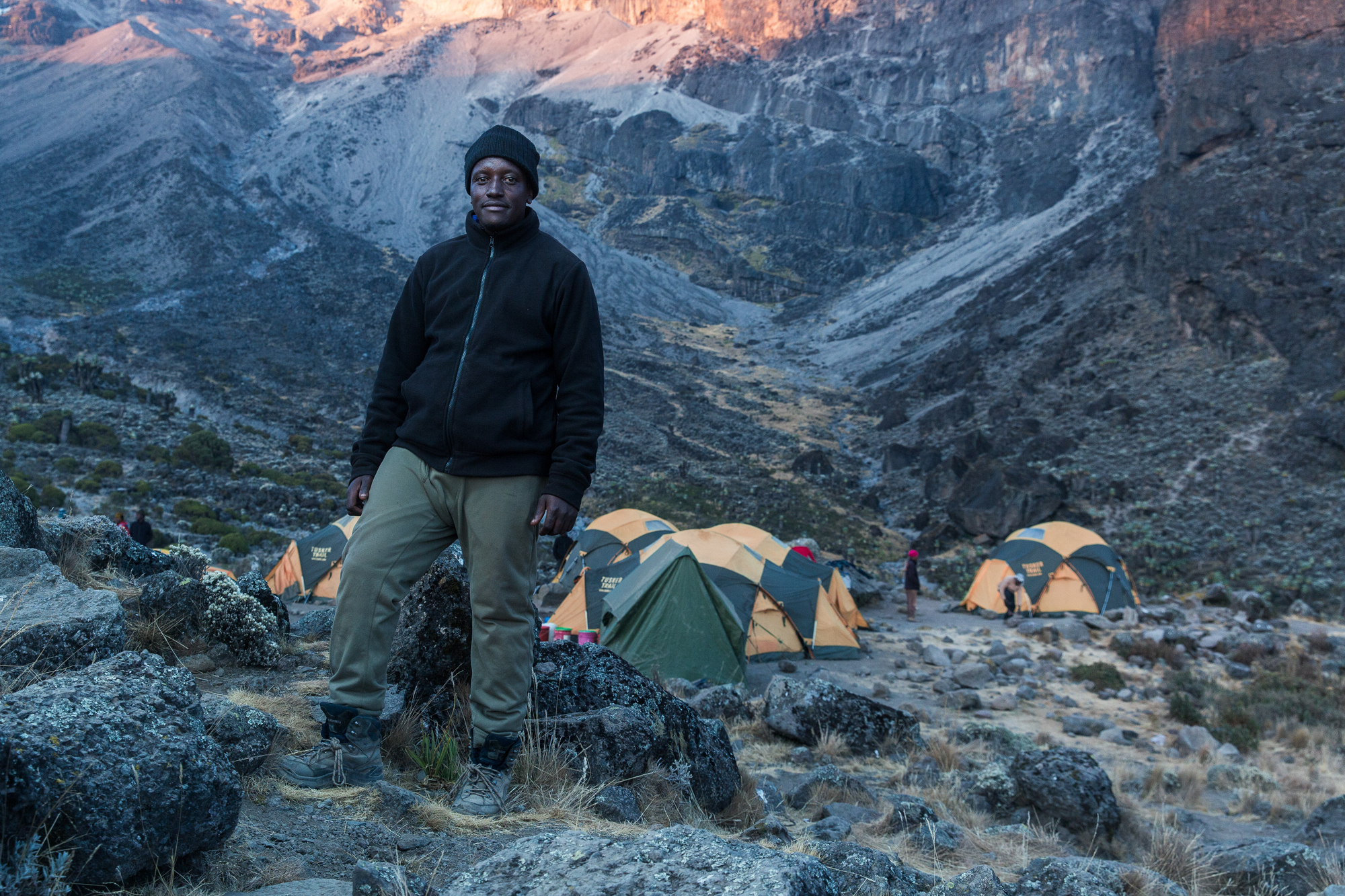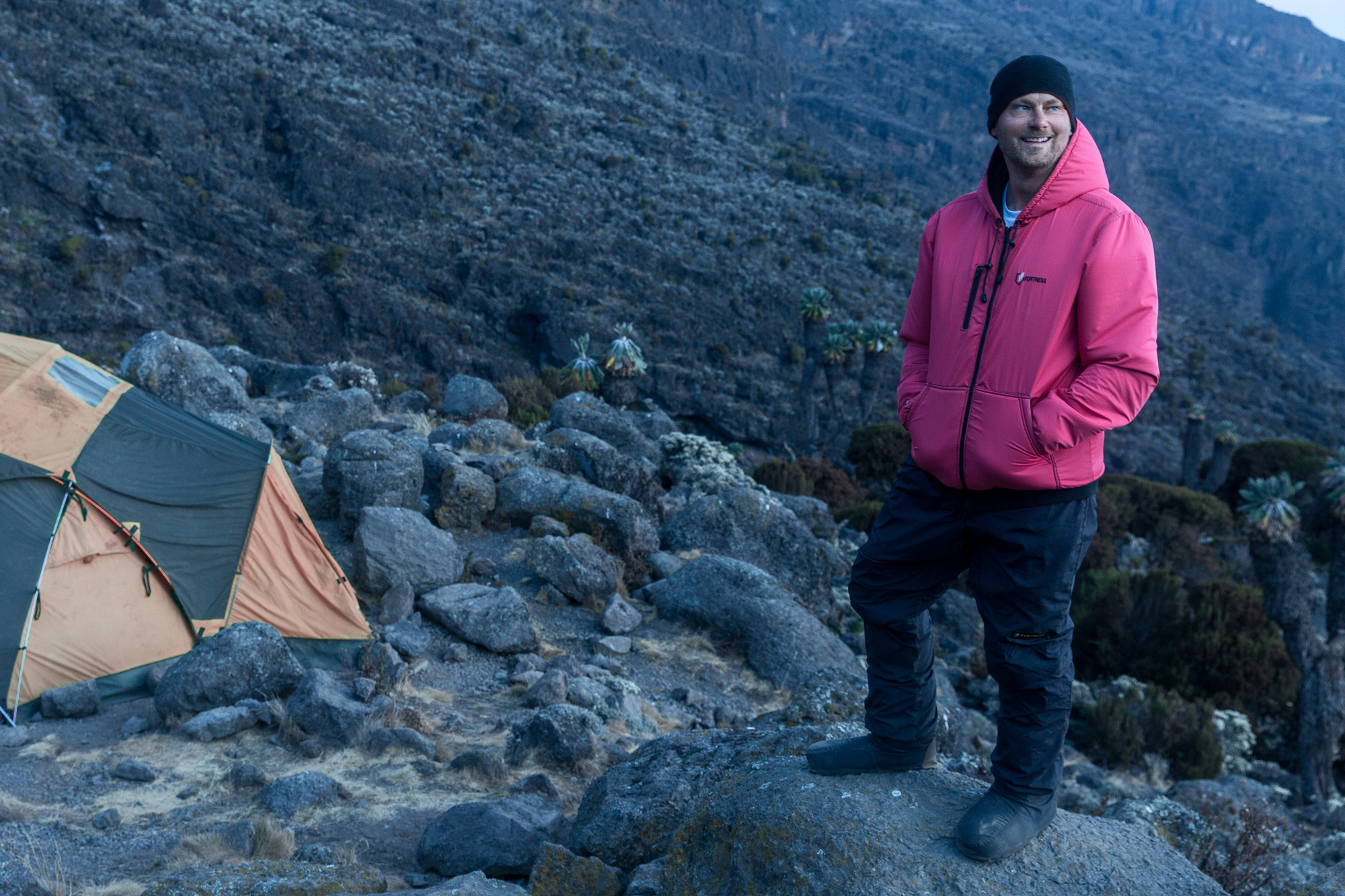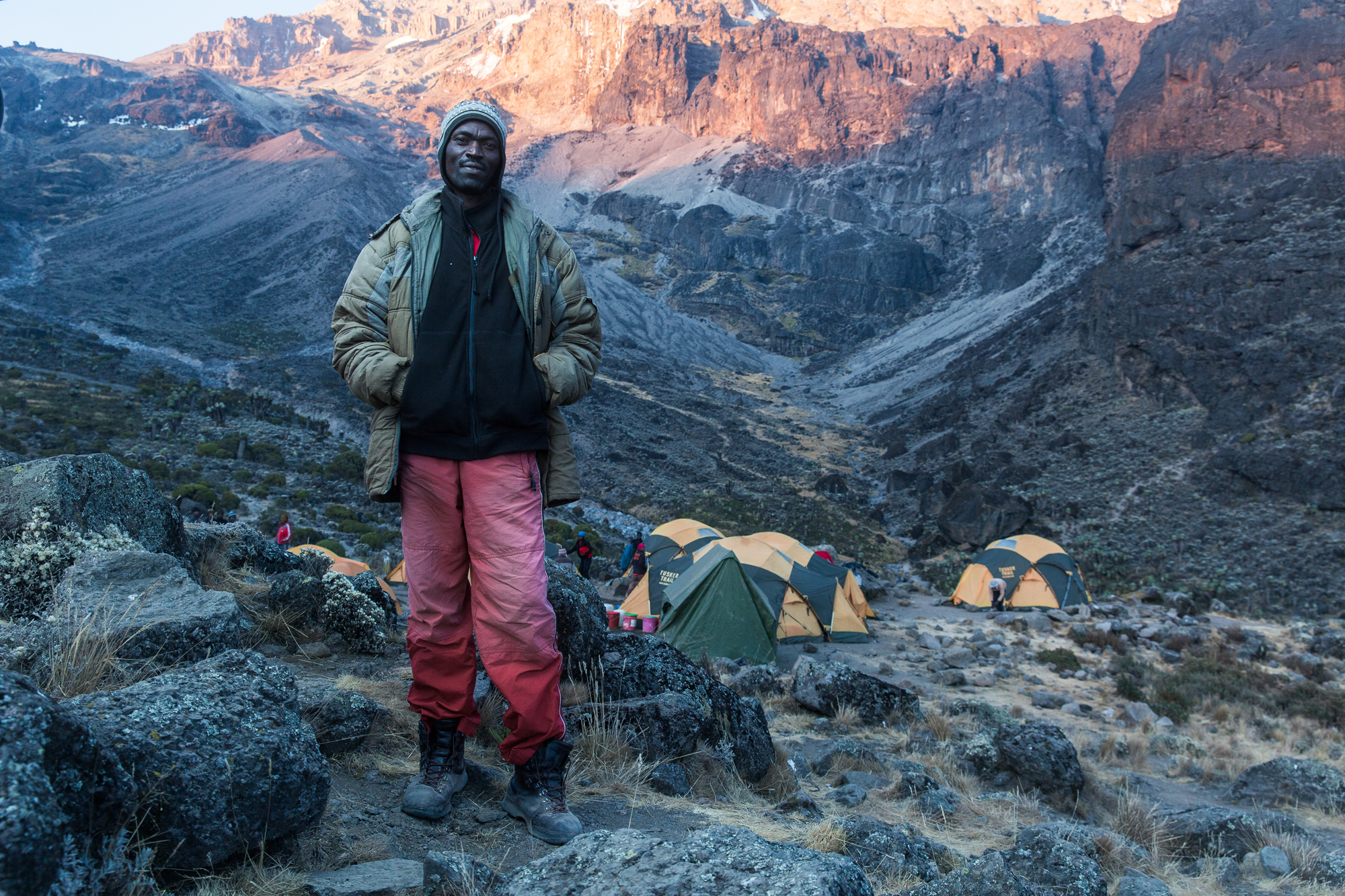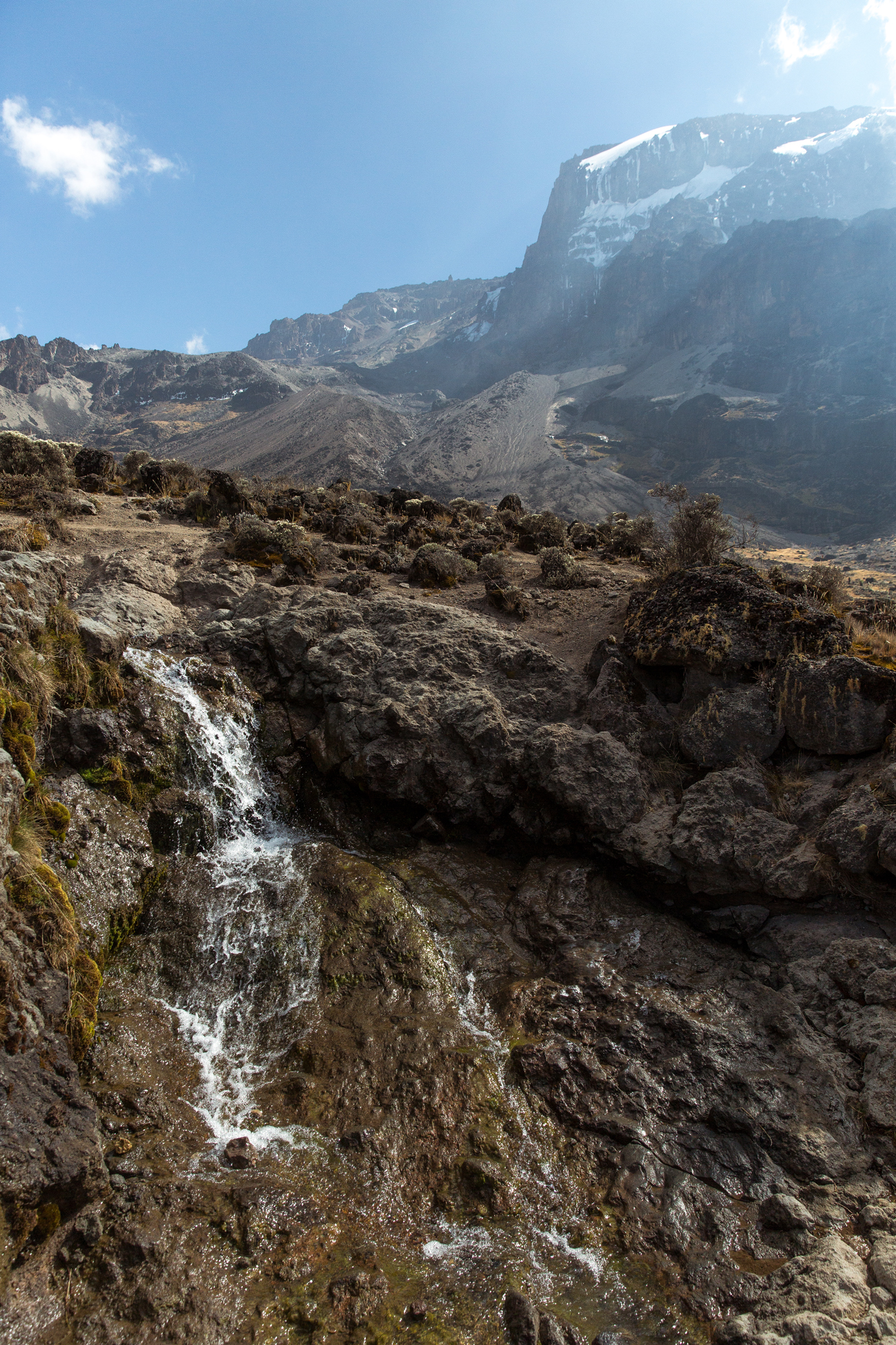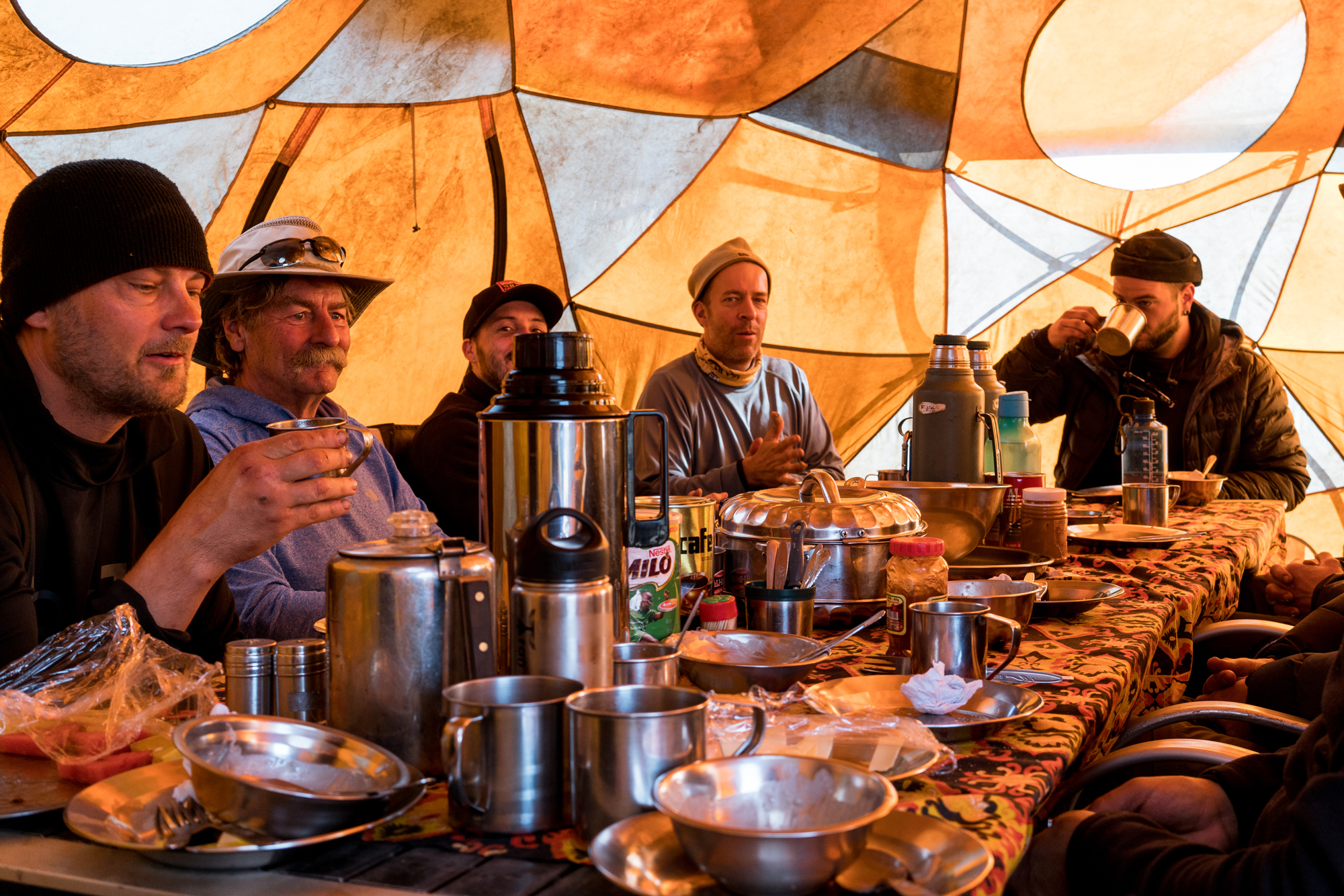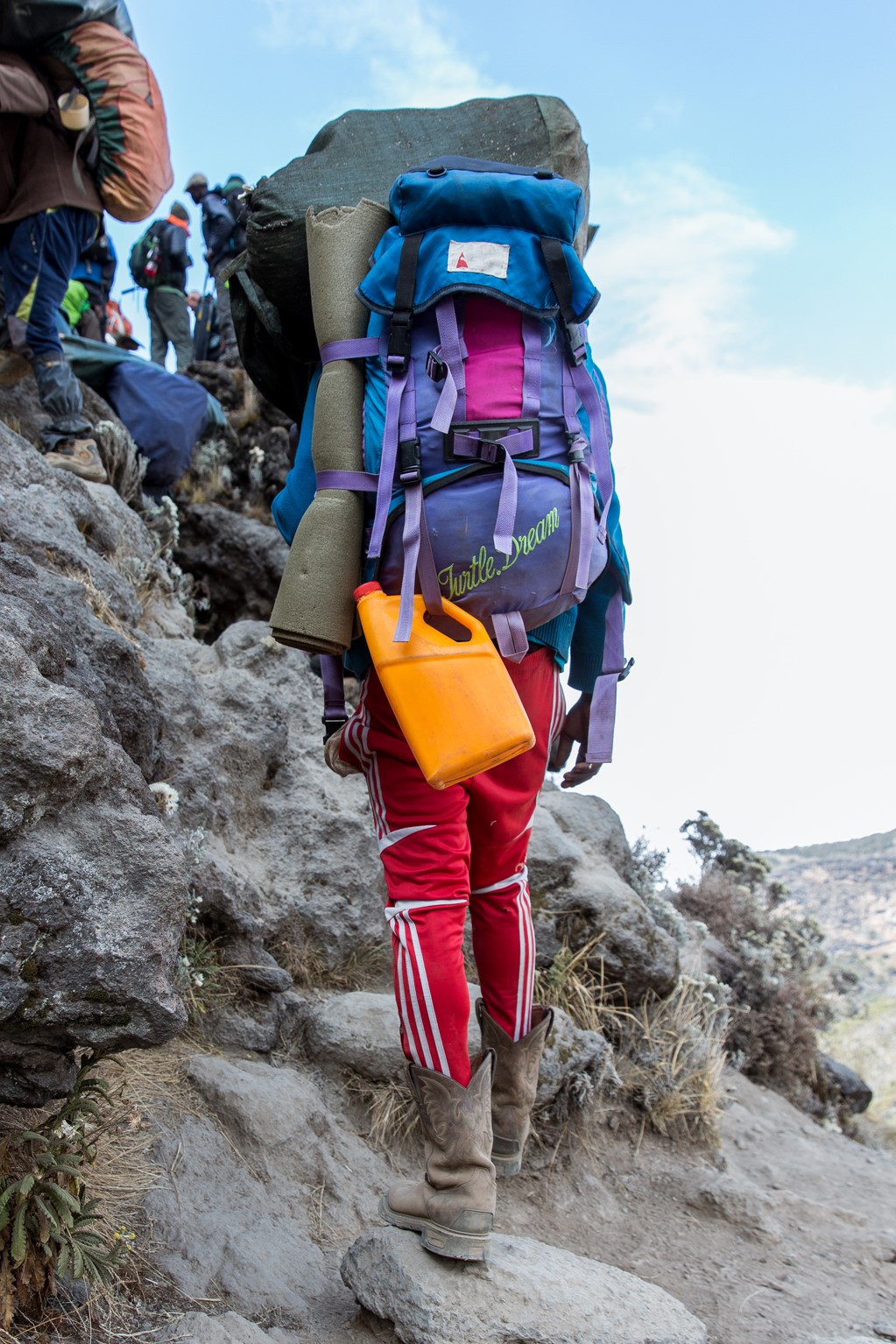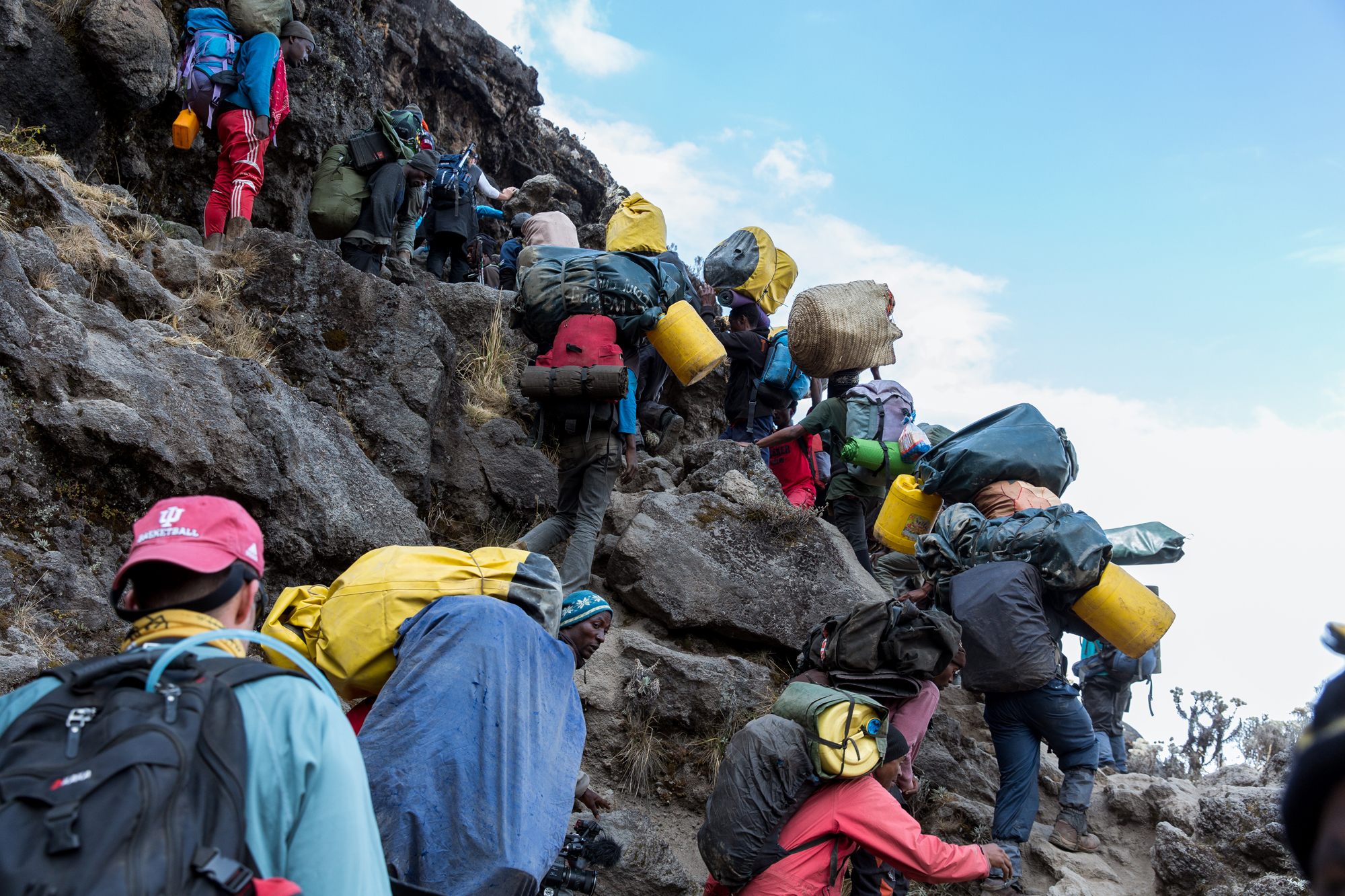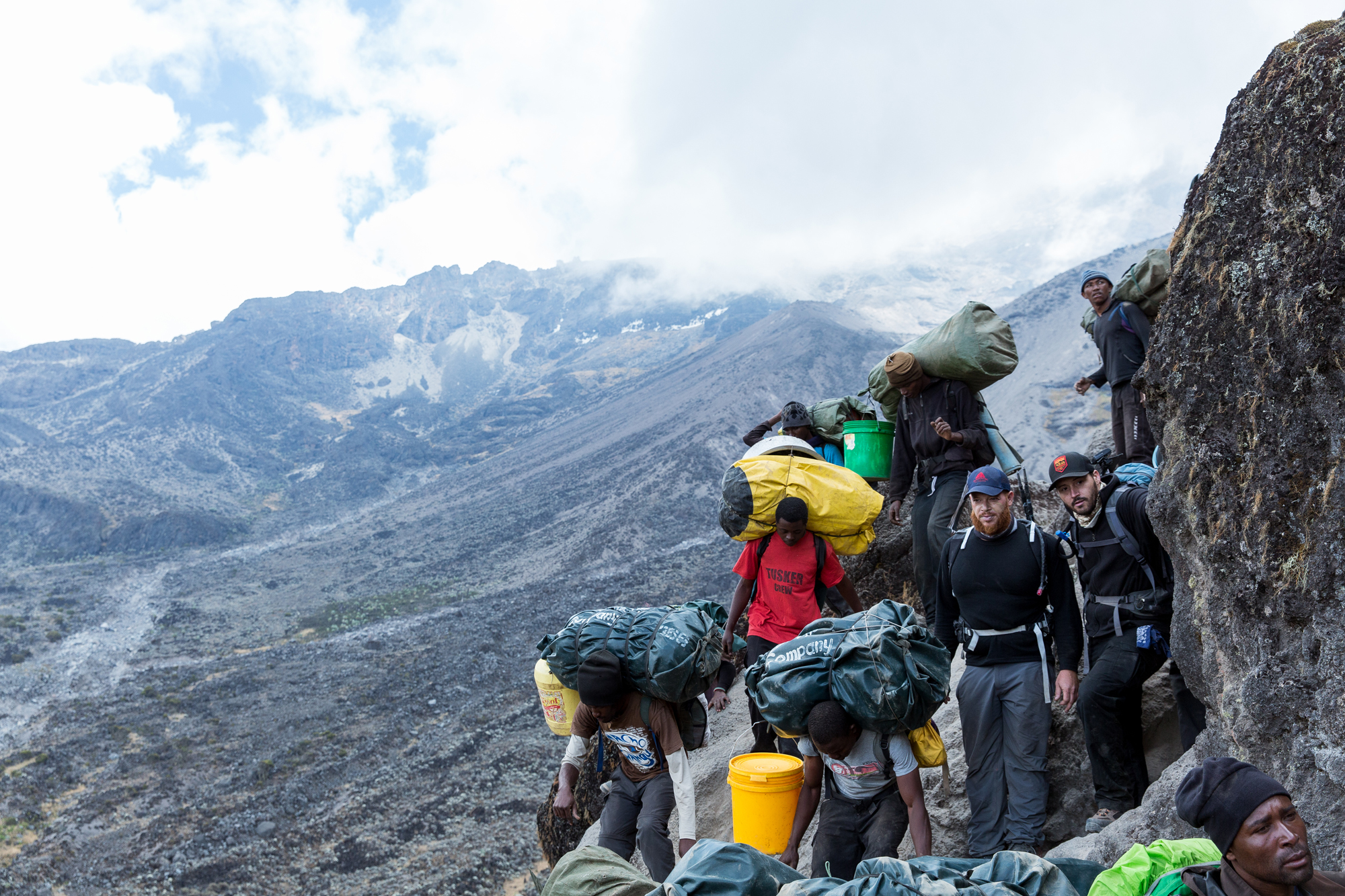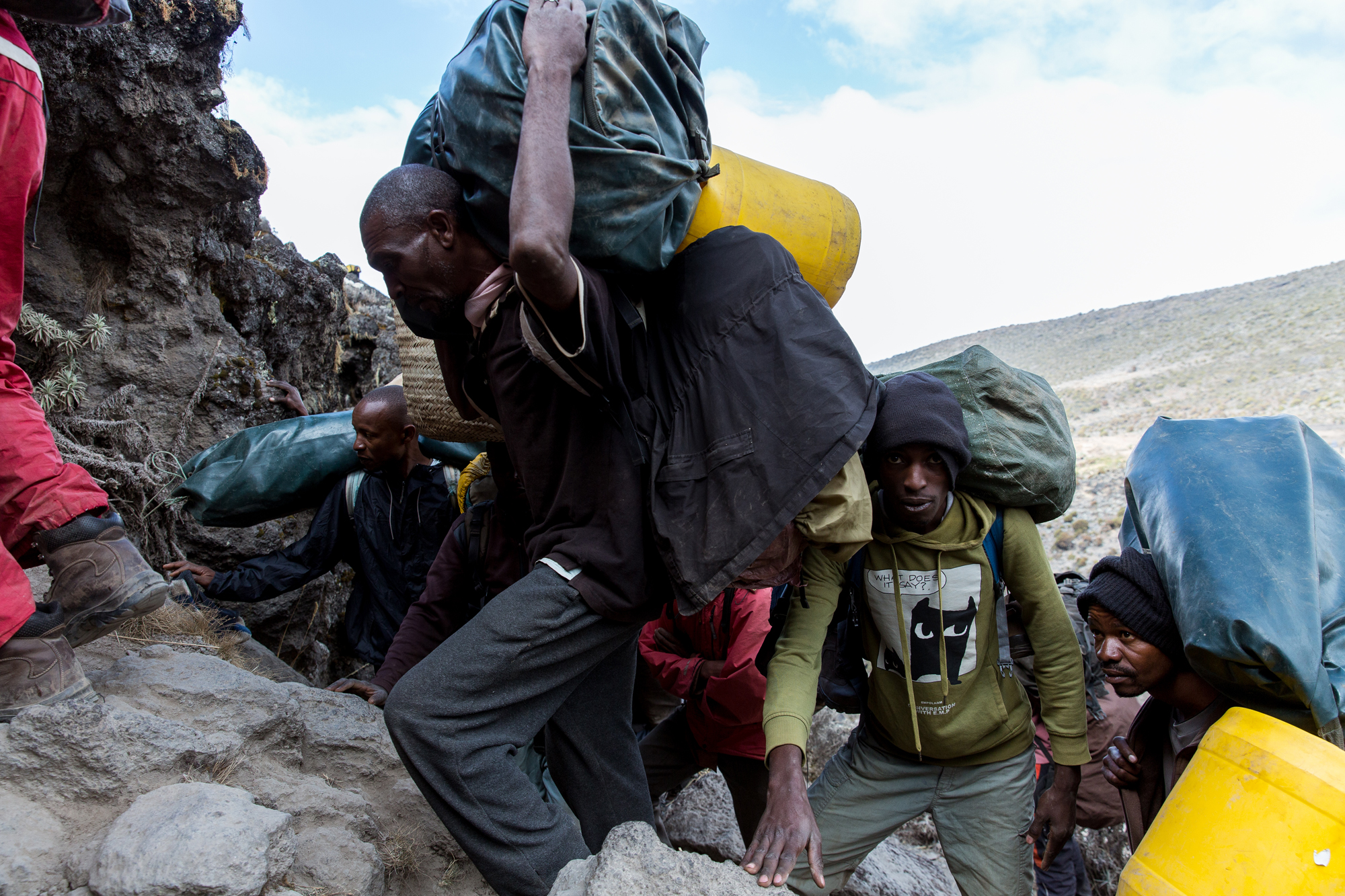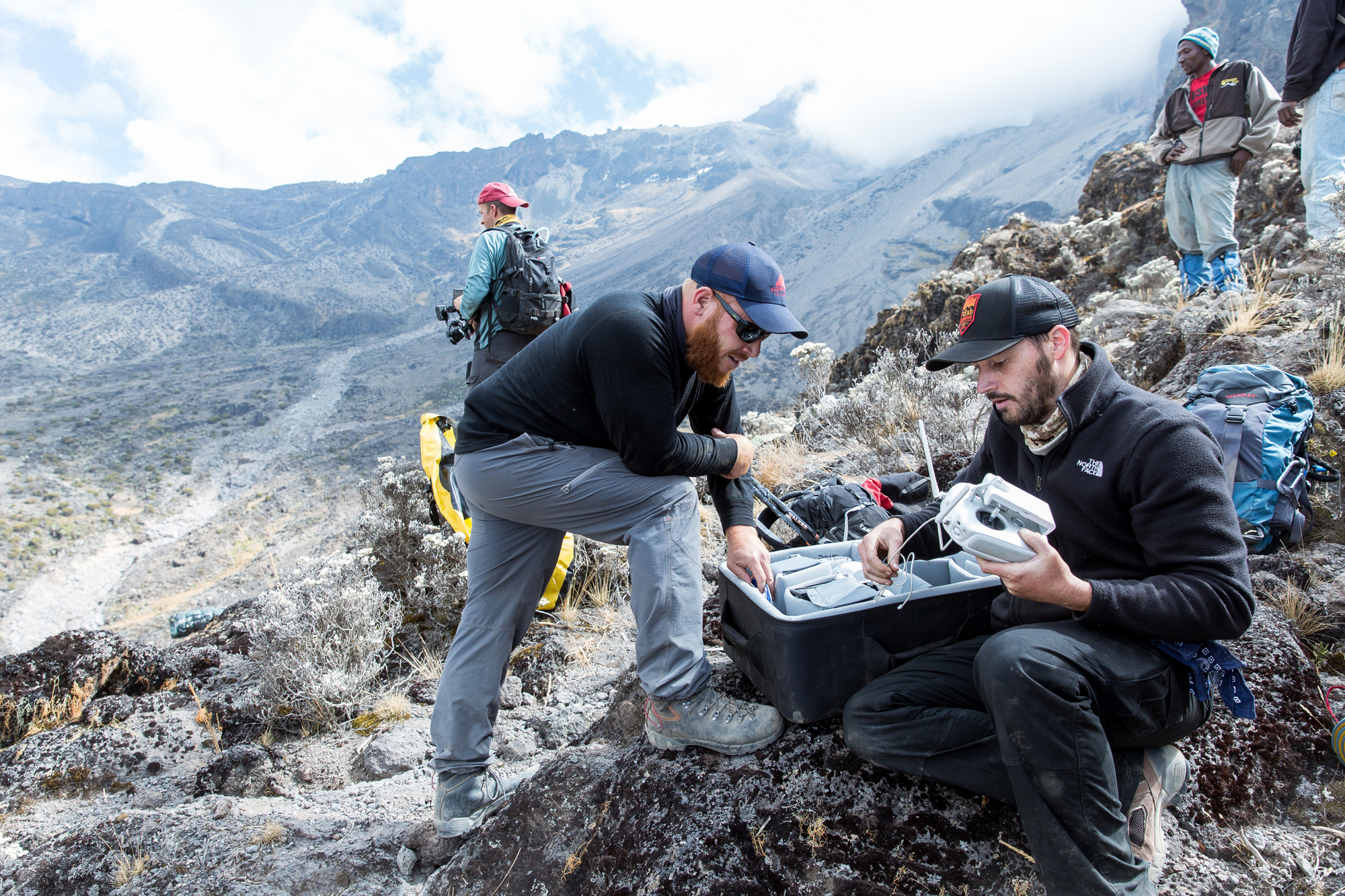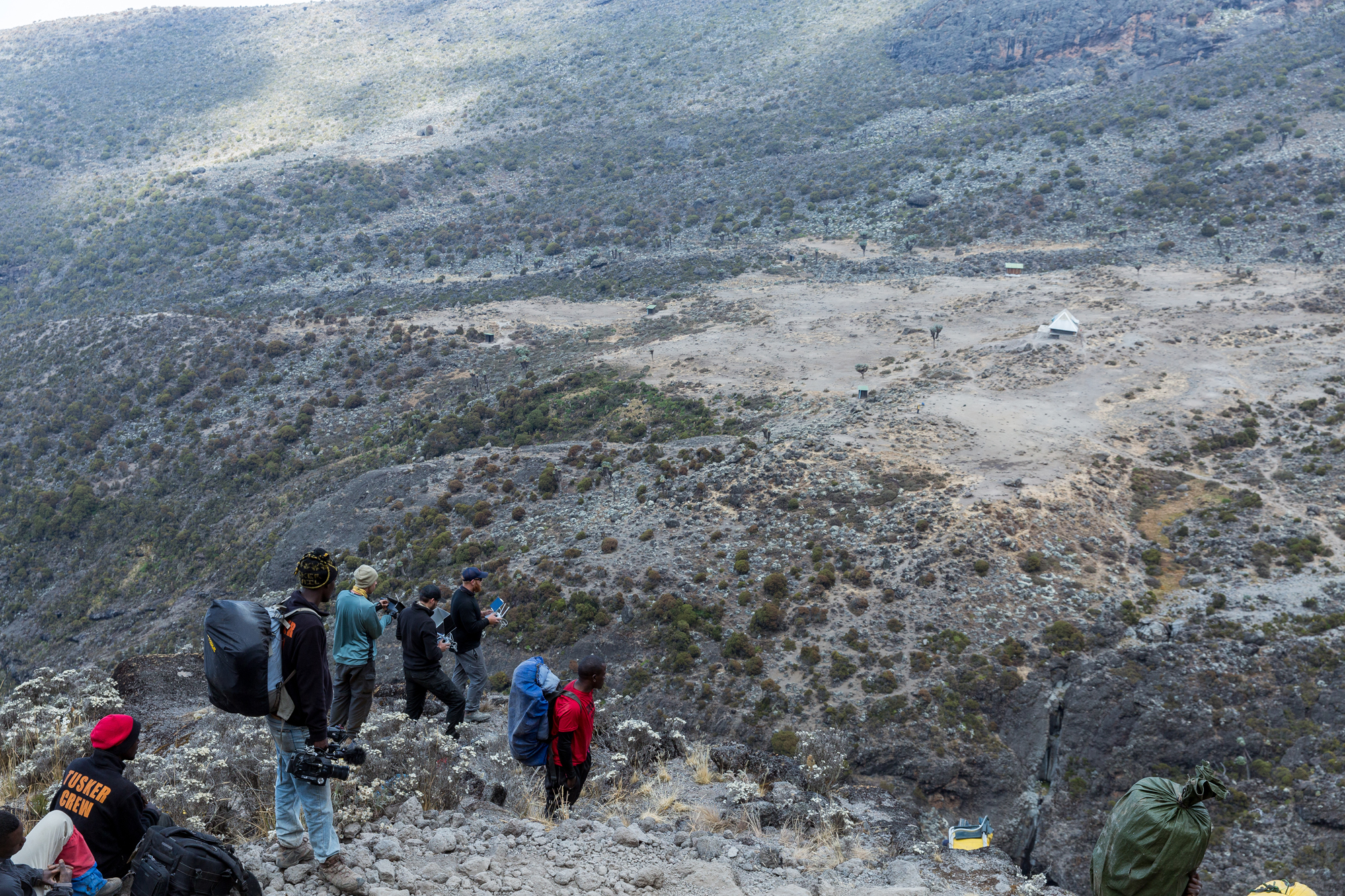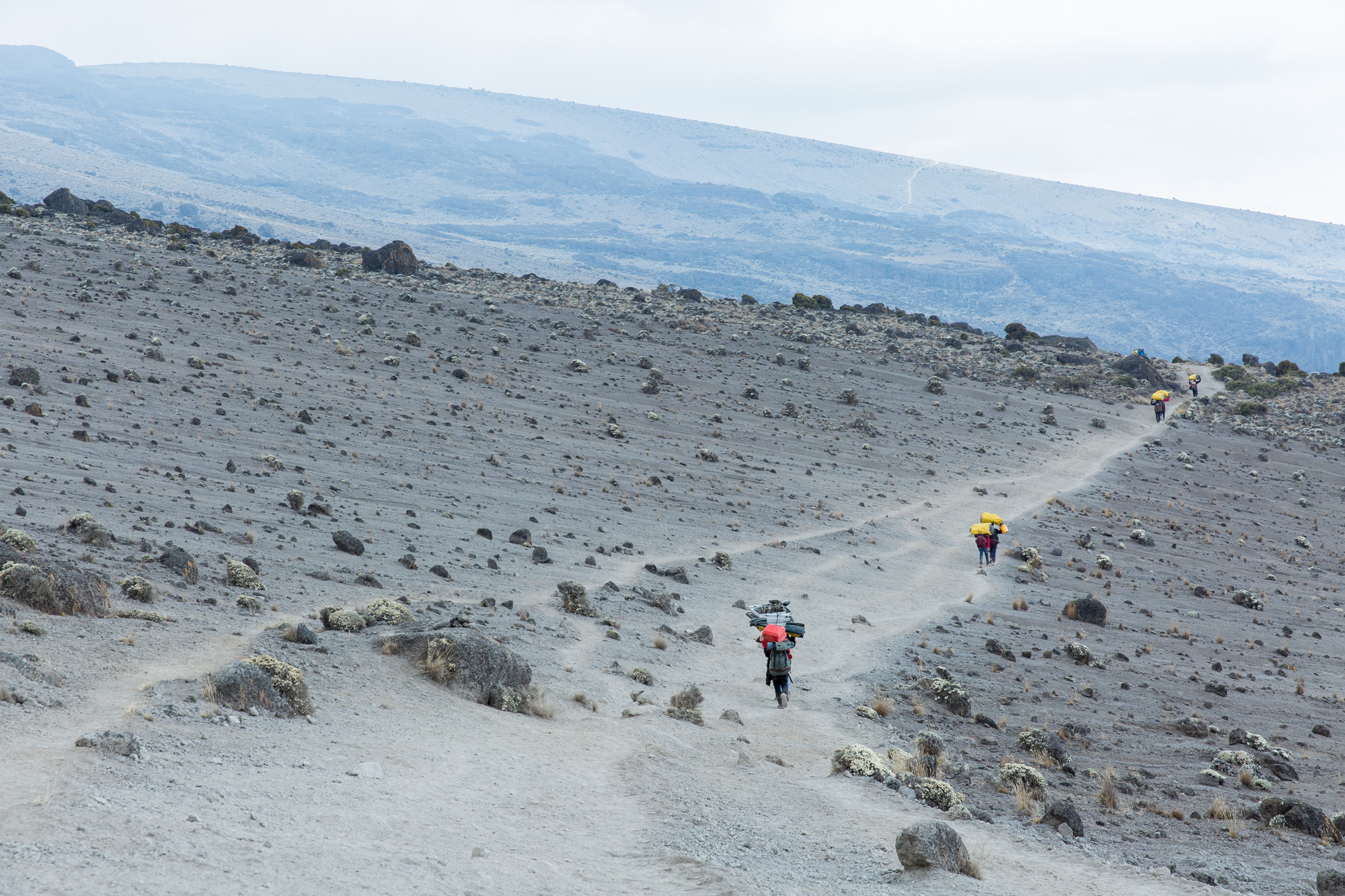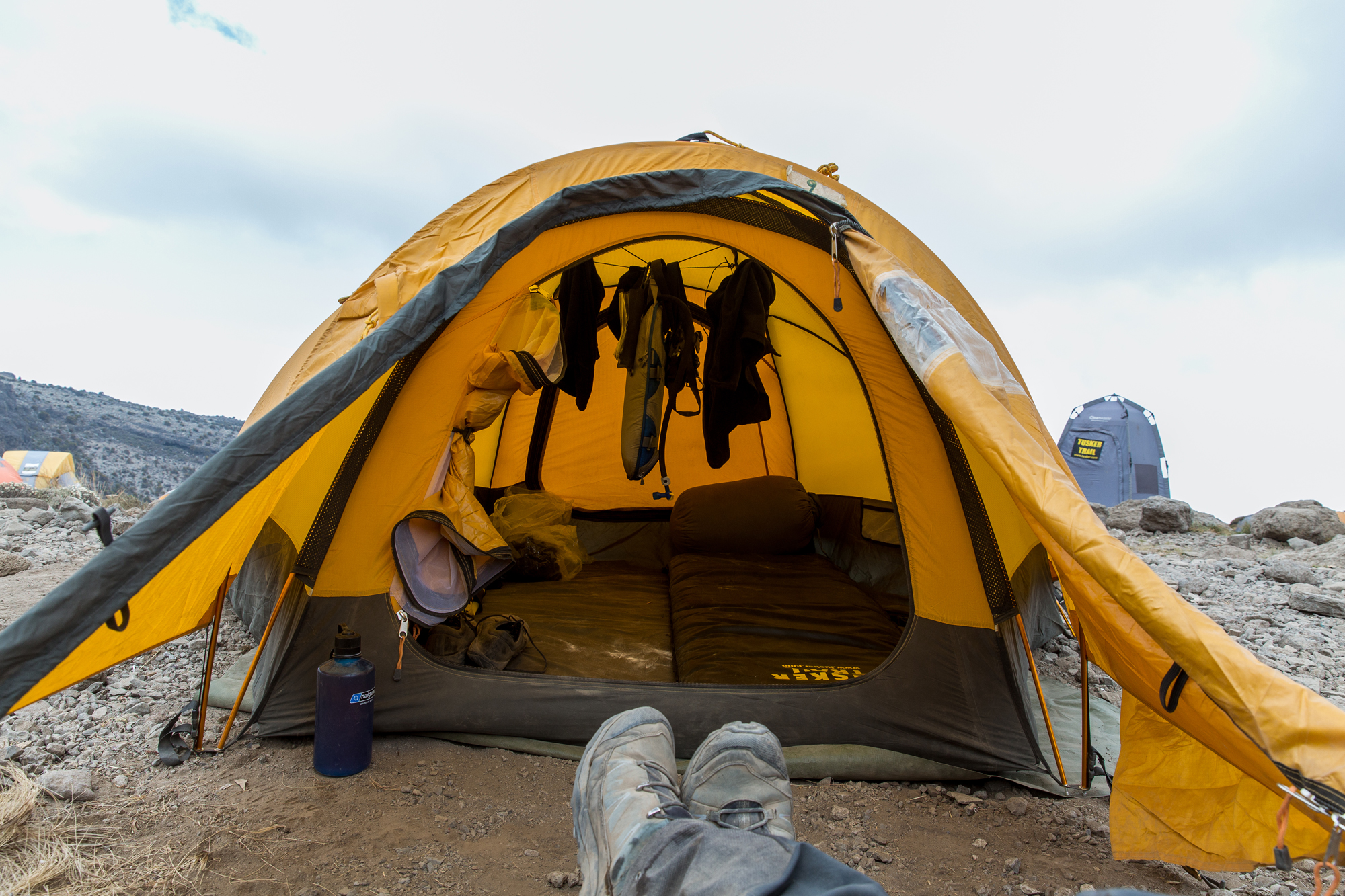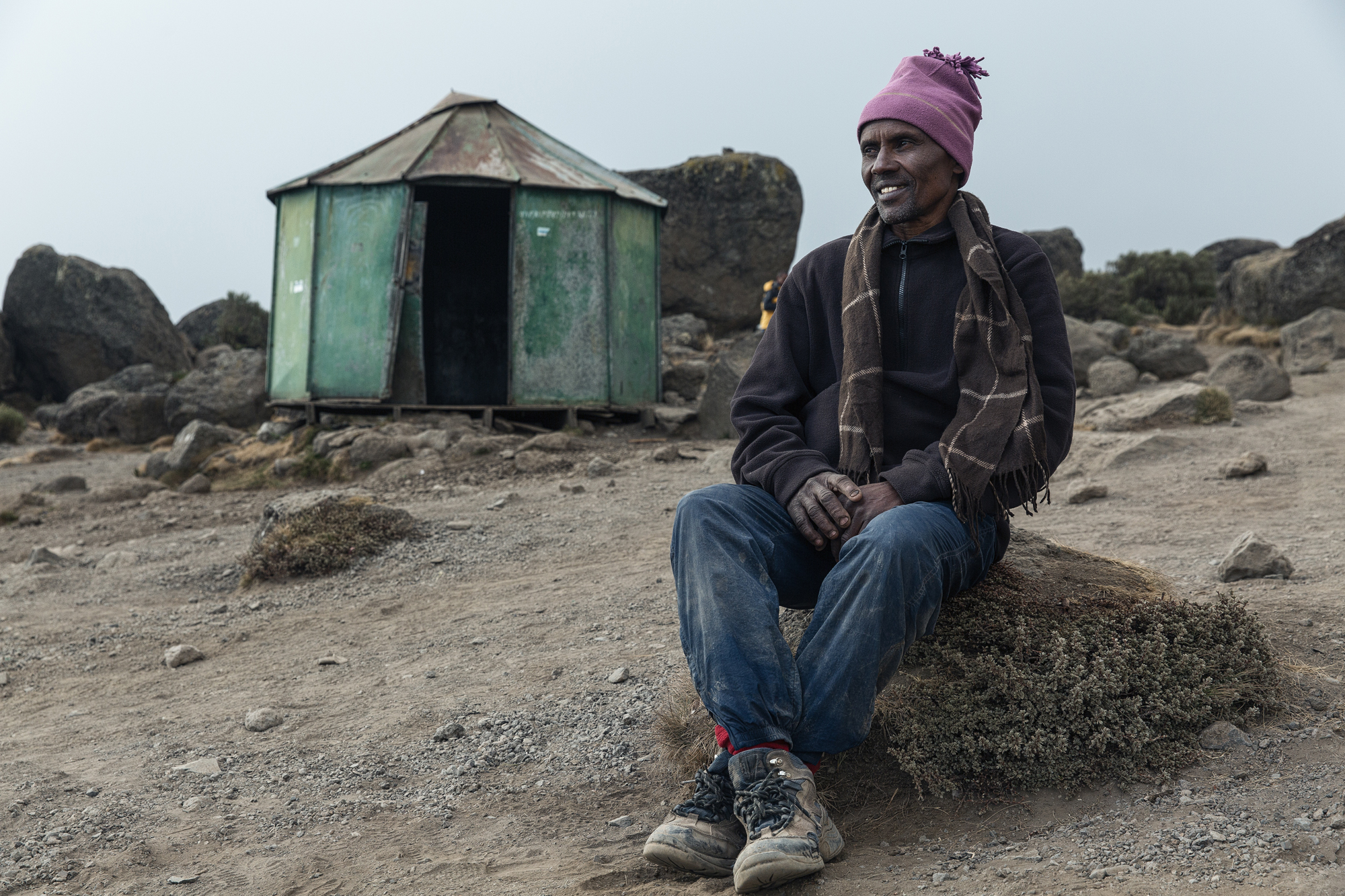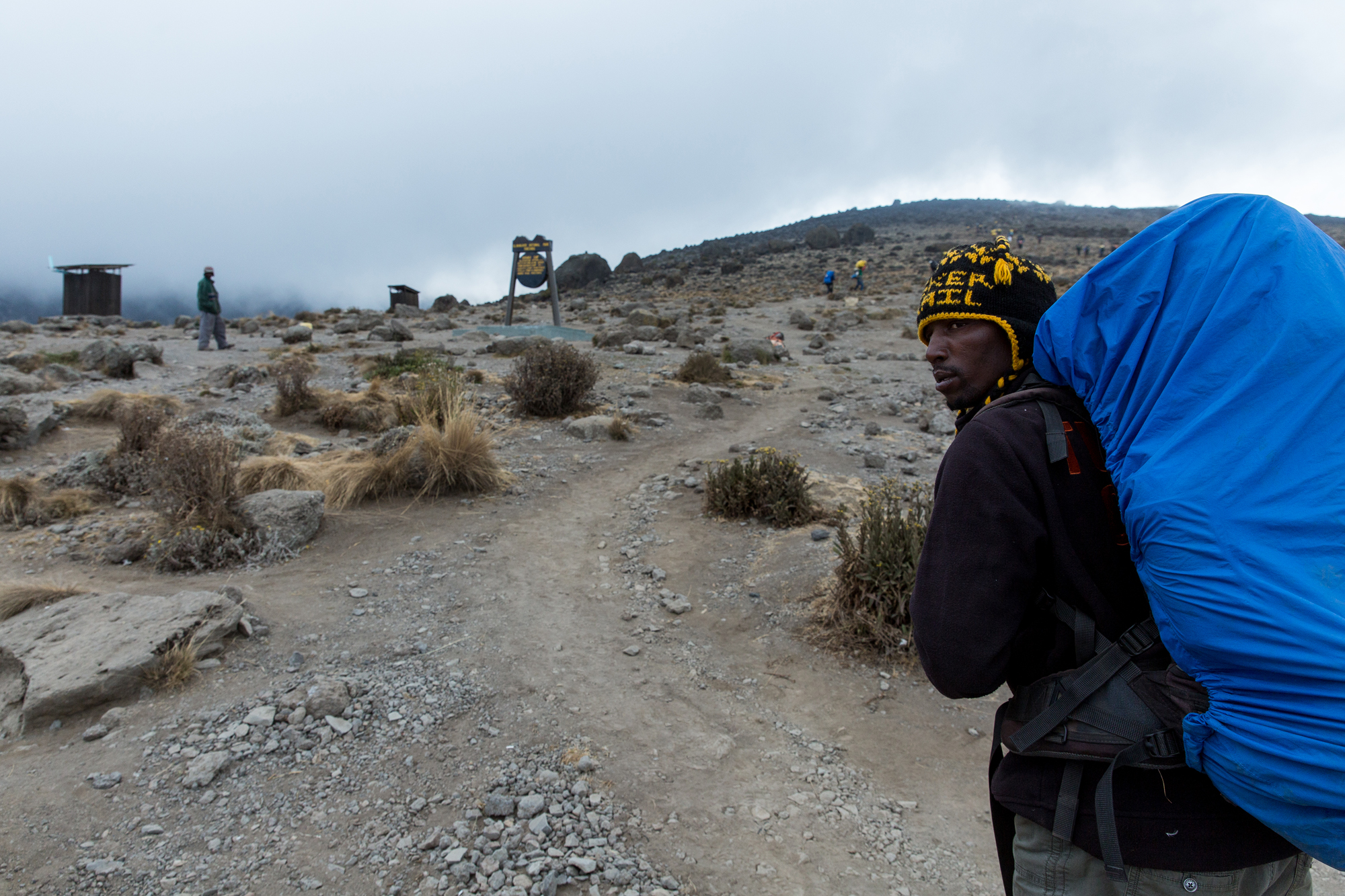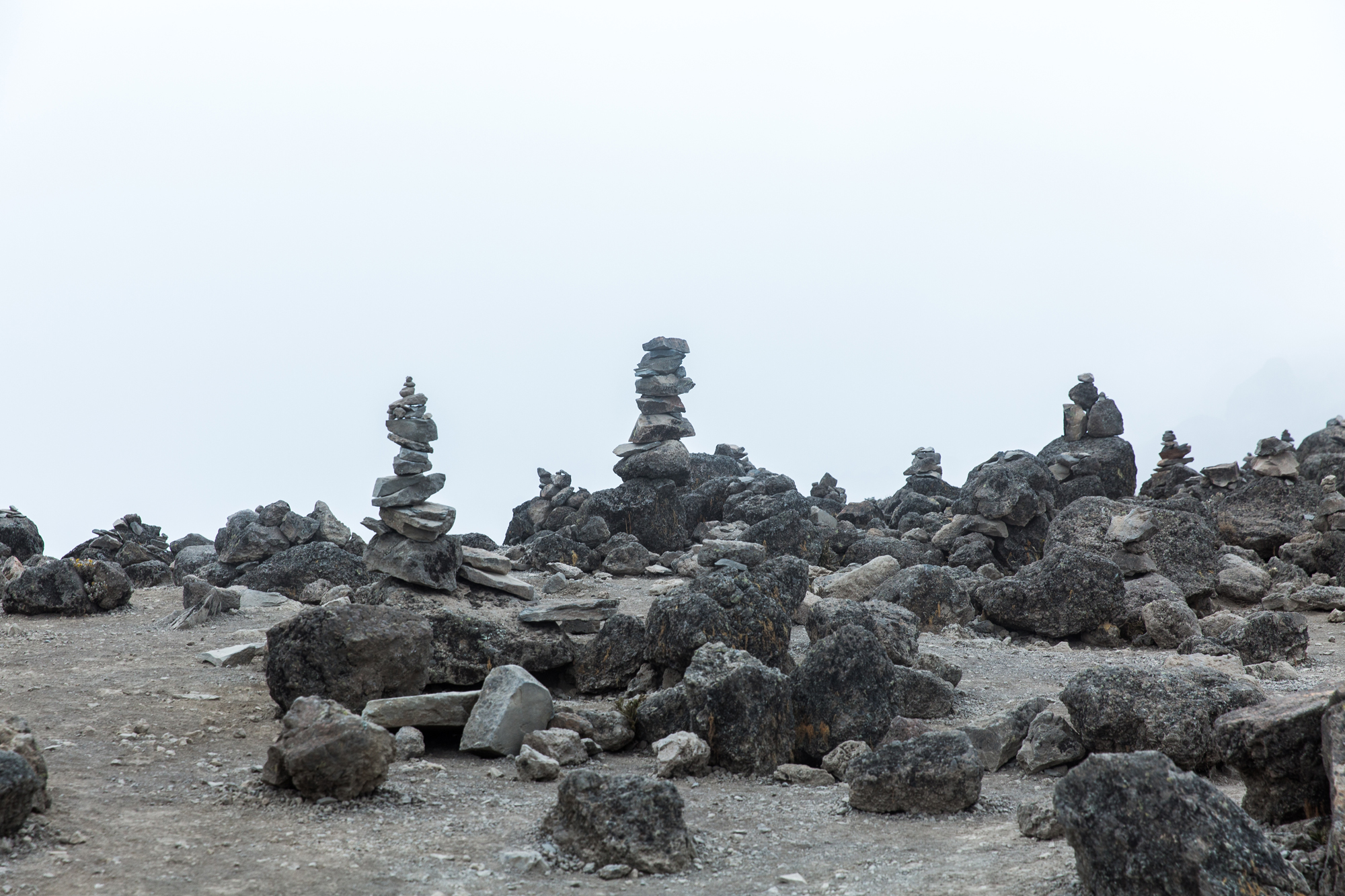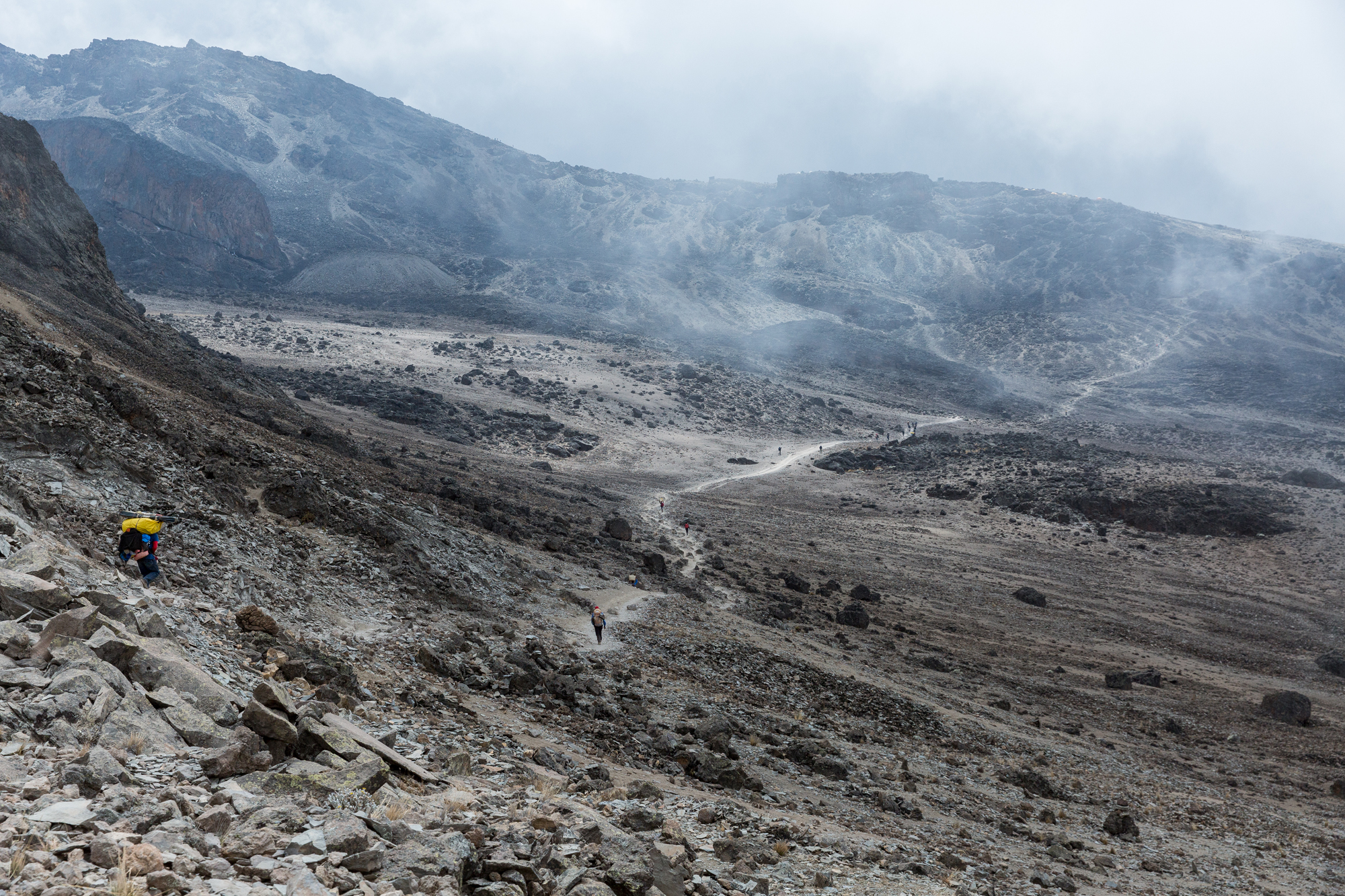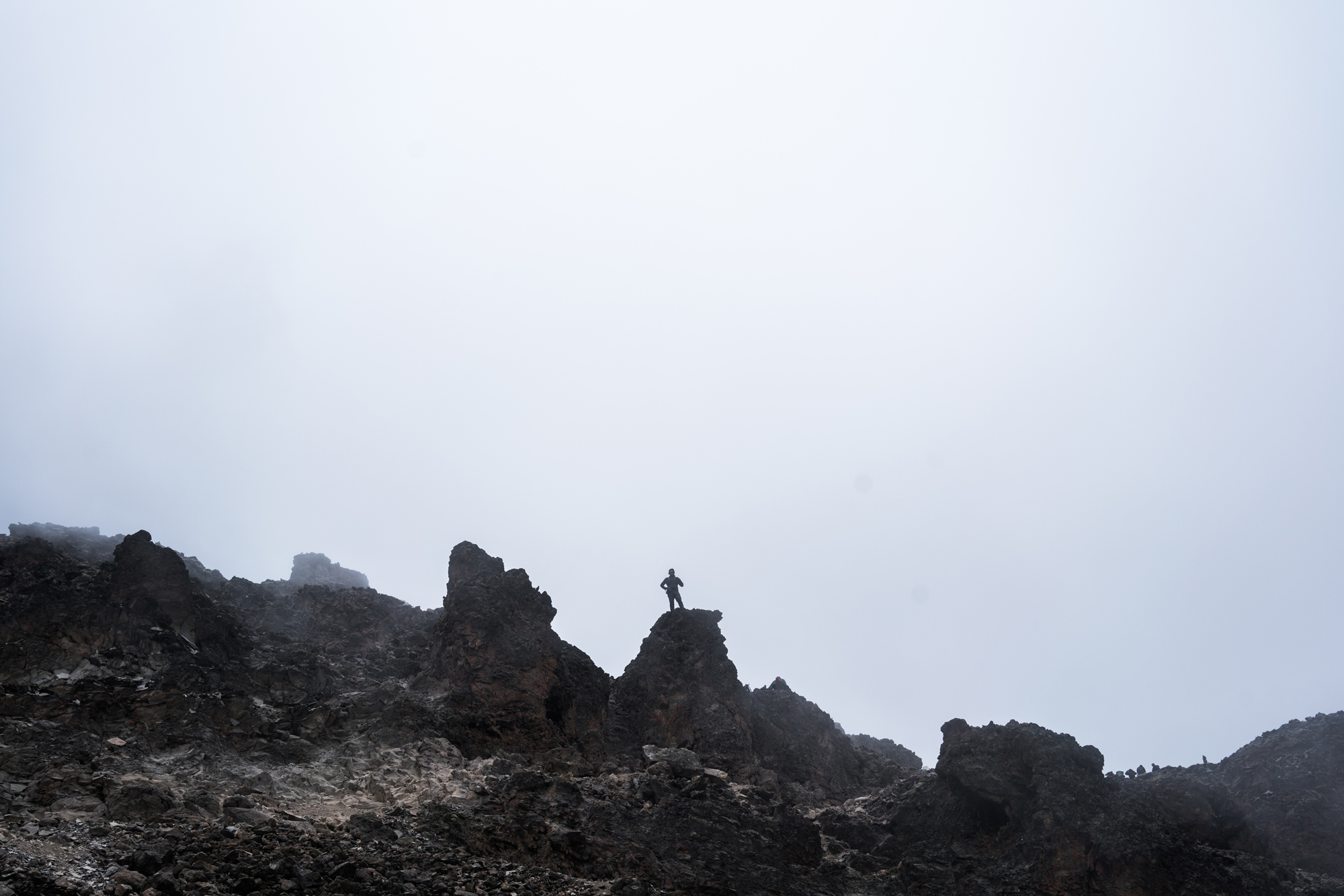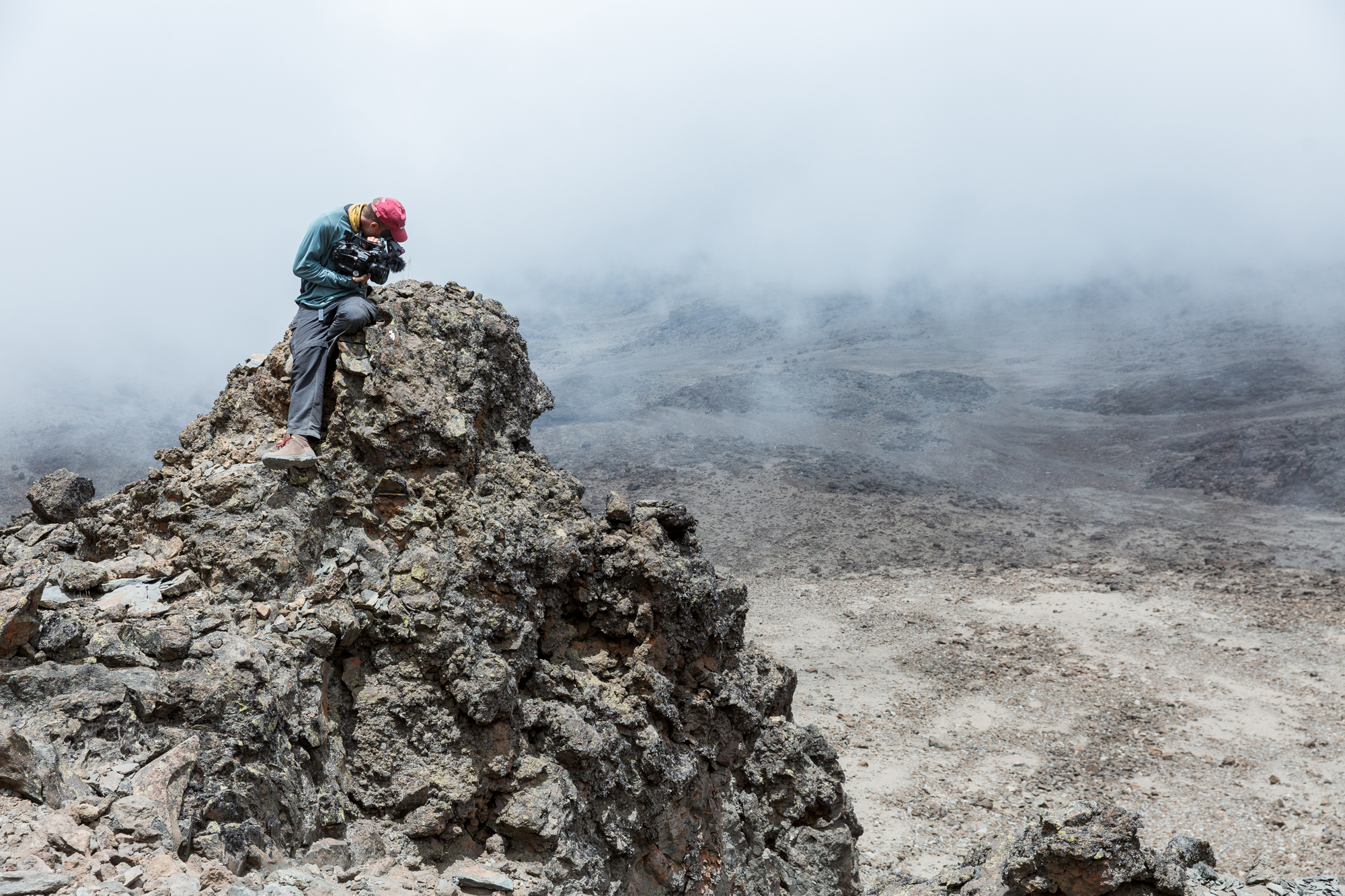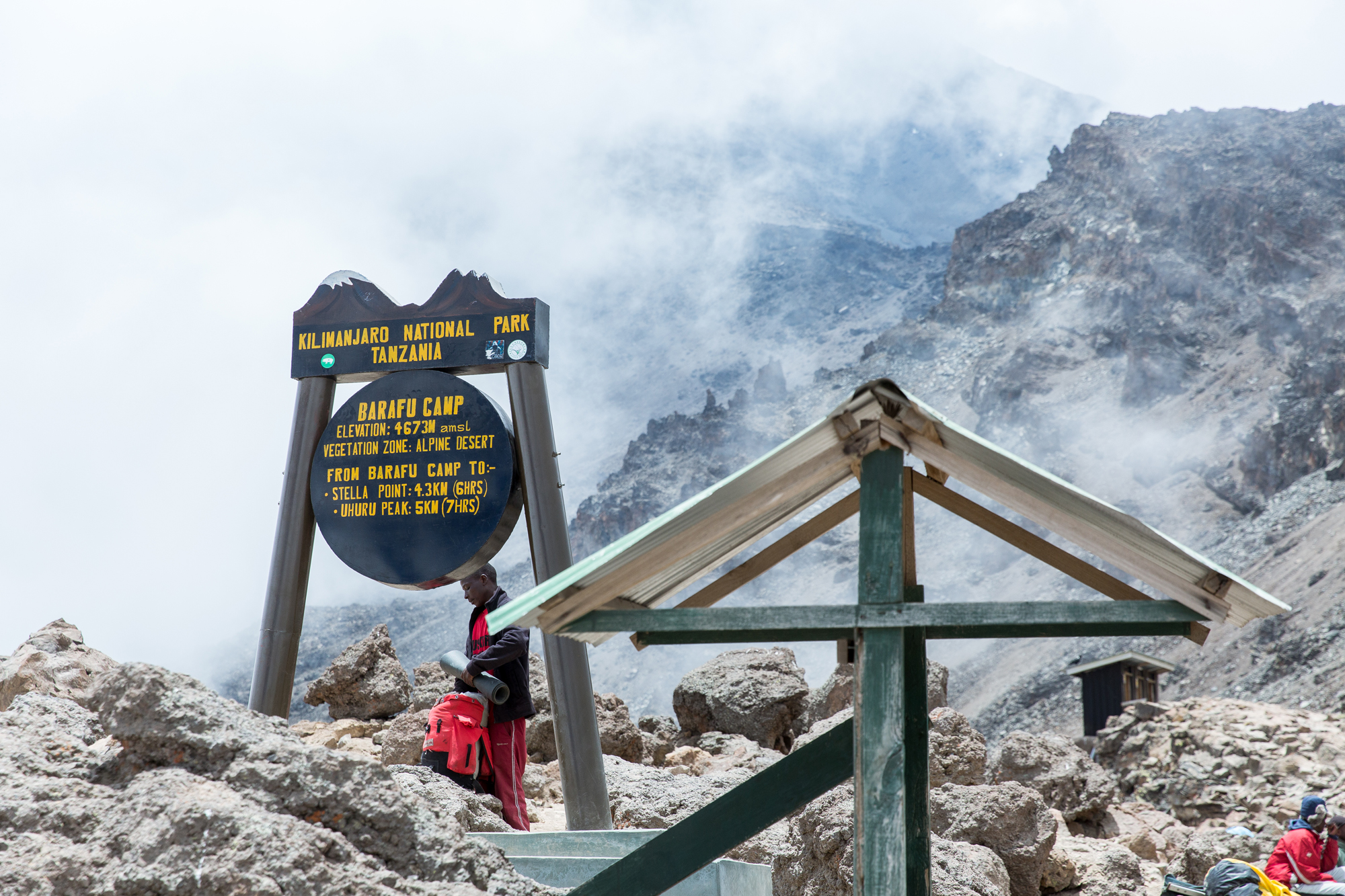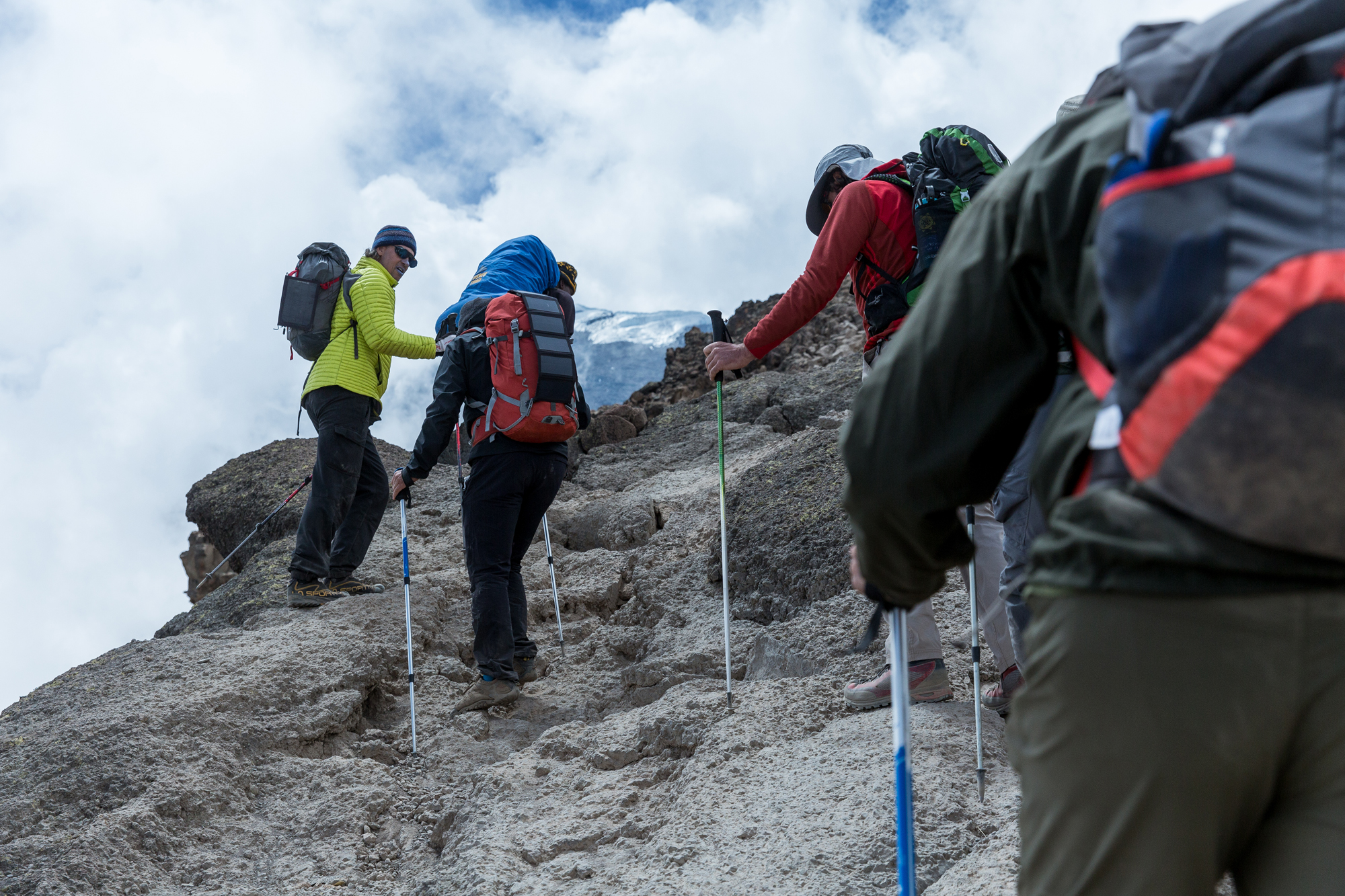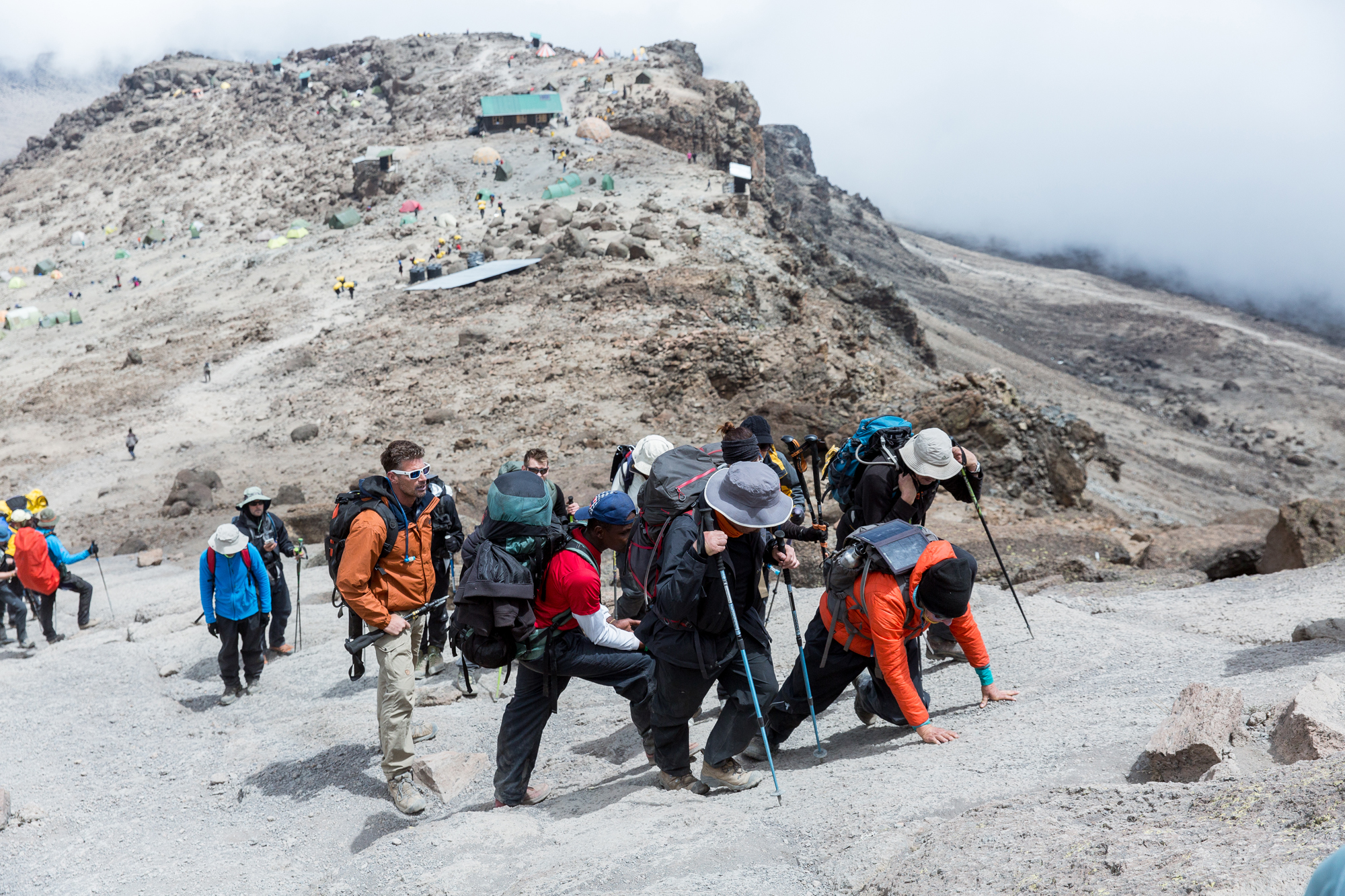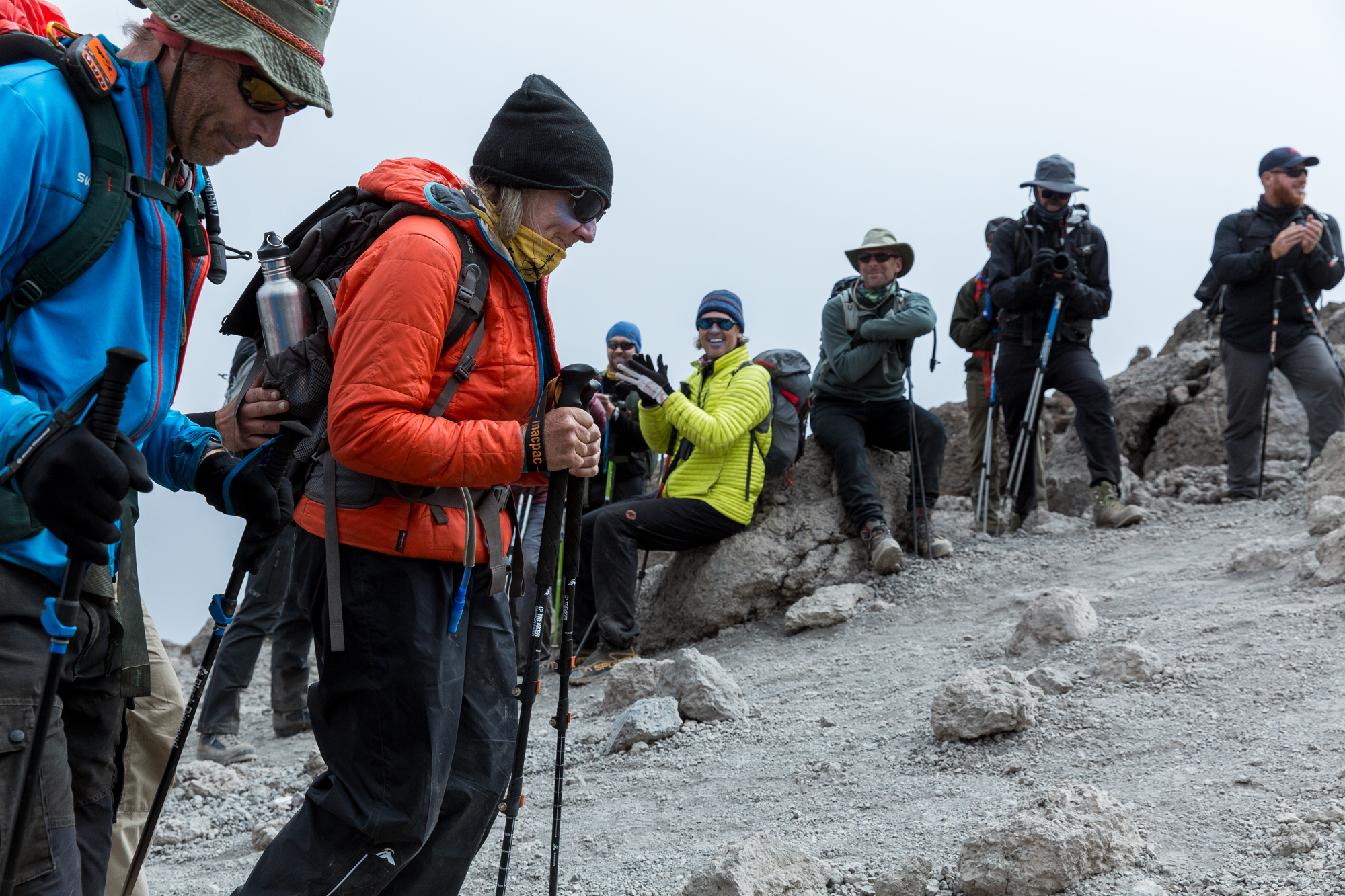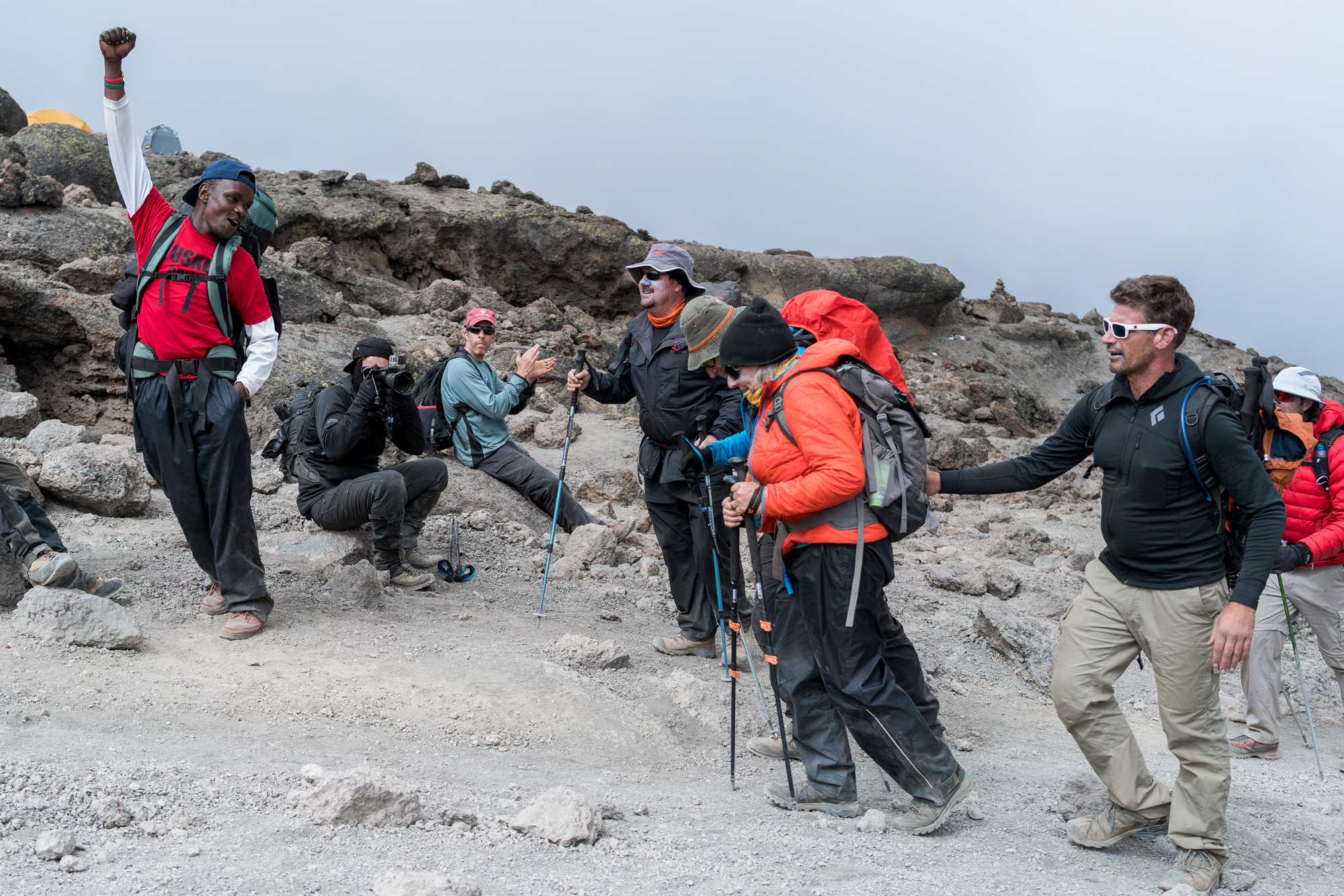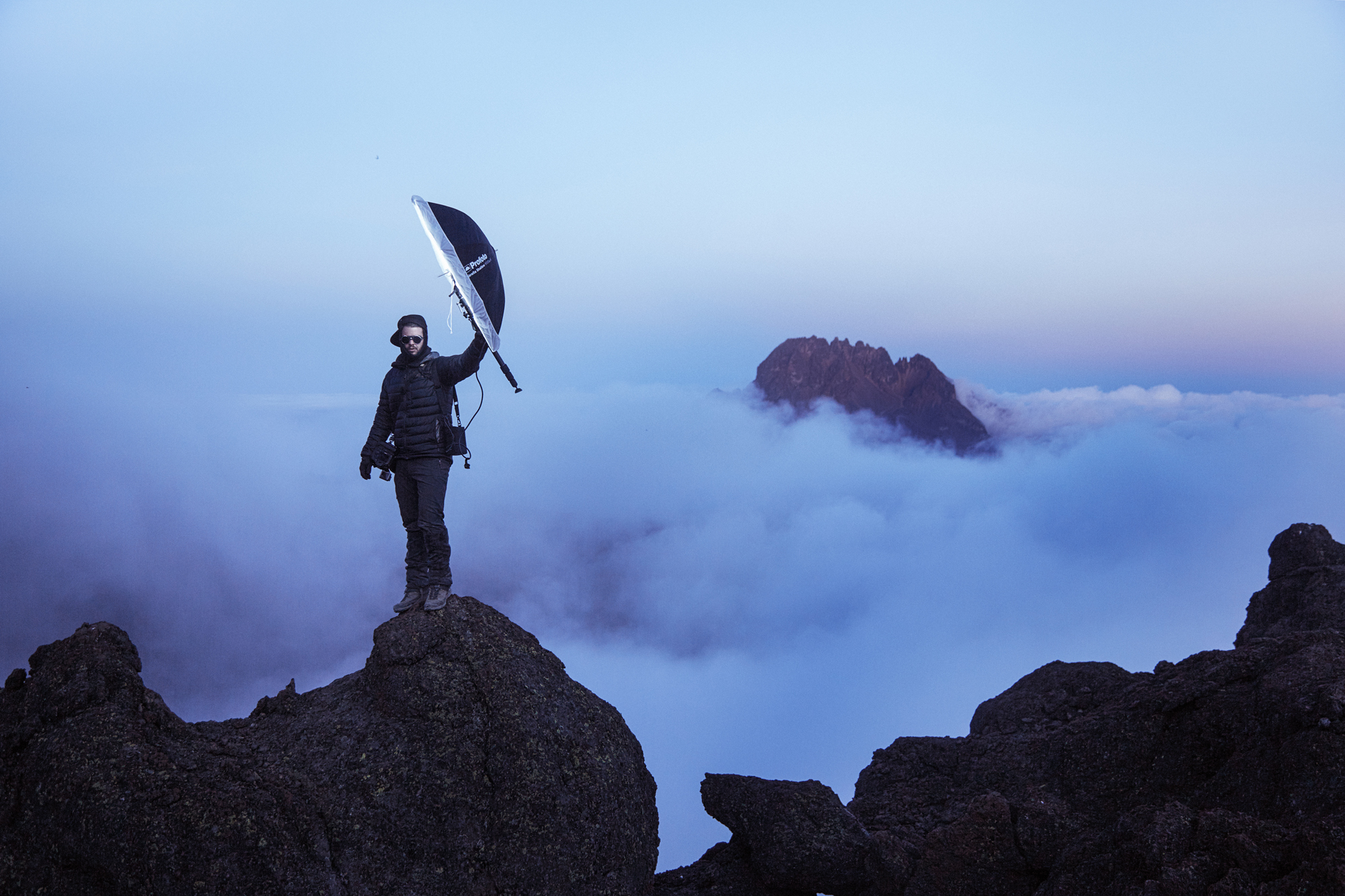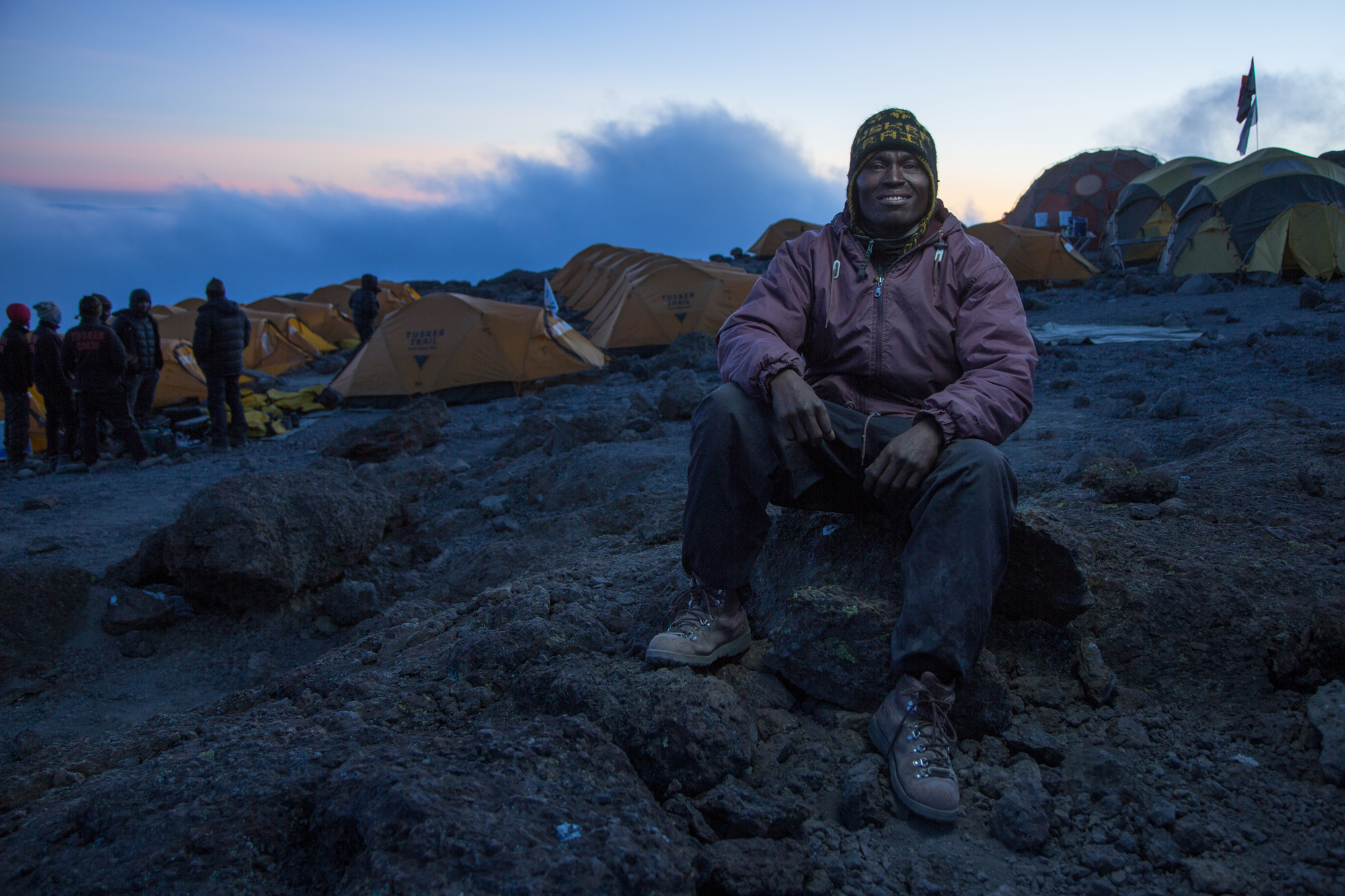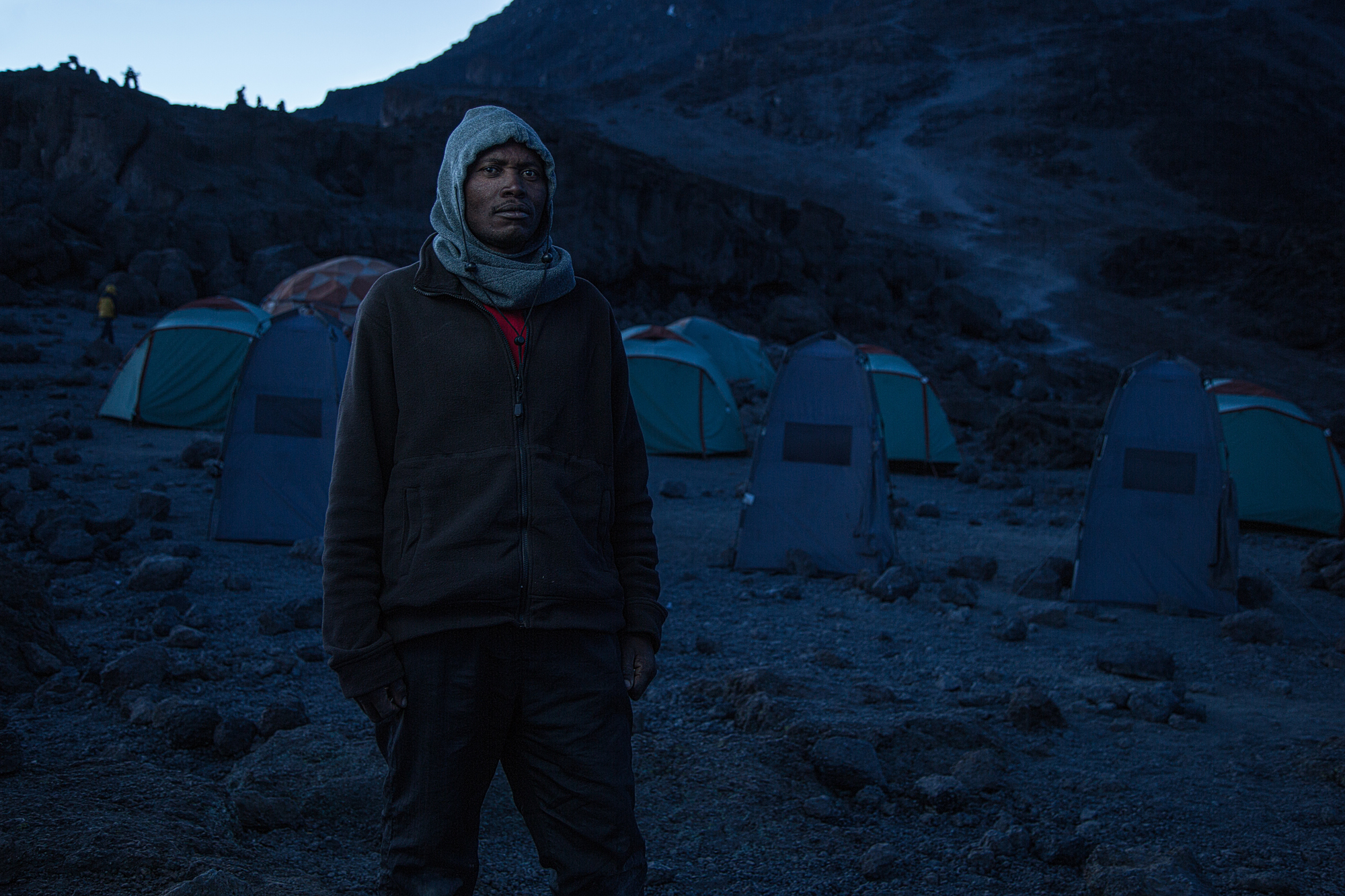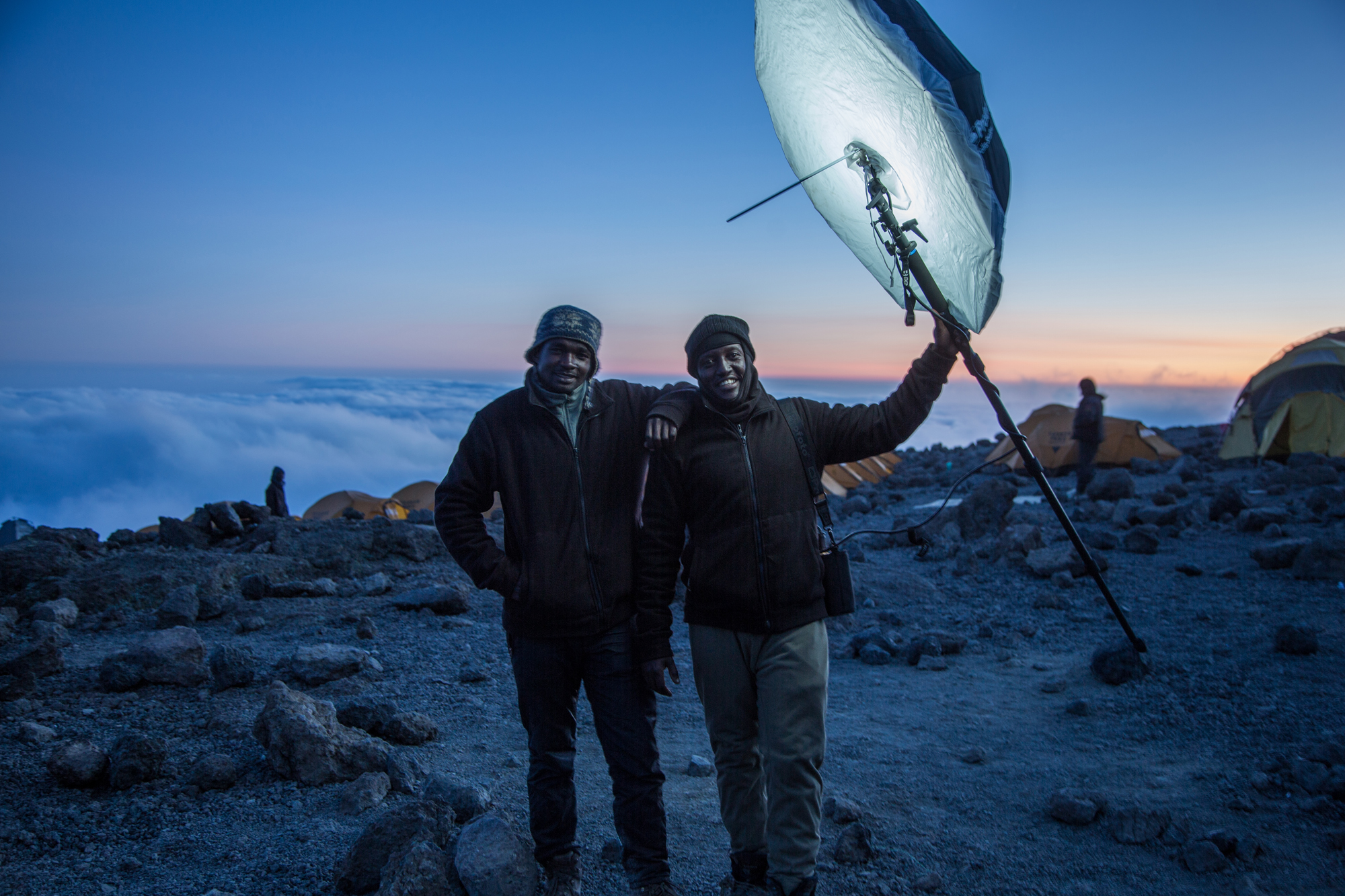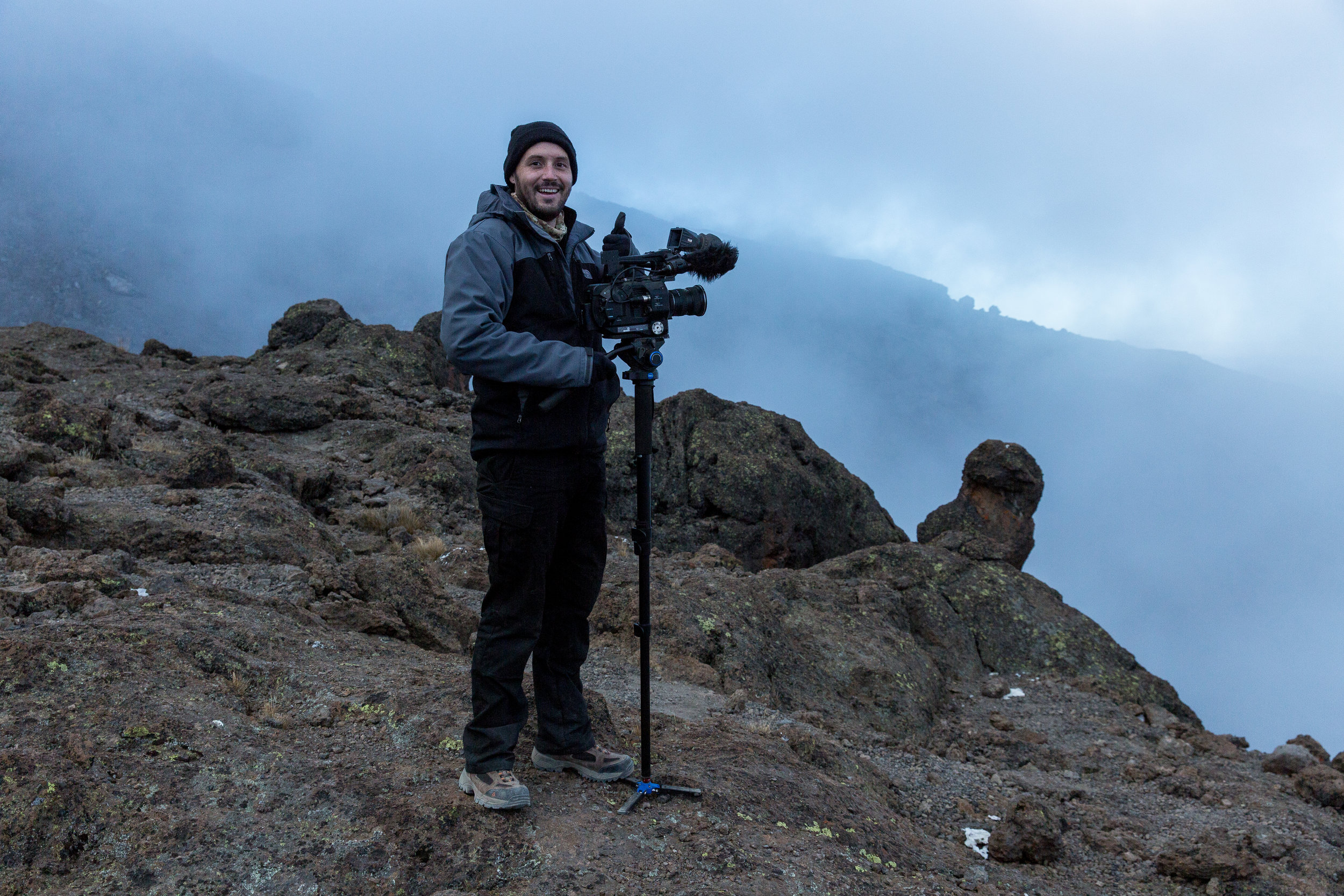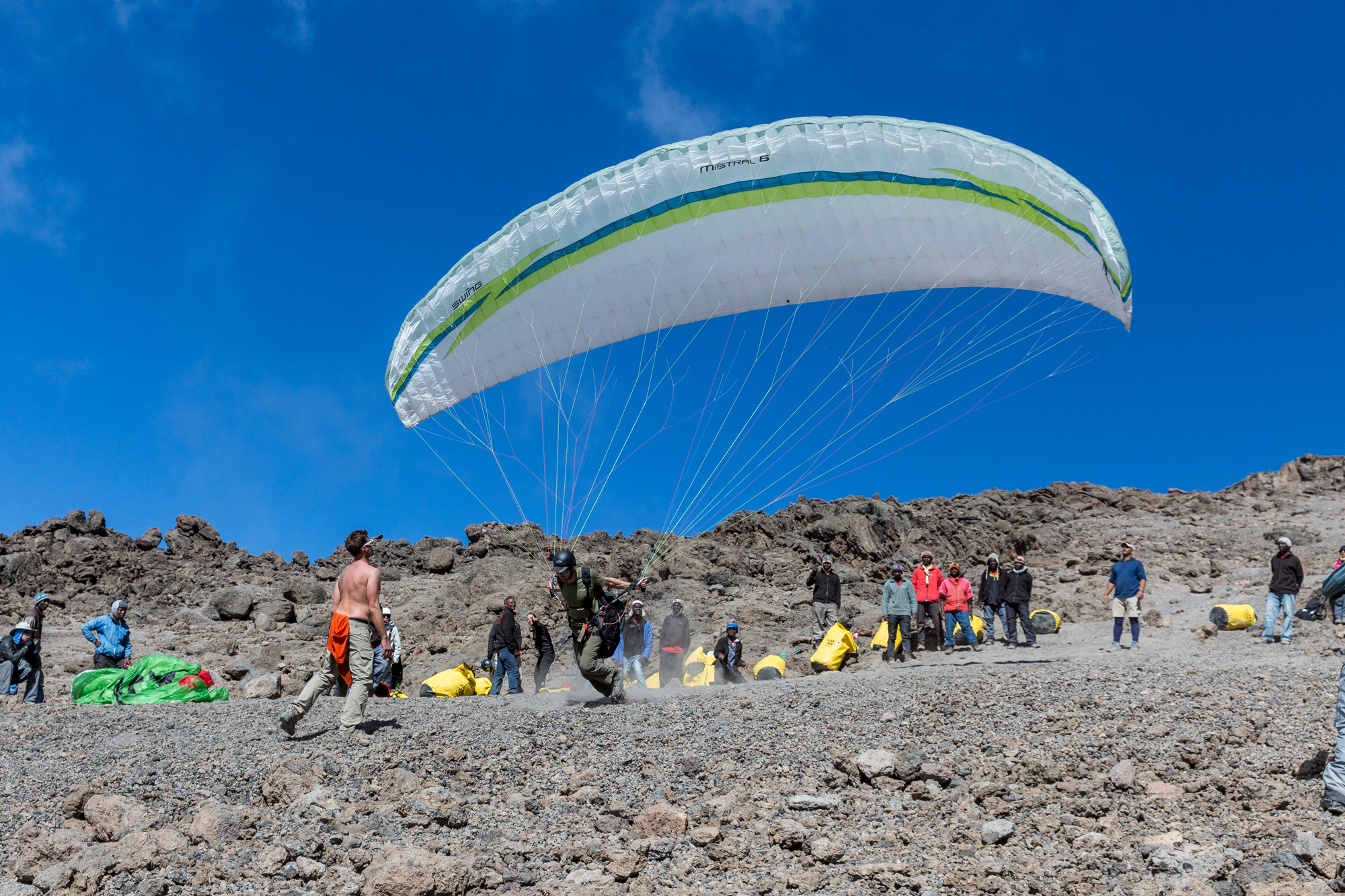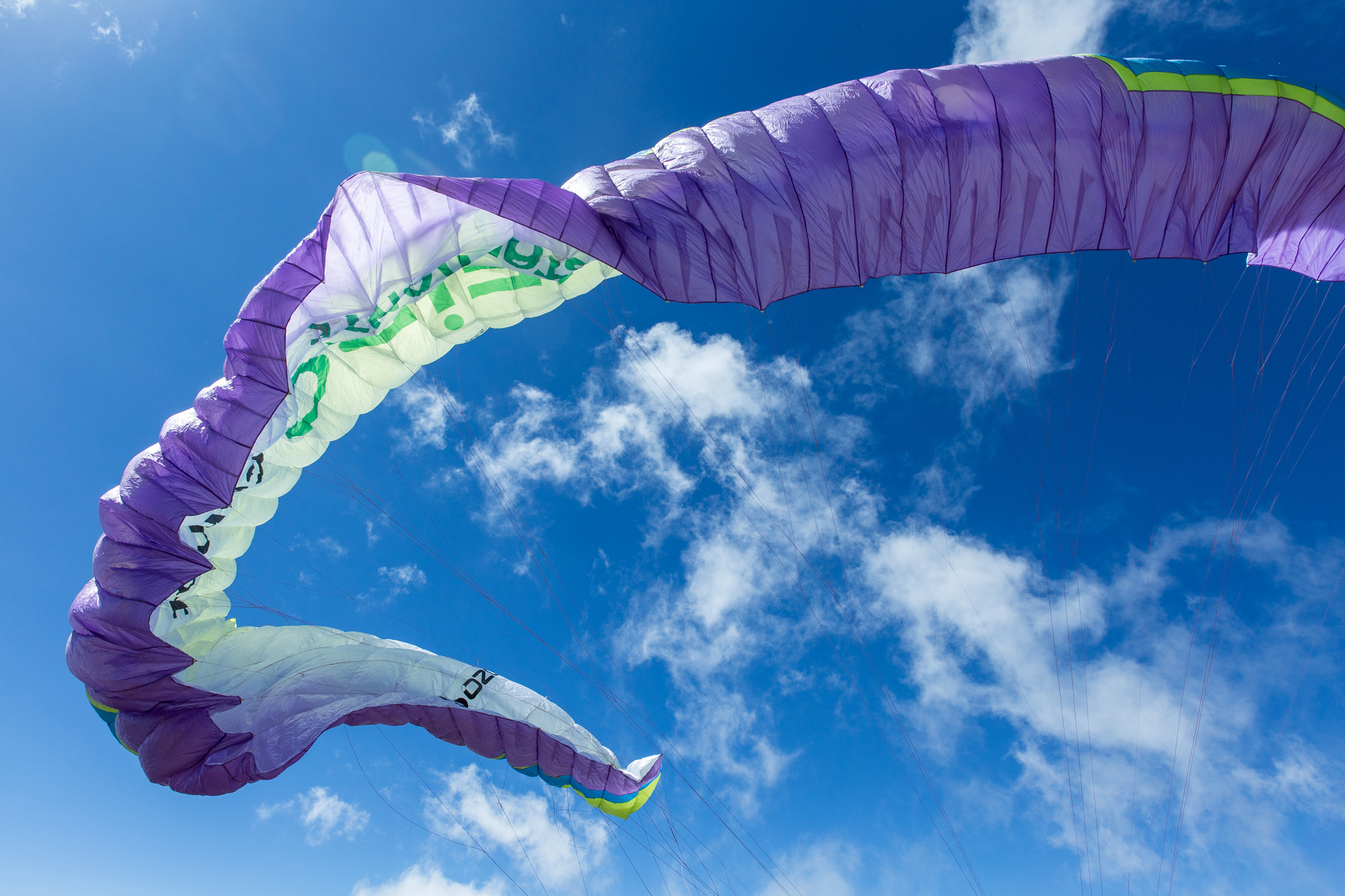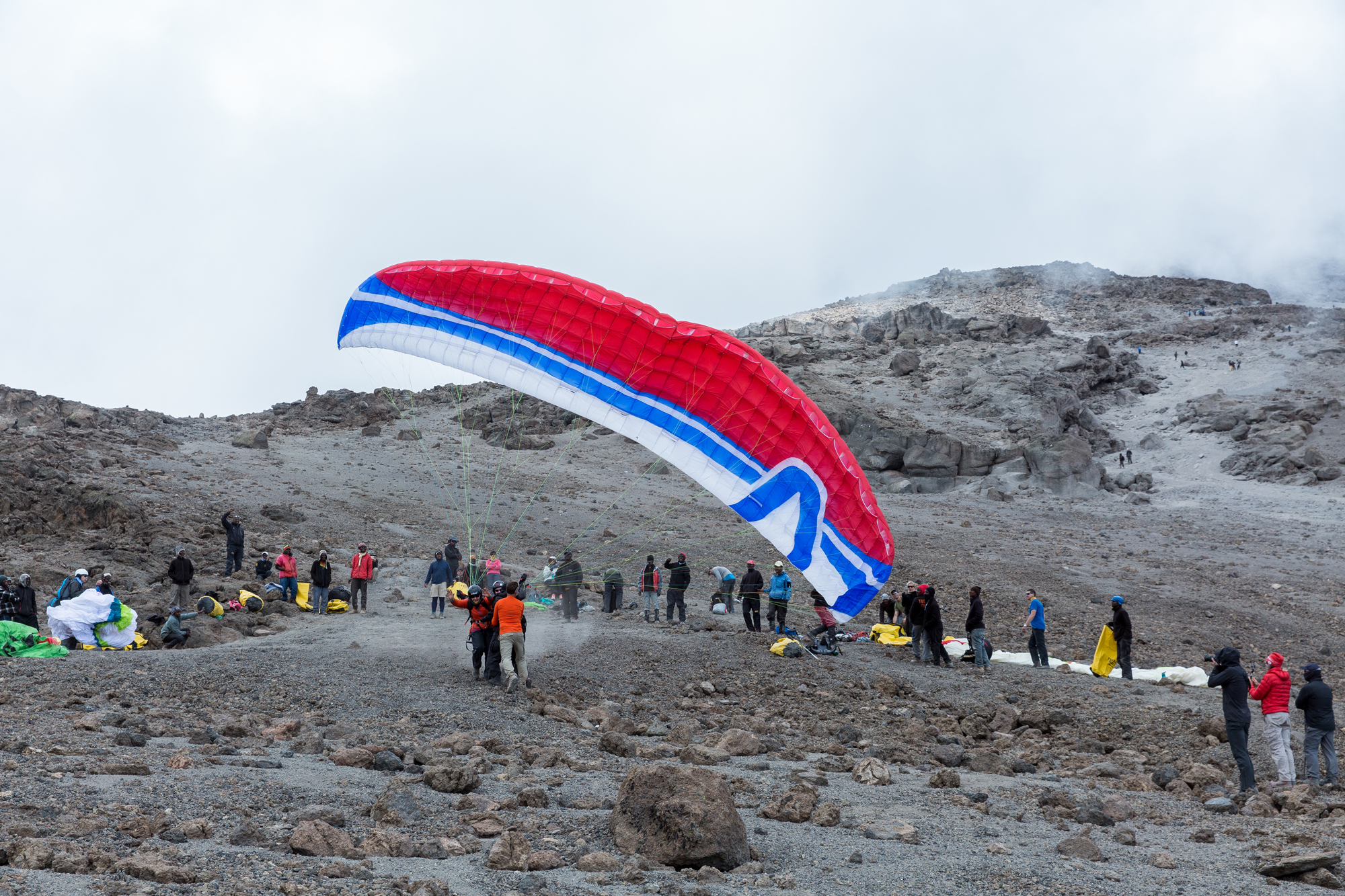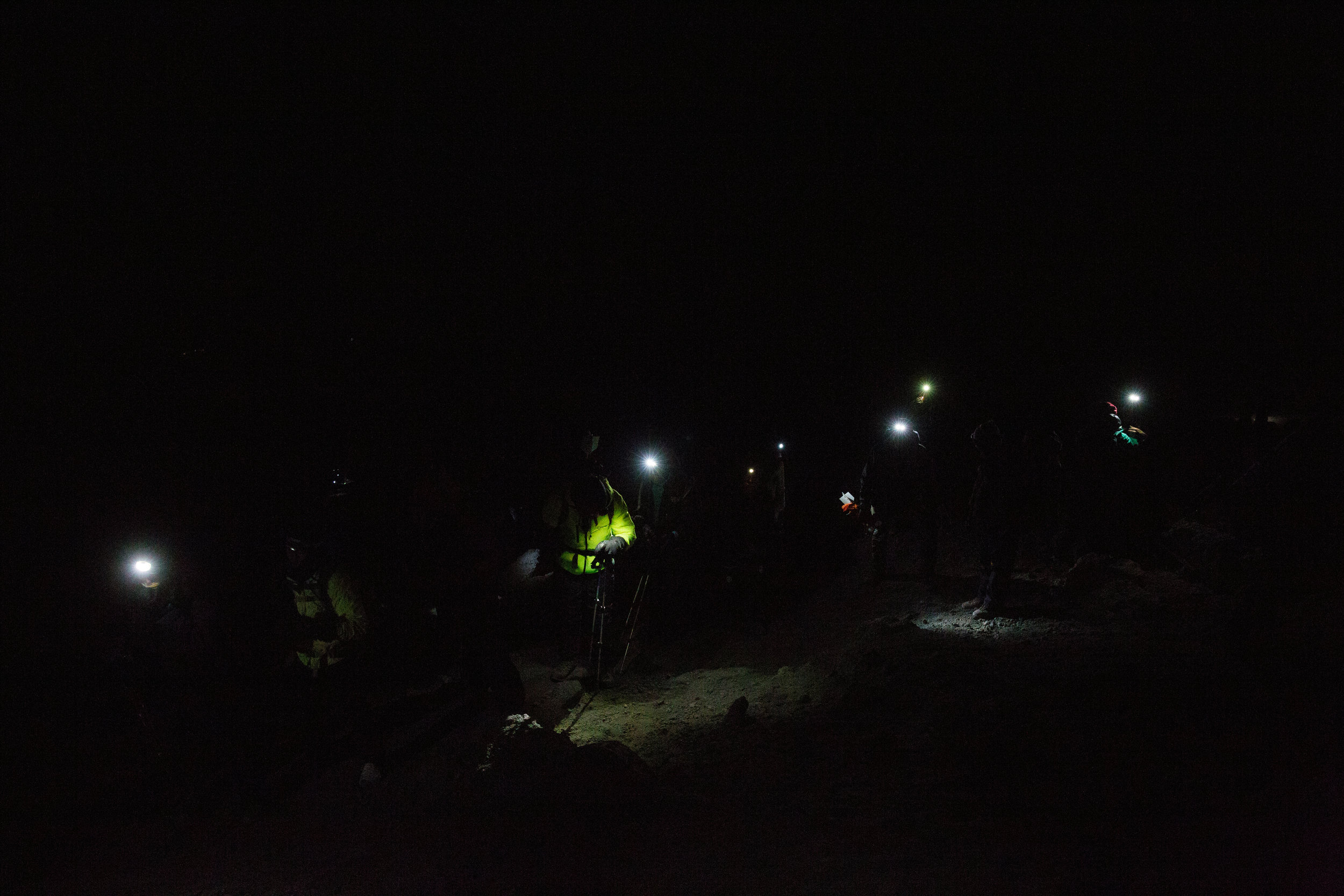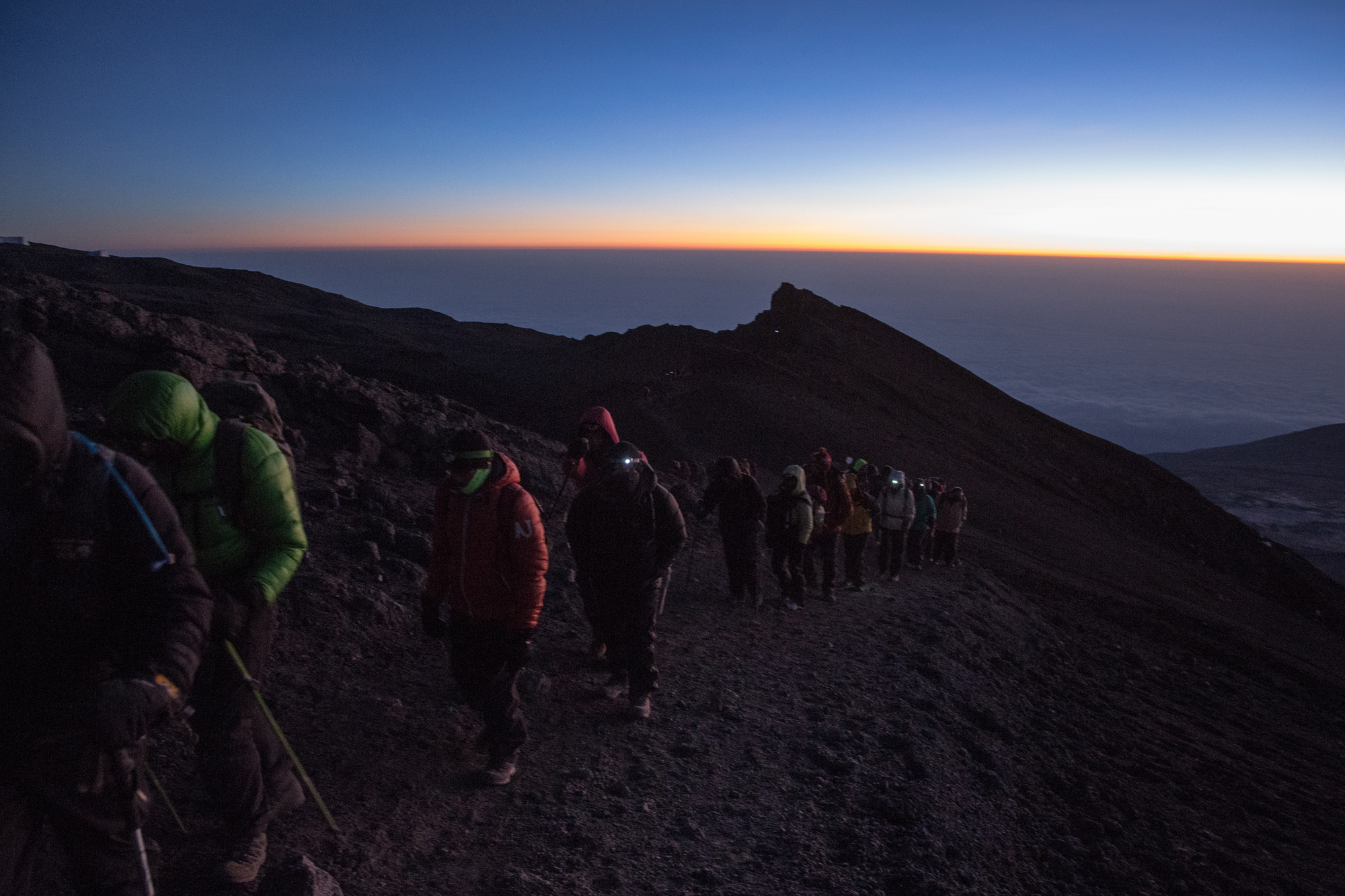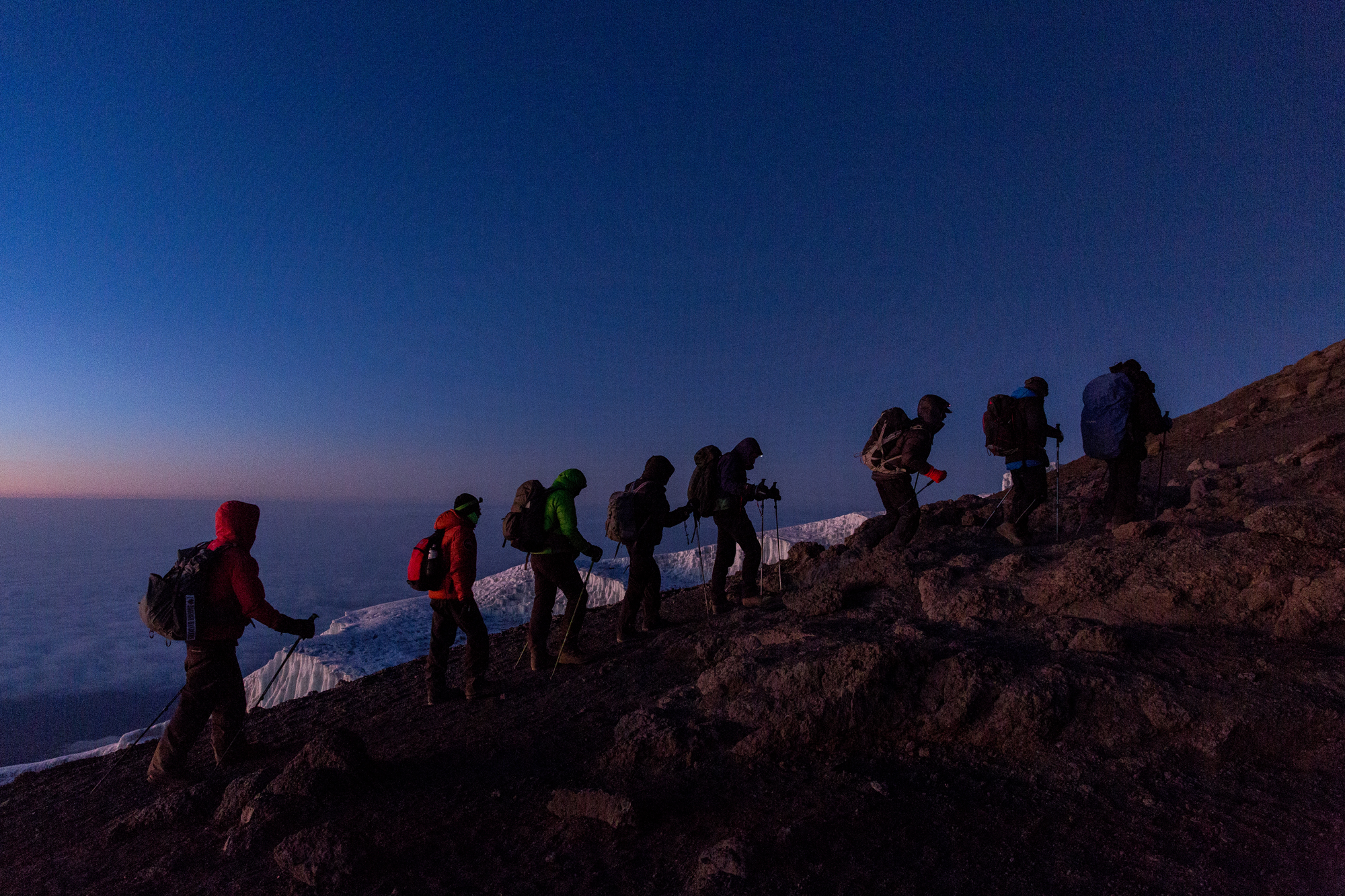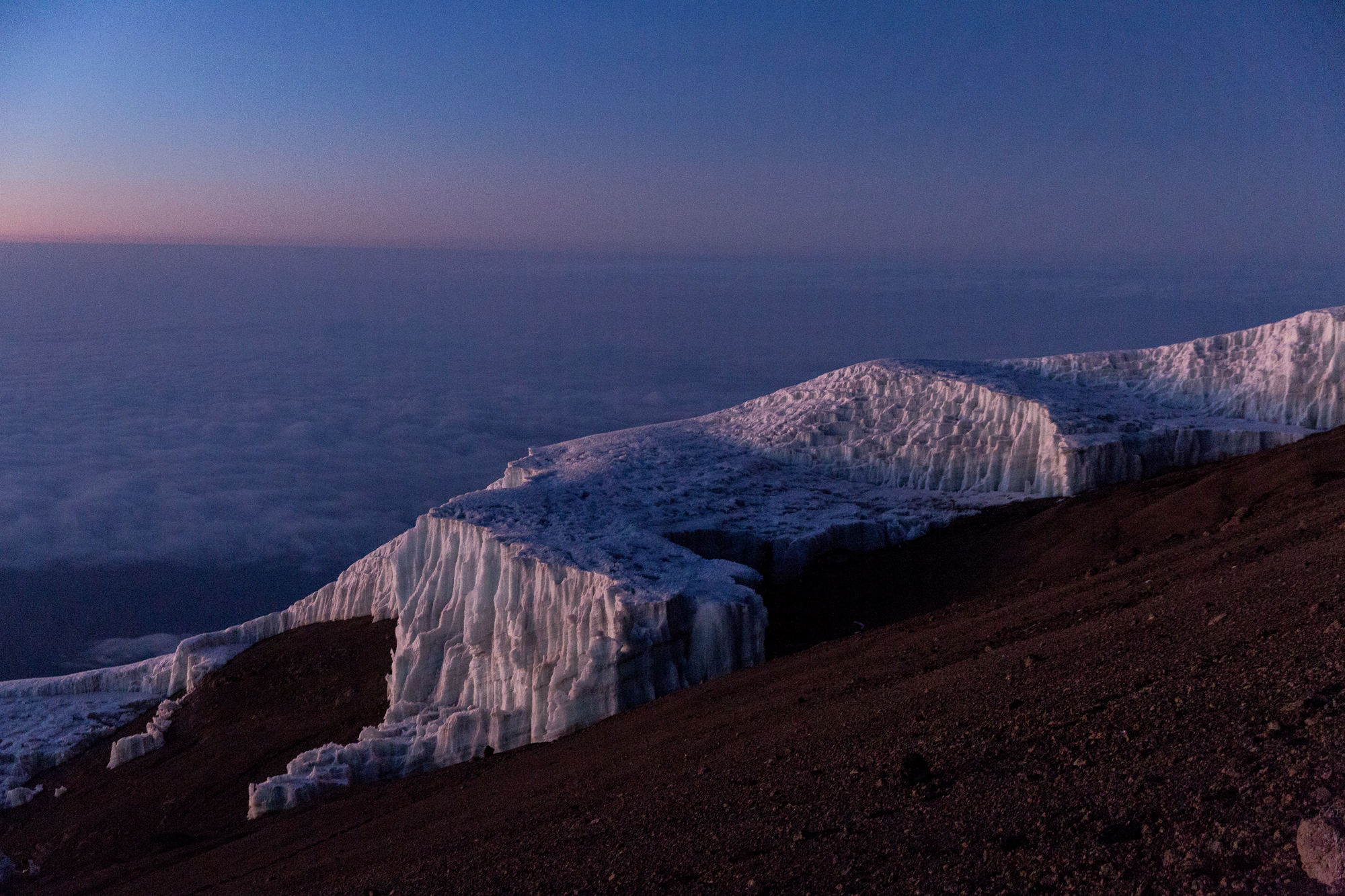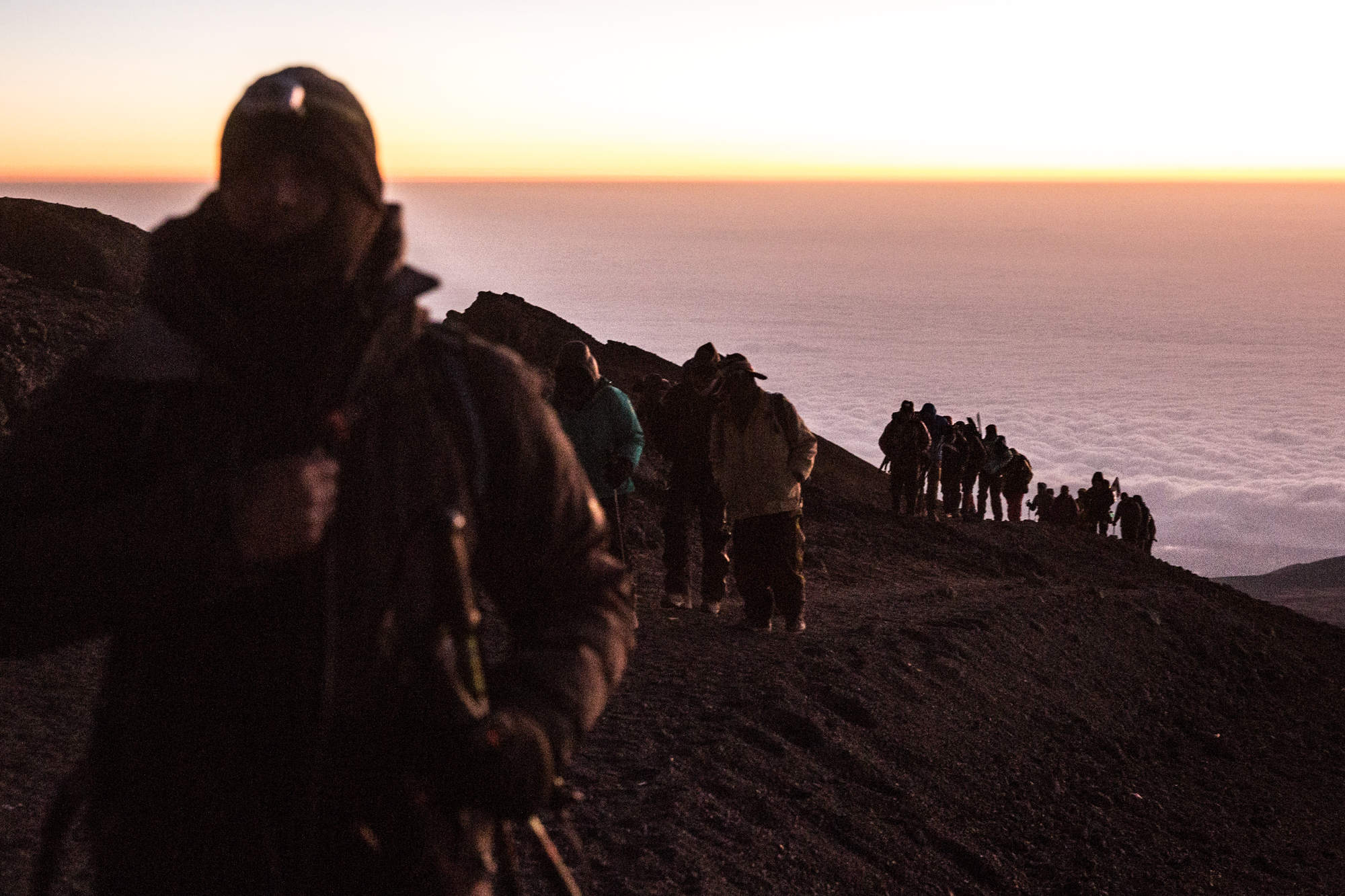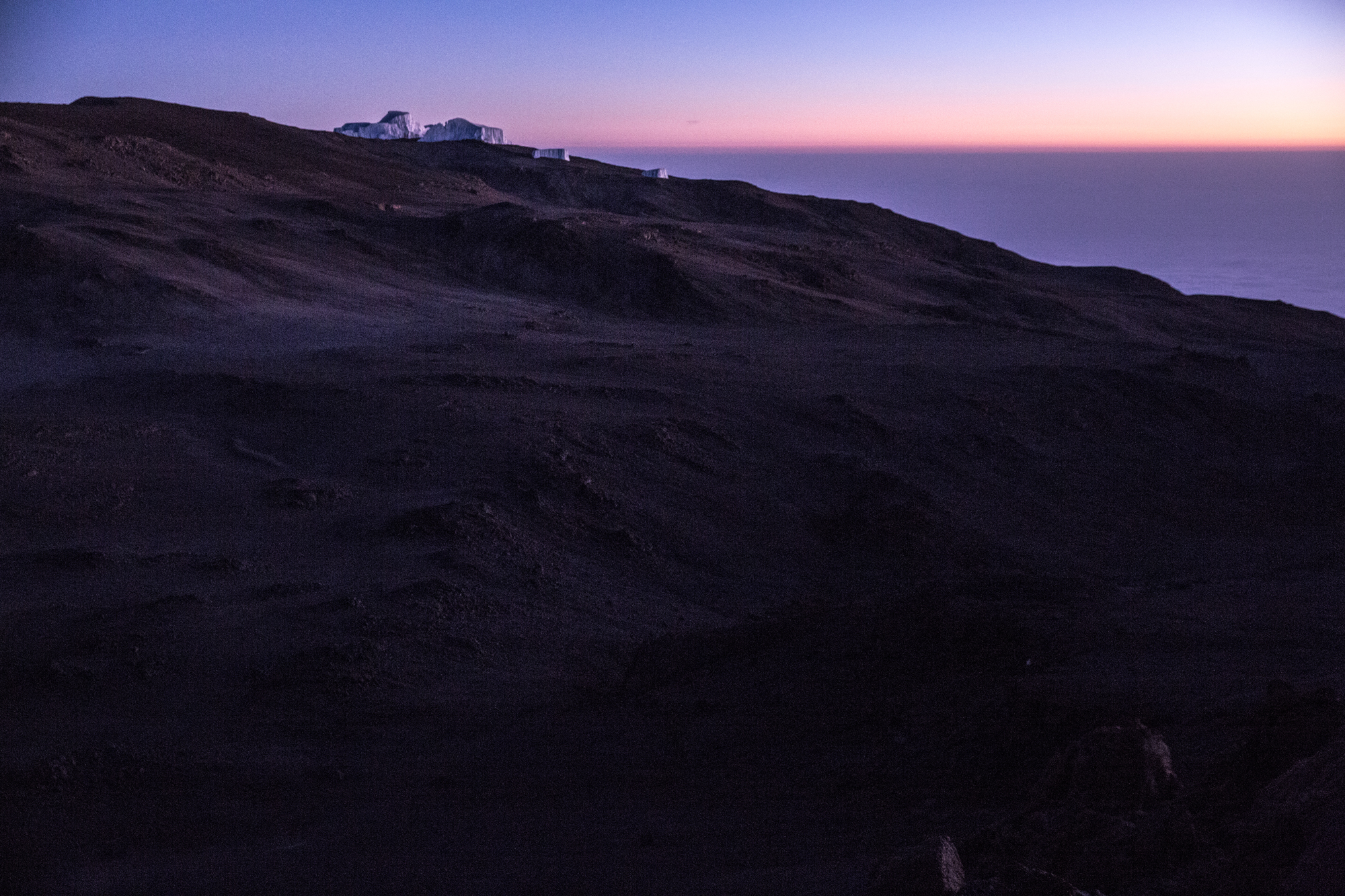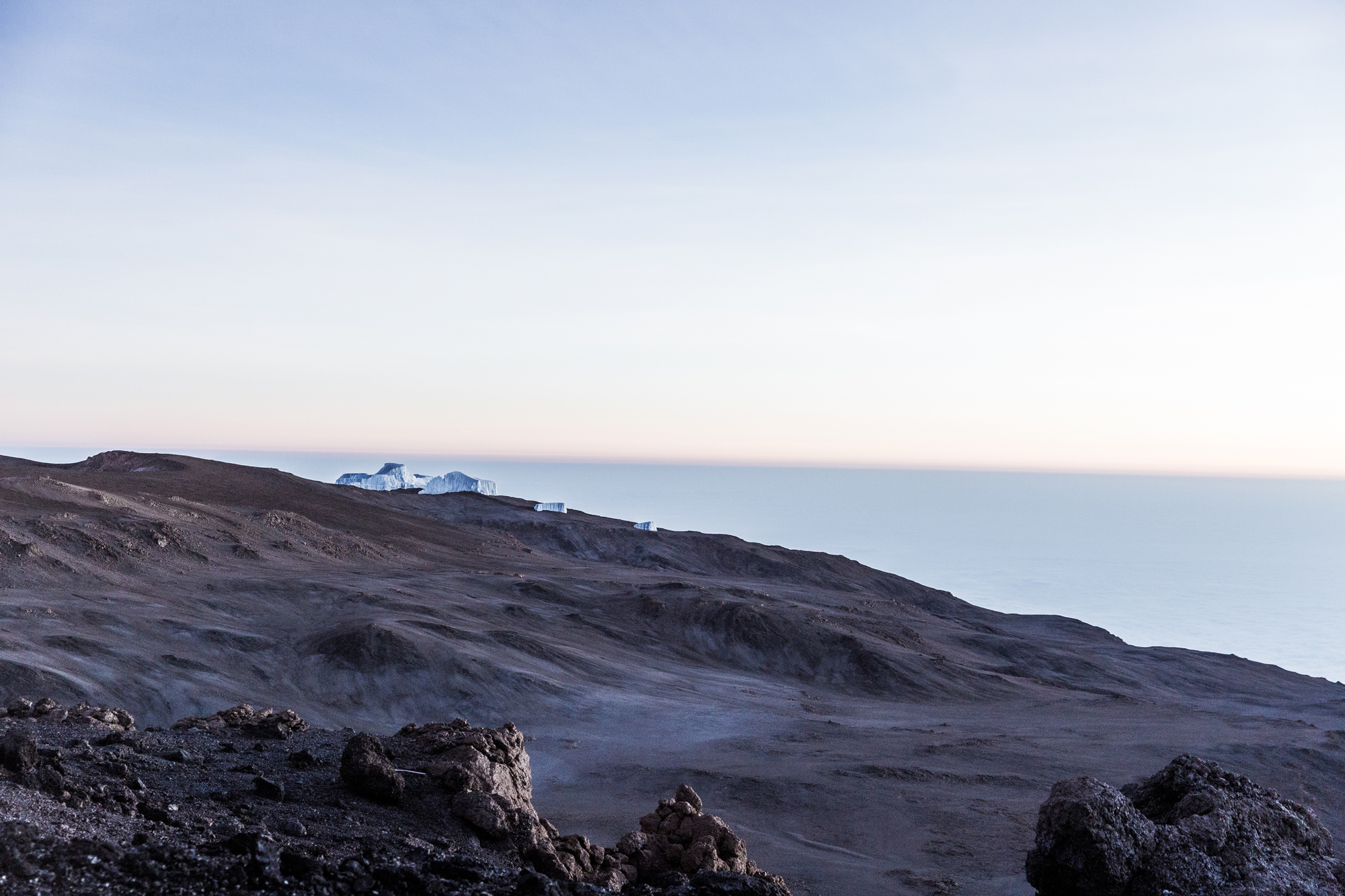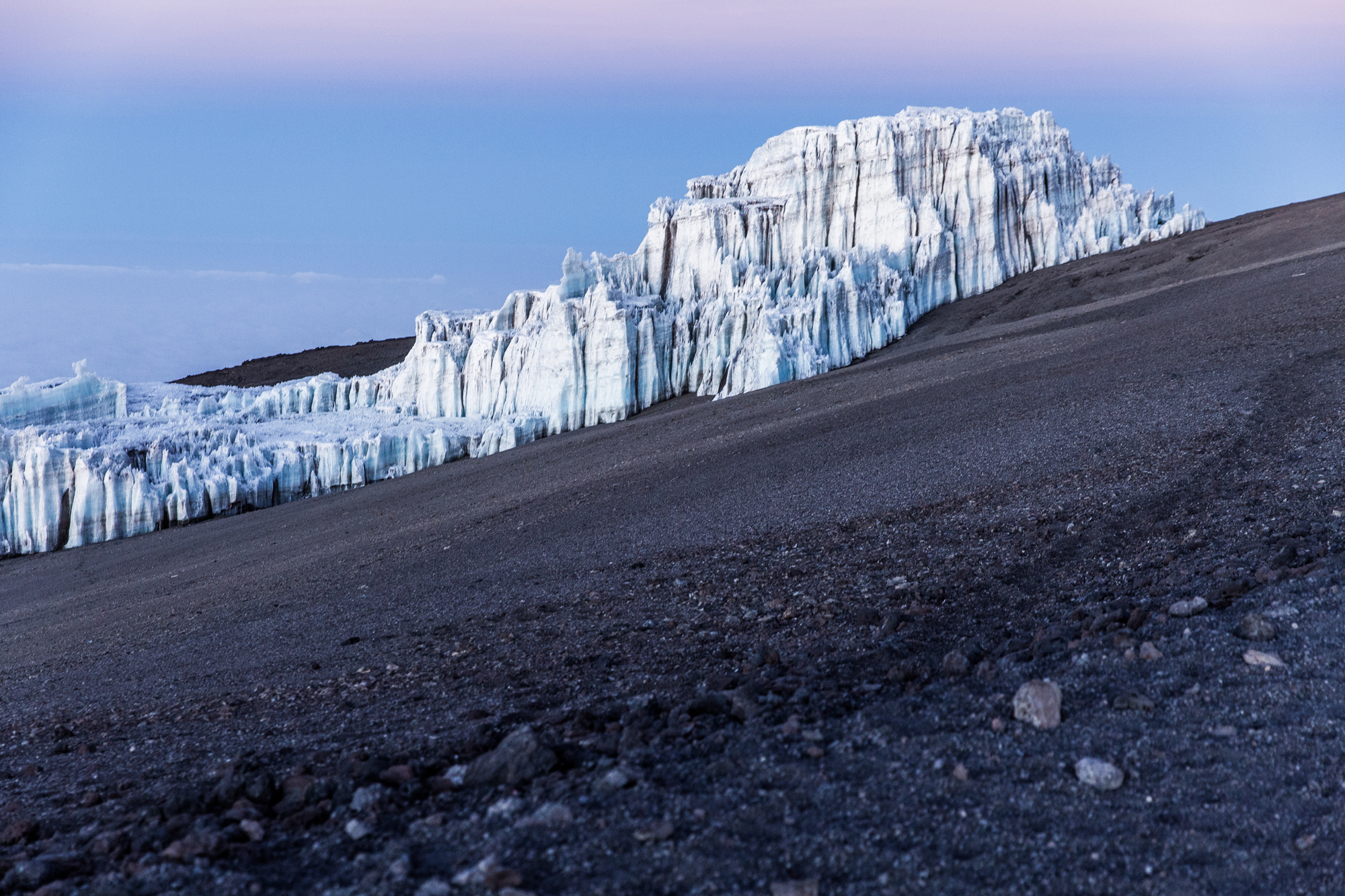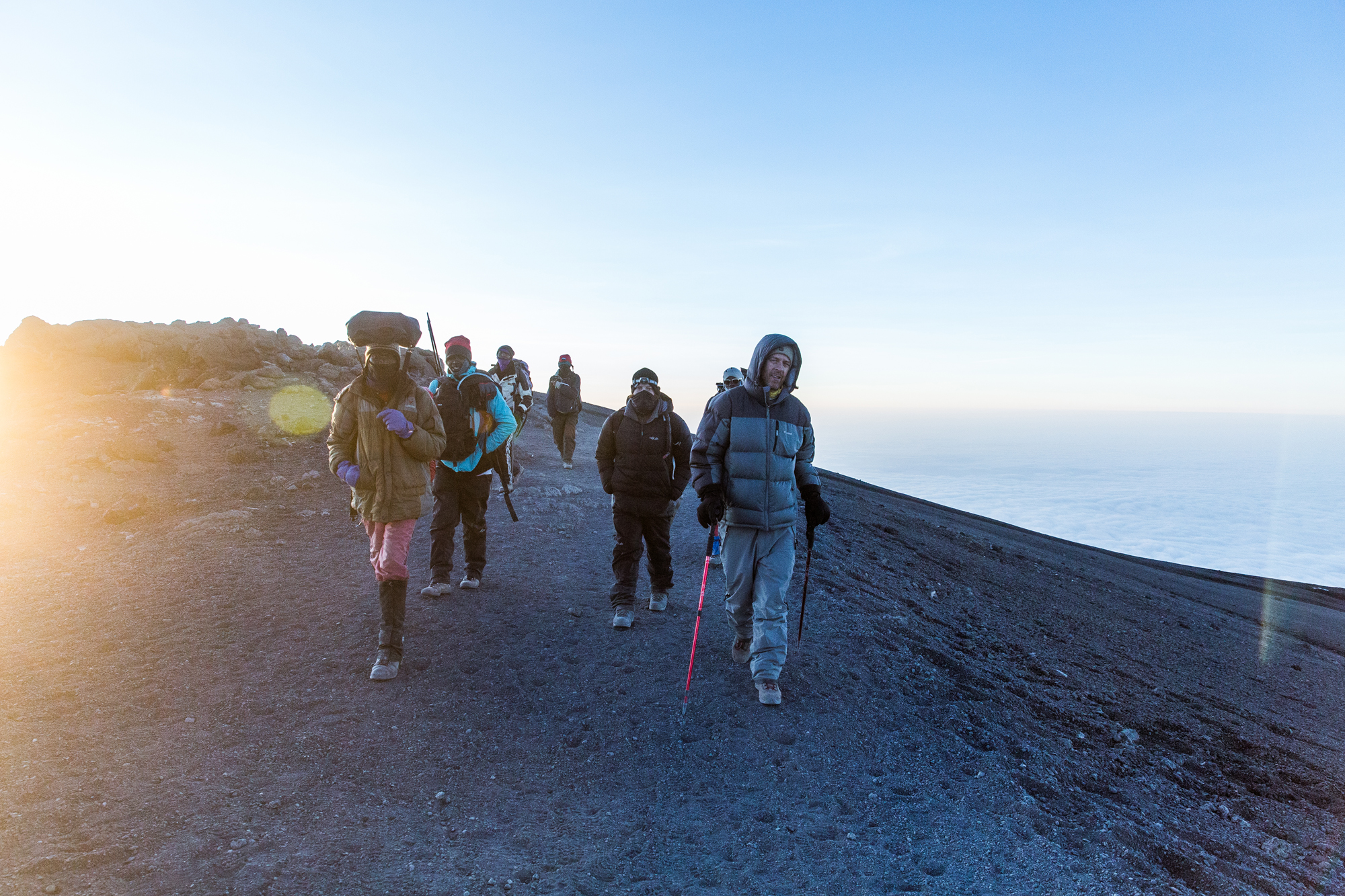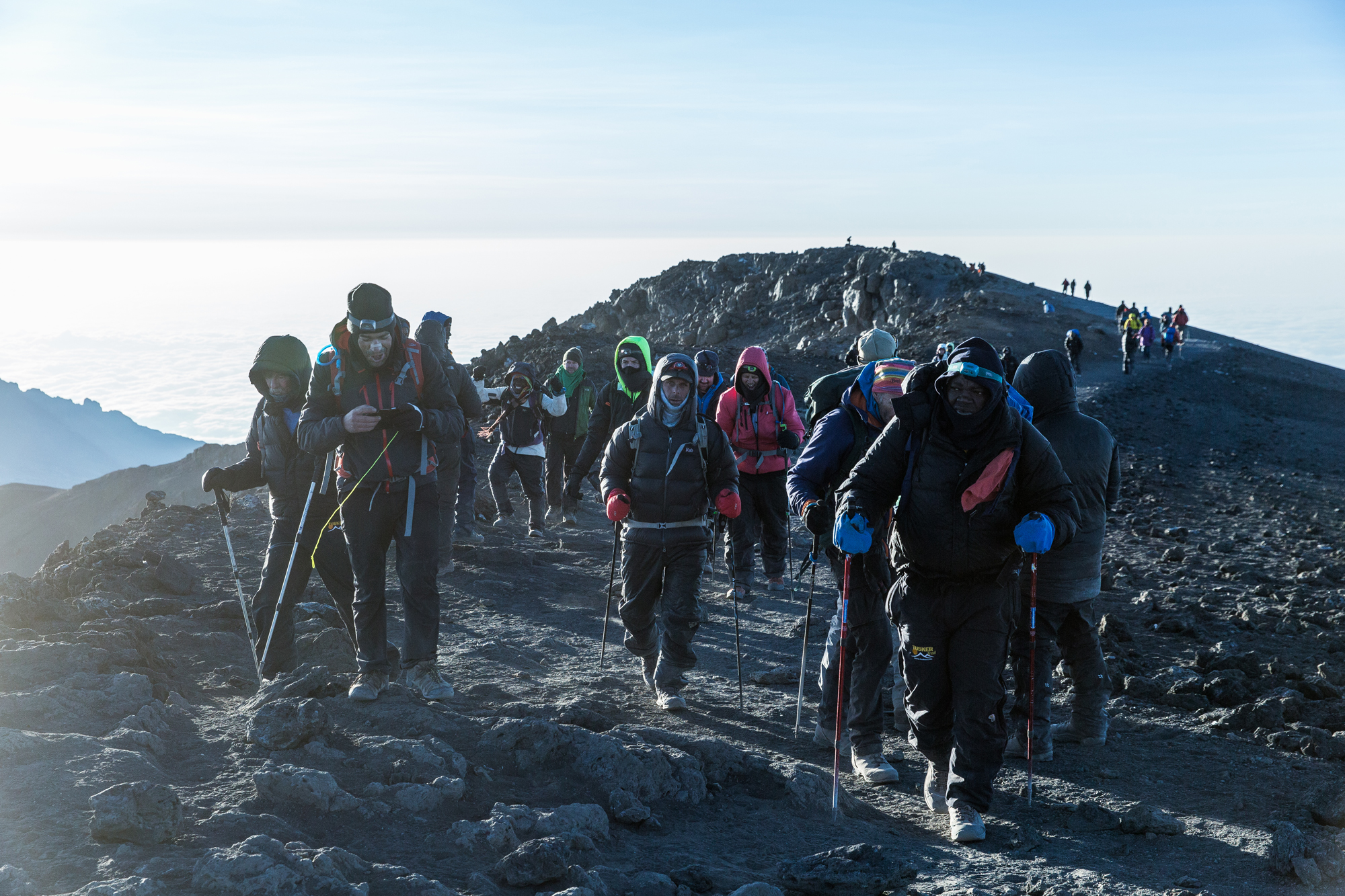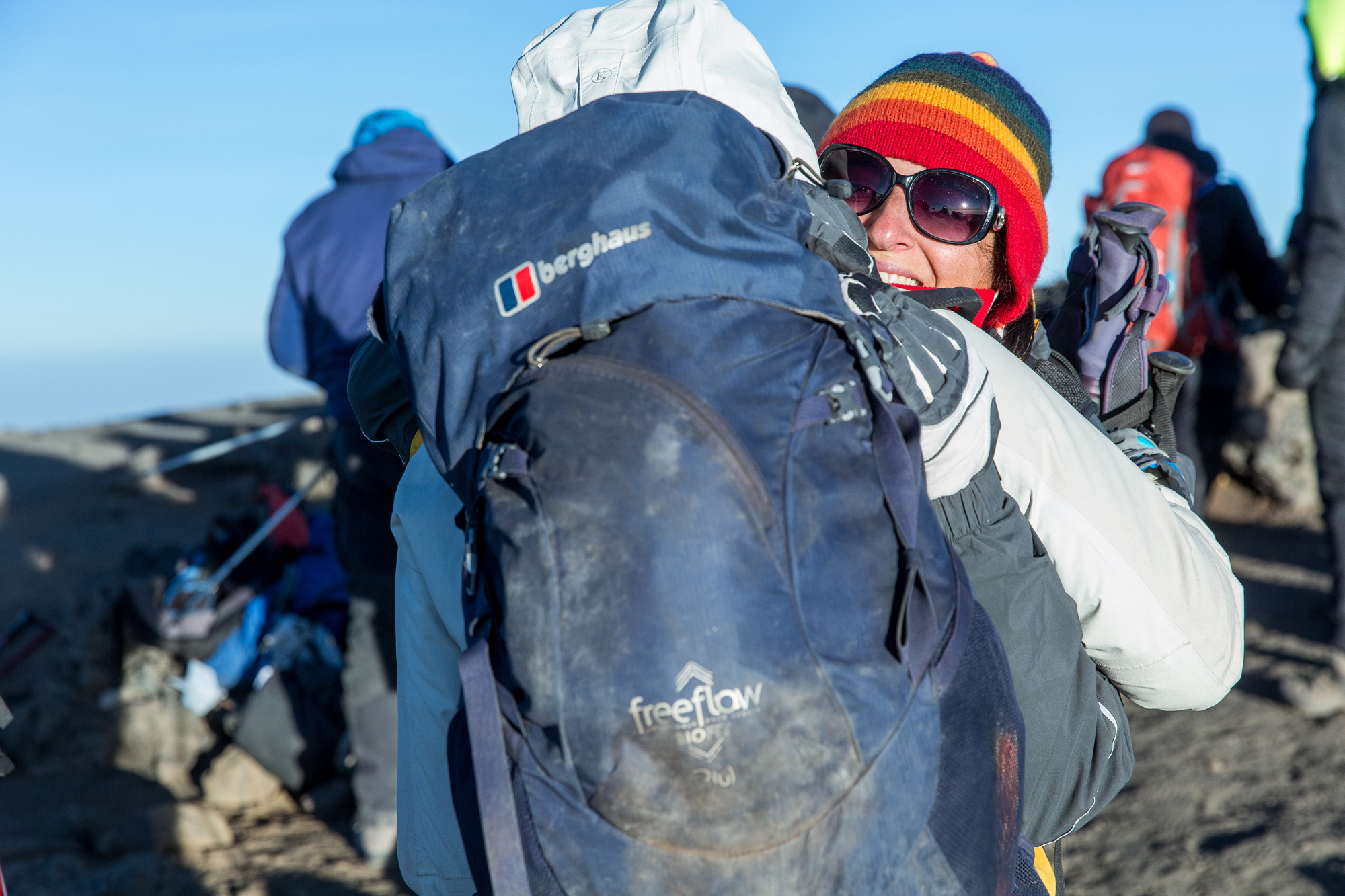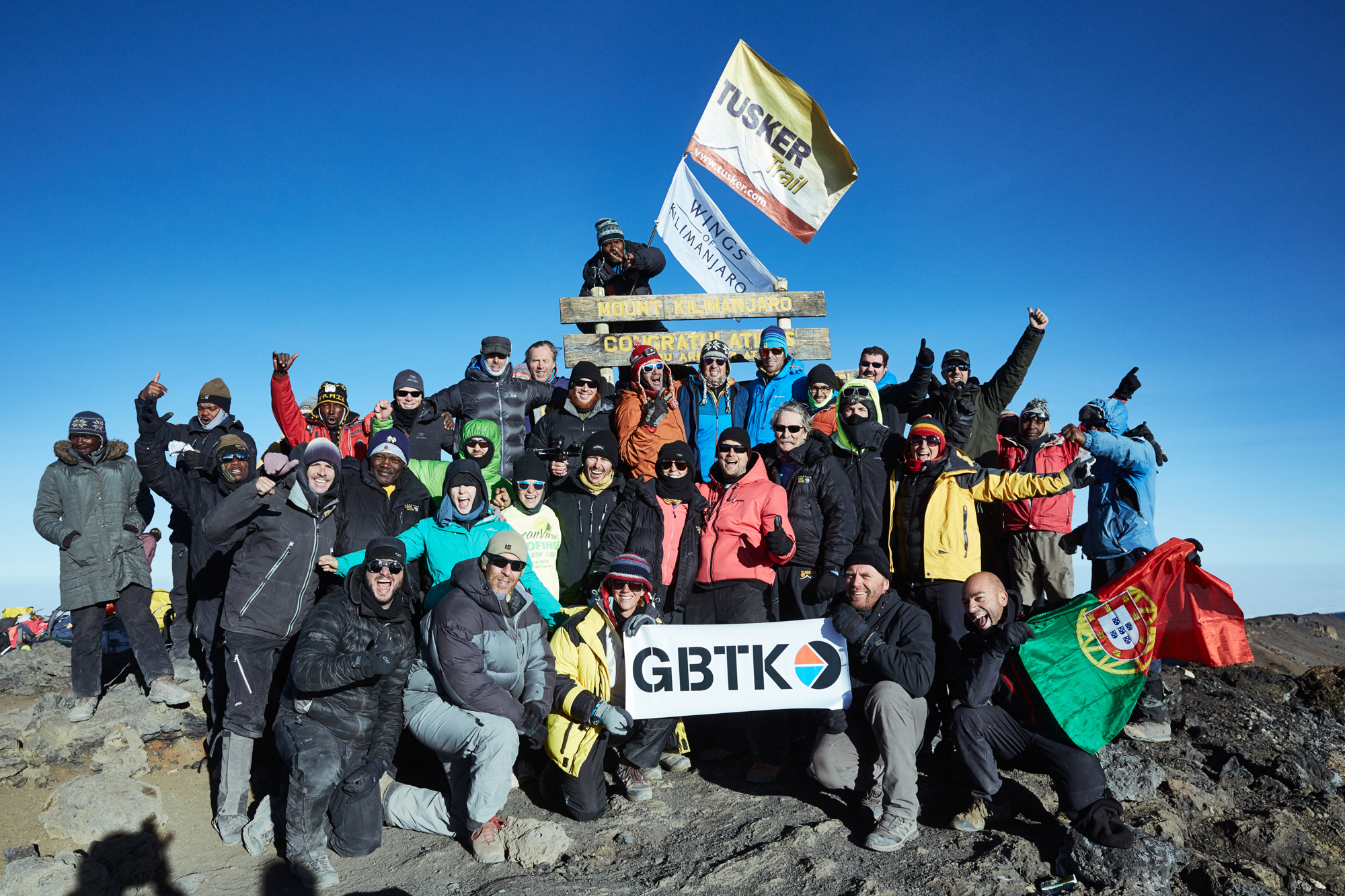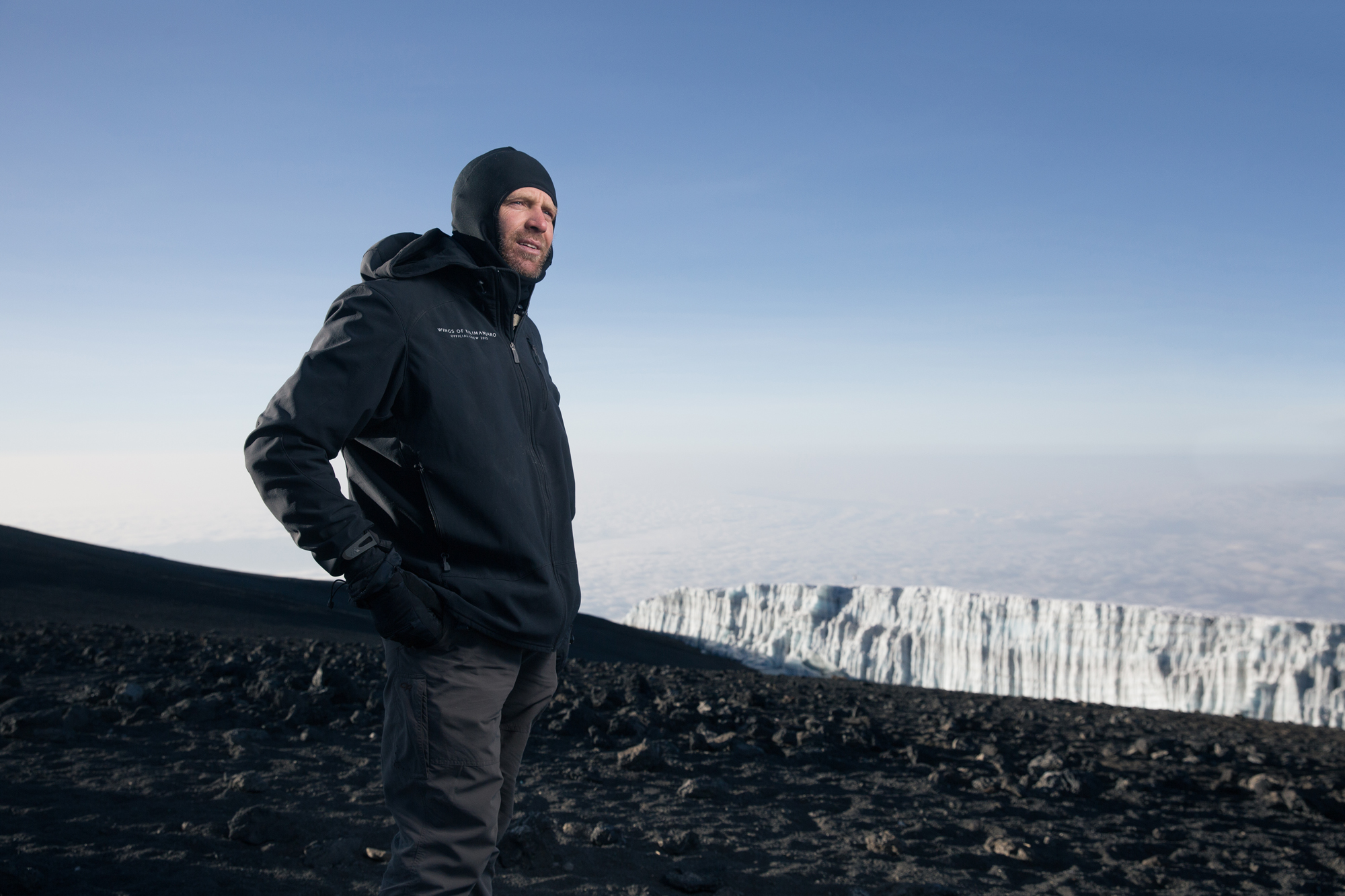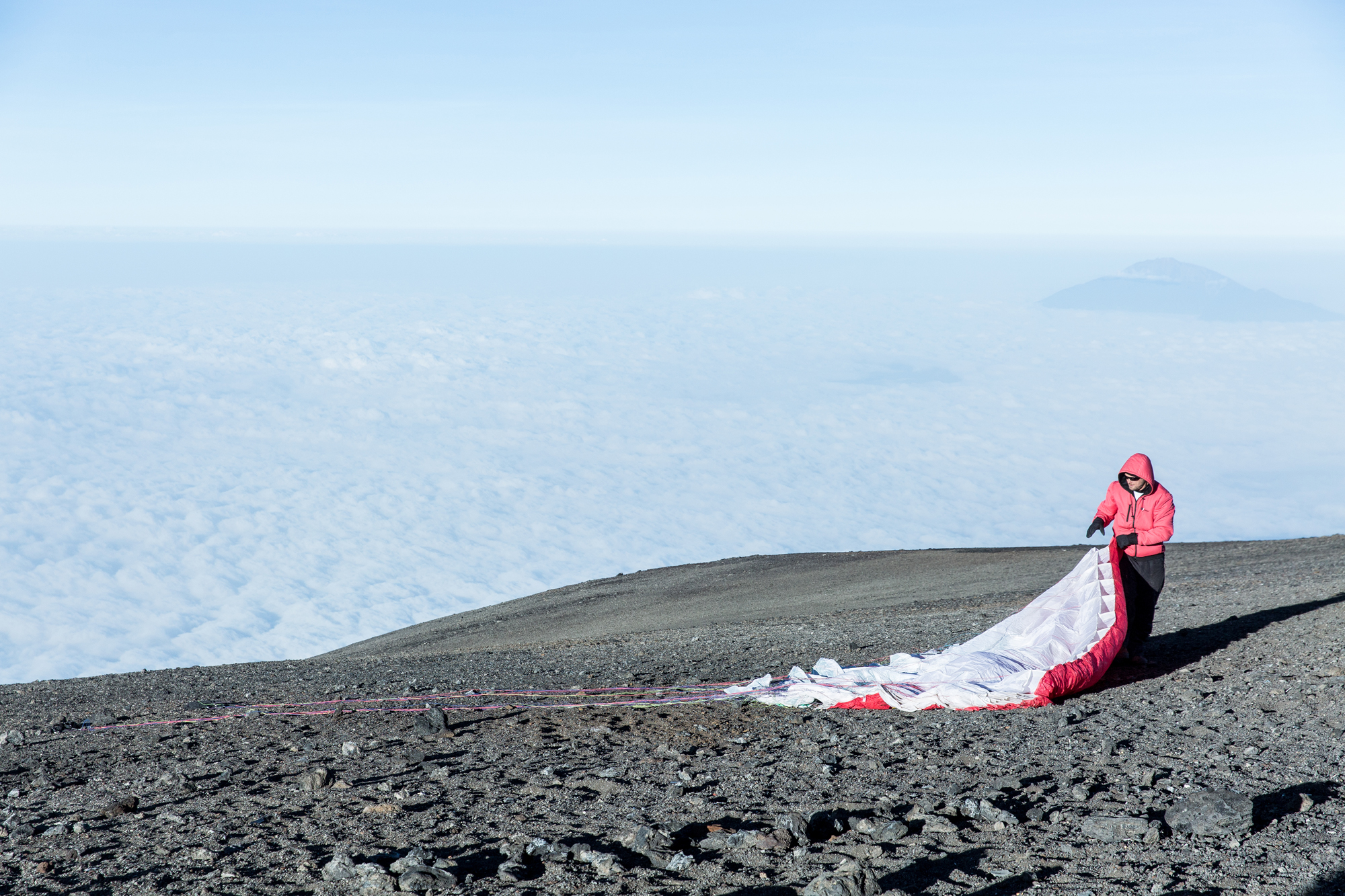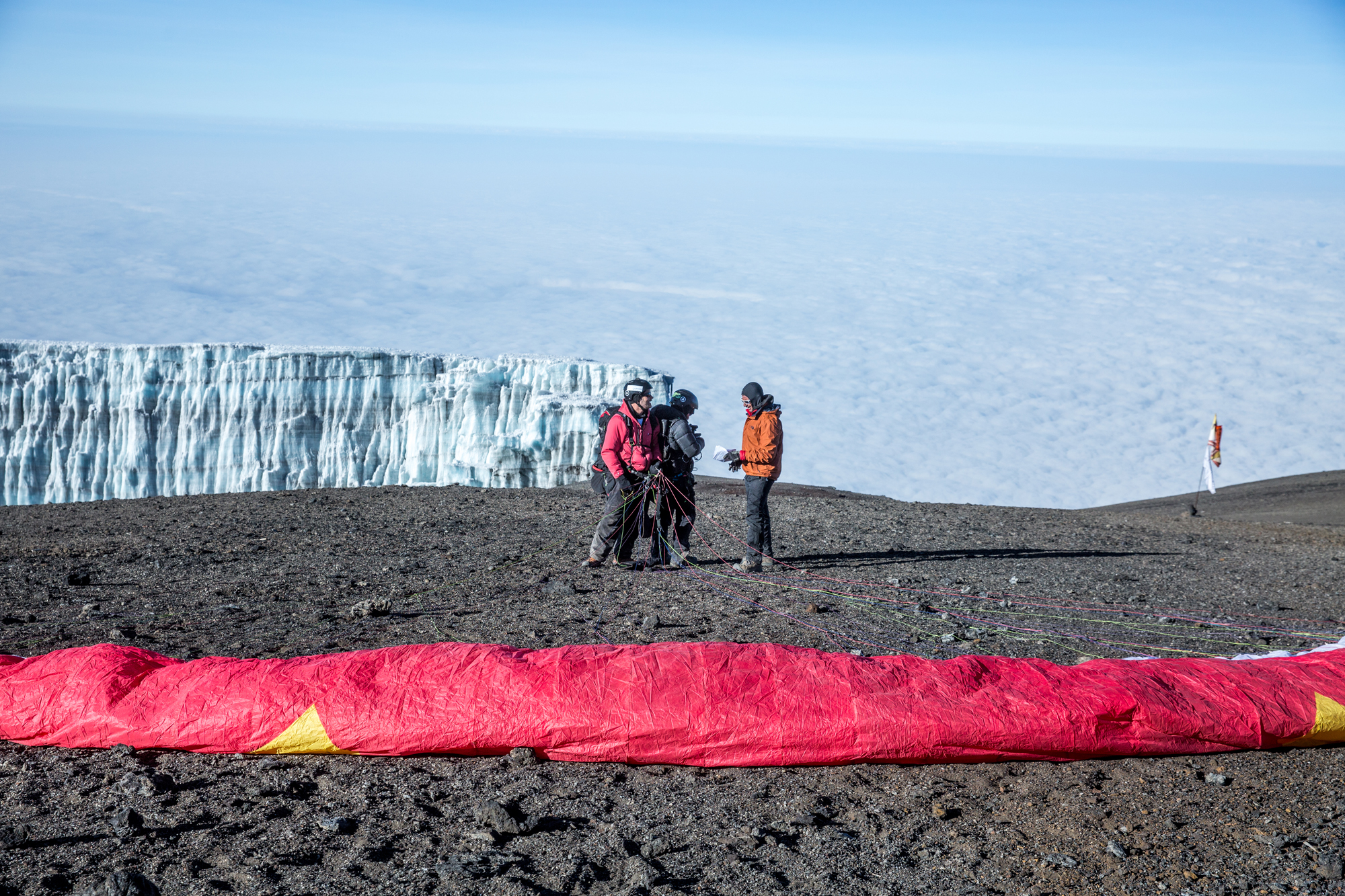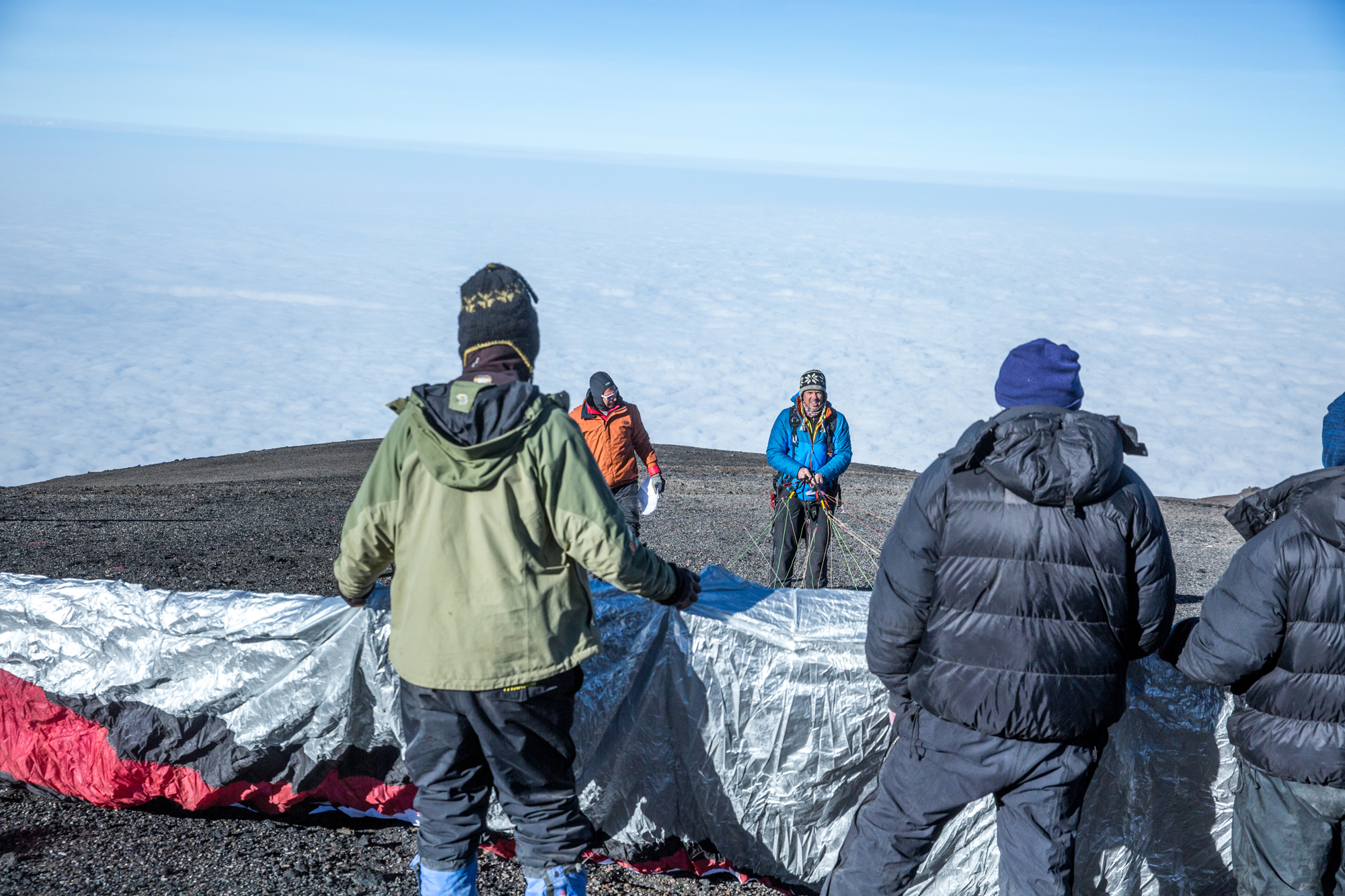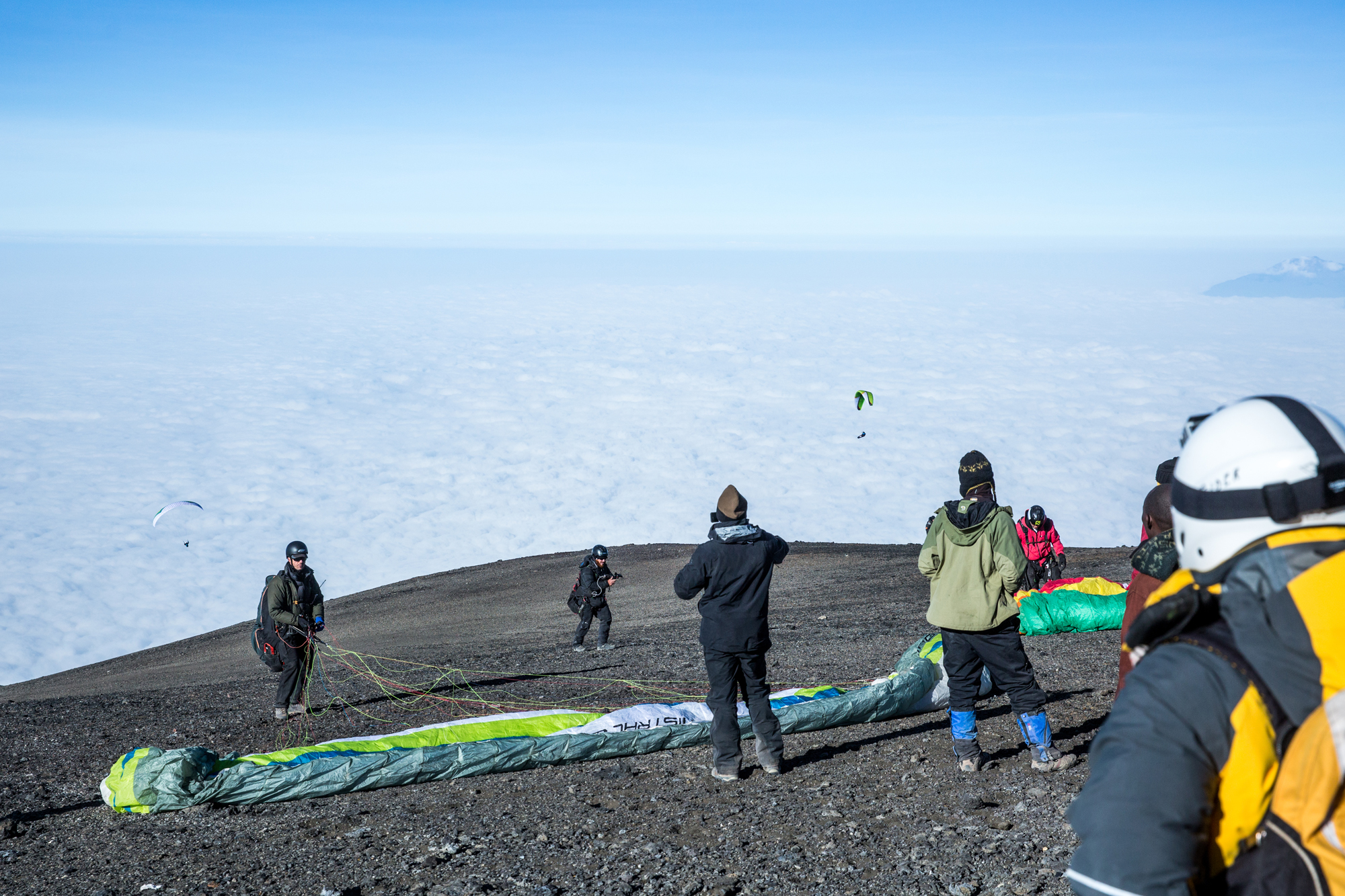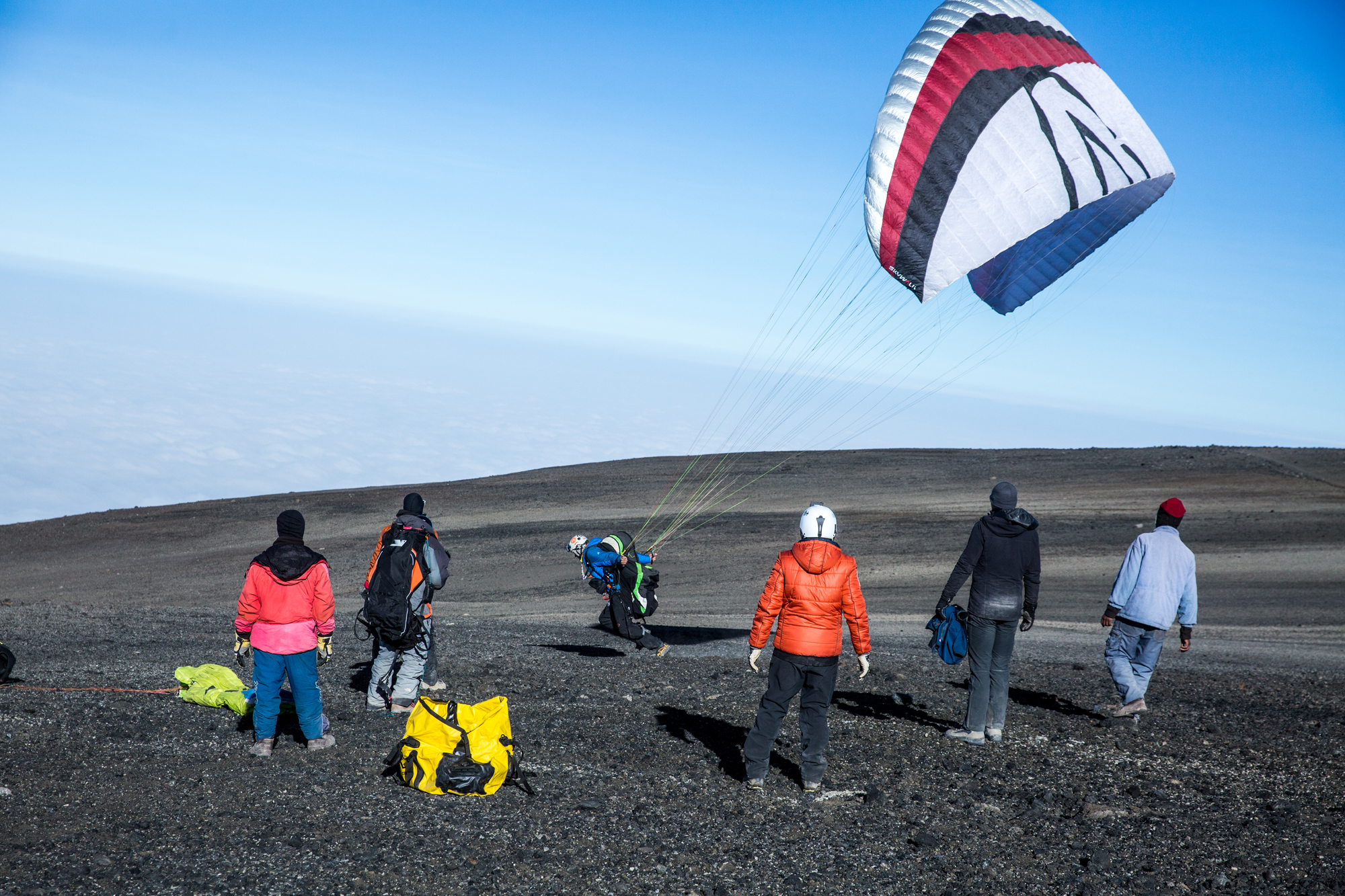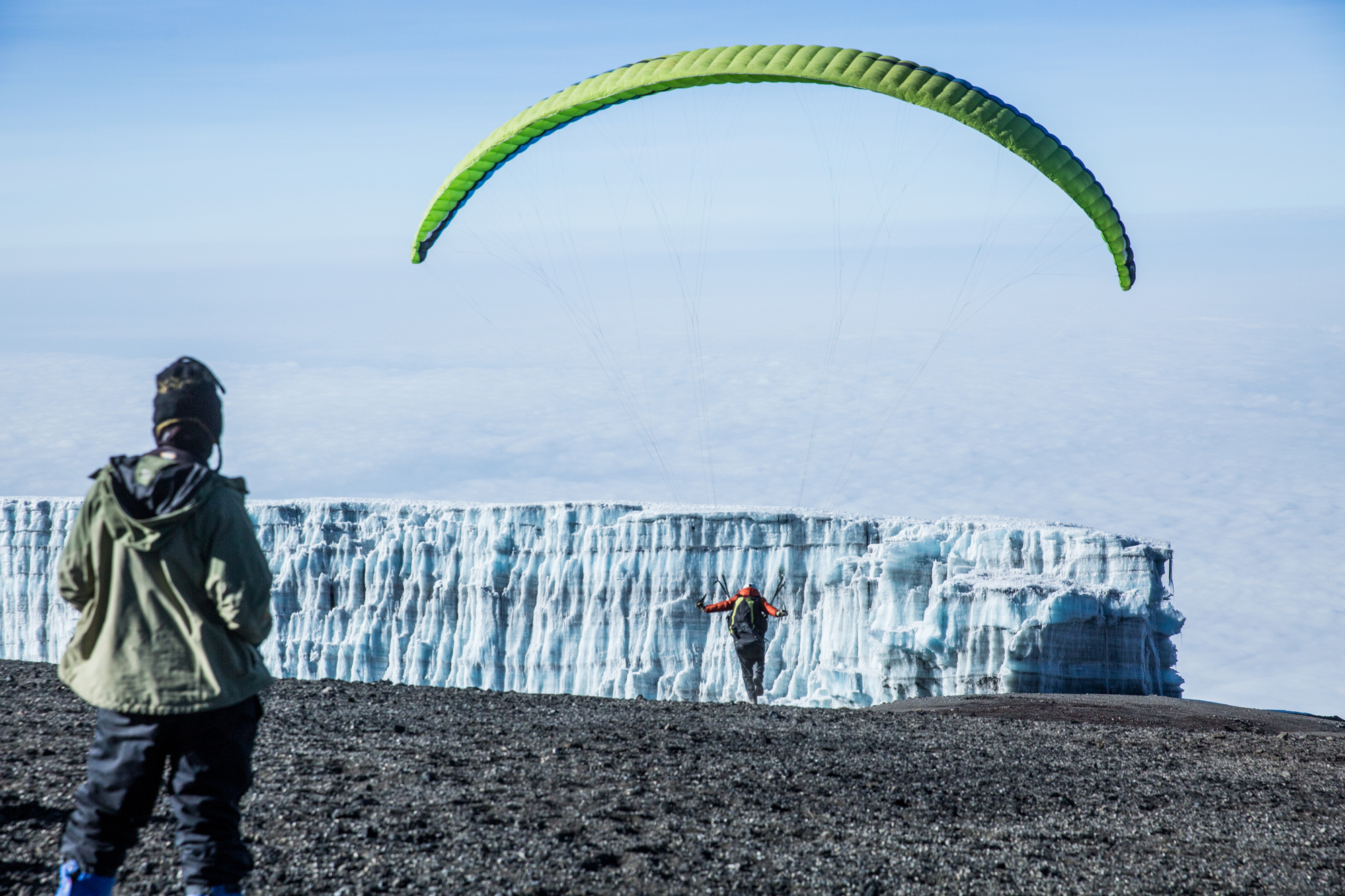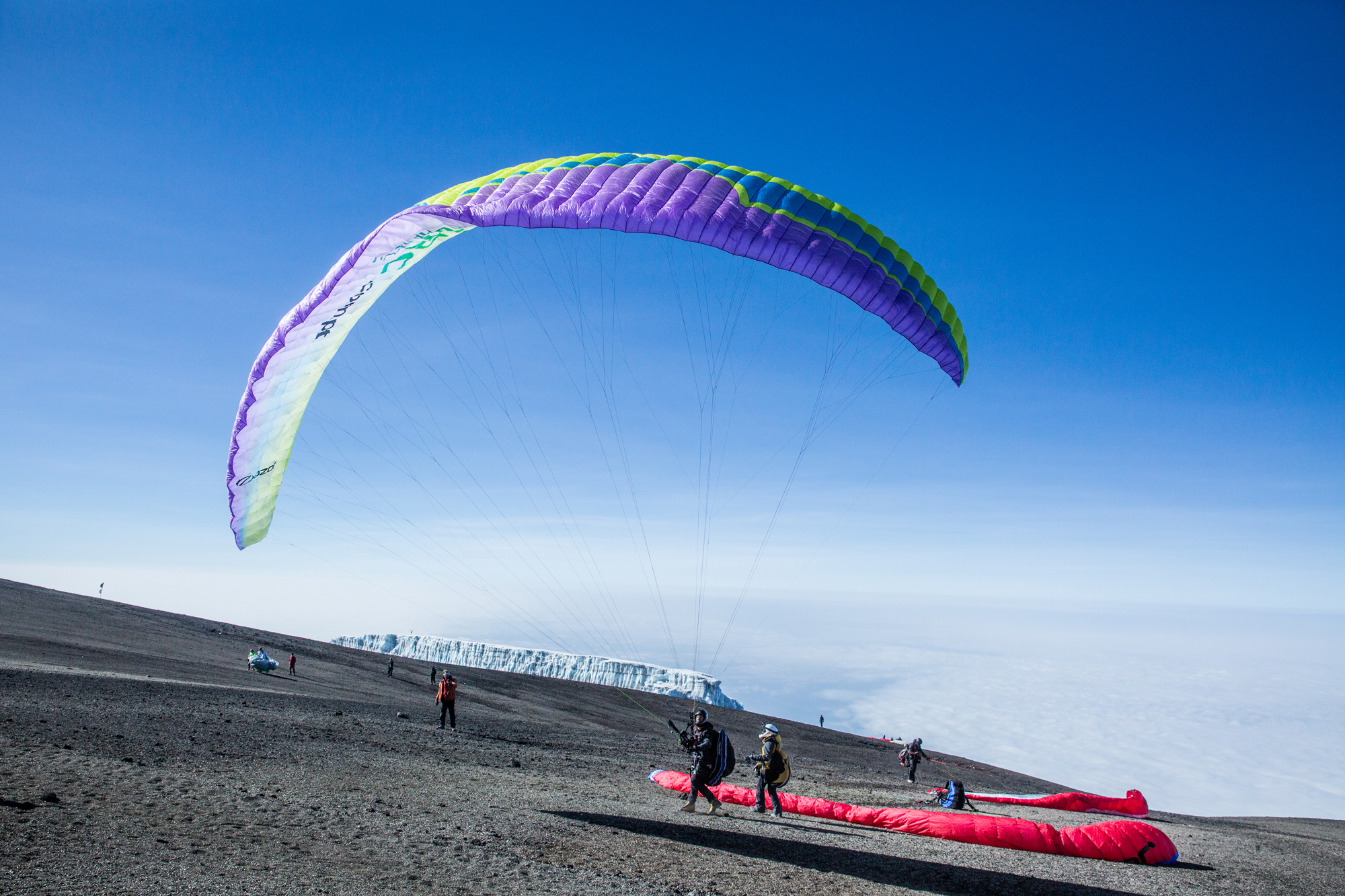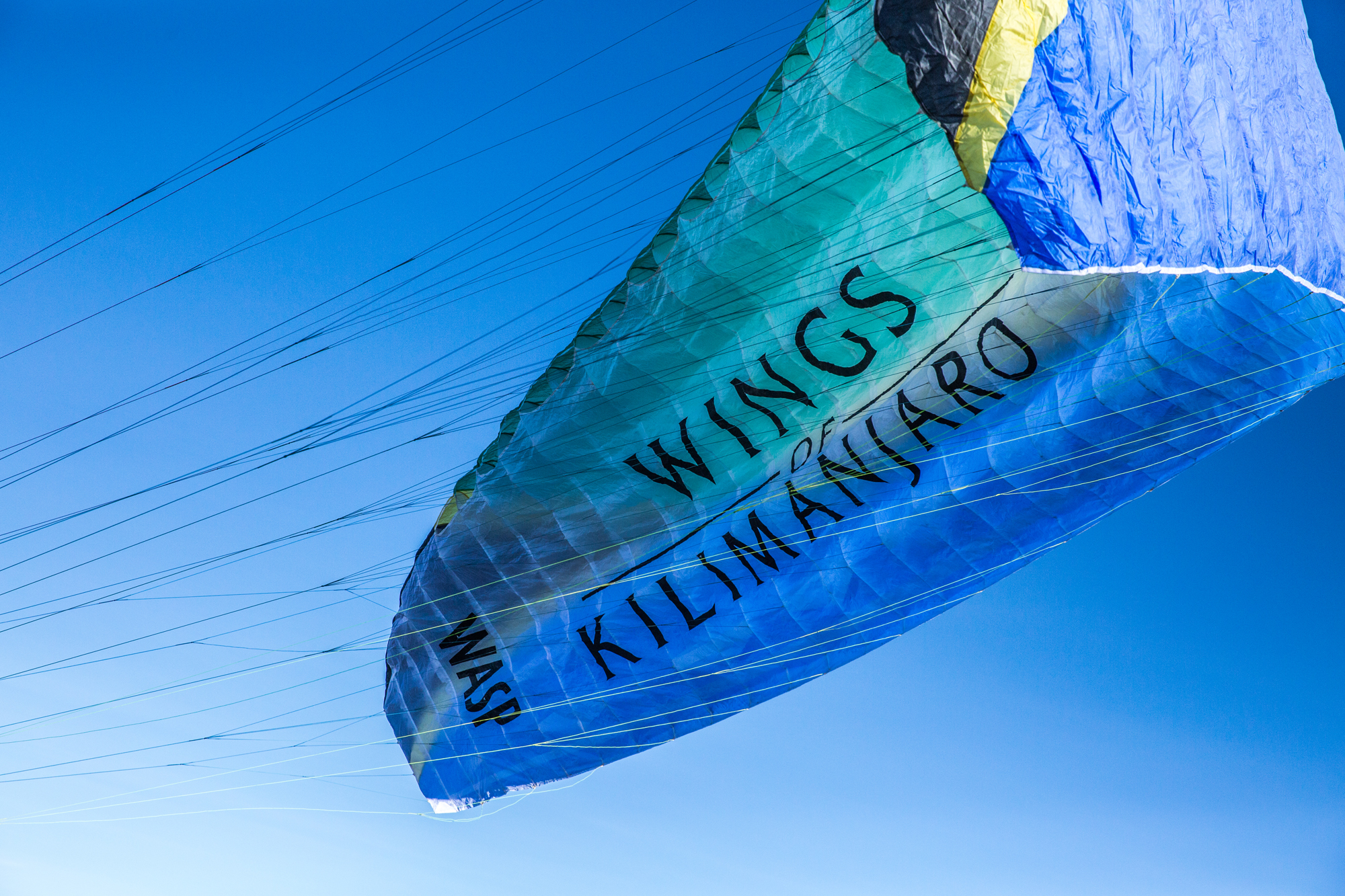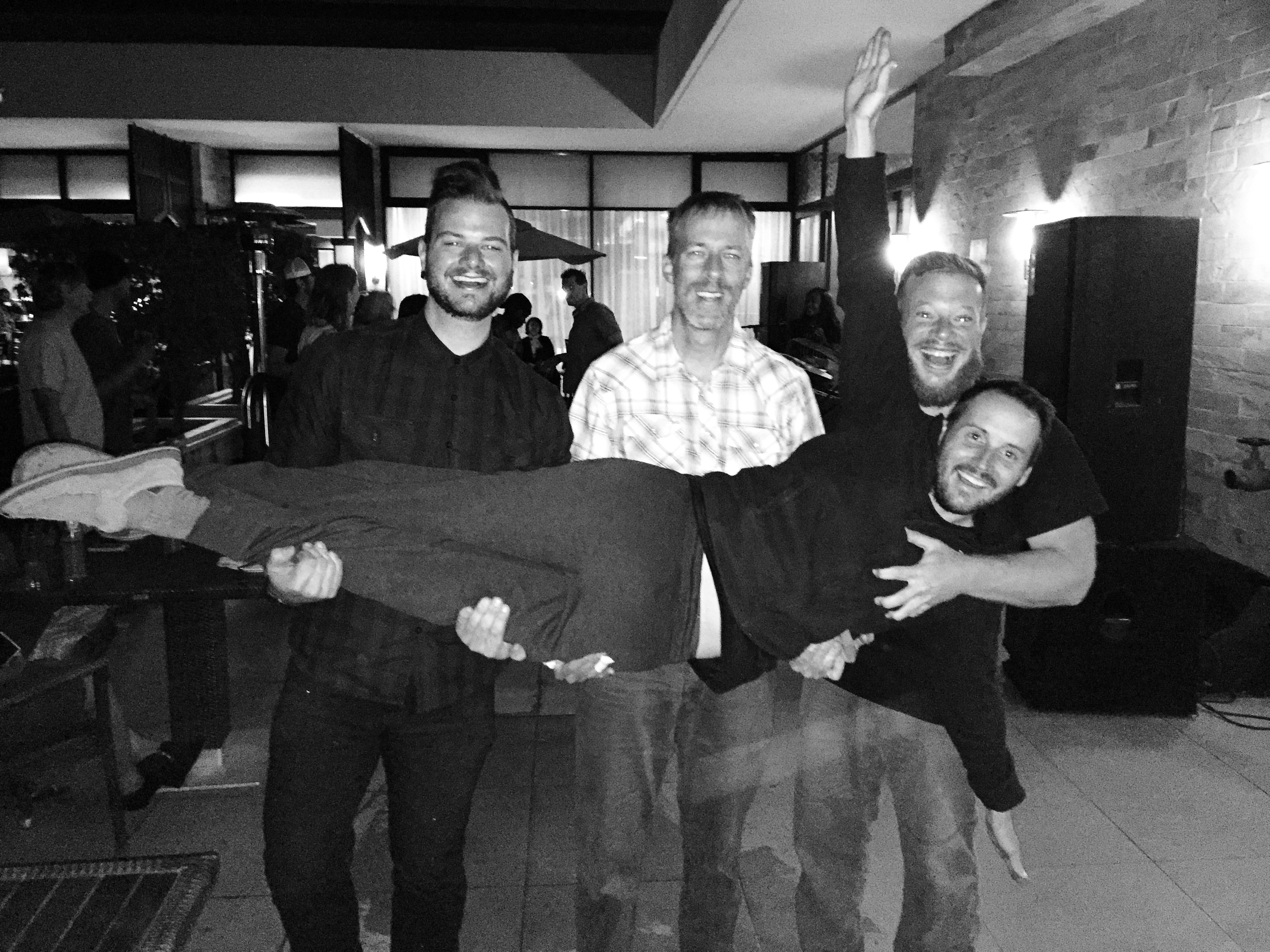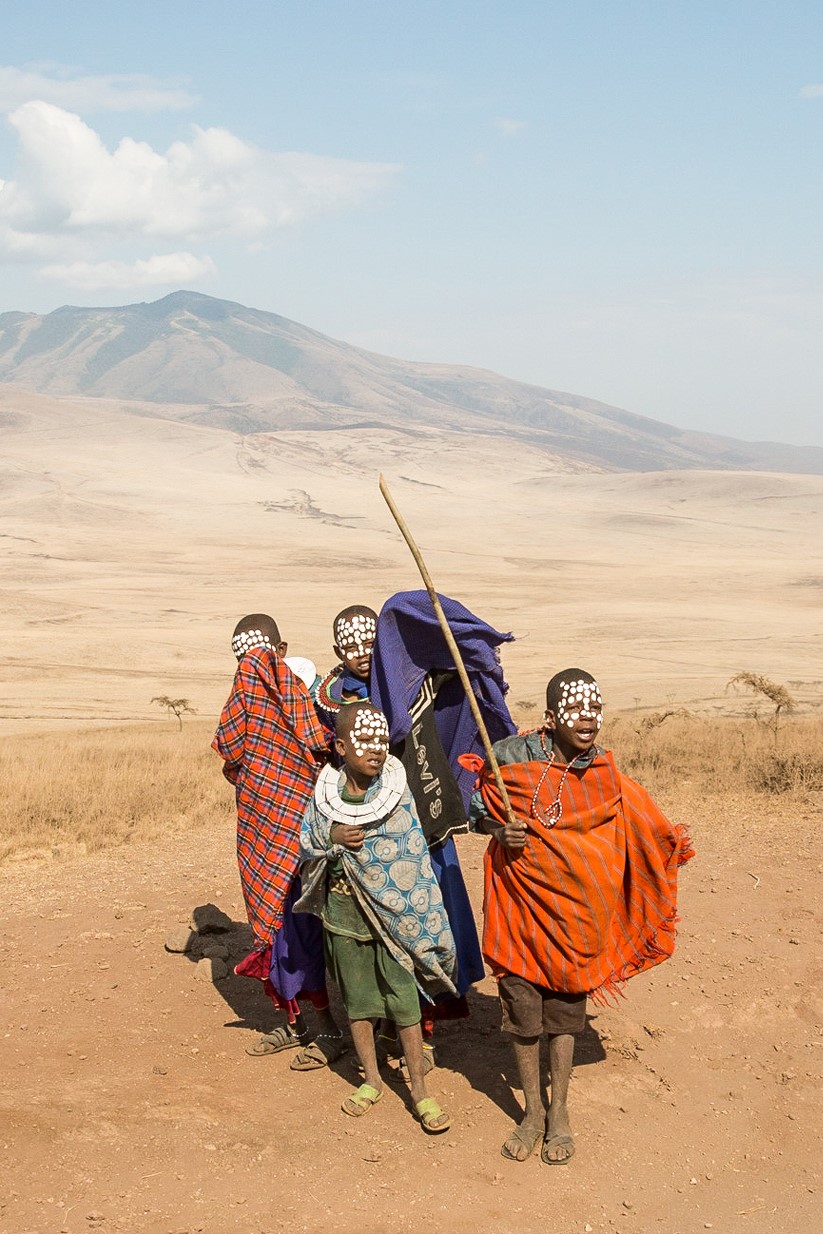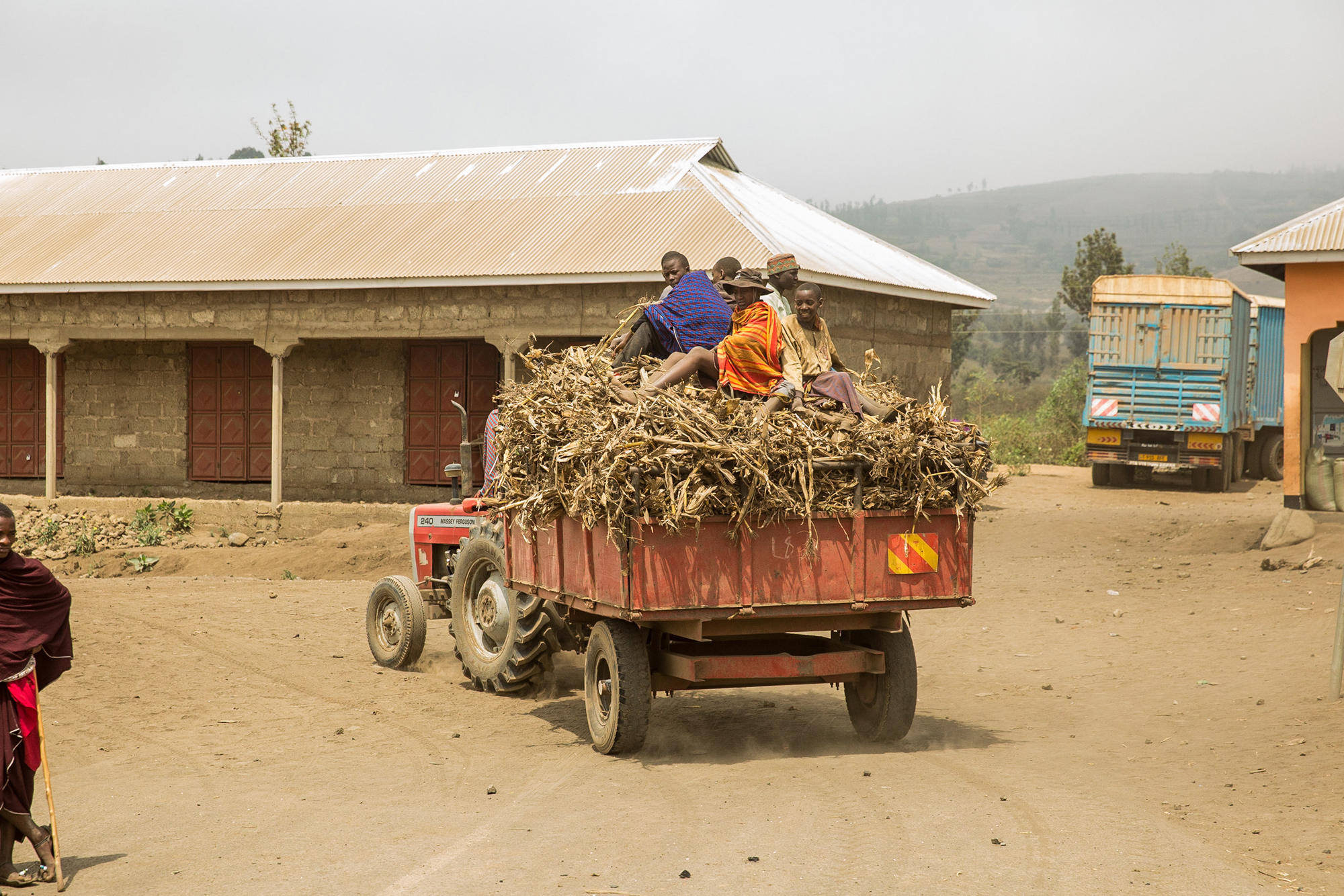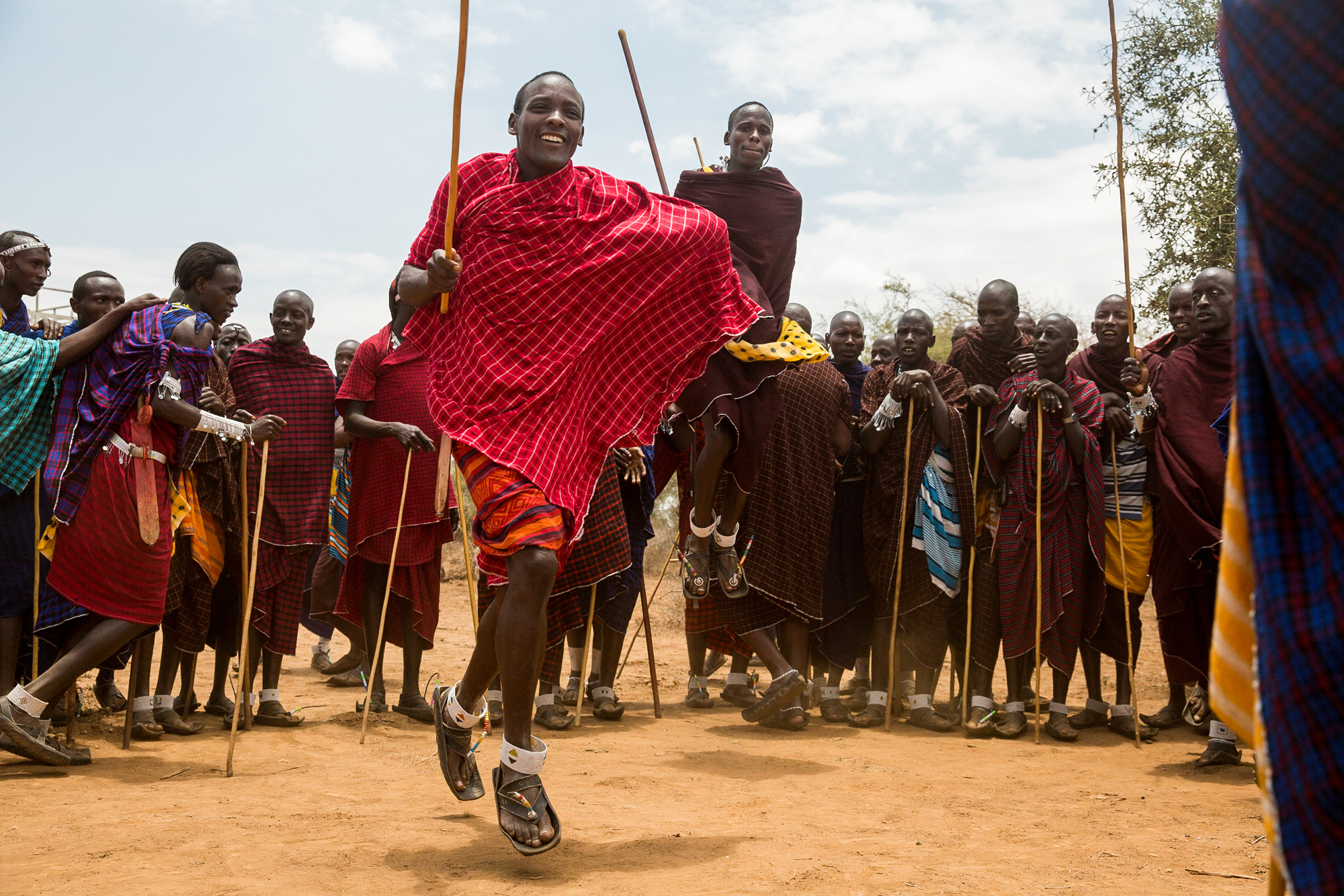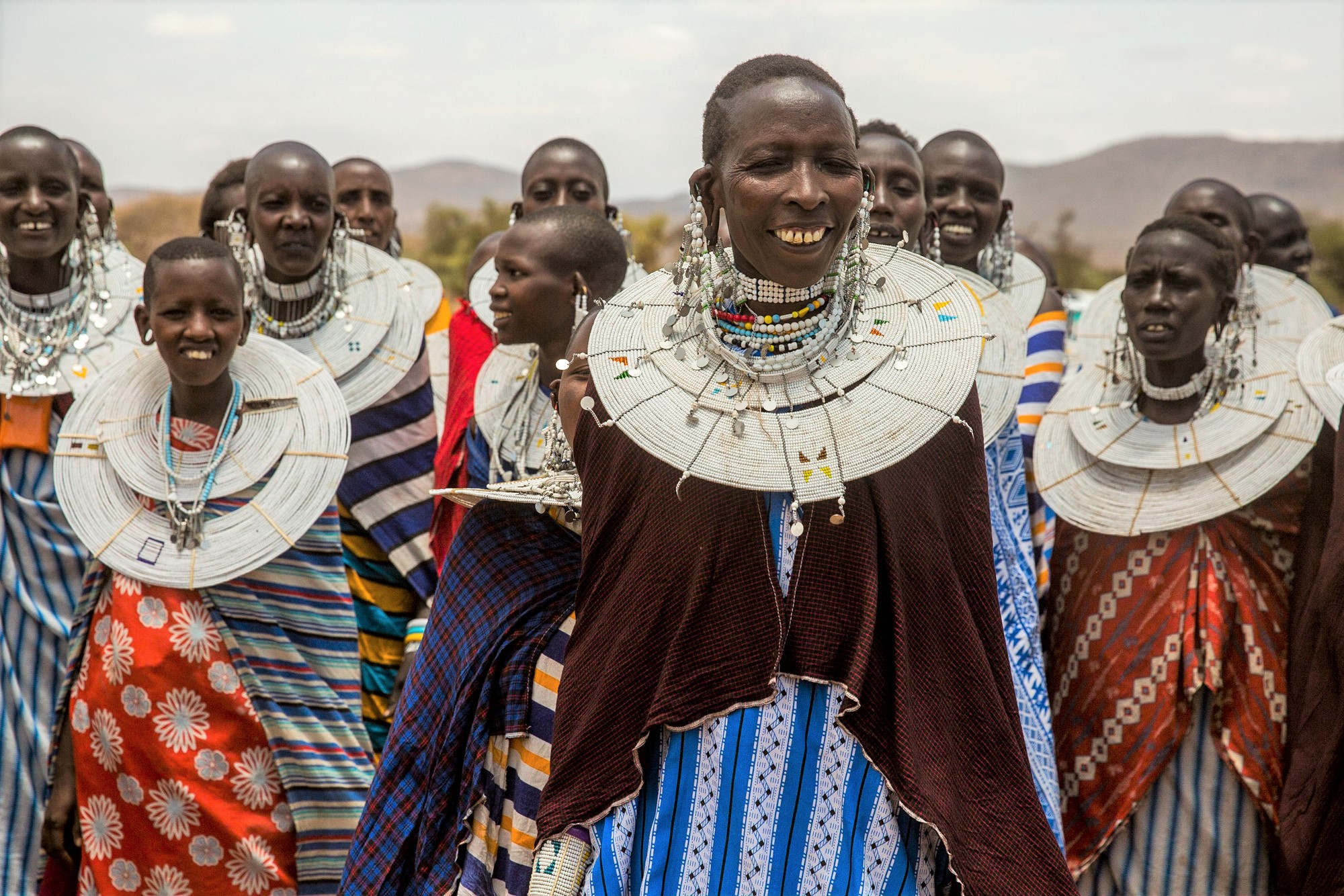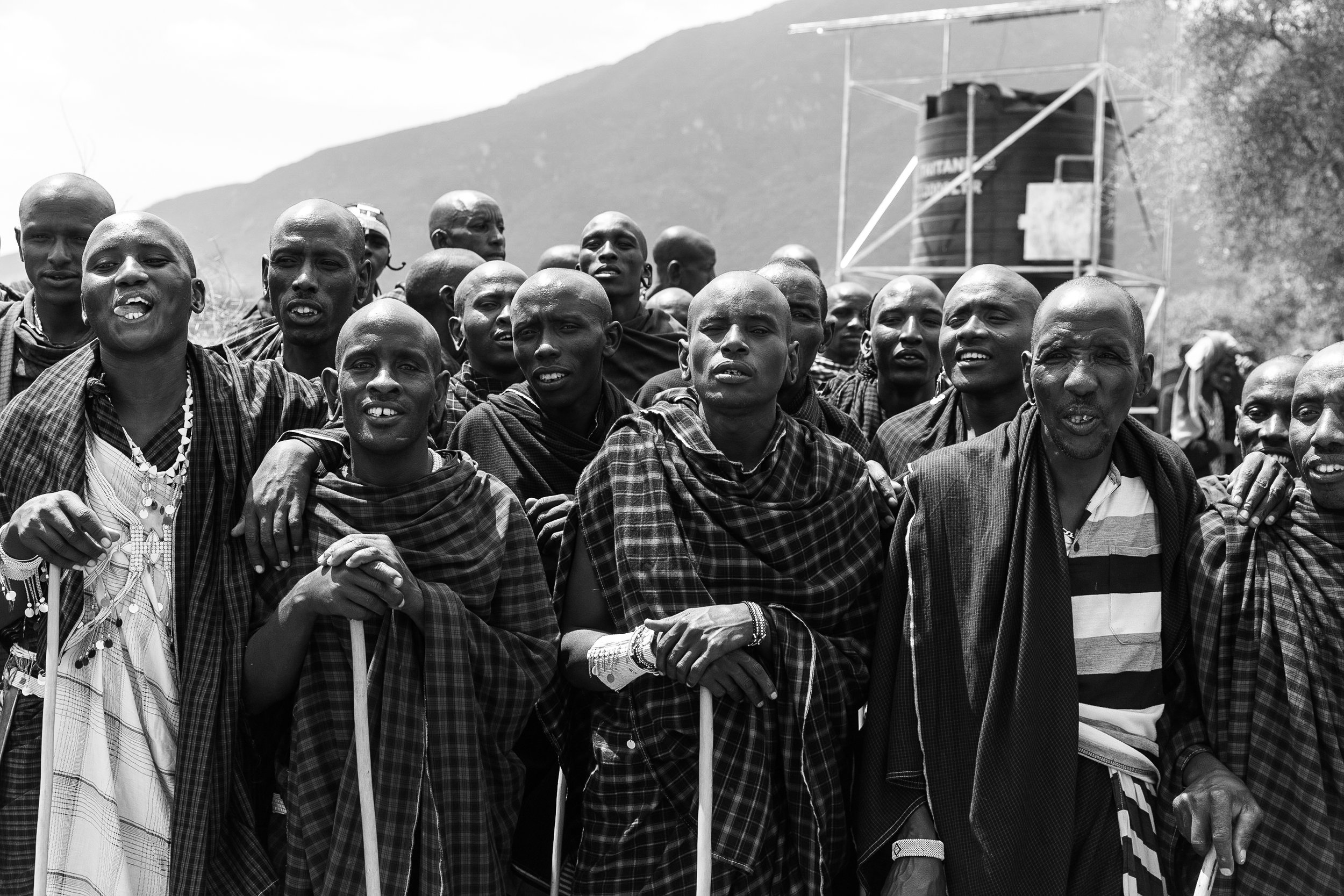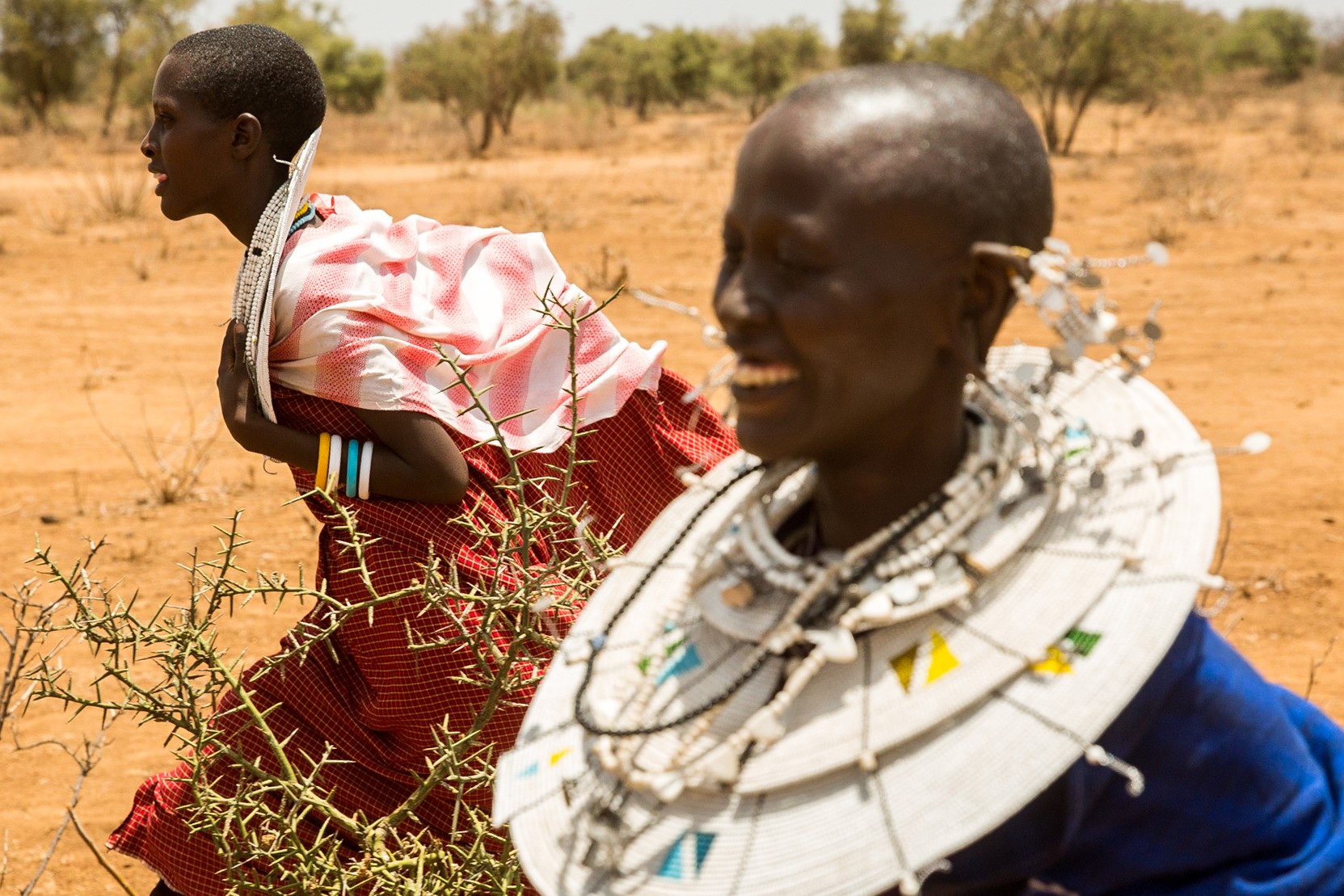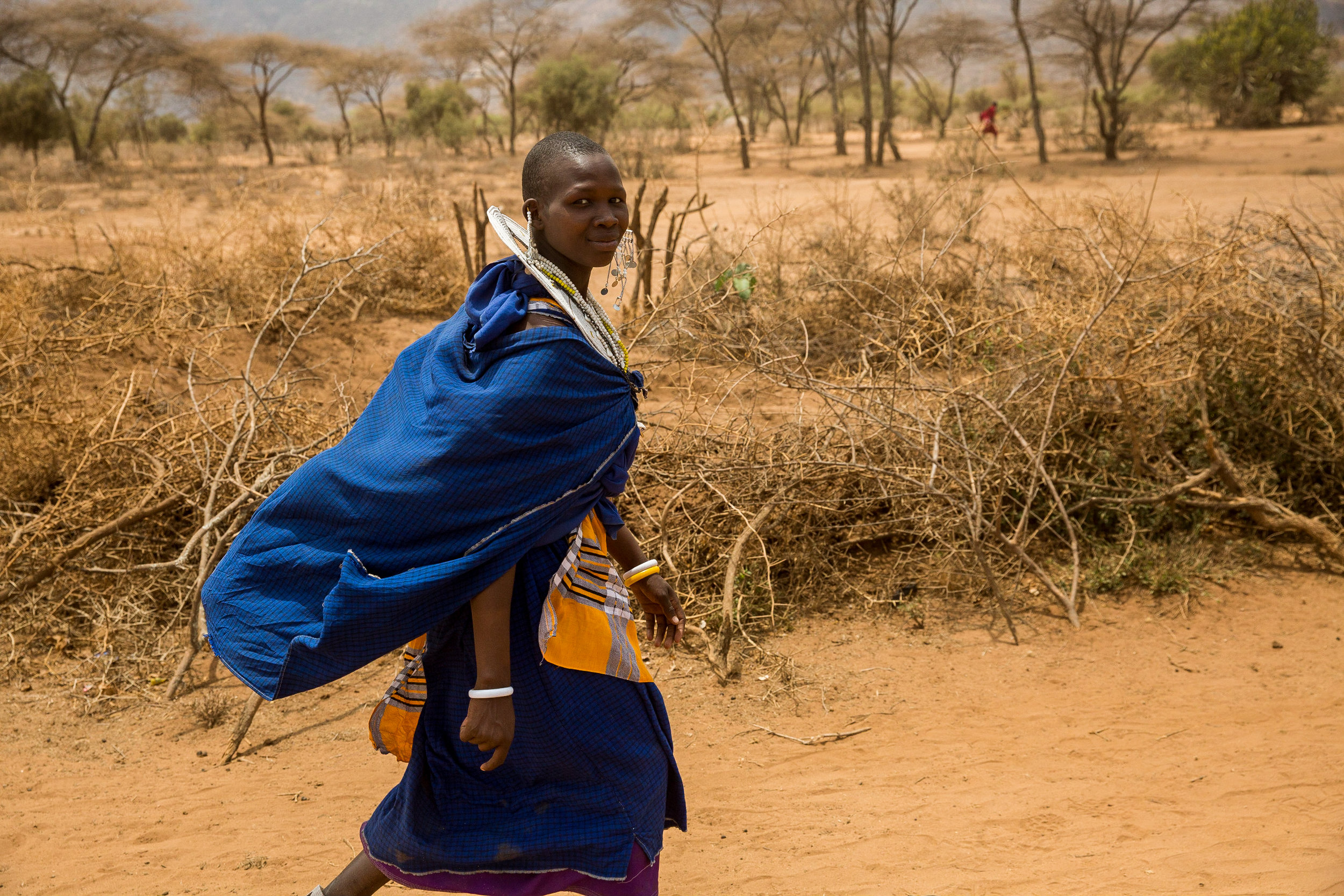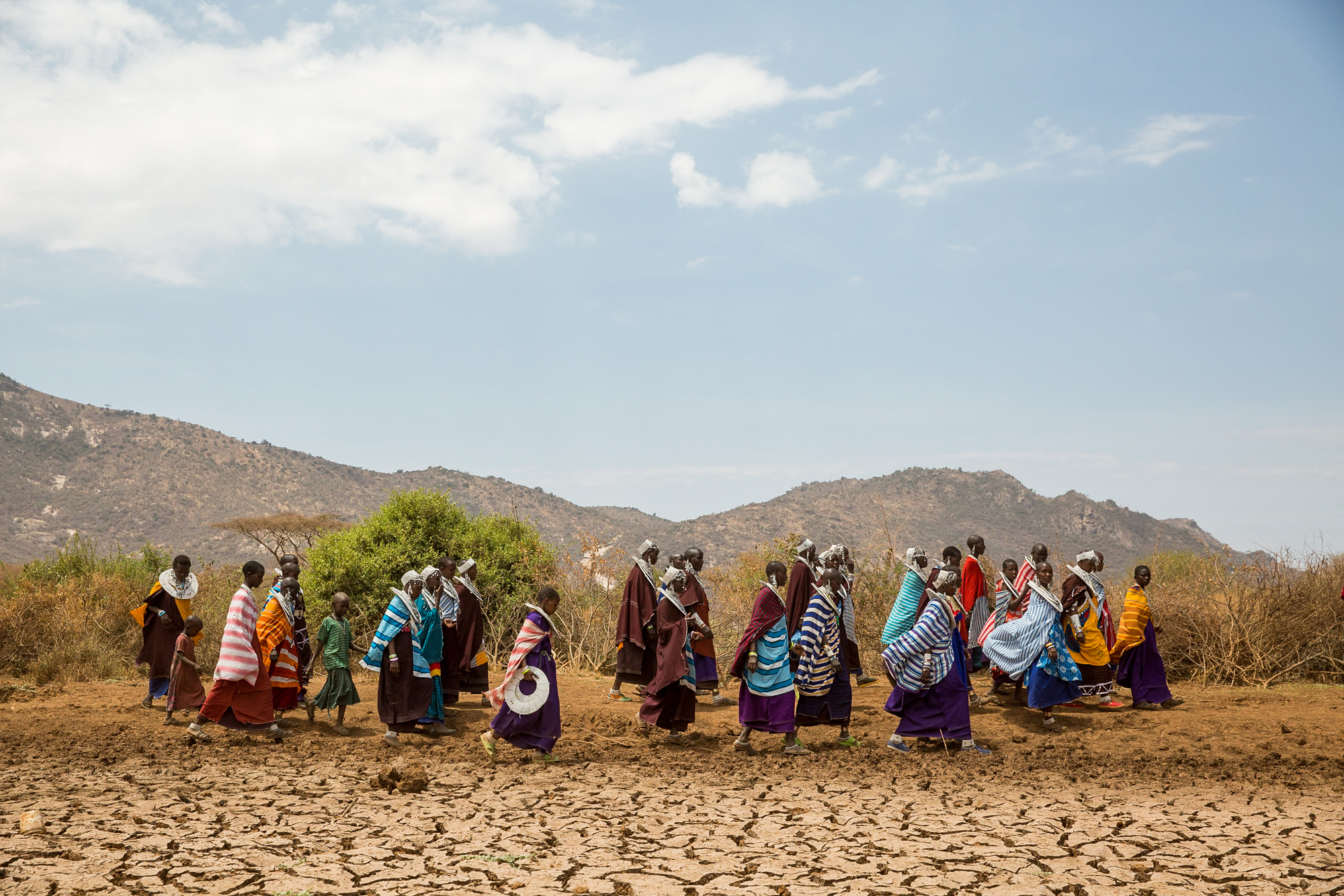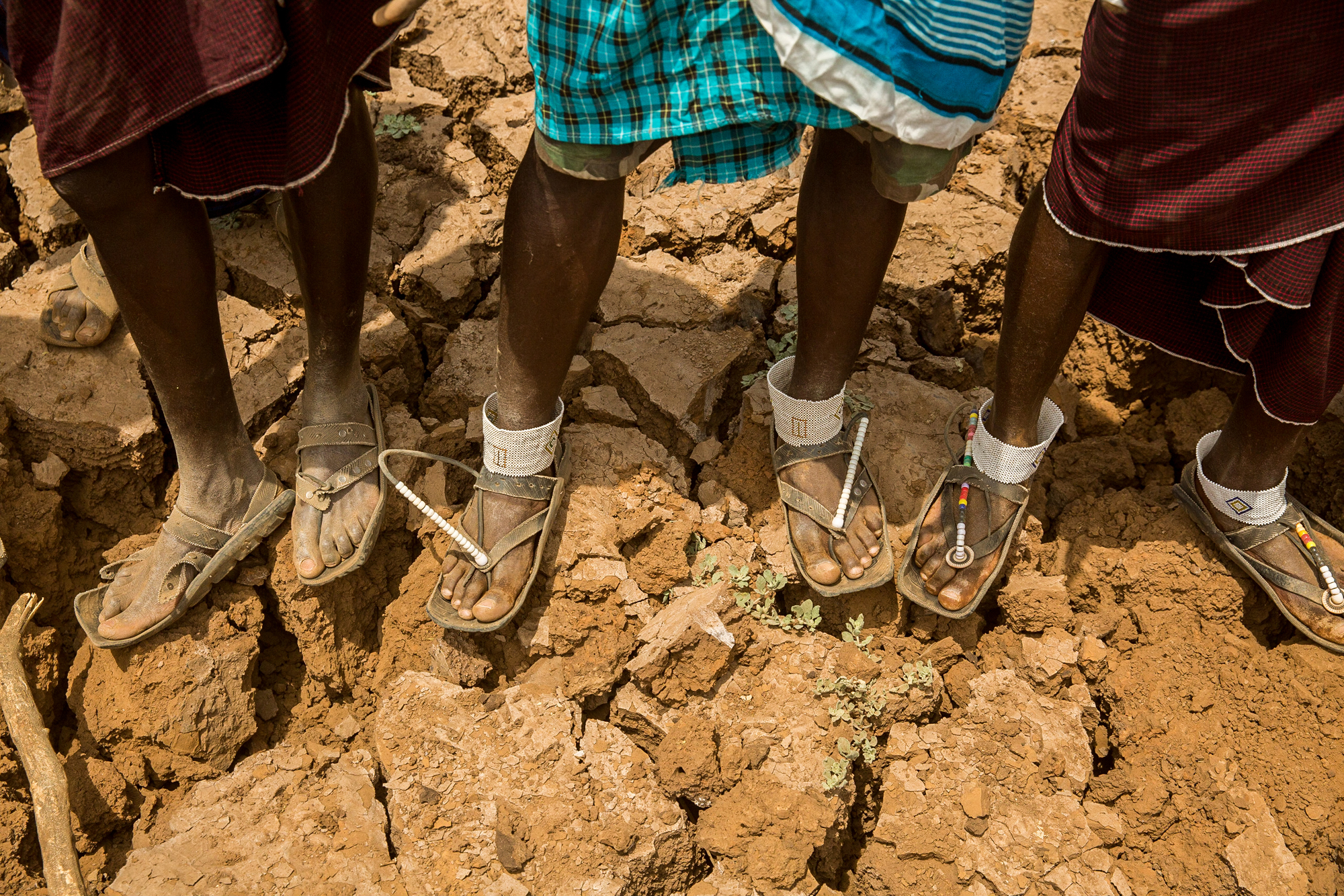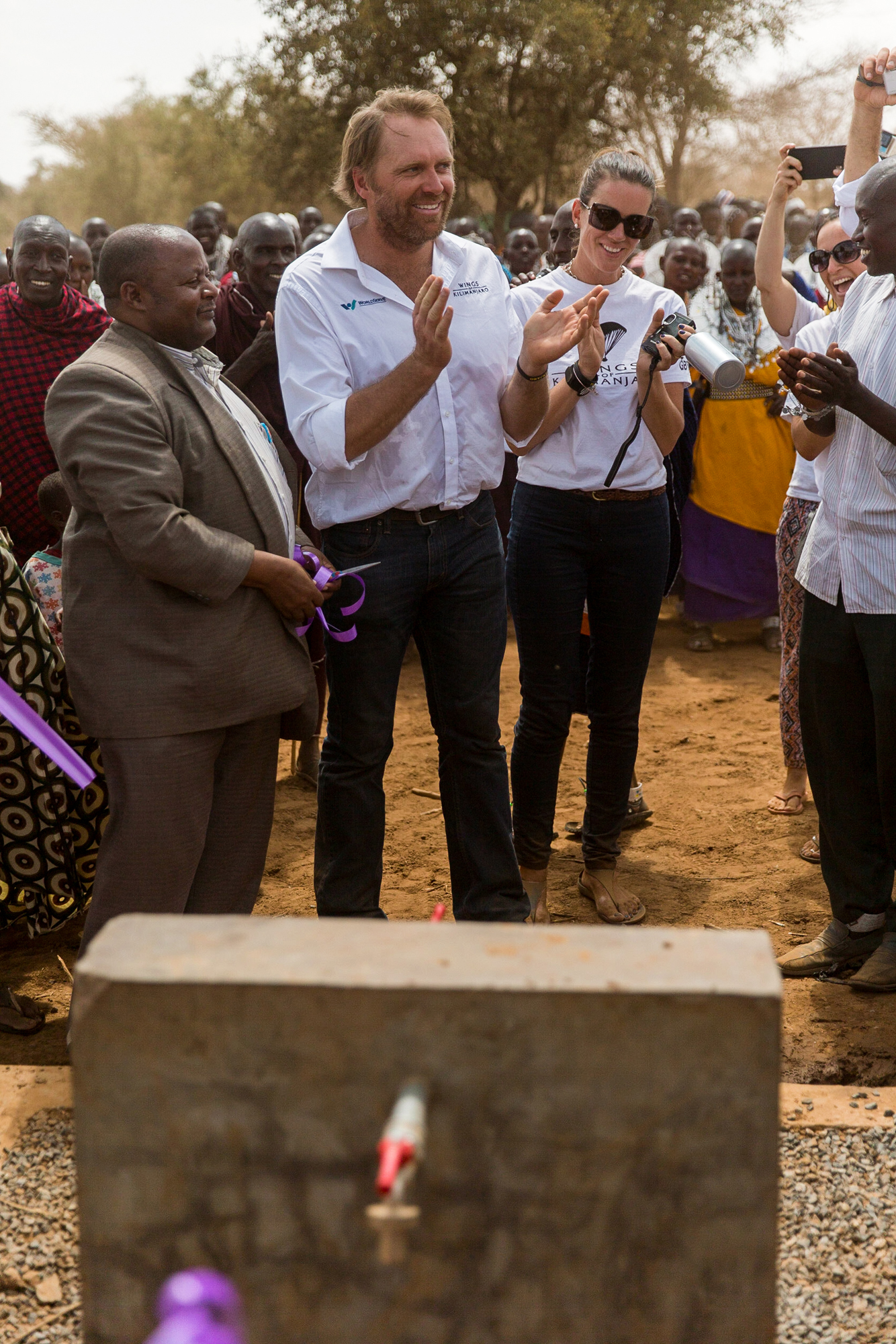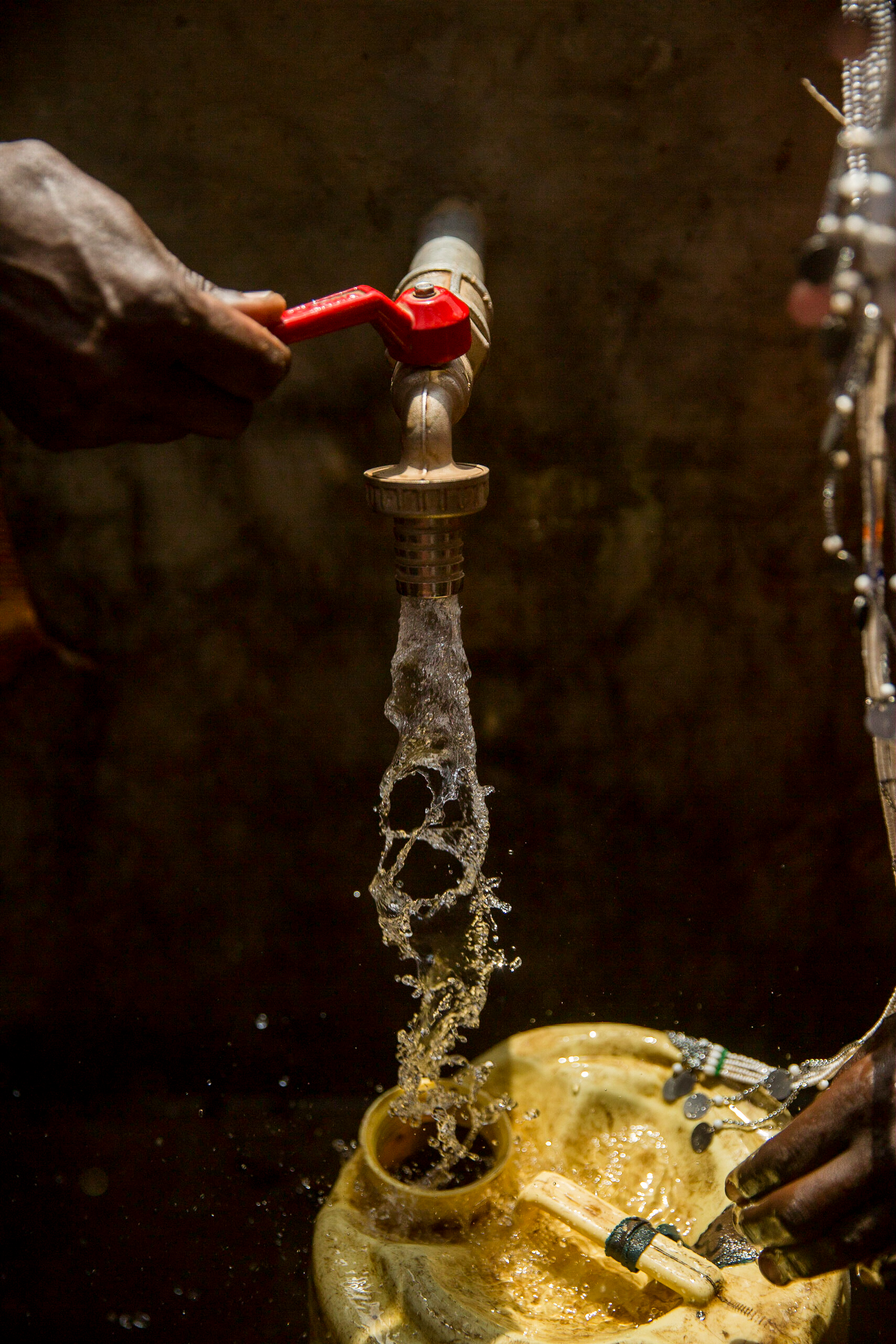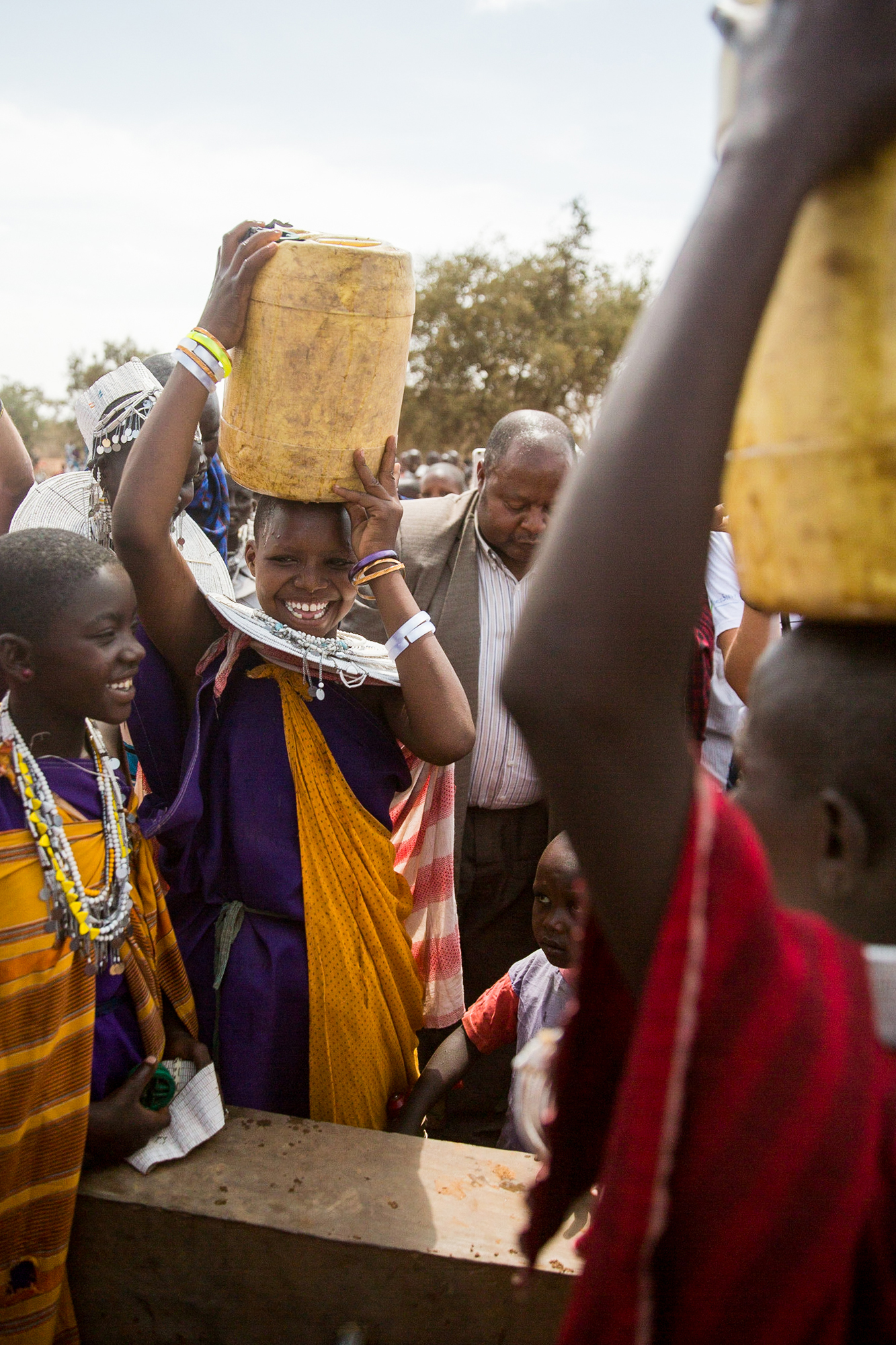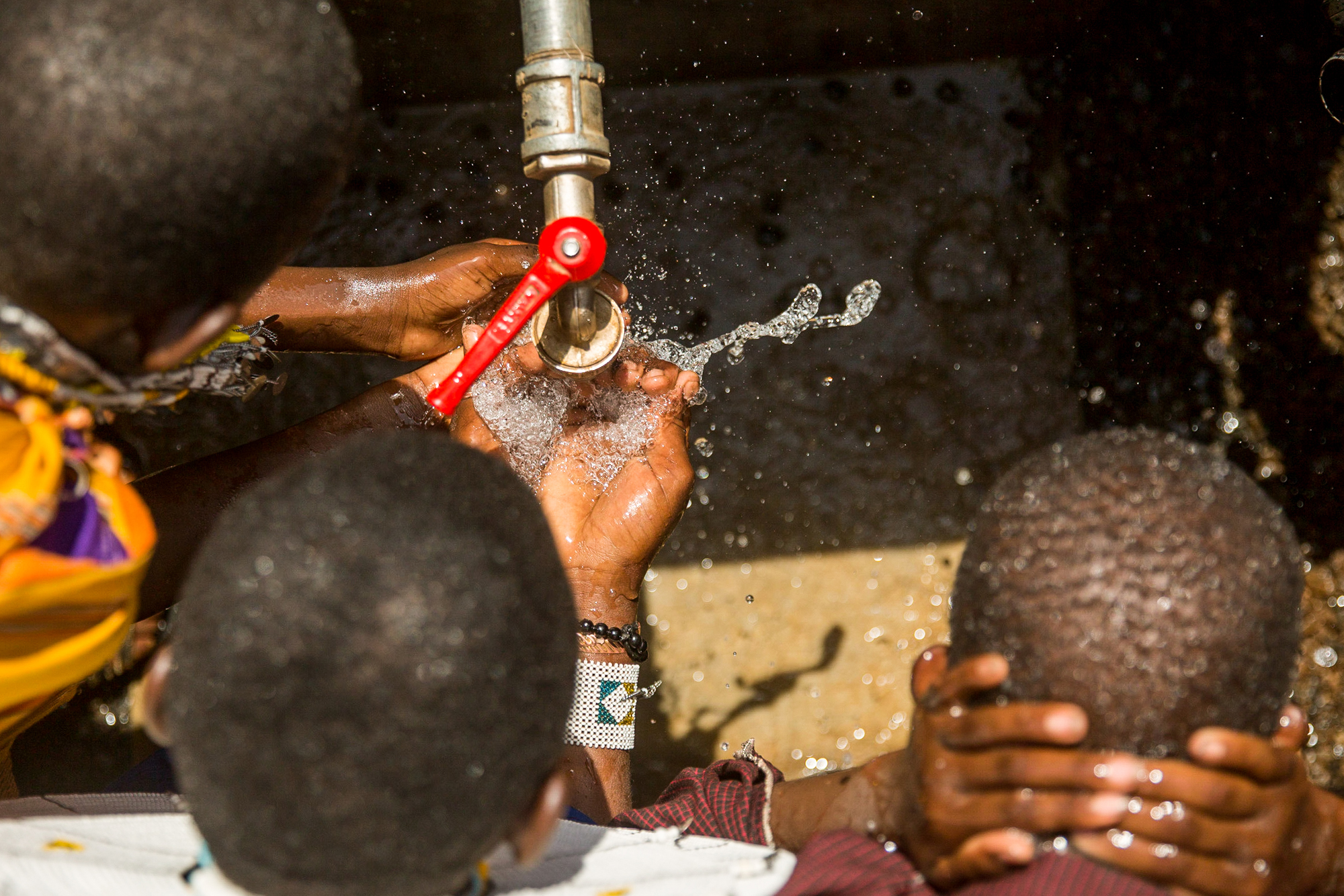WINGS OF KILIMANJARO
I have feared this memoir for quite sometime. I have feared the pressure of recounting the most intense, yet rewarding trek of my entire lifetime. The tale isn’t one that can be told in just a few words, it’s a tale of blood, sweat and tears and a tale that traversed thousands of miles with thousands of emotions.
On September 28, 2016 at 6:55am, I set foot on the summit of the highest free standing mountain in the world; Mount Kilimanjaro. Then, along with an expedition of 16 professional pilots, attempted to paraglide off the summit, all in the name of clean water and education for the people of Tanzania, Africa.
It all started with a warm beer. In the summer of 2015, in partnership with Nadus Films, NFL Network and Worldserve International, we were contracted to produce a short promotional documentary and photography for Waterboys, a non-profit foundation lead by Chris Long of the New England Patriots. It was the first time I had traveled outside of the United States. I was completely out of my comfort zone, but completely elated to be apart of such an incredible philanthropic effort.
While stationed in Tanzania for Waterboys, the crew and myself met a man named Adrian McCrae who had been casually enjoying a Kilimanjaro Beer at the Mount Meru Hotel bar. Adrian owned a mining company in northern Australia and did a lot of humanitarian work throughout Tanzania, but his passion was paragliding. We soon came to discover, Adrian led an expedition entitled Wings Of Kilimanjaro, in which a group of brave paragliding pilots trek up Mount Kilimanjaro and sail off the top. He and his expedition are the only group allowed by Tanzanian law to make the jump, as they are one of the leading charitable organizations in Tanzania. Top paragliding pilots from all over the world raise thousands to have this adventure of a lifetime.
Adrian didn’t necessarily lack the content to promote the foundation Wings Of Kilimanjaro. Over the years, he had gained worldwide attention, including a special edition of 60 Minutes and numerous day-time shows, all covering the project. What Adrian did lack was an extensive documentary that covered the expedition from start to finish. That is where myself and Nadus Films saw an opportunity for our “Give A Story” project, in which we provide a grant to a international foundation such as “WOK” making waves in the industry.
One beer led to several more and Adrian offered to fly our crew up and around the summit of Kilimanjaro for a glimpse into the mighty landscape from the air. Only hours before our flight was scheduled to head back overseas we jumped into a 4-seat Cessna plane that was smaller than my compact car. We opened the windows for a clear picture and took off the runway. Immediately, it was freezing. The temperature had dropped some 40° from sea level and wind chill made it all worse. Despite the cold, I was able to maneuver a few shots of the summit through the large open window. The plane stalled as we peaked through the clouds, only to rapidly dive a hundred feet, where the thick air caught the wings. Needless to say, I was relieved upon touchdown.
I had always dreamed of big adventures and climbing the world’s highest peaks. At a young age, I became obsessed with stories of survival, such as Jon Krakauer’s “Into Thin Air” or Joe Simpson’s “Touching The Void.” There always was a calling, something that told me I could do it and would do it. I’m not sure if I loved the sense of danger or just the fact that a mountain was there to be conquered. The thought of Mount Kilimanjaro was overpowering, I had a million thoughts and one question; What if?
With the rapid success of my photography business and a complicated personal life, my health had been on a steady decline. I put everything into work, unfortunately at the cost of my mind and body. Shortly after our project for Chris Long and Waterboys, I began a passionate path of wellness. If, by the slim chance that I do have to climb Kilimanjaro, I would have to be in the best shape of my life, both mentally and physically. I immediately sought the knowledge of my friend Sol Perry, who himself lost 130 pounds, which eventually led him to become the top personal wellness and fitness trainer in Louisville, Kentucky. I remember the day I told Sol about the possible project. His demeanor was serious, but his outlook was positive. We had a lot of work to do.
I had a staggering heart rate of 100 beats per minute, with 50% body fat at 311 pounds. I was up to a 52.5 inch chest and a 48 inch waist with a dangerously high-blood pressure. I could barley do 10 push-ups, couldn’t walk without sucking wind and I could no longer look at myself in the mirror without a punch to my confidence. I remember the day after my first consult, I was consumed with anxiety. I was on the verge of a heart attack and completely ignored the fact. I changed everything.
With a solid blueprint, I dramatically altered my diet and began resistance training nearly every day. I started with a vegan detox program and eventually progressed into a diet appropriately named the “Sol Food Diet” which is a precise version of Paleo. The diet cycles carbohydrates based on energy expenditure, no weighing of foods or counting calories. I stuck with organic meat and a significant amount of vegetables. No fruit, no dairy, all protein. It was not just a diet, it was a lifestyle. Along with my friend Chris Miske, we started a food Instagram feed entitled Primary Plates to keep a pictorial record of every breakfast, lunch and dinner. I also began intermittent 12-24 hour fasting, which supercharged my body and its fat-burning potential. Fasting increased my overall productivity. Another attribute to the blueprint was green detox tea, which became apart of my morning ritual, along with coconut coffee, lemon juice, collagen hydrolysate, ginger root and supplements. From the start, my goal was to never have model abdominal muscles, vascular biceps or perfectly sculpted shoulders, I just wanted to be healthy.
I always considered myself to lean towards “beige” food, mostly carbohydrates. It was tough to give up the bread for broccoli but, I substituted. I found new methods to fulfill my carbohydrate craving with cauliflower or egg. This opened my palate to a entirely new respect for food. Over time, I discovered a love for quality dining with a unique wholesome menu. It was an interesting point in time, not only was I altering my lifestyle, but my career had taken me all over the world. Within the first 6 months of following Sol Perry and his wellness plan, my photography had taken me to Africa, India, Nepal and Cuba. Arguably, it just made the diet easier. While based in these foreign countries, I didn’t have to deal with preservative-packed food or un-whole options. However, making my standard Arbonne protein shake, twice daily, was a incredibly arduous task. My first instinct was to travel with a “Magic Bullet” blender. It was compact, powerful and had the reputation for the trek. I was completely wrong. The first day the blender exploded due to the voltage difference in Africa to the United States. I had learned my lesson, so I brought a heavy duty blender to India, which once again resulted in failure. The outlet cracked and the blender began to seethe smoke, which smelt of burnt rubber. I decided to give up on the international protein shake, but I stuck with the plan. Meat and vegetables, meat and vegetables.
The first month, I lost 34 pounds. The third month, 65 pounds total.
Once the weight began to shed, I was seeing an enormous improvement in my confidence, career and attitude. There was a balance shift. Relationships began to flourish and I noticed an overall change in the efficiency of not only my work ethic, but also my staff. With the introduction to a morning routine and a balanced schedule, I also noticed an improvement in mental health. I was able to handle more stress and calmly take more risk.
Wings Of Kilimanjaro was distant, but still lingered in the cloud. There had been a few possible projects come into light, such as a collaboration with Mountain Madness for a documentary on the legacy of Scott Fisher. A mountaineer who tragically died in a storm over Mount Everest in 1996, which was beautifully described by Jon Krakauer in the book “Into Thin Air.” Despite many conference calls, the project never gained traction beyond the point of conversation. Around the same time, negotiation and logistics started to come to light for WOK. There was buzz of celebrities joining the expedition such as Mike Tyson and Nicolas Cage, but I remained skeptical.
My training had elevated from simple resistance to martial arts and density training utilizing battle ropes, truck tires and sleds. I began to use and build muscle in places I didn’t know I had. In one year, I had lowered my resting heart rate by 40 beats per minute, shed 85 inches of body fat and lost 100 pounds. I had cast out the old me. I felt modern, contemporary and anew.
Then, only three weeks before Wings Of Kilimanjaro was set to sail, we received a green light. It was an emotion I still have trouble to define. I was thrilled, yet uneasy and on edge. I had prepared for 14 months for this opportunity and the project had remained elusive. I constantly battled and subdued any excitement to prepare my mind for the ultimate let down. But, it was all real and WOK was a tangible project, especially when the flood of paperwork started to come through.
I went into overdrive. I kickstarted my high altitude training with hill sprinting and stepping. I doubled down on supplements such as Magnesium, Beta Glucan, Zinc and D3. I began to formulate a strategy with Sol for staying alert in extremely low oxygen and adjusting to a mountain morning ritual of yoga exercises and Myofascial release.
The human brain with little oxygen alters physical and mental health and triggers a state of hypoxia, which without supplemental oxygen can often lead to Acute Mountain Sickness and death. With that said, it’s important acclimate the body to the extreme altitude, and it’s crucial to trek slowly. The most effective plan is to climb to a high camp then descend back down to a lower camp to rest. We call the method: “Climb High, Sleep Low.”
Among the mountains of paperwork, we also had to consult with the expedition doctor, Dr. Rob Forsyth, who would personally make a recommendation for a healthy trek. He suggested I purchase Diamox and Dexamethasone, both a form of steroid to reduce the chance of altitude sickness and can save your life. While I chose to pack the medication, I opted to not take Diamox unless the circumstances called for it. Instead, I would pump my body full of natural supplementation; Quercetin, Ginger, D3, Curcumin, Zinc, Beta Glucan, DIM, Grapeseed, Magnesium and Pancreatin
I had no mountaineering gear, no proper clothing and outdated health records, but I did have knowledge and relationships on my side. I had a million questions to confirm my research, luckily answers started to trickle in. Questions such as schedule, weather expectations, weight restrictions and paragliding standard practice.
I immediately blasted all of my sponsors for help. I cold called companies that I didn’t even have a relationship with, which I prefer not to do. And, to my surprise, every partner was thrilled about the project and wanted to be involved. So, I created an extensive list of equipment needed for the job, equipment that could handle high altitude, extreme temperature and could pack down to a low-footprint, under the 50 pound maximum luggage for international flight.
Mount Kilimanjaro stands at 19,341 feet or 5,895 meters. It is the highest highest peak in Africa. The landscape is outer-worldly and through much of my research found that it was hard to describe without seeing it live and in person. I learned that as you trek to the top you pass through 4 different ecosystems. rainforest, mooreland, alpine desert and arctic. The temperature can rapidly change from a beautiful bright 70° Fahrenheit to a freezing -20° Fahrenheit. In general, in the lower elevations, there is a belt of forests and as you proceed up the mountain, there is less and less vegetation. The summit is similar to what you see on the planet Mars, with an extreme low level of oxygen. Our expedition would take us up the Machame Trail, a total of 192 hours on the mountain, from 5,400 feet to 19,341 feet in just under 8 days.
The expedition would be led by Tusker Trail, a renowned adventure consultant company that leads treks up Mount Everest, Mount Kilimanjaro and through Mongolia, Peru and Iceland. Tusker Trail would organize the mountain guides, porters, safety, cuisine, water and lodging. We had an expedition of 25 people, along with nearly 80 porters, also know as “sherpas” in the mountaineering world, who would haul all of the expedition needs, including our personal gear and equipment. As a documentary crew, we hired an additional 4 porters to maximize the amount of gear we could pack. I was personally assigned 2 porters with a 50 pound equipment pack, a 30 pound personal pack and a 10 pound day pack, which would be on my back.
The first priority was not camera equipment, it was mountaineering equipment. We consulted with our friend Blake Maddux of Elemental Climbing for all the appropriate gear. Blake, being an avid mountain man, was a vital asset to the pre-production. I needed layers of clothing and a significant amount of climbing accessories such as trekking poles and a lightweight day pack. A week into pre-production, my front door step looked like Christmas. The boxes began to arrive and I went through all the equipment step-by-step. I had new boots, hiking shoes, liners, socks, light breathable layers, medium layers, down layers, high gaiters, glove liners, down gloves, tactical sensor gloves, athletic underwear, a wool cap, winter hat, mountaineering sunglasses, insulated CamelBak, wool neck sock and a headlamp. And, that was just what I would wear, fortunately I didn’t have to send a single item back to Outdoor Research or REI.
Although, I had my personal gear tied down, I still had questions regarding camera logistics; how would we charge batteries and accessories at 19,341 feet? It’s a question that lingered for awhile. Our first plan of action was to simply take fully-charged batteries for each day on the mountain. The cold and altitude play a massive role in the depletion of battery life, so we considered the life of a battery to start at 50%. We then went through timing and discovered legitimately how many batteries we would need. It was dozens and seemed laughable, our weight limit would be easily surpassed in just batteries. Our next plan was to research portable solar-powered battery stations from Anker or Goal Zero, which seemed like a plausible idea, but with the weather being unpredictable, we couldn’t expect a hard sun every day. So, we landed on the idea of gas generator that was under 50 pounds, a generator we would buy in Arusha, Tanzania and leave in Arusha. Fortunately, Tusker Trail consulted us through the entire process and agreed it was the only true option for a guaranteed source of power at high altitude.
Through the trial and error of previous adventures, we knew we needed our standard international still camera kit. We kept it simple and cut the fat. Two camera bodies, two lenses, a strobe kit, one modifier, one reflector, one monopod and a boat load of accessories. The video side looked much different. It was a lot, but all the equipment was essential for the production level required. With a crew of 4, we had 10 cases and 4 backpacks, including personal gear. The ThinkTankPhoto Airport Accelerator Backpack, at full capacity, came in at 49.9 pounds. This would be my carry-on.
Amidst the logistical preparation, each member of the crew setup a crowdfunding website to raise money before we attempted to set sail on the summit. I set a goal of raising $2,000 Dollars before we even landed in Africa. Every Dollar passed to WorldServe International and directly into the education of Maasai children and the advancement of clean water in remote villages. Within just a few hours of making the announcement to my community, the donations started to flood through, it was humbling to see the support.
It all came down to the wire. Just 24 hours before our departure, equipment was still arriving at our door step and questions were still being answered. It was controlled chaos but, we had a process, schedule and plan which we strictly adhered to, I felt rested, organized and confident.
On September 16, 2016, our plane took off from Louisville, Kentucky to Newark, New Jersey to Amsterdam, Netherlands to Dar Es Salaam, Tanzania to Arusha, Tanzania, which sat a mild hour from the base of Mount Kilimanjaro. Naturally, some hours later we found ourselves running through the Amsterdam airport to catch our next flight. It’s not easy with a 50 pound backpack crushing your shoulders. Unfortunately, our dash to the gate was too little, too late and we missed our flight from Amsterdam to Arusha. But, we weren’t to upset about a fun 24 hours in Amsterdam. Once we checked into our hotel the airline had setup, we grabbed some breakfast and hit downtown Amsterdam. But, jet lag instantly set in we all crashed in the backseat of the taxi. But, a beer did the trick and we were back in the action. We wandered the streets, explored the “coffee shops” and had a quick patio cocktail overlooking the quint city canals. With the next leg of our flight plan looming over our head, following an awesome Amsterdam dinner, we hit the hotel and caught some rest.
Some 18 hours later, we arrived safely to the Mount Meru Hotel in Arusha, Tanzania, but not without a few speed bumps. We had a extremely close call with security, who almost questioned our DJI Inspire Drone, as it’s illegal on Kilimanjaro, but with some distraction techniques, made it through with all our cases and bags in tow. Just for future reference, always budget for petty cash when traveling to third world countries.
Unfortunately, our layover had altered our schedule and after a night of rest, we ventured into a remote Maasai village, where Wings Of Kilimanjaro had funded the construction of two classrooms, where over 400 Maasai children can be given a solid education in the middle of the bush. It’s hard to describe the cultural impact of something so small to us, yet so much to a community such as this. You are greeted like a celebrity and hundreds of people flock to celebrate. Within moments, we were crowded by a sea of children, dressed in their maroon uniforms and surround by their parents in traditional Maasai garb. In these scenarios, my camera acts like a shield, seeking a moment in time with a rapid pace. Capturing the photograph of children who perhaps have never seen a camera is by far the most rewarding aspect of my job. We stayed for hours, all through a class, ceremony and village dinner. It all ended with each of the crew being wrapped with a Shúkà, which is a sheets traditionally worn wrapped around the body. These are typically checkered red and black, though sometimes orange or blue. It was a beautiful way to share a new experience with our team of 25 and bless the long journey ahead. I would come to know all of these people, very well.
Gabriel Jebb is a legendary paragliding pilot and safety expert. You could find him causally chatting about his hundreds of paragliding tests, where he would voluntarily create an mock-accident in order to pull his reserve parachute, all for experimental safety testing. Gabriel was in charge of safety and arguably had one of the most important jobs in the entire expedition. It was his responsibility to get all paragliding pilots and tandem passengers off Kilimanjaro safe and sound.
I had done a lot of research into Mount Kilimanjaro, I knew the stories of failure, but mostly stories of success. There was no story of paragliding from the summit, Uhuru Peak. I could only lean on Adrian and all the pilots in the expedition. The sheer challenge of it all didn’t truly become real until our meeting a day before we were set to leave Arusha for Machame Gate. Gabriel went through the strategy on sailing off the summit. Step by step and risk after risk, the danger of it all slowly began to sink in and a bath of anxiety washed over my body. I had to quietly take a deep breath and close my eyes to accept the knowledge. Each passenger would be strapped to the front of one pilot, whom Gabriel would choose the rest day before the launch. Of course, people preferred some over others and there was gossip of me strapping to Danielle Cole, a beautiful experienced pilot from Hawaii, all due to our weight differences. But, the gossip also scared me. Could a 5’2” 120 pound woman launch a 6’1” 210 pound man? I had no idea.
The evening before the bus arrival was chaotic and equipment was everywhere. Fortunately, the perfected pack job paid off and the preparation beforehand saved me from significant stress. All of our equipment had to be stored in waterproof yellow totes, which made it easy for the porters to carry up the mountain. Every bag was assigned a number, which would coordinate with your tent at each camp. I was assigned lucky number nine.
The bus to Kilimanjaro was somber and sobering. You could find most of the expedition blankly staring out the window in deep thought, others quietly conversed, but there was an overall sense of calm, a calm before the storm. We had a brief layover in Moshi, where they had plotted for the landing zone post-summit. It was an old University soccer field with rusty goal posts and over grown grass. The large brick University buildings planted a remote section of Moshi were the perfect visual marker for all the pilots on descent.
After a few hours, we finally arrived to the Machame Gate, where I first witnessed the impressive numbers of people it requires for an expedition such as this, Wings Of Kilimanjaro contained nearly 150 strong. Mount Kilimanjaro being a National Park, required all those in the park to check in at each camp. The process of the check in was often long and the information we had to provide was unsubstantial, such as your profession and passport number.
We then proceeded to receive a quick health test, one person at a time. This test was comprised of a few personal yes or no questions and others on a scale of 1-10. They also checked our resting heart rate and oxygen level. This test would be administered twice a day to every member of the expedition. After a dull box lunch, which I opted not to eat, we lunged through the gate with anticipation and set foot onto the Machame Trail on September 21, 2016 at 1:00pm.
DAY ONE - MACHAME GATE TO MACHAME CAMP - 9,400 FEET
Within 5 minutes of setting foot on the trail at the base of Kilimanjaro, the atmosphere and energy was infectious. You couldn’t help but stare at the vast beauty of the rainforest. Long vines, ancient trees and colorful plant life that was split to a small path for those brave enough to traverse. We hit the trail late in the afternoon and wanted to guarantee ample time to setup on our first camp, so we hustled and walked at a fast pace. Although, many of the porters politely requested we slow down in Swahili, we ignored the warnings and blazed the trail, everyone was experiencing an amplified level of adrenaline.
Fully rigged, my Canon 5D Mark III added an additional 9 pounds to my shoulders. Unfortunately, I misjudged the system for holding my camera and used a BlackRapid Backpack strap, which would normally work wonders with a large backpack with an external frame, but not with a small 14 liter pack. With every move the strap dug into my left shoulder which dramatically caused discomfort and pain. It also threw off my balance to the point, in which I had to over compensate with my right leg to lock in a pace. Additionally, I decided to not use my Black Diamond Trekking Poles the first day.
With the ultra fast pace and strap malfunction, I began to seriously sweat. My fleece felt like a wet blanket and a plume of steam could be seeing coming off my body with the clash of cold air. I stripped down to my base layer and latched the wet fleece on my day pack. We continued to navigate the dirt trail through steep slopes, often encountering crude steps in the trail.
The landscape was easy to navigate, but it the trail seemed to never stop. I took a deep a breath of relief upon overhearing a passing porter mention the fact that Machame Camp was close. Just a under an hour later, we stumbled into the first camp, close to sunset. The first day was one of the longest in my opinion, mostly due to the fast pace, wardrobe malfunction and the misjudgment of the proper camera strap. With wet clothing, a banged up shoulder and sore legs, I already felt like crisp toast and it raised a lot of fear.
After a moment to stretch and re-compose, we checked in and found the Tusker Trail camp. Shockingly, many of the porters had already arrived to setup camp. I ventured to tent number 9 and got organized. I placed my wet fleece and wet wool cap on the top of my tent, praying it would dry. I changed from my heavy Solomon Mountain boots to my water-resistant Keen Hiking shoes. It’s truly amazing what a dry clothing can do for your morale.
As the sun set, the cold lurked into the camp and I grabbed my down jacket and dry-cotton beanie. Hot coffee seemed like an attractive idea at the time, so I enjoyed a couple of cups, breaking the rule of caffeine at night. Soon enough, an incredible dinner followed. Tusker Trail wasn’t kidding when they claim they have some of the best cuisine on Kilimanjaro. Our first meal on the mountain was grilled Tilapia, with rice and hot vegetable soup.
Long before the trip, Sol and I decided it would be best to intake as many calories as possible, including a significant amount of carbohydrates. Mount Kilimanjaro isn’t a place to diet. The human body has to work harder in high altitude, so naturally it will burn more calories then at sea-level, so I would not only would be burning calories just by being on the mountain, I would be burning calories by hiking the majority of every day. Good nutrition and extreme water intake was extremely important to success.
The camp consisted of nearly 30 Eureka 4-season K2XT alpine tents, with two massive community dining tents, which looked like a hub NASA would have on the moon. The rest of the camp was built out with porter tents, cooking tents and 4 toilet tents, which resembled a mobile Porter-Potty. While most of the 25 people in our expedition had a tent to themselves, some shared tents. Miraculously, we noticed 4 or more porters shared the same exact tent. When I first witnessed these brave warriors stacked on top of each other, I gained an instant respect and admiration for these men. It was catalyst for a small idea; a portrait series.
Even if food was not on the table, I noticed that most people spent their time in the community tent, sipping on tea or coffee. It was a place of warmth and conversation. A place we could get to know each of our fellow climbers.
After dinner, the camp became very quiet and very dark. I decided to settle into my tent for the first sleep on the Kilimanjaro. I have never cared for sleeping bags, I feel claustrophobic and unable to comfortably stretch out, so I was worried about getting good sleep, but I decided the first night to suck it up and deal with it. I laid awake for the majority of the night, tossing and turning. I asked myself if it was the caffeine or the fact that I just couldn’t find any position remotely comfortable encased in a bag. Perhaps it was the size and softness of my pillow, which was actually my down jacket stuffed into a square 8x8” sleeve. My body was exhausted and my mind was tired, I have never had sleep issues, ever.
I had to urinate, but decided to hold it for as long as possible. Fortunately, I packed a wide mouth, 32oz Nalgene bottle, so I could comfortably take a leak without having to leave the warmth of my tent. The relief of emptying my bladder was enough to settle my mind. I ripped open the zipper on the sleeping bag laid directly onto the cold dirty sleeping pad and used the bag as a cover. I stretched out my legs and fell into a couple of hours of much needed semi-comfortable rest.
DAY TWO - MACHAME CAMP TO SHIRA CAMP - 12,500 FEET
It was a hard sunrise wake up call. But, I was one of the first out of the tent and on my feet. Hot water was brewing and coffee and green tea was all I needed to get my body in motion. We were to start the next hike at 8:00am.
I certainly learned a lesson the first day on Kilimanjaro, especially when I woke up to find my fleece jacket on top of my tent frozen and still wet from the day before. So, I spent the morning re-organizing my day pack, adjusting to the proper base layer and outer layer and transitioned to the BlackRapid Curve Breathe. The sling-style strap features a soft breathable cushion to offset the camera weight, so I didn’t have the backpack strap racking my left shoulder.
After breakfast and our heath test, I snapped a few images of the gorgeous view of the summit. It was hard to believe that we would be on the top of it in just a few days. It seemed so small and so far away as the clouds rolled over the snow capped mountain. It inspired me to take a moment of calm and proceed with my mobility drill to stretch the muscles. I covered myself with Sawyer SPF50 waterproof sunscreen and hit the trail as others lined up. I felt amazing and ready to tackle the next leg. It was important for me to always be ahead of the guide. I wanted every photograph on the trail to have a unique vantage point and visual. Therefore I had to work twice as hard transitioning back and forth from the back of the group all the way to the front of the group, several times throughout each hour. Fortunately, I was never questioned or never stopped. As a member of the “film crew” I had a pass to do whatever I wanted within common sense. I would never question that decision until the last day on the mountain.
The trail from Machame Camp to Shira Camp was extremely elevated and considered one of the hardest, longest days. We had moved from rainforest to mooreland, and the vegetation had evolved from a lush green, dense forest to a gaunt, craggy mountainside. As the landscape opened up, it introduced incredible views of the cloud covered rainforest, I couldn’t help but capture a painterly panorama with every step. On the way up the ascending jagged trail, the clouds hit our bodies like a wet, cold gust of wind. But, the slow moving clouds also provided a sense of tranquility that inspired each step.
Nearly halfway through the trail, we noticed a large rock boulder that jet out from a ridge. It seemed like a popular place to take a breather. We decided it would be the perfect place to give our drone a spin. After setup, which seemed like an eternity, we had to problem solve a few issues, such as magnetic interference and battery levels. So, we moved to alternate location a few feet down the trail and we lifted off. Within moments of the drone being in flight, I noticed massive cloud approaching our landing zone. Coury Deeb, our director and drone pilot, quickly shifted position to the left side of the ridge and after a few quick shots of the trail, brought the drone to its home point. Unfortunately, the trail was to elevated to land the drone, so Reid Olson, our second camera, had to grab the drone from mid-air. Coury slowly lowered the drone, but failed to put the landing gear down, Reid grabbed the cross bars of the drone in turn severing the tips of his thumbs. The blood began to flow and the expedition doctor, Rob, went to work. He wrapped Reid’s thumb with massive field bandages, enough to get Reid through the day, until the next camp. Unfortunately, due to the altitude the wound would not heal until the descent. It was the first emergency on the trek, but it would not be the last.
I settled into a my own pace and took each step one and a time. This is where I learned that I failed to download music, with exception of one album; RY X - Dawn. Nevertheless, the soothing sound of the Australian singer songwriter was exactly the background noise I needed. The album stayed on shuffle, over and over again. I started to listen to the lyrics, and it simply spoke to my struggles. I would occasionally find myself pausing just to consume the surrounding and soaking in the reality of the situation, which timed perfectly to the music in my ears.
I arrived, alone, shortly before sunset into Shira Camp and was immediately taken aback by the view. The perfectly organized camp set right in the middle of a large plateau that overlooked the cloud-covered rainforest and directly behind that beautiful picture is the towering peak of Kilimanjaro which was a inspiring, yet frightening reminder of the days to follow.
We spent the sunset gathering content and mingling with our fellow climbers. I soon came to befriend a pilot out of Santa Barbara, Cormac O’Brien, who just like us, was a walking billboard for all of his sponsorships. Cormac was also a hobbyist photographer who carried a Sony A7RII and had a love for slow-shutter landscapes. Cormac would often brave the frozen temperatures for night photography and I was always impressed. Although a pilot, Cormac became my second eye and a true asset.
I don’t remember dinner that evening, but I remember it being interesting. Most of the expedition consisted of Australian pilots, but also pilots from Canada, United Kingdom, Portugal, Belgium, South Africa, Algeria and Norway. Often the conversation led to the United States and its state of government, especially with Donald Trump as the potential President elect (at the time). I reminded silent until the conversation went another direction.
The wind was very cold that evening. Unlike Cormac, I decided not to brave the cold for a star trail photograph. I hit the tent early and knew exactly what I needed to do to get rest. I threw on one base layer and one thin sock liner and laid directly on the sleeping pad while using the sleeping bag as a open cover. I never slept better.
DAY THREE - SHIRA CAMP TO MOIR HUT CAMP- 13,660 FEET
We all awoke to a beautiful sunrise at Shira Camp. Sadly, a few under a complete haze of altitude sickness. But, for the first time, we felt like a team. We all began to open up and a bond developed on the trail. We all formed a line at the base of the trail and step-by-step slowly followed the Tusker Trail guide in front. This is the point where the altitude really started to set in for everyone and time seemed to blur and many drifted into autopilot.
Our team charged their electronic devices using battery packs powered by a solar panel station. To charge the battery pack they attached the solar panel to the backside of their day pack. The sun was hard and bounced off all the solar panels with a burst of blinding light. The trail took us up steep inclines and barren terrain, but it was an easy and fun day. The short hike to Moir Hut Camp would last no longer then 2-3 hours, so I stuck to close to my friend Cormac. We took it slow and often broke to capture content.
The last hour of the trail descended into a steep valley which resembled a rough desert more than a mountain and on either side of the valley was a steep ridge. I set a impromptu personal challenge to trek off the trail and climb to the top of the ridge for a better panoramic view of the valley. It was a hard solo climb to the top, but once I reach the even ground on top of the ridge, the sight was worth it. I could softly hear our expedition cheer in encouragement, as I could be seen as a small black speck far off in the distance on top of the massive ridge. It was a beautiful moment of success, personally. I was last into the Moir Hut Camp and walked right into a production meeting.
The short trail provided a lot of time, so we spent the majority of the afternoon executing time lapses and drone flights. As sun began to settle, all the porters and guides gathered for a dance and song session. It was an amazing scene to see such a close-knit group of people celebrate as they would in their own culture. I couldn’t help but point and fire my camera in every direction.
Once the sun pushed below the valley, I asked Tusker Trail guide Baraka Ayo to step in as my assistant and hold the strobe. I didn’t have enough time to get my standard monopod-strobe setup together, so I quickly pushed open a 41” Medium Shallow Umbrella with a Medium Diffusion baffle and threaded the shaft through the Profoto B2 head and asked Baraka to hold the modifier by the shaft.
We gathered Adrian and his mother Julie, for a quick portrait session on the cliff side of the camp. But, light dissipated at such an astonishing rate and I had to drag my shutter a third of a stop, every third frame just to bring in any ambiance, in order to balance out the artificial light. Within 10 minutes, we had lost all of our light and flicked on our headlamps to returned to camp for a hot dinner.
After another incredible mountain dining experience sans red wine, we closed the evening with a cold night photography session, capturing slow-shutter star trails and time lapses. We even decided to leave a camera out overnight on the bluff.
DAY FOUR - MOIR HUT CAMP TO BARRANCO CAMP - 12,950 FEET
Moir Hut Camp was stationed somewhat off the beaten path, which laid closer to the Shira route rather then the Machame route. But, with our bodies adjusting to the altitude Tusker Trail decided it would be beneficial to stay one night at a higher altitude and then descend back down to Barranco Valley at a lower altitude before making any big jumps toward the high camp: Kosovo. Luckily, the time lapse lasted through the frozen night only with a layer of frost on the lens, body and Benro Hi-Hat support system. We scored an incredible time lapse, which was completely worth the risk.
Similar to the previous couple of days, I organized first thing, double checked the charge all batteries, double checked the backup, replaced memory cards, brushed teeth, ate a hearty breakfast and filled up my 32oz Nalgene bottle and my 100oz insulated CamelBak with cold water, before heading off to the next trail.
The first leg of the day was by far the hardest of the day, the extremely steep incline was tough on body and required a lot of energy. But I knew I couldn’t stop, I pushed through the pain and worked my way up the elevated rock face. I soon came to rely a lot on my upper body than lower body. The trekking poles not only provided balance but, with every step it was vital to lean into the pole and use my chest and arms to lift the weight off my thighs, knees and feet. Once I found a proper stride, I never altered that dynamic.
The dry rock soon opened up to a desolate alpine desert on our way up to Lava Tower at 15,190 feet. The open brown vistas with the towering blue mountain-scape provided the most beautiful scenery, I have ever seen. Speckled on the trail the distance were dozens of porters with the bright yellow waterproof bags on their head. With every few steps, I grabbed the rubber grip of my camera and fired the shutter. The environment was so vast, I had trouble focusing through the small viewfinder on my camera, I wanted to see it all in the frame. As we hiked along the gradual incline of the lava flows, the bleak landscape seemed to stretch on forever. With each rise we would pass, there would be another on the other side. We continued the pace.
Our arrival to Lava Tower was met with intense wind and cold. I put on nearly every layer in my day pack and switched to my Outdoor Research Frostline Hat, which covered my ears and face with a built in balaclava mask. Much of team started to feel the effects of the altitude, shattered with headaches and nausea. We all shivered at the thought of moving forward, but our nerves calmed when we learned the rest of the day was mostly downhill.
It took sometime for Tusker Trail to setup the dining tent for lunch, so we took the time to capture the beauty of the area as well as some long lens static shots of the expedition. While a small few, decided to ascend to the Arrow Glacier at 17,390 feet for acclimatization, the documentary crew decided to stay and lounge in the community tent. The small group returned after a couple of hours and we packed and prepared for the second leg of the trek, which was all downhill into the Barranco Valley at 12,950 feet. The further we descended the further I felt like I was walking into another planet. The slope in the Barranco Valley was made up of a slippery scree, so my trekking poles were a vital asset to take the stress off my knees. The lower we hiked the more unique vegetation that came into the picture. Massive alpine plants known as the Giant Groundsel lined the trail and varied in size. After a quick drone flight to capture the beauty aerially, I moved forward alone. With RY X chanting to my soul, I passed through a layer of cloud cover that gushed over the camp down in the valley, similar to cold and clear tsunami. The moment was indescribable.
The further I walked into the valley the less vision I had. Deep in the clouds, I could barley see my hands in front of me, but I followed the trail at my feet until I reached the camp at the base of the Barranco Wall. I arrived to much of our team dormant in their tents from exhaustion. I felt relieved, but knew my evening had only begun.
The Barranco Camp was known as one of the most spectacular scenes on the entire Machame Trail. I didn’t know what to expect further, so I took the word of veteran mountaineer Jeffery Brown, a man who had conquered many mountains and attempted Mount Everest as seen in the documentary film “Sherpa.” I had to capture portraits of not only our central characters, but also ourselves. With the Kibo Peak towering in the background and the sun starting to slowly descend I gathered pilot Chris Hunlow from the United States and passenger Alison Armstrong from Australia, who would be our focus in the documentary. The sun created a gorgeous pink highlight on the tip of Kilimanjaro which provided perfect contrast off the each subject. I quickly blasted through a series of poses and quickly moved onto our crew. I asked my friend and guide Baraka to hold the Benro MMA38C Monopod which supported a Profoto B2 head and Profoto umbrella, while I photographed Reid, Coury and Justin. Our session was so brief, I decided to have Baraka jump in to a shot. During the session, I learned that Baraka had summited over 250 times and leads a new expedition every few weeks. As a guide for Tusker Trail, he is able to abundantly support his wife and children who live in Moshi at the base of Kilimanjaro.
Baraka soon turned out to be the first in a list of over 20 porters I photographed while on Mount Kilimanjaro. I gained an instant admiration, when I first saw that small group of porters cramped together in a single person tent at Machame Camp. I felt a special respect and had so much appreciation for their hard work. I photographed a total of six porters at Barranco Camp before we completely lost our ambient sunlight. We admired the night view for a hour after dinner before collapsing in our tent. I would need the rest.
DAY FIVE - BARRANCO CAMP TO KARANGA CAMP - 13,200 FEET
The morning was cold, but the sun began to expose the camp like a warm wash over the intimidating Kibo Peak. My morning ritual was no different then any other day, I simply added an additional layer and doubled checked my pack to make sure I had all the proper equipment for the treacherous climb ahead.
The Barranco Wall is a vertical ascent of nearly 900 feet. While you don’t need any ropes or technical skills to climb the Barranco Wall, you do need all hands and feet on deck. It can be daunting, but with proper health and pace, it is completely achievable to the most inexperienced climber.
As we slowly moved up the wall, we immediately noticed a major issue. There is only one route up the wall and if an inexperienced climber was leading the pack, it put a dramatic hold on the rest of the line up the wall. Unfortunately, this was the case at the bottom of the wall. The queue would move in shifts, we would move for about 2 minutes, then wait for 5 minutes. After the third pause, I decided to make a small shortcut and traverse the more dangerous and technical portion of the wall to get ahead of the pack. Fortunately, doing so placed me beyond the bottleneck, where I was able to freely climb to the top of the wall, where we paused for a quick aerial shot with the drone.
The rest of the day was a blur. I settled into my pace through the alpine desert which seemed to never end. Step after step, I analyzed the scene and waited for a moment to pause and turnaround to photograph the expedition to my back. The moments of pause became few and far between. We traversed hill after hill, until I saw Dolf Derkinderen, a pilot from Beligum, moving down the trail the opposite way, he had already been to Karanga, touched the ground and worked his way back and forth as a personal challenge. In passing Dolf mentioned we were just under a hour from Karanga camp, which gave me the last bit of energy I needed to tackle the last section of trail.
The last hour to Karanga proved to be one of the most difficult for me on the entire ascent to Uhuru Peak. Just before the camp, the landscape dove into a deep valley washed away by themelting glaciers above. It was step trail which was held together by the roots of alpine vegetation and broken scree. Once at the bottom, we rested before making our way all the way back up the valley to Karanga. I gasped for air and prayed after every move. Every step felt like a roaring fire burning my leg muscles and every pebble I encountered felt like a boulder. This was the moment I had to dig deep and let my mind be consumed by RY X. We started to notice climbers of other expeditions failing to reach the plateau of Karanga. Bodies were being hauled on the back of porters, who were frantically attempted to descend to save the life of the person on their back.
I refused to be one of those people. I began to control my breathing, using my diaphragm and focused on each step. Soon enough, I was at the top and felt a bath of alleviation. While others didn’t seem to struggle as much on that valley wall, I believe it was a combination of factors that led to the exhaustion, mostly water depletion.
Karanga Camp sat on a 50 degree slope, which overlooked the mountain-scape covered with pillowcases of clouds and gave us a full view of Mawenzi Peak. The camp appeared weathered and abused, but gave us the needed sanction for the summit bid in two days. Immediately, talk of cell phone signal brushed through the camp and you could see everyone scramble to their phone and gracefully pace around for signal. Before I even threw down my pack, I raced over to a high-ridge on the south end of the camp and the beautiful words “Vodocom 3G” suddenly appeared. It was an extremely erratic signal, but notifications started to pour in after five days in the dark. I had enough signal to send my family and assistant a text. The small connection to home was all I needed to push forward.
The moments before sunset on Karanga was spent photographing another six porters, who loved every moment. It was special to see the smile on their face when I showed them the LCD on the back of my camera. Some laughed and had fun, while others took it very seriously. I didn’t care, I wanted each of their personalities to shine through each photograph.
I didn’t sleep much that night. The incline of Karanga caused some nausea, and the only way to avoid a gradual slide to the bottom of my tent was a smooth boulder conveniently embedded into the ground behind my tent on the downslope. As luck would have it, I was able brace my feet against the boulder for more support which calmed the nausea.
DAY SIX - KARANGA CAMP - KOSOVO CAMP - 15,750 FEET
Sunrise at Karanga was absolutely beautiful. The light burst through cloud cover which caused strong diffused rays that highlighted the frosted rock face above us. Despite the beauty, the altitude started to play a role in the overall health of the camp. I woke out of a cold slumber with a headache and hazed mind. The entire expedition started to move slower and I heard tents unzip much later than normal. Nevertheless, we all knew our role, we had to get up the mountian.
Just like the last week, we rucked up, sucked up and took off towards Kosovo Camp, where we would spend a total of 40 hours to acclimate, double check equipment and prepare for lift off. The trail from Karanga to Kosovo really opened my eyes to the real threat of extreme altitude. We often stopped dead in the trail to witness a fallen climber being rushed down the trail to oxygen. Unfortunately, a few of our team began to struggle significantly, especially Julie McRae, Adrian’s adventurous mother who was attempting to summit at age of 66.
The pace was slow and the Tusker Trail was adamant about keeping a strong queue. For obvious safety purposes, they strictly frowned upon any member of the expedition moving ahead on the trail, except for our documentary crew. Therefore, I worked hard and gained ground with quickness to get the right shot, angle and composition.
The cloud cover became more and more intense and shielded our field of vision, but also brought along a mysterious serenity. I had never felt closer to a higher power, then on that climb to Kosovo.
Eventually, the trail turned to an aggressive uphill battle as we gracefully stumbled into Barafu Camp like zombies. Most every expedition stayed overnight at Barafu before making the summit bid. We opted to stay at the halfway point between Barafu and Uhuru; Kosovo. The camp is unknown and unmarked, but right below the first step towards Uhuru Peak. Fortunately, the trek from Barafu to Kosovo was short, only a hour or so. On the way up, we were met with smooth vertical rock faces, which required either extreme foot balance or all four hands and feet.
We celebrated, as the entire expedition, including Julie, made into the safety of Kosovo Camp. Immediately, I noticed that the summit appeared to be extremely close, but it was just an illusion, as we were another seven hour trek away. Nevertheless, I promptly went to work on not only capturing proper content needed for sponsors but also a self-portrait and the conclusion to my porter portrait series.
At 15,750 feet the view was breathtaking. As the sun began to lower, a purple cast began to feature Mawenzi Peak which jet out of a blanket of white cloud cover, like a sharp knife. I struggled to get every photograph I wanted shot. Soon enough, I found myself pulling the shutter to 1/10 just to expose any ambient light. It was ambitious, but I am no doubt very proud of what I captured in such little time.
With the dark, came dinner and this was the evening Gabriel finally revealed the game plan for the paragliding summit launch; the order of launch and every tandem passenger to pilot. We all anxiously waited. The first to launch would be veteran climber Jefferey Brown. I would be paired with Howie Tarpey, a pilot from the United Kingdom. I took a deep breath and gave a giant hug to Howie, who was no doubt one the kindest, most humble members of the expedition. I was honored to trust my life with Howie. But, Howie had also struggled through the entire climb and was hammered with altitude sickness. It left an uneasy feeling in my stomach, but I had to trust proper safety procedures would be taken. And, Howie was certainly no amateur. This was by far the most prestigious, legendary paragliding group in the world, celebrities in their own industry. I had to trust that.
Adrian, Jeff, Dolf and our Director of Photography, Justin Gustavision, opted to climb to the summit that evening to prepare and rake the launch site, as Justin would not be attempting to paraglide. It was a hard decision to make, but we also needed a member of the crew at the landing zone to capture all the pilots sailing into the University soccer field.
I stayed up later then normal with Coury that evening and admired the stars, while Cormac and Faisal Khan, a pilot from Algeria, braced the cold for night photography. I eventually wandered to my tent to prepare for the cold sleep. Around 1:00 a.m., I heard Adrian, Jeff, Dolf and Justin head off Uhurhu Peak.
DAY SEVEN - REST - KOSOVO CAMP - 15,750 FEET
I don’t remember much from our 10 hour rest day at Kosovo Camp. But, I do remember Adrian, Dolf, Justin and Jeff stumbling down into camp from their summit trek, exhausted and near collapse. Upon arrival Dolf became immediately ill and vomited. His body was trashed from the strain and had touched the limit. All four proceeded to their tents.
We didn’t see Justin and Jeff until later in the afternoon. Adrian and Dolf didn’t show until dinner. We all questioned Jeff and Justin about the trek we were shocked to hear the story of their journey.
“It’s a fucking death march.” Jeff repeatedly claimed.
This was not the experience we wanted to hear, especially from a veteran climber. This type of news was not taken lightly. Suddenly, we had strong odds against our team even making it to the top and I felt afraid. Jeff also stated that it was pure suffering, comparable to Mount Everest and bitterly cold, unlike any previous venture he had had to the top. He provided a few tips on what to wear and how to prepare for the extreme conditions
“Wear every layer you packed!” Jeff tipped.
With a deep breath, we soaked in the story and all the pilots started to double check their glider, harness, reserve chute and equipment. We walked about a hour up the cliffside to a soft launch zone to practice take off and procedure. While most pilots were hesitance to break out their wings on the sharp rock surface, a few braved the risk and launched their glider. It was impressive to see the colorful paper-thin kite expand into the air and only heightened the level of stress for the morning to come.
We learned that in high altitude there are two steps to get off the ground. First, both the pilot and passenger have to sprint as fast as possible down the incline of the launch zone in order to catapult the glider off the ground. Secondly, as luck would have it, a strong wind cycle has to push and lift the glider into the air as the pilot and passenger continue to run. If the wind is not strong enough, the passenger would likely crash face first into the rock. It would be awkward and extremely tough on the body. I was nervous, but held my composure and further shielded that anxiety with my camera.
After the cold hard “death march” that Justin Gustavision had pushed through, he began his long descent back down the mountain to Moshi, where we would film the incoming pilots upon landing.
Our goal was to launch from Stella Point, roughly a hour below the summit. Stella Point was known for its clear zone and strong winds, which is what we needed for lift off. But we had to hit Stella Point at sunrise before any deep cloud cover moved in, therefore we had to leave Kosovo Camp at approximately 11:00 p.m. to provide an ample seven hours of climbing time to hit a 6:00 a.m. summit. Roughly, 8:00 a.m. launch.
Dinner was relatively solemn, as it was our last meal on the mountain and weather was a concern. I crashed into my tent shortly after dinner to get at least a few hours of sleep before what would become the longest day of my life.
DAY EIGHT - KOSOVO CAMP TO UHURU PEAK - 19,341 FEET
The clock moved slowly. I couldn’t sleep, I couldn’t breathe and and my body was wired. The hours seemed to passed like days and minutes felt like hours. Shortly before 8:00 p.m., I went into a short slumber that lasted only what felt like a second. I woke in shock to my phone alarm blaring, but buried underneath my small pillow. As is opened my eyes, I could only see warm air from my lungs fill the tent in a haze. The cold was something I had never felt, even inclosed in my tent. I shivered as I started throwing on every layer I owned, which included one pair of Performance SAXX Underwear, Smartwool Sock Liners, two pairs of Smartwool Heavy Wool Socks, two pairs of SmartWool Midweight Long Underwear Bottoms, two Midweight Long-Sleeve Crew Tops, Outdoor Research Radiant Hybrid Fleece Tights, Radiant Hybrid Fleece Hoodie, Furio Waterproof Pants, Transcendent Down Jacket, Furio Waterproof Alpine Jacket, Catalyzer Liners with Sensor Gloves, Down Riot Gloves, Wool Buff Balaclava, and a Frostline Cap. Then I applied two dozen hand warmers and feet warmers all over my socks, hands and completely around my CamelBak tube and Nalgene Bottle.
I strapped up my Salomon X Ultra Winter CS Waterproof Winter Boots and covered them with a pair of Outdoor Research Rocky Mountain Gaiters. Then packed extra batteries, memory cards, hand warmers and any additional accessory I could conjure in case of emergency. I felt like an overweight version of the “Stay-Puff Marshmallow Man” but felt prepared for the battle of a lifetime.
I was one of the first to appear in the community tent. It was approximately 10:00 p.m. Hot water has just been delivered to the tent, so I poured a cup of coffee and green tea. I sat and waited. Then, I waited longer. Eventually, each climber began to trickle in the door, but it was approaching our scheduled departure time of 11:00 p.m. It seemed like we waited for over a hour further until we all finally made it slowly into the community tent for a quick impromptu breakfast.
With only the cylindrical light from your headlamp, we eyeballed our dirty boots pounding the ground. One by one we hurried to the trail and lined up in a military style formation for the final headcount. We were missing one pilot, Dolf. Gabriel immediately began to shout at the top of his lungs throughout camp to shock or wake Dolf. He continued for several minutes, until Dolf eventually scurried to the lineup near the front. He appeared frazzled and not prepared for another journey to the summit. Elias Massawe of Tusker Trail, was the leader of the expedition and would be the first to set foot on the trail. I quietly plugged in my headphones and went into my own headspace. One step at a time, one breath at a time, we were on our way.
I had to get into a slow solid pace. So, with every breath, I sucked in as much air into my stomach and lungs as possible and exploded air through my mouth like I had practiced so many times before. I placed one foot nearly two inches in front of the other and locked in my knees to catapult my body forward into my upper body, where I depended on my trekking poles to follow through. With every step, I became more locked into the motion and the higher we got, the more I had to focus. Nearly a hour into the climb, my hands became completely numb and the altitude hit me like a fright train.
When oxygen is depleted from your brain, it feels similar to be extremely intoxicated. Your speech begins to slur and your body begins to lose its motor functions, such as walking straight. You aren’t necessarily aware that there is a problem and you feel completely out of mind and body. Halfway, I began to strongly hallucinate and see shadows that weren’t there and traces of colored light the burned into my vision. Occasionally, I would have to pause, tap my head with my pole, just to re-focus and continue on the path. The trail was silent, but the struggle of each individual was deafening. Right behind Elias, followed Julie our oldest and weakest, I was positioned directly behind Julie. Eventually, the altitude strengthened its grip and it had become extremely dangerous for Julie to be on the mountain. She began to sway back and forth like a lose sail in the wind, often I would have to reach for he backpack to save her from falling off the mountain side. The entire team rooted for Julie and pushed her to carry on, but Julie was in serious trouble and needed to descend back down to Moshi, it took nearly 24 hours and four porters to do so.
I often turned to make sure my crew was still on the mountain. All I could see were distant headlights bobbing in the foreground and a painting of stars in the background. As the music continued to play, I took one step after another for what seemed like an eternity. I sharpened sight on my feet, my breath and the hard trail. I didn’t look at my watch or endlessly count in my head, I too fixated on the summit. I had to do it, there was no other choice.
After a brutal six hours, I briefly looked up and the headlights beyond the trail began to disappear over the ridge. We had reached Stella Point. At first, I didn’t know how to react, a dozen emotions punched into my thought process at one instant. But, then Elias signaled that I hike in front of the line for a good viewpoint of the expedition reaching the milestone. My instincts snapped into action and I practically ran the last 40 feet and turned around to capture whatever image I could in the pitch black environment. I cranked my ISO to 4000 and dragged my shutter to 1/20 to pull in any light from the rising sun. I shot frantically at six frames a second, despite not having much feeling in my right hand. I didn’t know where to focus or even how to focus in the dark, I just shot.
We were met with a quiet song from the porters that gave us a bit of hope that the end was near. We were now just a hour away from Uhuru Peak, the summit of Mount Kilimanjaro. Our time at Stella Point was short-lived, as it was approximately -20° Fahrenheit, we had to keep moving. The documentary crew, including myself was allowed to have a head start in order capture the entire team make the summit. We jet off with our own guide and porters to the final point in our journey.
The trek to the summit was hard, but the sun began to rise which made the air dramatically warmer with every minute. Despite the warmth, the air became more thin. In dramatic phases, I found myself struggling to breath, as if I had a plastic bag over my mouth. I would pause, center my range of view and take in as much as possible. I repeated these steps until I felt coherent enough to walk. I was hypoxic and stumbled around the crater with only one mission in mind; to touch the top and fly off this rock.
As we approached the last 100 feet, the emotion rang heavy throughout the entire crew. I began running through my head the content needed and the right process we would need to follow to capture a summit portrait of Adrian. I ran ahead of the crew and turned 180° to capture an incoming shot with the hard sun at their backs, I flipped around and suddenly found myself at the sign. I had made it to Uhuru Peak; the “Roof Of Africa.”
The next hour was one of celebration, but confusion and chaos. After sometime, the remainder of the expedition found themselves at Uhuru Peak, each individually seizing the opportunity to take a picture of themselves on the summit. I took full advantage of the time and setup for a quick portrait session of Adrian. The session lasted under one minute, before I heard a call out for the entire WOK team; a group photograph. We gathered in front of the sign and gave our best winning face.
Within seconds of the shutter snap, a plan was in place for the paragliding launch. Gabriel made an abrupt and pressed decision to launch directly off Uhuru Peak rather then trekking another hour back down to Stella Point. The decision was based on weather, wind and time. Immediately, all pilots raced to the far end of the summit and began unpacking and preparing their wings, while each went through serious health test and inhaled a few minutes of oxygen. If they failed the test, they would not be allowed to fly.
As I placed my legs through the passenger harness, I thought to myself; I could die. This is the moment where the risk became very real. With a simple breath, I shook the nervous and welcomed the anxiety. I concentrated on the task at hand and made sure to capture the right content, prepare every GoPro and secure every piece of equipment.
Contrary to the scheduled order, Chris Hunlow and our director, Coury Deeb were the first to prepare and the first to launch. I could see Chris watch the windsail like a hawk. With the first whisk of air Chris and Coury dug their feet into the scree and sprinted down the face of Uhuru at lighting speed. The aircraft shot into the air and slowly followed Chris and Coury until the sail jerked the pair off the ground which pushed Coury into a horizontal dive across the rock. With the crash, the glider deflated like an exhausted motor.
I knew it wouldn’t be easy. But, it was discouraging to see the first attempt fail, but inspiring for other pilots do make it happen. I believe Mark Hug based out of Las Vegas was the first solo pilot to launch. Mark ran for what seemed like a mile, to the point of his glider dipping below the surface of the summit rock. Then suddenly his glider exploded straight up into the air and everyone celebrated the successful launch.
Thereafter, it was a free-for-all, which had our safety expert Gabriel violently pacing and shouting jargon over the radio. I had discussed with Howie beforehand our method for launch and we patiently waited for right time. It was a race to the bottom, tandem pilots were making attempts which mostly failed, while at the same time, some of the solo pilots were making attempts which failed. The wind was mild, which was not what the pilots needed for lift off, so they had to depend on their bodies to get them off the mountain. If they weren’t up to the task of sprinting down the 100 feet track, they would crash and burn. Unfortunately, Dolf was one of those pilots.
With every failure came success and as soon as one pilot would fail, another would fly over and around the glacier which flowed parallel to the summit ridge. I stayed positive as I saw many successful flights. Around that time, Howie stood up and prepared for launch, it was go time. I could feel my heart pounding through my chest. I was terrified, but willing to make a move. As I felt a breeze graze my face, I dug my right foot into the rock scree. Howie tapped me on the shoulder and I bolted forward, keeping my eye on the path in front of me. It felt like I was being pulled backward with extreme force as Howie’s massive glider lifted over our heads. As I sprinted down the face of Uhuru, the glider would lift my feet off the ground, then plant back down in the middle of a stride. Then again and again, until my legs could not synchronize with the speed of the glider and my body heaved horizontally. I instantly pitched my hands forward to soften the landing into the rock. My face went into the rock sediment, split open my down jacket and shredded the top of my right knee. I lifted my gloves out of the scree and the rubber fingertips of my Sensor Gloves had been completely torn open. We both laid in the sun for a moment, sucking in air as much as possible. Our bodies were devastated.
Almost immediately, our team of porters raced down to the bottom of the summit launch to provide supplemental oxygen to both Howie and I, but it didn’t help. I stood up with dignity and began the long walk back up to the top of the zone. This walk was not easy, as the incline was steep and the rock rubble didn’t provide a solid foundation. Nevertheless, once I arrived at the top, I was ready to give it another shot. An ominous cloud had begun to sneak toward our direction, which sent many pilots into overdrive.
My second attempt with Howie was close, we lifted off the ground over and over again, but just didn’t have the wind to get into the air. I thought it was over. I didn’t even want to make another attempt, I couldn’t, my body couldn’t. A ten-ton headache hit me like a brick, as I slowly made it back up to the launch zone, once again.
I was bummed, but it didn’t take away from the fact I had just achieved something great. Like myself, Reid Olson, who had just failed two attempts with pilot Rudi Van Der Walt, decided to descend on foot. I, being the wishful thinker, had to think before making the call. Reid gathered his gear and headed back down to Stella Point. I swallowed all self-pride and began to do the same, that is until I noticed my friend Cormac setup on an alternate zone south of the summit and take off successfully. I was proud of him and his passenger Alison, but I’d be lying if I didn’t say I was completely jealous. I looked to Rudi Van Der Walt, who represented South Africa, and he looked at me. We both knew we had a chance. We shifted over to the southend of Uhuru Peak and setup to launch. The ominous cloud was drifting fast and we didn’t have much time, within 10 minutes, Rudi and I launched. I rushed down Uhuru as fast as possible, but our glider never caught wind. Shortly after, we attempted again and made it halfway down the summit with a small lift, but ended up in the rock rubble, once again. I called it, Gabriel called it. It was over.
Along with Howie and Rudi, I made a total of four solid attempts to paraglide off Mount Kilimanjaro. Some made as much as eight attempts, unsuccessfully. However, 10 of the 16 pilots did make it off, in turn setting several world records for paragliding at high altitude. I was proud of our expedition, others were not.
Once the weather covered the summit in cloud, we began the walk back down to Stella Point, where an executive decision would be made. We had two choices; stay one more night and make another attempt to launch the following morning or descend immediately. If we stayed another night, we would camp in Crater Camp, the coldest, highest camp on Kilimanjaro. It has history of being unpredictable and uninhabitable. If we were to descend it would be a long 10 hour hike to the bottom. It was an easy decision for the pilots who had worked so hard and lived for this dream. Six pilots and two passengers would be staying at Crater Camp overnight to make another attempt at sunrise.
With a crushing headache, I opted to inhale oxygen for a few moments to process my next move. I went back and forth in my mind. I was without the rest of my crew, all alone. I was thrashed with a injured knee and felt sick. But, I could still fly. I sat close to Gabriel for a moment and asked about the incoming weather. I could tell he was crushed, but suggested I descend. In that moment, I made the decision to stay, despite the advice of Gabe. But, remained silent.
Throughout my career I often follow my instinct and make an educated decision based upon fact. I’m not sure what compelled me to change my mind in an instant, but in my hypoxic state, I believe I made an educated call based on fact; I was in agony.
“Elias, I need to descend.”
Elias looked up with a surprised expression, but after a quick up and down, didn’t hesitate to grab his radio and organize the descent. He provided specific instructions on the process of the descent as I prepared my pack for the long journey down the mountain. I shed as much weight as possible and left everything with exception of a base layer of clothing and my camera. I would follow Tusker Trail guide Stanford Maleku down to Barafu Camp to meet Reid, then I would follow Reid and his guide down to Moshi.
Except, I truly didn’t realize I would be up for the hardest day of my entire life.
Reid had a two hour head start, so we had to gain ground as quick as possible so Reid and his guide would not have to wait at Barafu Camp too long. Stanford in a calm demeanor prepared his pack and we were off down the trail. We would trek down back through Kosovo Camp, through Barafu Camp then take a direct porter supply route which was used by climbers only in emergencies, straight into Moshi. The trek usually required a solid 12 hours, but we had to make it back before dark. It was nearly 11:00 a.m.
The first leg of the trail was a slope of soft rock rubble, with the help of our trekking poles we practically lunged down, similar to cross-country skiing. We pitched left then right which created a massive dust storm behind us. Within the hour, I was suffering. Despite wearing high gaiters, rock had collected in the bottom of my boots and Stanford was well in front. I did everything in my power just to keep up with his lighting pace, but my knee was in significant pain and unfortunately, any downhill descent greatly depends on the strength of your knees. I offset the pain by placing most of my weight on my left leg rather then right, but it didn’t ease the discomfort like I had hoped. I swallowed the pain and pushed forward.
We broke for rest briefly at Kosovo Camp and Stanford noticed I was in serious pain. He suggested I shed all of the weight with exception of my clothing. He took my camera and day pack and stuffed it into his pack. He offered me a light snack, which I gladly accepted. I was already extremely grateful to have Stanford at my side. After a few minutes rest, Stanford asked me to go ahead on the trail to Barafu Camp. He would eventually catch up.
I didn’t see Stanford until I sluggishly arrived at Barafu, where he found me practically limping down the trail. I expected to see Reid and his guide patiently waiting, but they were no where in sight. We made it down to the checkpoint, where Stanford filled out some paperwork and questioned the park rangers for a moment. After a short rest, Stanford requested I follow him. In my hypoxic state, I asked Stanford about Reid more than once, and time after time he stated “Your friend will meet you at bottom.” That was that, I was all alone with Stanford for the remainder of the descent.
The second leg of the decline was straight down the porter supply route. To make significant headway, this was the section where we practically ran down a level decline, which was easier on my knee, but harder on my energy. I began to sweat profusely and hallucinate. I felt my mind drift and my body slip into a numb state of locomotion. Standford began to multiply into three as if my eyesight was altered. But with every sharp prick of pain, I was instantly brought back into reality.
We often passed porters racing up and down the trail carrying food and water for other expeditions. I felt selfish for holding up the pace at every bottleneck, but I couldn’t physically push harder. I was at my limit and for the first time in my life I was truly scared of not making it home. I remember planting on a rock for break after break as Stanford eagerly waited for me to gain composure and push forward.
Nearly four hours into the brutal descent I began to see green vegetation for the first time. We had reached the rainforest. It gave me hope, but began a long trail of nothing but natural steps. I asked Stanford a rough estimate of our time, in which he responded “three hours”.
With the timeline, I began to mentally charge myself and incite as much fire as possible. My headache has slowly dissipated with the rise in oxygen, but my energy level began to significantly sink, especially with the never-ending steps that this portion of the trail introduced. With every step, pain shot straight from my knee and sweat pelted the trail like rain. I just kept going.
We trekked through villages and passed dozens of porters going up the supply route. Eventually, it began to downpour. So, we took shelter at a nearby camp to refill our water and reorganize. Everything was soaked with sweat and both feet had begun to blister and ache. I changed into a dry shirt, dry pair of wool socks and packed away my wool hat. I crammed down a granola bar Stanford has provided and threw over my Furio Waterproof Jacket. As we made progress down steep wet trail, the rain began to lighten and the temperature began to rise. We we’re almost there, I could feel it. We occasionally passed a house or gate, which triggered an emotional reaction of excitement only to often be let down. After each rise in hill, I hoped we would see the end at the bottom. The trail never stopped. The steps never stopped.
Stanford was just an animal. He not only physically carried me through a few of the dangerous routes, he inspired me to walk faster, ignore the pain and dig deep. I learned quite a bit about him and his family on the trail and we shared stories of our lifetime. I’ll never forget what he did for me on that descent. I can only hope to have the opportunity to reunite. This is the only photograph of Stanford I have.
When we finally reached the Mweka Gate, I couldn’t believe it was real. I nearly cried, but didn’t have any tears to give. I was mentally on the edge and physically beyond my limit. On the gravel road below, there was an ambulance waiting for my arrival, which Stanford had called in. After a quick Q&A with the medic, we raced down a gravel road to finally reunite with Reid, who had walked the last mile backward to relieve pressure of his battered knees and shattered toenail. With the guidance of Stanford, the descent required us only six and a half hours, compared to the average 12 hour descent and I didn’t take one single photograph. My right knee had been significantly bruised and cut, but nothing severe. I signed out at the checkpoint and we began the long drive back to Mount Meru Hotel.
The arrival at Mount Meru was met with celebration, a pizza and a lot of wine. But I’ll never forget the shower. After eight days in the bush, I was able to wash away the sweat and discomfort, but the emotional power of Mount Kilimanjaro never left. A soft warm bed was just the icing on the cake.
I was allowed to stay at the hotel the next morning while the others anxiously awaited the possible paragliding arrival of the six pilots at the Moshi landing zone. But the news traveled fast, I had chosen wisely. A morning storm hit Crater Camp and left the remaining six pilots with zero chance of a launch, they were to descend on foot.
Despite having a clean head of hair, my body was wrecked. I limped around like an elderly person and could barley sit without the assistance of my upper body. I immediately began to back up files and import all imagery into Capture One. It was then I noticed a problem, none of the summit day images could be found on the card I used. I frantically double checked all my hard drive with zero luck. I began to download every SD recovery software program on the market.
What happened? Was it the altitude? Was it the cold?
After a distraught 18 hours, I had all but given up. I would wait until I returned to the United States to send the card off to a data recovery center. As a last resort, I went back through every single memory card. I stumbled upon all the summit images on the backend of a full memory card. I was shocked. I came to the conclusion that in my hypoxic state, I switched a completely empty memory card with a full memory card and to this day have no recollection of doing so. It scared me to think of the possibilities of human error at high altitude and the risk we took.
Eventually, the remainder of expedition stumbled into the hotel to the entire crew cheering, in attempt to lift the spirits of the pilots that did not launch. All looked haggard, morose and unappeased to see us greet them at the entrance. I knew their pain and chose not to celebrate or photograph the scene as a respect.
Nevertheless, after long shower and a fresh change of clothes, the whole expedition, including Tusker Trail, gathered at the bar for a special night. We celebrated with fine bourbon, beer and 20 pizzas until sunrise. It was the much needed morale boost.
The morning after presented a new challenge, I started to become ill. Our Director of Photography, Justin Gustavision had bailed the night before due to his uneasy stomach and never left the toilet. I was afraid that I had caught the same bug. I doubled up on my immunity supplements and pounded lemon water. I was able to keep everything at bay, enough to travel with the expedition to the final adventure for Wings Of Kilimanjaro.
In two small buses, we traveled nearly three hours outside of Arusha, on unmarked dirt roads and rugged paths to a Maasai village in Longido, Tanzania where WOK had officially funded the completion of running water well. This water well would serve thousands of people and save hundreds of lives. We arrived to a massive celebration. All the Maasai people were fitted in their best garments and jewelry. The Maasai men shouted and jumped like a basketball team warming up. The women collectively chanted that carried through the village. The stomach pains moved in waves, but the camera and environment provided a easy distraction to take my mind away from the sickness.
I frantically shuffled from one position to another to lock in a good composition. Despite, having photographed hundreds of Maasai, every new village demands a new process. The celebration moved fast, but provided a harmonious tempo I could sink into. After an initial introduction to the WOK expedition, we followed the Maasai about a mile across several villages, to the dry water bed, which these people relied on for water. The ground was cracked, like an earthquake has shattered the pond. Water was no where to be found, unless the Maasai dug several feet underneath the bone-dry surface. We all gathered to hear a few short words from Adrian and the Maasai Elder and headed back to the main village to reveal the water well.
As the purple ribbon was cut, dozens of children flooded the water well, reaching for every drop. Some filled massive yellow containers, while others bathed under the cold tap. I’ve been blessed to see a lot of cultural impact in person, but there is nothing in the world that compares to witnessing an event such as this. For many, this was the first time they have ever seen or felt clean running water.
I wildly snapped the shutter and danced around the water well for the best shot. The moment moved with electricity and energy, there wasn’t a single member of our crew without a giant smile on their face. Within minutes, the WOK crew was embraced with a traditional Maasi Shúkà as an honor for our adventure and donation. The beautiful moment was short lived, as Coury, Justin and I had to catch our outgoing flight to the United States in just four hours from this point. We had to say our goodbyes.
The ride back to Mount Meru Hotel was bittersweet. I was thrilled to be returning to the United States, but also pensive; the adventure I had worked so hard for was over. I had spent the last year climbing a mountain of personal growth to climb a physical mountain.
After a brutal 48 hours of travel, I returned back to my comfortable home of Louisville, Kentucky. I still had a stomach sickness, I had lost a total 17 pounds and was mentally in a distant space. It required weeks to transition, heal and measure my thoughts. Although, I loved being with friends after nearly four weeks in Africa, it was difficult to changeover into my normal state of reality after such a dramatic event. Nevertheless, It became second nature to merge my story into a brief report that was easily digestible to my peers who had followed my journey. But it was never the real narrative, which this exposition affirms.
Although Wings of Kilimanjaro pulled off an amazing feat and set a Guinness World Record, I believe our greatest accomplishment was not sailing off a volcano at 19,341 feet. Our triumph was raising nearly a half-million dollars for the progress of education and clean water in Tanzania.
We all strive to be happy, to live out our dreams. But an excuse is the the first step to failure and a method to diminish our fear. Progress is mobilized from change, and change isn’t created from comfortable happiness, it’s shaped from a struggle; a relationship, a photograph or a intimidating mountain. There are a lot of mountains out there, whether it be a physical mountain or a mountain of mental. I have no doubt, I will continue to climb.
Throughout the the year, I found myself at various points of exposure and adversity. I exhausted a lot of money, time and energy towards change. But, Kilimanjaro had set a beacon, sparked a fire and cleared a black cloud. It was a gift, that solidified my wellness journey and provided a new sense of strength. I guess you could say it saved my life.
“The mountains are calling, and I must go.” - John Muir
Thank you to Sol Perry for your accountability and navigation through a sea of misinformation.
Thank you to Nadus Films, my brothers in arms; Coury, Justin and Reid.
Thank you to the WOK team for their patience and trust; Adrian, Cormac, Dolf, Chris, Gabe, Julie, Danielle, Jeff, Faisal, Mark, Alison, Kristy, Naomi, Gavin, Daniel, Damien, Raechel, Matt, Carlos, Justin, Rudi, Howie and Rob.
Thank you to Tusker Trail for their guidance and leadership; Eddie, Julian, Elias, Stanford, Baraka, Frances, Happyfrais and the dozens of incredible porters.
Thank you to our partners for their durable product and support; Red Bull, Elemental Climbing, Rab USA, Outdoor Research, SAXX Underwear, Think Tank Photo, BlackRapid, Profoto, Zacuto, Atomos, Benro and Light & Motion.





